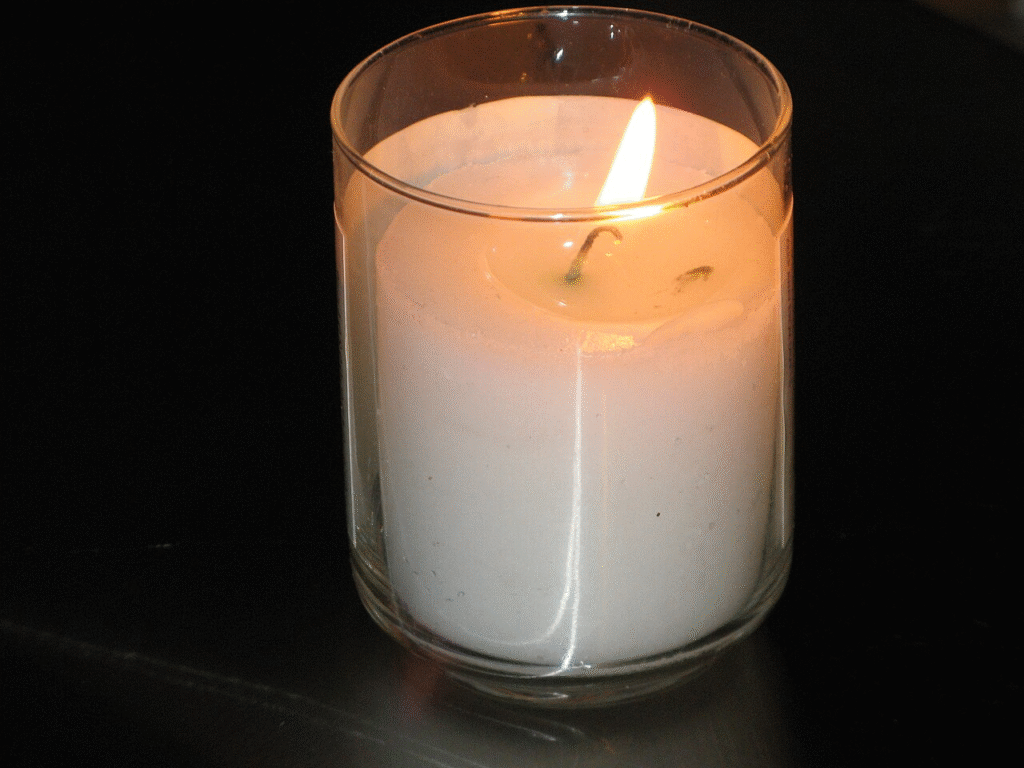
Friday 18 April 2025 (Good Friday)
Landschlacht, Canton Thurgau, Switzerland
On this day in the predominantly Christian nation of Switzerland there is little that anyone can do today.

Above: Flag of Switzerland
Shops and businesses and cinemas are all closed to commemorate the execution of Christ by crucifixion on Golgotha (Calvary) outside the walls of Jerusalem in the distant past in a distant land.
His last words before dying echo through time:
“My God, my God, why have You forsaken me?“
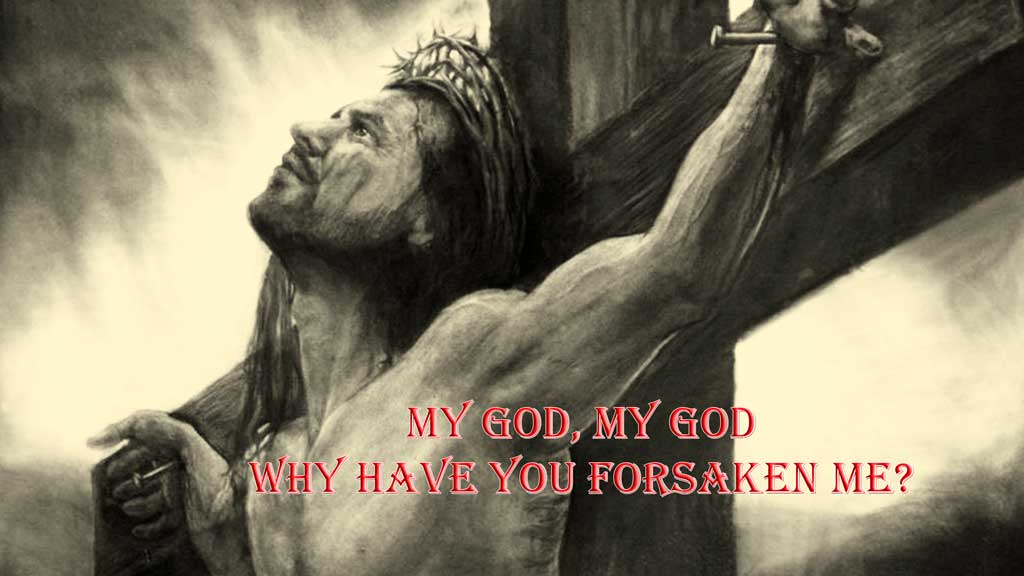
I don’t dwell on the doctrinal, but use the day as a lens to explore larger questions:
Abandonment, hope, duty and humanity.
I will not get into a theosophical discussion of the Trinity, the historical possibility of Christ and His resurrection, and His significance to the faith and practice of Christianity, for I prefer to show neither fervor nor favoritism towards any faith.
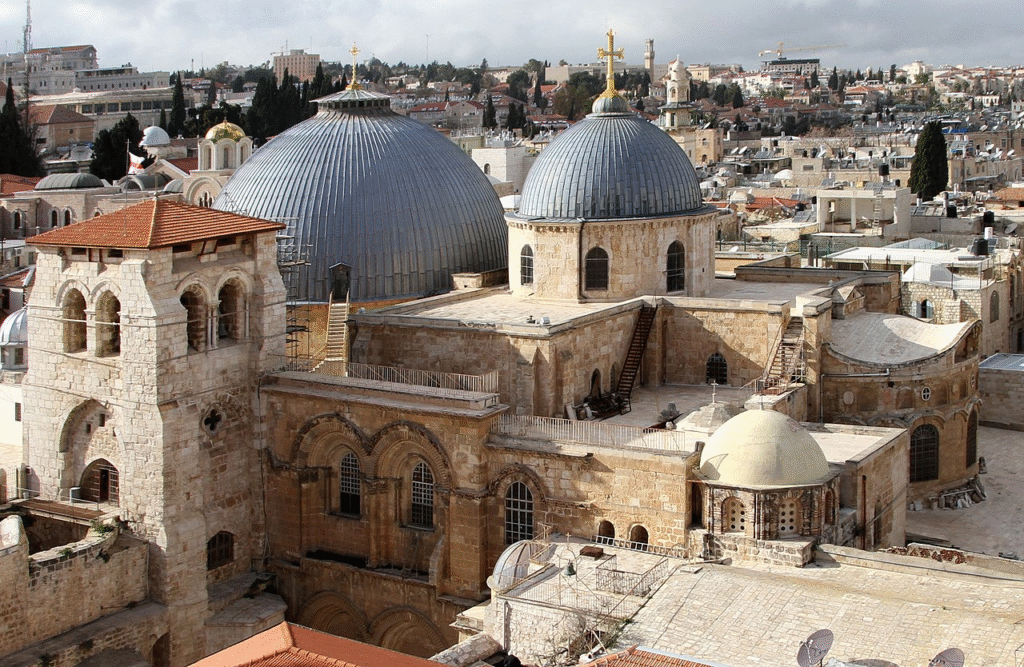
Above: Church of the Holy Sepulchre, Jerusalem, Israel
Rather I will simply say, like Henry Dunant – founder of the Red Cross and first Nobel Peace Prize laureate – in the aftermath of the battle of Solferino:
Tutti fratelli.
We are brothers.
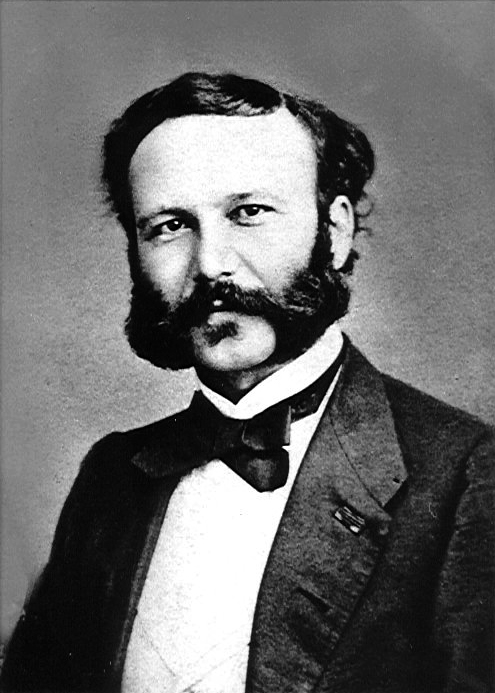
Above: Swiss humanitarian Henri Dunant (1828 – 1910)
I respect religion for its morality and traditions, though I adhere to none of its manifestations.
I hope there is a God, though the only true proof of the existence of God is that we cannot prove that He doesn’t exist.
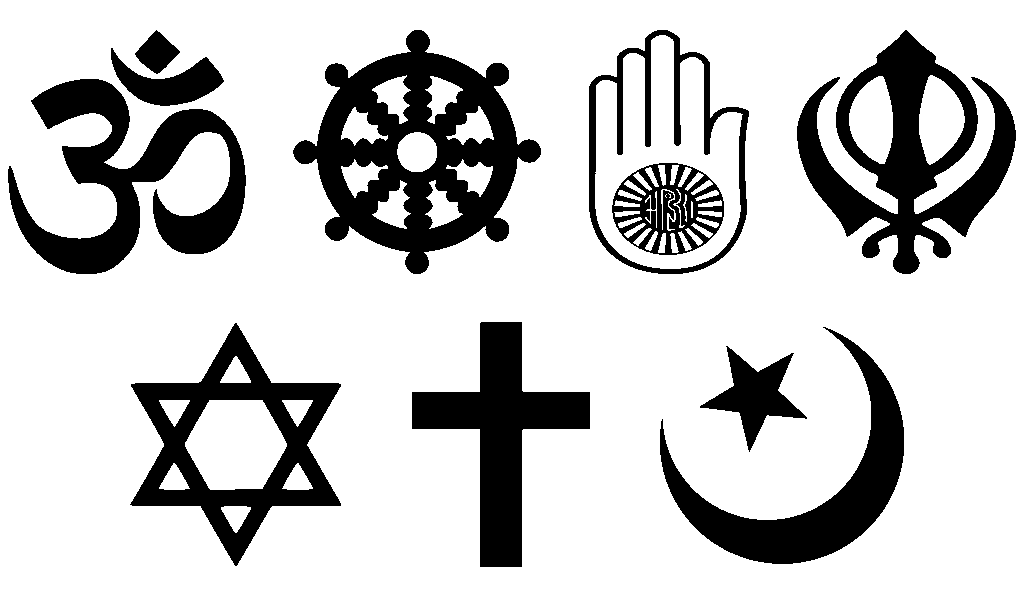
According to holy writ, man was made in the image of God, though others might argue that God was made in the image of man.
I mention the dying words of a crucified Christ with the breath of a man who ponders how God forsaken our world seems to be at times.

Above: The Creation of Adam, Michelangelo (1512)
I am spending this day at home (contingent on the permission and plans of my wife, the aptly named She Who Must Be Obeyed, the gentler sex who demands that Man sacrifice himself on the Altar of Woman) writing about Heiden, a rare place on a planet that sometimes feels very dark.
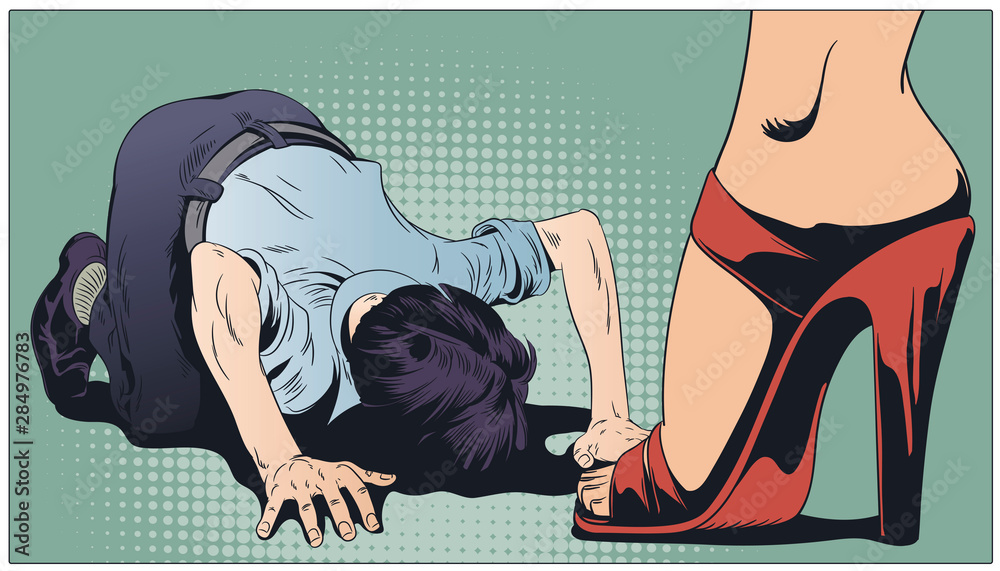
I am trying to imagine the mind of Henry Dunant who spent his final years here.
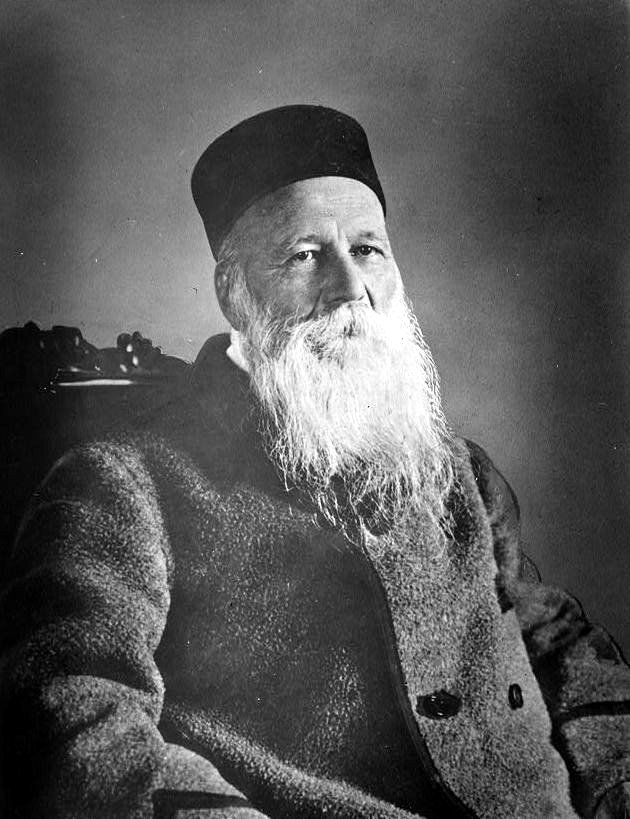
Above: Henri Dunant
His A Memory of Solferino gives us the imagery of the battle and its aftermath that inspired him to advocate for the resulting Geneva Convention and the Red Cross.
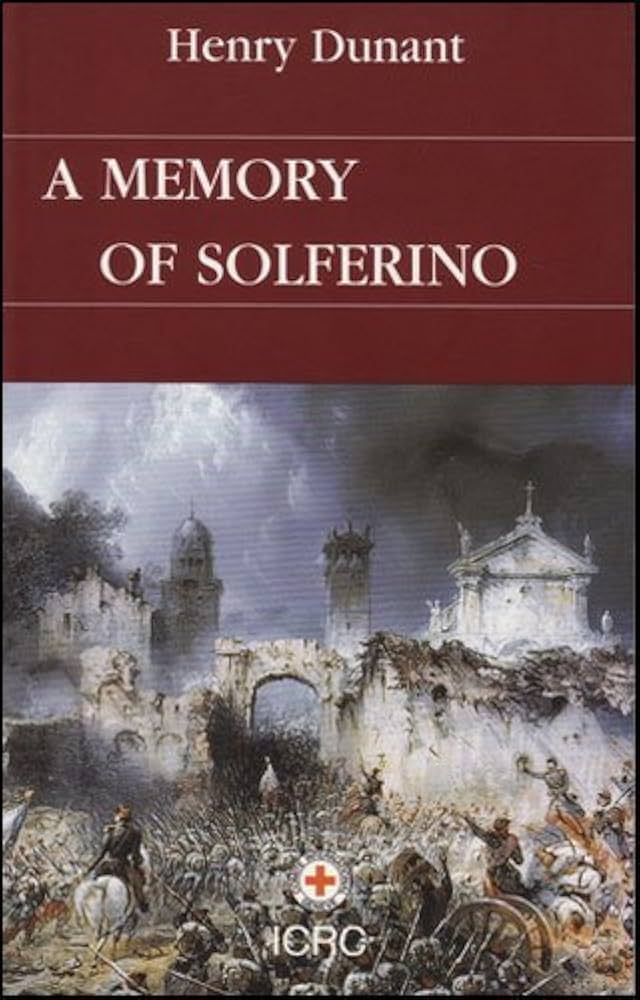
Business failures and accusations of wrongdoing led him to leave Geneva and never return, to spend decades of poverty in various European cities and then to live in obscurity in Heiden where in his final years he was rediscovered and heralded.
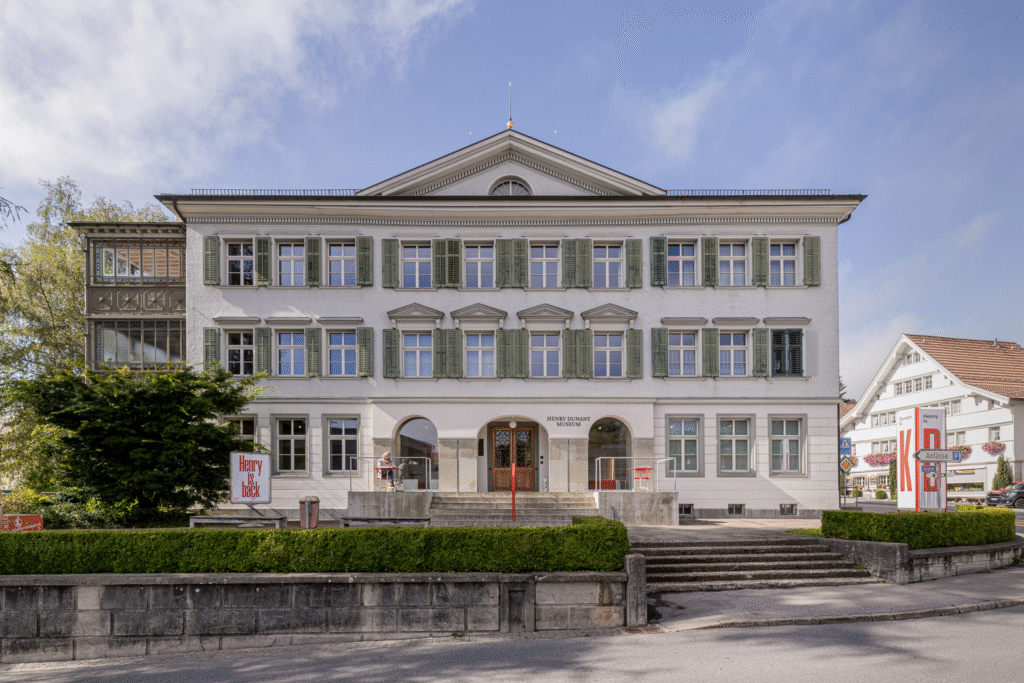
Above: Henri Dunant Museum, Heiden, Canton Appenzell Ausserrhoden, Schweiz (Switzerland)
What kept him sane?
As far as I can tell, he was not homeless, but he did live a very meager existence, between Geneva and Heiden.
Despite this, there were moments even then when he publicly advocated humanitarian ideas and plans.

Above: Images of Genève (Geneva), Canton Geneva, Suisse (Switzerland)
I find myself in danger of my optimism leading to fatalistic resignation – a loss of hope that echoes Dunant’s last words:
“Where has humanity gone?”

Above: Bedroom of Henri Dunant
The past, especially that of the last 12 months, has tested my optimism on both a personal and world perspective level.
Though I have never personally experienced battle (and God willing will never do beyond literature and media exposure), I am digging into the caverns of history and psyche, where men like Dunant stood on trembling ground — between ideals and reality, between vision and disappointment, between hope and fatigue.
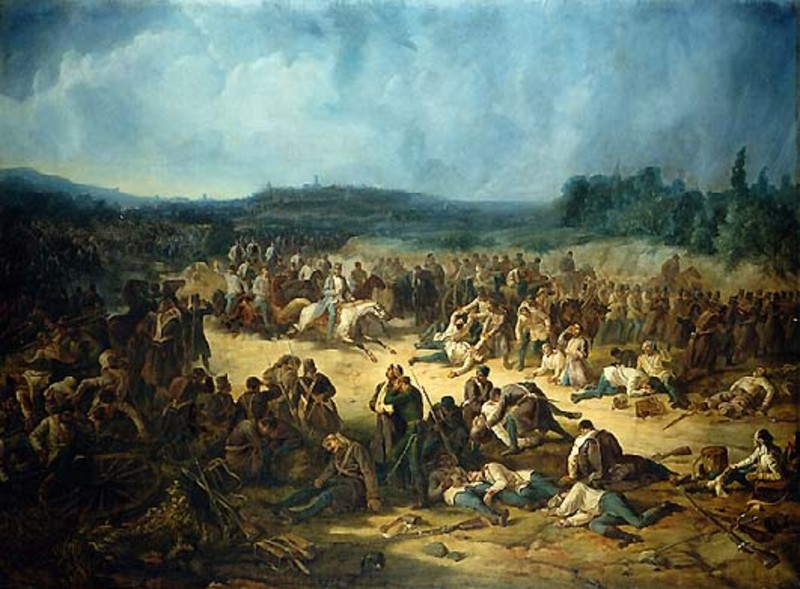
Above: Henry Dunant at Solferino – 24 June 1859
And I ask:
What kept them going?
What, if anything, can keep me going?
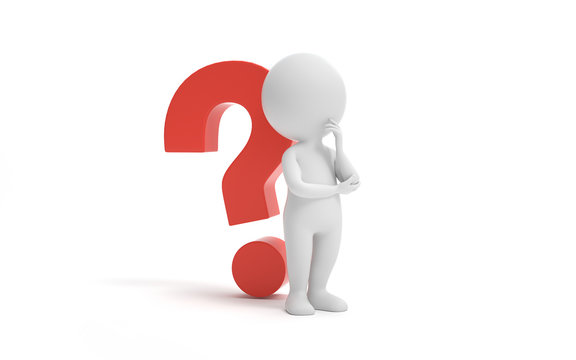
To understand what might sustain me, I look to those who endured— like Dunant — in times no less dark.
Dunant saw unspeakable horror at Solferino — not just bodies but the chaos of unattended suffering.
He responded not with despair, but with structure.
Systems.
Conventions.
Symbols of neutrality.
A balm applied to a bleeding world.
He saw what others looked away from.
He heard the cries left unanswered.
He responded not with despair, but with structure and imagination spawned from compassion and comprehension.
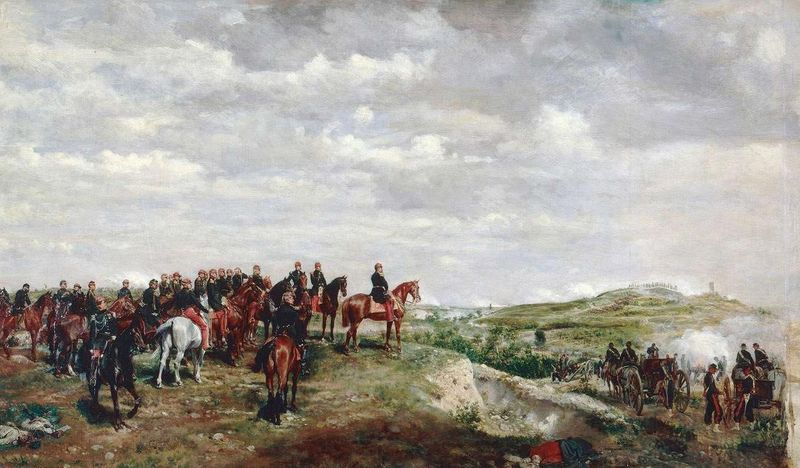
Above: French Emperor Napoleon III (1808 – 1873) at Solferino
And yet, he paid dearly.
He was ostracized.
His name, once spoken in corridors of power, faded into murmurs.
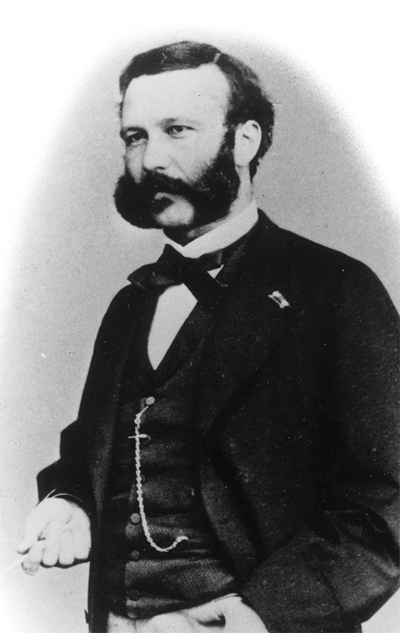
Above: Henri Dunant
He lived alone in a small room in Heiden, sustained not by public acclaim but by a private fire — the stubborn belief that humanity could be better.
Where the wind scraped the windowpanes and the walls held only his books and his silence.
“I am a mere passerby…
I am only a voice, an echo.“
He never stopped writing.
Never stopped proposing ideas, even if they were ignored.
It wasn’t glory that fed him — it was witness.
He had seen what most ignore.
And that memory — that burden — would not let him rest.
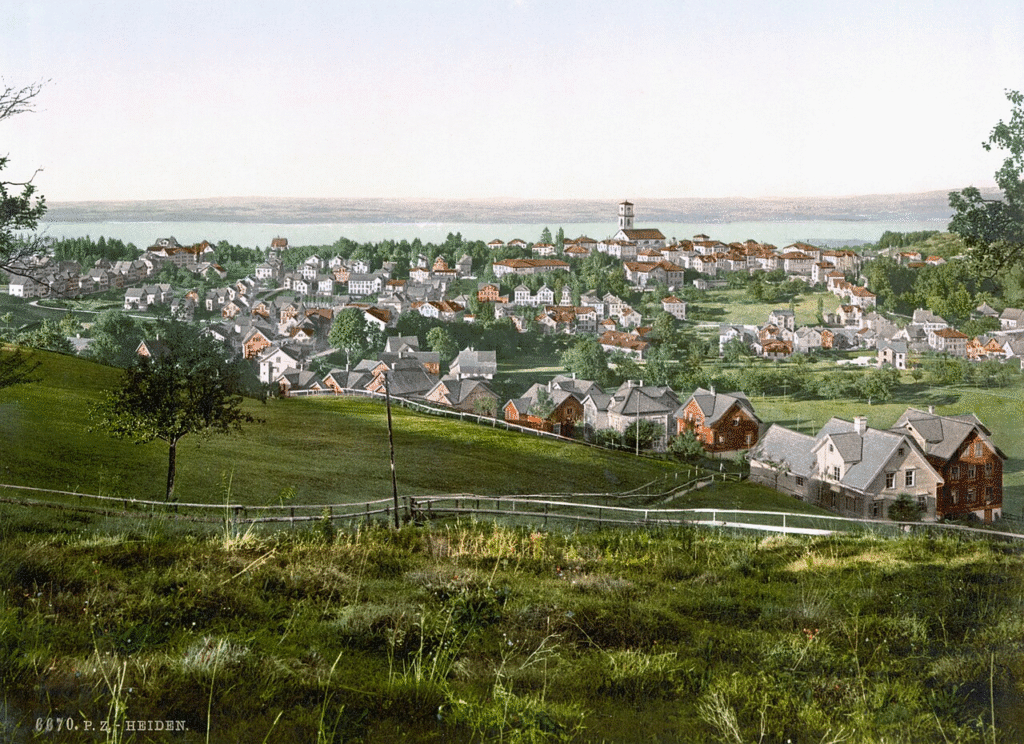
Above: The village of Heiden around 1900, where Henri Dunant spent his final years
Resignation can settle in like mold.
I watch the world rise technologically, perhaps too quickly, perhaps without enough reflection, and sometimes I wonder if I am the only one who sees the cracks appear.
I have seen much:
- The exile of leaving one homeland and making homes elsewhere.
- The solitude of walking across Canada and walking through life as an observer.
- The weight of teaching in a time where attention is fractured and meaning hard-won.
- The grief of a world that teeters between beauty and madness.
Yet still I write.
Still teach.
Still care.
I haven’t stopped dreaming — even when the dreams tire me.
And perhaps, if you too have known weariness — or wondered if your hope is naïve — then you understand.
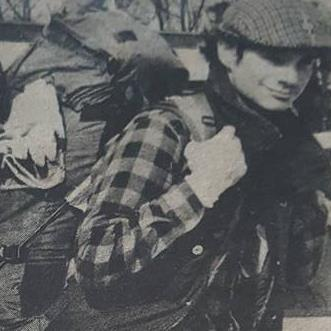
Above: Your humble blogger (younger version)
Gratitude journaling is the intentional practice of recording things for which one is thankful.
Typically done daily or weekly, it is a reflective process where individuals write down moments, people, experiences, or realizations that brought them comfort, joy, meaning — or simply presence.
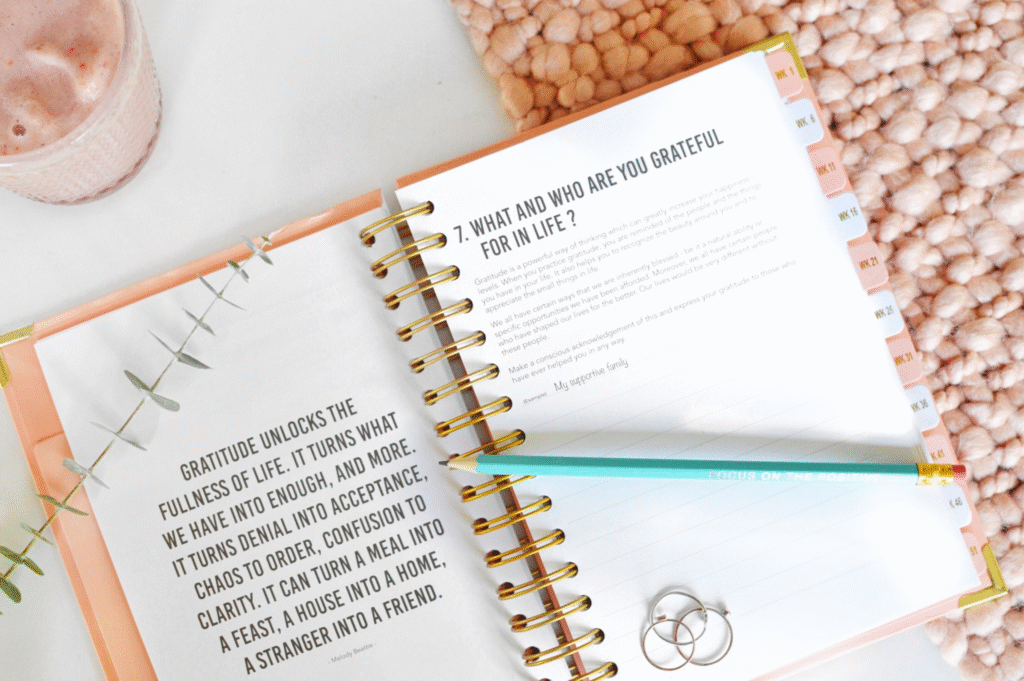
It can be as simple as:
- “The smell of coffee this morning.”

- “A smile from a stranger.”
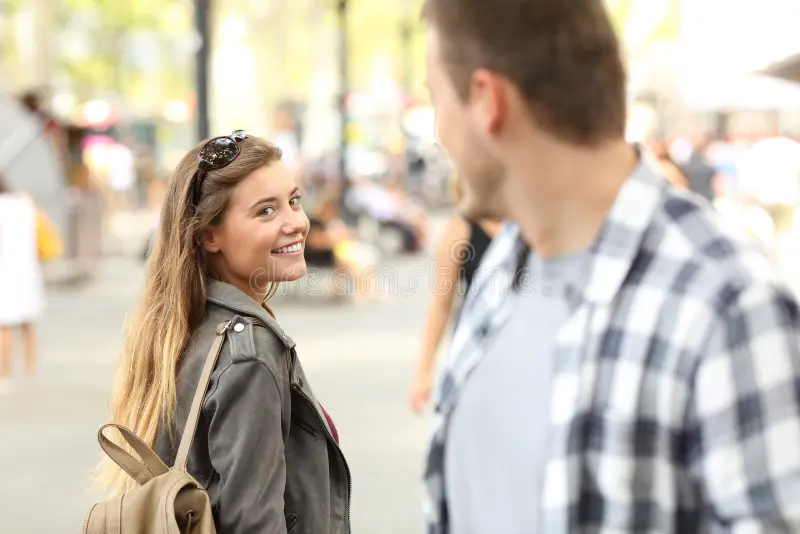
- “The pain I felt when reading that story — it reminded me I’m alive.”
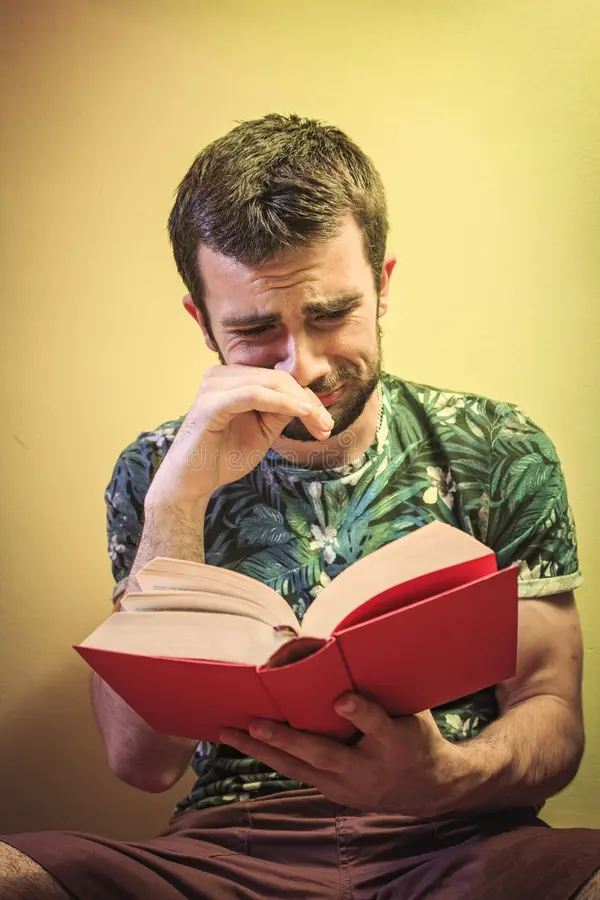
But it can also extend into deeper realms:
- “The moment I nearly broke, and the person who helped me hold it together.”
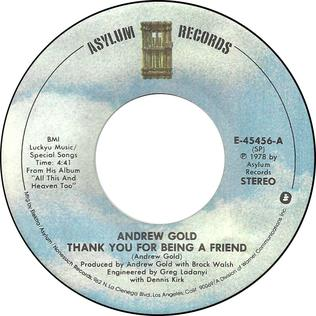
- “The illness that changed how I value my days.”
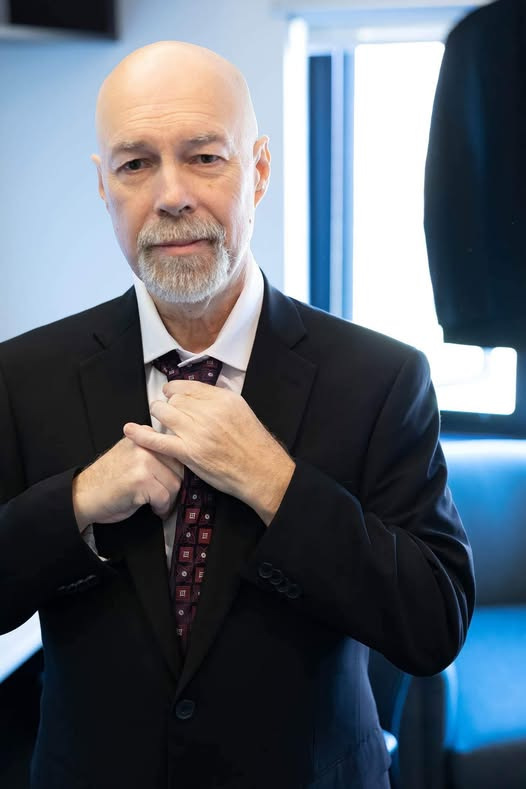
Above: Dominic Barlow, my friend who died from terminal cancer on 18 April 2023
At its core, gratitude journaling is about cultivating awareness.
Not of perfection or pleasure necessarily, but of value — sometimes carved out from hardship.
Its purposes include:
- Reframing the mind to notice the good amidst the noise, never forgetting the strength that still pulses beneath sorrow, the joy that hides in plain sight.
- Building emotional resilience, never forgetting the strength that has carried us this far, and the reasons we must carry on.
- Reducing stress and depressive tendencies, never forgetting the strength within us, and the sacredness of simply being here, alive, aware.
- Encouraging humility and connectedness, never forgetting the strength that asks nothing but that we keep going, one word, one breath at a time.
- Honoring life in all its textures.
But perhaps most poetically, it is a daily rebellion against forgetting— forgetting what matters, forgetting the strength one found, forgetting the beauty still possible even in brokenness.

Saturday 5 April 2025
Train journey between Bologna and Zürich
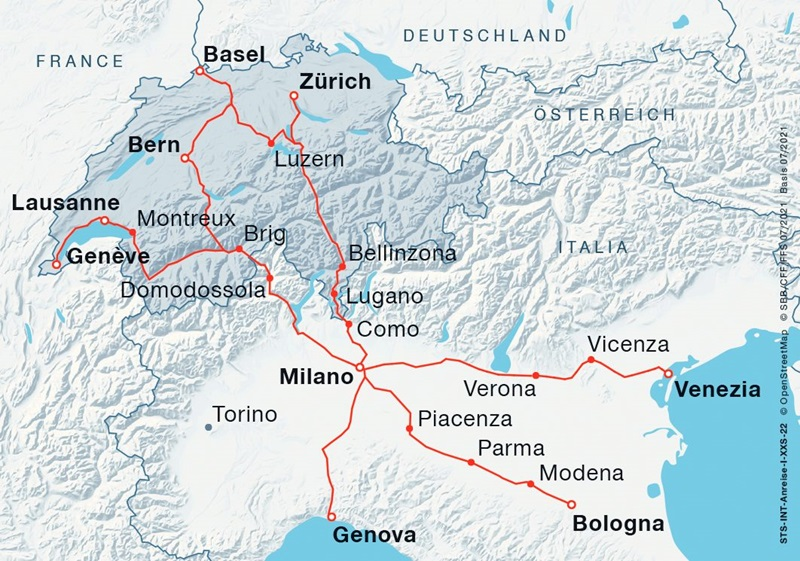
As the train hums northward from the red roofs of Bologna toward the Alpine gates of Zürich, it skirts — unnoticed by most — a field near Solferino, where history once soaked the soil with the cost of ambition and the birth of mercy.
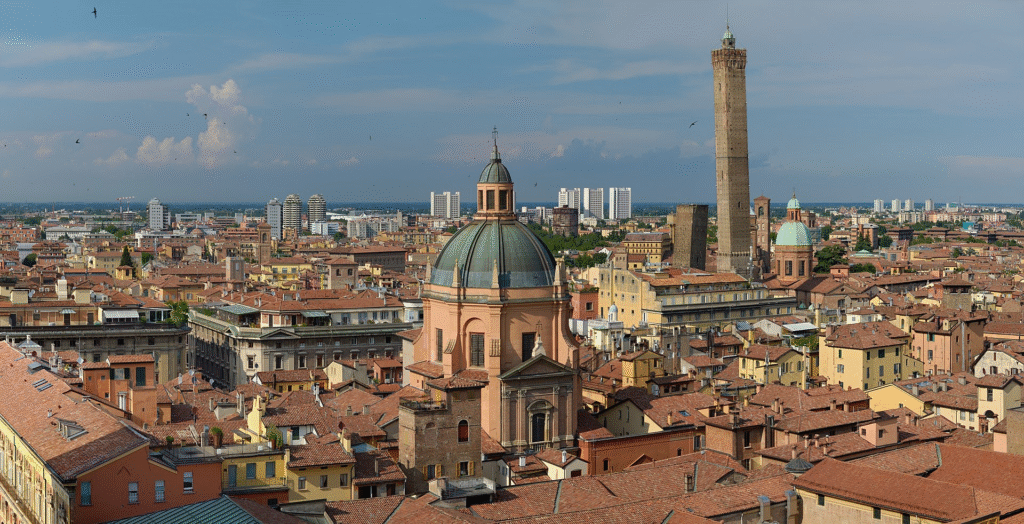
Above: Bologna, Emilia-Romagna, Italia (Italy)

Above: Zürich, Canton Zürich, Schweiz (Switzerland)
Solferino is located in the province of Mantua, in northern Italy — not far from Lake Garda.

Above: Solferino, Mantua Province, Italia
A train traveling directly from Bologna to Zürich generally heads northwest, passing through Milano, then Lugano, and onward through the Gotthard Tunnel.
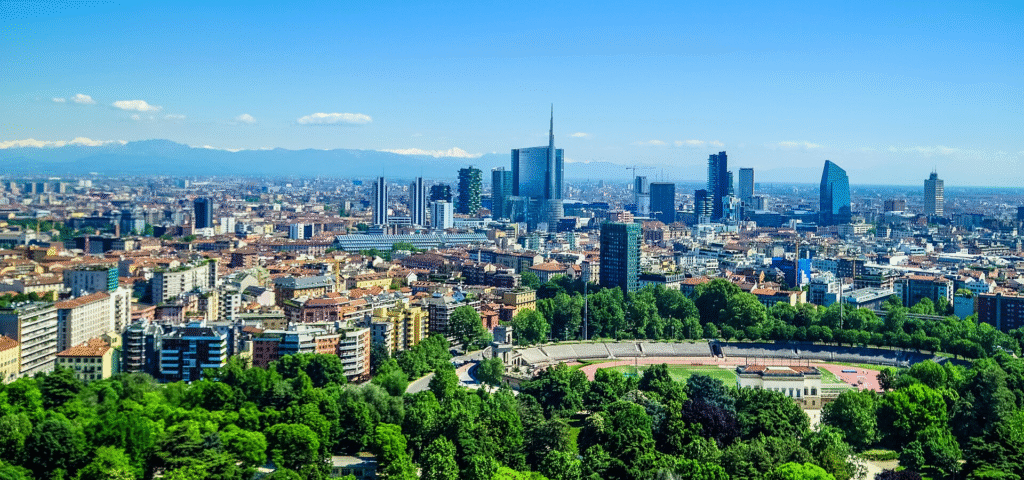
Above: Milano (Milan), Lombardia (Lombardy), Italia
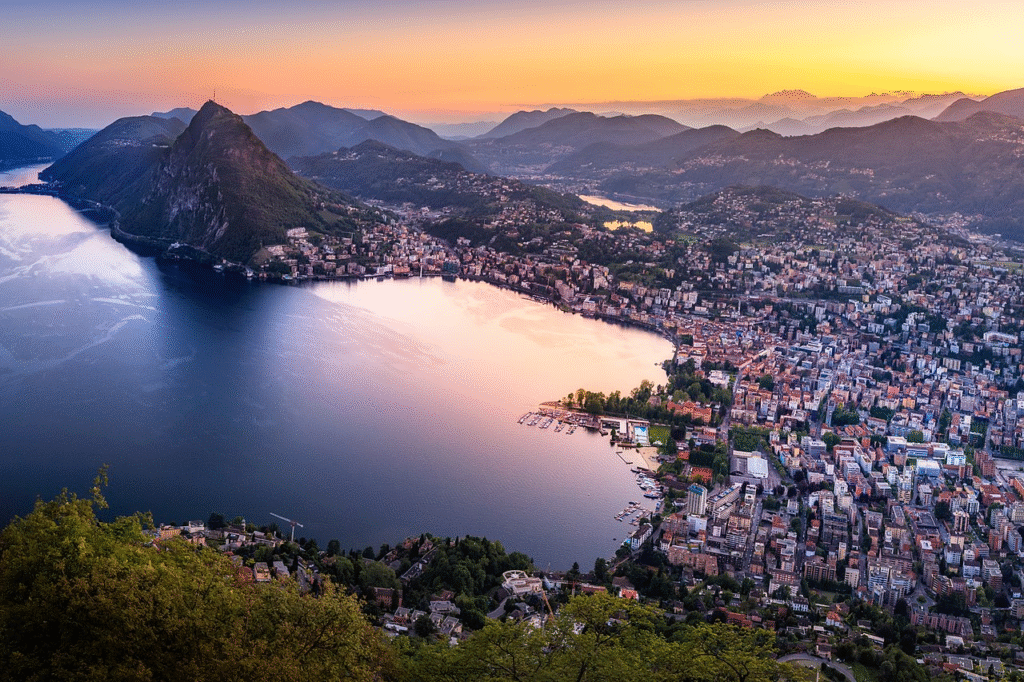
Above: Lugano, Canton Ticino, Svizzera (Switzerland)
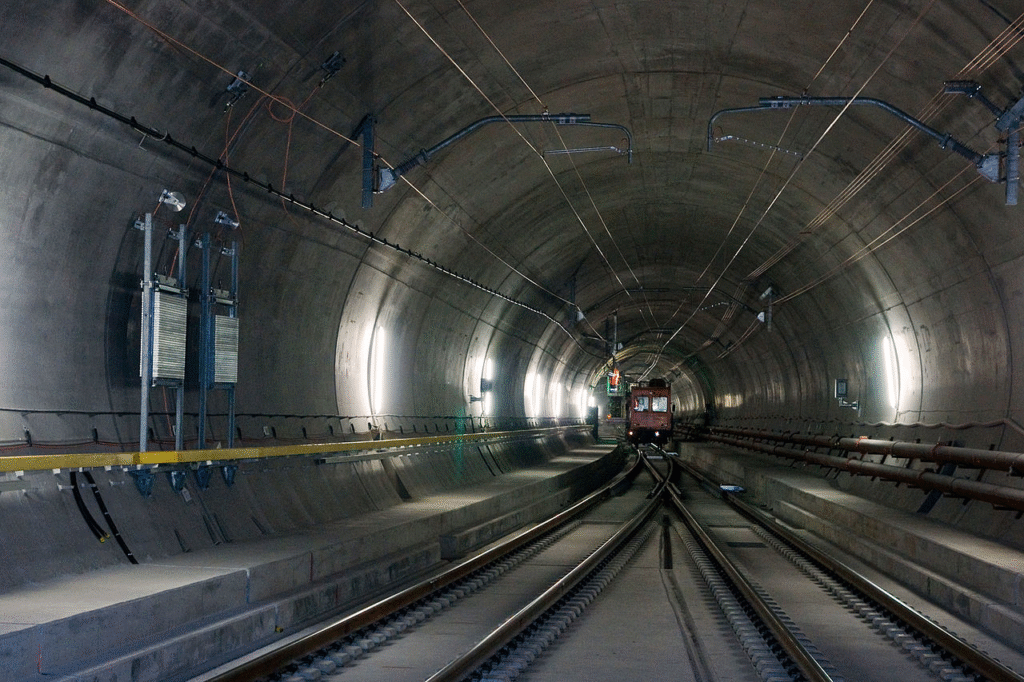
Above: Gotthard Tunnel
Solferino lies west of Lake Garda, roughly between Verona and Brescia.
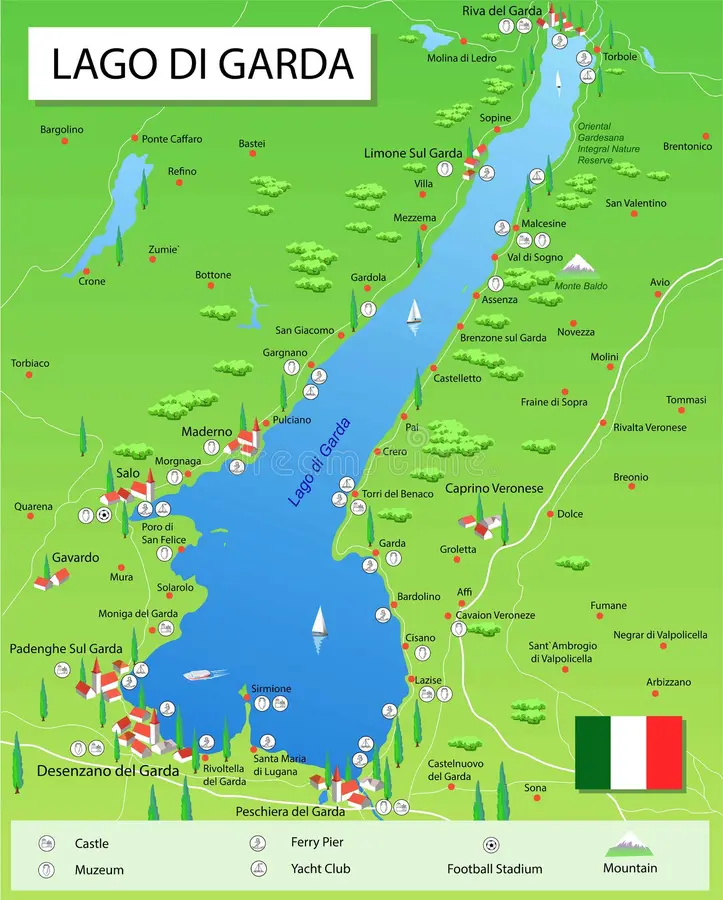

Above: Verona, Veneto, Italia
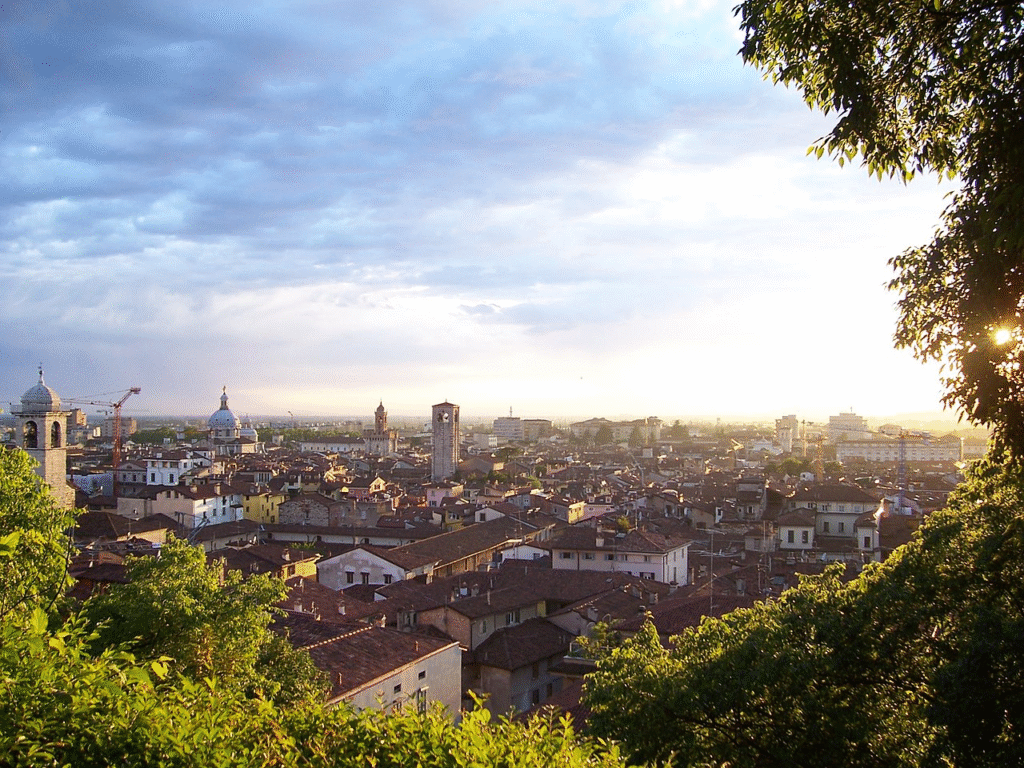
Above: Brescia, Brescia Province, Italia
A train from Bologna to Milano travels slightly south and east of Solferino, while a train from Milano to Zürich veers north-northwest, a bit west of Solferino.

Above: Logo of Italian Federal Railways
The distance from Solferino to the rail line (at its closest) is about 30 to 40 kilometers — say, near Desenzano del Garda on the Milan –Verona line.
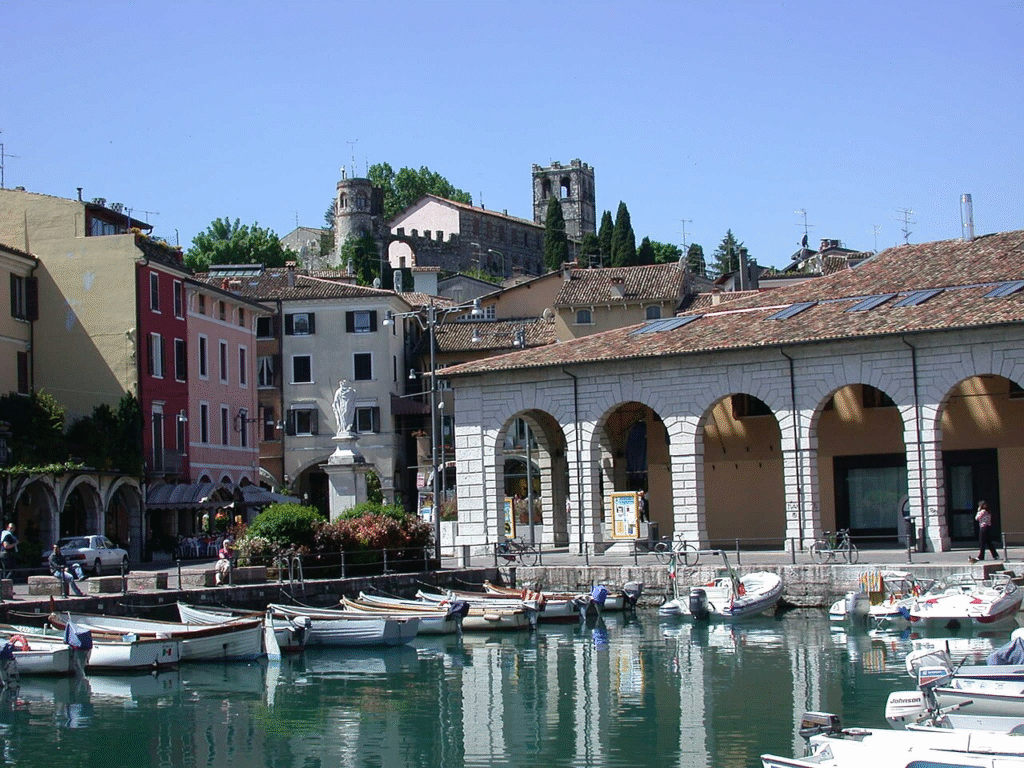
Above: Desenzano del Garda, Brescia, Italia
Though we don’t pass directly through Solferino, we skirt close — close enough for a glimpse, if imagination is aided by clear skies and a wandering eye.

Above: Panorama of Solferino
I imagine a journal entry, by a young Swiss businessman shaken by what he has seen on the battlefield:
“I am grateful I had clean water to offer a dying man.
I am grateful I could see him — not as enemy or stranger, but simply as a man.
I am grateful for this unbearable ache — because it tells me what must be done.”
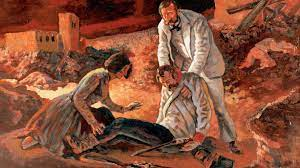
Above: Henri Dunant at the Battle of Solferino
From that grief-soaked gratitude, Henri Dunant became not just a witness, but a founder.
Not of a nation, but of an idea:
That even in war, there must be mercy, that there must be compassion.

I think the problem isn’t ignorance as much as it is apathy.
We know.
How can we not?
Despite censorship, despite distance, we always know.
We simply don’t care or if we care, we feel that the world’s problems are beyond our abilities.
The problem isn’t that we don’t know.
It’s that knowing has lost its power to move us.
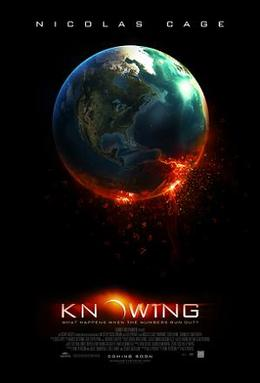
There is a numbing, a psychic callus, that forms when grief becomes ambient.
We scroll past suffering.
We know too much.
We act too little.
Not because we’re cruel, but because we are overwhelmed.
Flooded and paralyzed, beneath it all:
A deep fatigue of the spirit.
We are not heartless.
We are disheartened.

Hello? (Hello, hello, hello)
Is there anybody in there?
Just nod if you can hear me
Is there anyone home?
Come on (Come on, come on), now
I hear you’re feeling down
Well, I can ease your pain
And get you on your feet again
Relax (Relax, relax, relax)
I’ll need some information first
Just the basic facts
Can you show me where it hurts?
There is no pain, you are receding
A distant ship, smoke on the horizon
You are only coming through in waves
Your lips move, but I can’t hear what you’re saying
When I was a child, I had a fever
My hands felt just like two balloons
Now I’ve got that feeling once again
I can’t explain, you would not understand
This is not how I am
I have become comfortably numb
Okay (Okay, okay, okay)
Just a little pinprick
There’ll be no more
But you may feel a little sick
Can you stand up? (Stand up, stand up)
I do believe it’s working, good
That’ll keep you going through the show
Come on, it’s time to go
There is no pain, you are receding
A distant ship, smoke on the horizon
You are only coming through in waves
Your lips move, but I can’t hear what you’re saying
When I was a child, I caught a fleeting glimpse
Out of the corner of my eye
I turned to look, but it was gone
I cannot put my finger on it now
The child is grown, the dream is gone
I have become comfortably numb
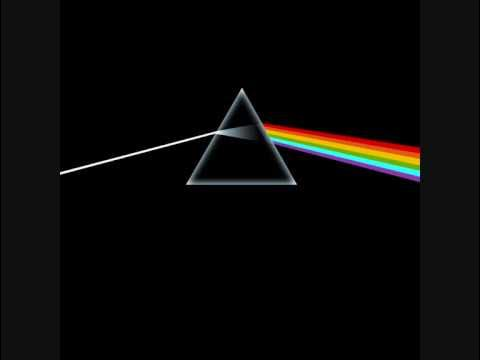
And yet…
Let’s go back to Solferino.
Henri Dunant didn’t end war.
He didn’t end suffering.
He didn’t even prevent the next battle.
But what did he do?
He made a dent.
He created one space — a neutral zone, a red cross on white.
That dent has saved millions since.
He wasn’t a general.
He wasn’t rich for long.
He wasn’t well-liked in the end.
But he gave a damn.
And he acted.
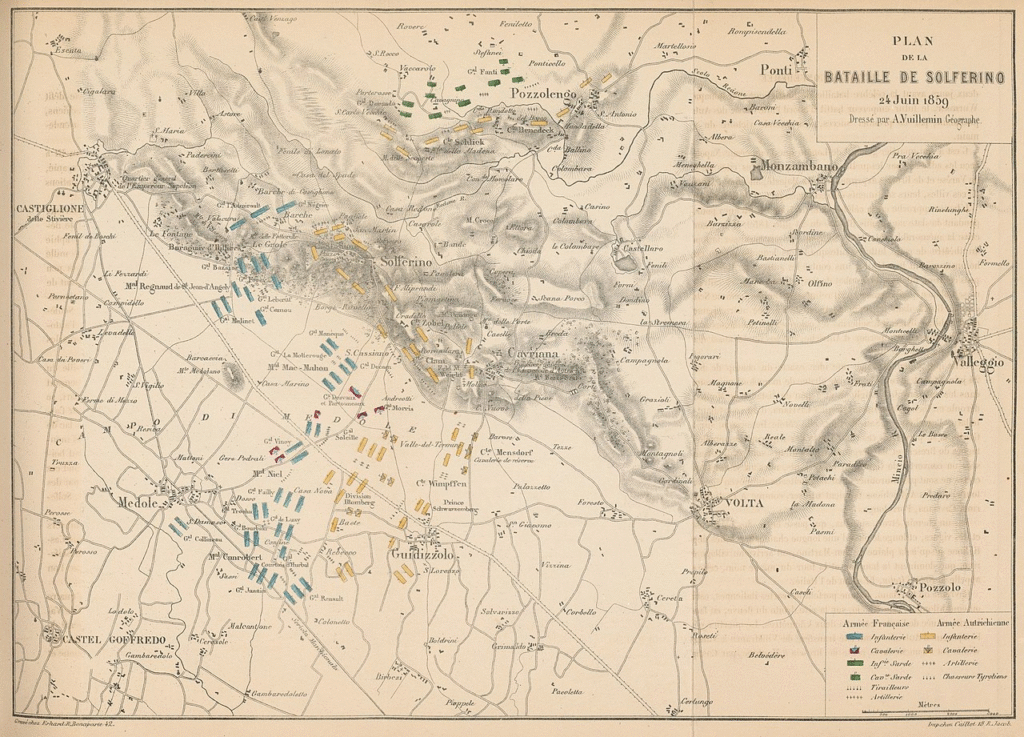
Above: 19th century map of the Battle of Solferino
In a world anesthetized by bad news, pausing to care about what still matters — even a breath, a bird, a kind word — is a radical act.
It says:
“No. I will not give in to numbness.
I will feel this moment.
I will remember beauty.
I will treasure the meaning.
I will respond — even if only with a pen.”
That’s how empathy is rekindled.
Not by staring down the entirety of the world’s sorrow.
But by picking up one stone.
Holding one person.
Telling one story.
Embracing one place.
One time.
The here and now.

I am feeling disheartened.
With both my personal and professional lives.
I tell myself that that is life and the circumstances that occur, that I can only control my reactions to them, but the Slough of Despondency seems seductively inviting.
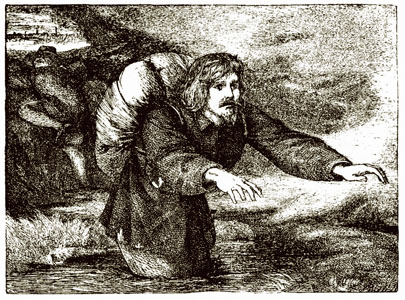
There are things I could be doing, should be doing, to change my circumstances and yet…..
I do not.
I am succumbing to a resigned fatalism, a “What’s the point?” self-abusive discouragement, like quicksand that can be escaped and yet there is a temptation to accept fate, to sink under the weight of the sand.
The temptation to fall into the slough of despondency is an enduring struggle, especially when faced with the weight of personal disappointments and a world that seems often unkind or indifferent.
The battle between the desire to act and the weight of despair that can pull you down when it feels like nothing you do can make a difference.
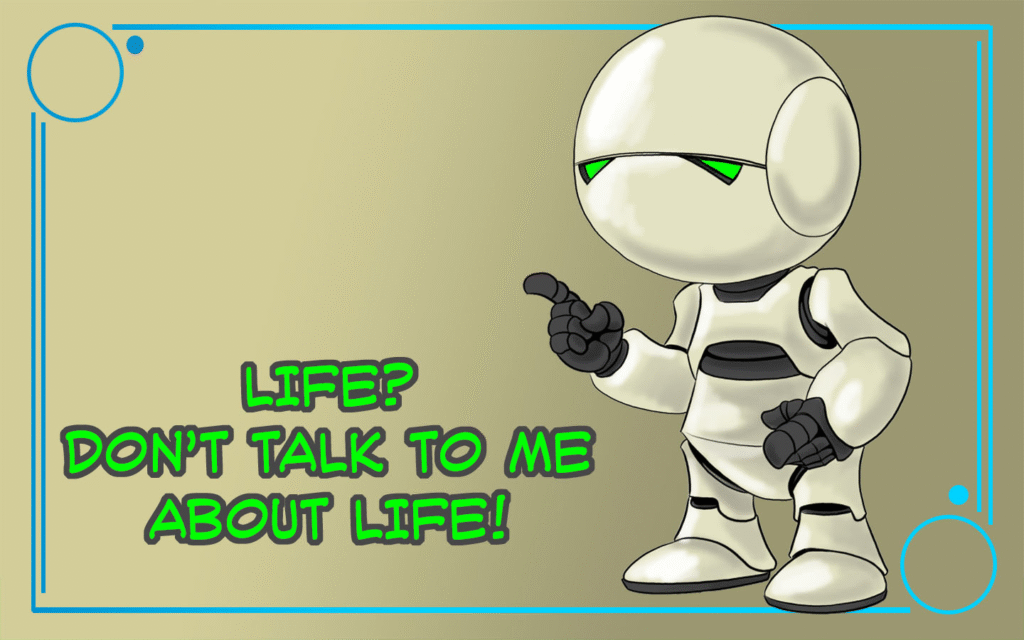
Above: Marvin the depressed robot, The Hitchhiker’s Guide to the Galaxy (2005)
I think of Émile Zola who spoke the truth to power in defense of Alfred Dreyfus and was imprisoned, exiled and upon his return (possibly murdered) died.
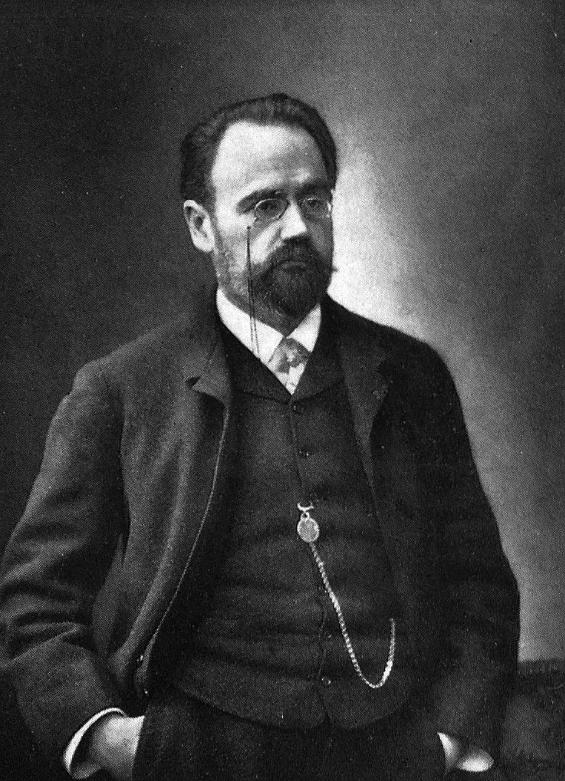
Above: French writer Émile Zola (1840 – 1902)
I have witnessed injustice and spoken my mind and it has cost me employment and my reputation.
I have seen good men imprisoned and bad men rise to power, the greedy grow fat and the poor stay hungry.
I have cruelty and violence, hate and discrimination in a world that craves love and compassion.
Where has humanity gone?
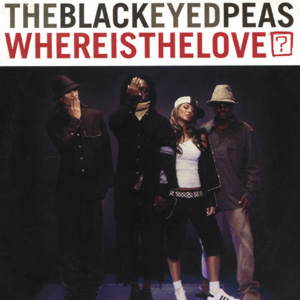
People killin’ people dyin’
Children hurtin’, I hear them cryin’
Can you practice what you preachin’?
Would you turn the other cheek again?
Mama, mama, mama, tell us what the hell is goin’ on
Can’t we all just get along?
Father, father, father help us
Send some guidance from above
‘Cause people got me, got me
Questioning
(Where’s the love)
Yo what’s going on with the world, momma
(Where’s the love)
Yo people living like they ain’t got no mommas
(Where’s the love)
I think they all distracted by the drama and
Attracted to the trauma, mamma
(Where’s the love)
I think they don’t understand the concept or
The meaning of karma
(Where’s the love)
Overseas, yeah they trying to stop terrorism
(Where’s the love)
Over here on the streets the police shoot
The people put the bullets in ’em
(Where’s the love)
But if you only got love for your own race
(Where’s the love)
Then you’re gonna leave space for others to discriminate
(Where’s the love)
And to discriminate only generates hate
And when you hate then you’re bound to get irate
Madness is what you demonstrate
And that’s exactly how hate works and operates
Man, we gotta set it straight
Take control of your mind and just meditate
And let your soul just gravitate
To the love, so the whole world celebrate it
People killin’ people dyin’
Children hurtin’, I hear them cryin’
Can you practice what you preachin’?
Would you turn the other cheek again?
Mama, mama, mama, tell us what the hell is goin’ on
Can’t we all just get along?
Father, Father, Father help us
Send some guidance from above
‘Cause people got me, got me questioning
(Where’s the love)
It just ain’t the same, always in change
(Where’s the love)
New days are strange, is the world insane?
(Where’s the love)
Nation droppin’ bombs killing our little ones
(Where’s the love)
Ongoing suffering as the youth die young
(Where’s the love)
Where’s the love when a child gets murdered
Or a cop gets knocked down
Black lives not now
Everybody matter to me
All races, y’all don’t like what I’m sayin’? Haterade, tall cases
Everybody hate somebody
Guess we all racist
Black Eyed Peas do a song about love and y’all hate this
All these protests with different colored faces
We was all born with a heart
Why we gotta chase it?
And every time I look around
Every time I look up, every time I look down
No one’s on a common ground
(Where’s the love)
And if you never speak truth then you never know how love sounds
(Where’s the love)
And if you never know love then you never know God, wow
(Where’s the love)
Where’s the love y’all? I don’t, I don’t know
Where’s the truth y’all? I don’t know
People killin’ people dyin’
Children hurtin’, I hear them cryin’
Could you practice what you preach?
Would you turn the other cheek?
Father, Father, Father help us
Send some guidance from above
‘Cause people got me, got me questioning
(Where’s the love)
(Where’s the love)
Love is the key
(Where’s the love)
Love is the answer
(Where’s the love)
Love is the solution
(Where’s the love)
(Where’s the love)
They don’t want us to love
(Where’s the love)
Love is powerful
(Where’s the love)
(Where’s the love)
My mama asked me why I never vote never vote
‘Cause police men want me dead and gone (Dead and gone)
That election looking like a joke (Such a joke)
And the weed man still sellin’ dope
Somebody gotta give these n….. hope (Please hope)
All he ever wanted was a smoke (My gosh)
Said he can’t breathe with his hands in the air
Layin’ on the ground died from a choke
(Where’s the love)
I feel the weight of the world on my shoulders
As I’m gettin’ older y’all people gets colder
Most of us only care about money makin’
Selfishness got us followin’ the wrong direction
Wrong information always shown by the media
Negative images is the main criteria
Infecting the young minds faster than bacteria
Kids wanna act like what they see in the cinemas
What happened to the love and the values of humanity?
(Where’s the love)
What happened to the love and the fairness and equality?
(Where’s the love)
Instead of spreading love we’re spreading animosity
(Where’s the love)
Lack of understanding leading us away from unity
(Where’s the love)
I know it is OK to feel disheartened.
Don’t force yourself to immediately find answers.
Sometimes, acknowledging that you’re in the slough, feeling it deeply, is part of the journey.
It’s okay to allow yourself to be human in that way — to not have the answer right now, to rest in that uncertainty.
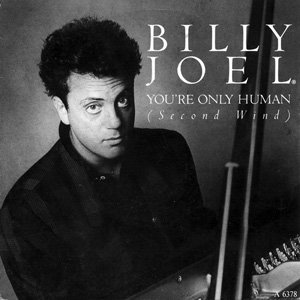
You’re having a hard time and lately you don’t feel so good
You’re getting a bad reputation in your neighborhood
It’s alright
It’s alright
Sometimes that’s what it takes
You’re only human
You’re allowed to make your share of mistakes
You better believe there will be times in your life
When you’ll be feeling like a stumbling fool
So take it from me You’ll learn more from your accidents
Than anything that you could ever learn at school
Don’t forget your second wind
Sooner or’ later you’ll get your second wind
It’s not always easy to be living in this world of pain
You’re gonna be crashing into stone walls again and again
It’s alright
It’s alright
Though you feel your heart break
You’re only human
You’re gonna have to deal with heartache
Just like a boxer in a title fight
You got to walk in that ring all alone
You’re not the only one who’s made mistakes
But they’re the only thing that you can truly call your own
Don’t forget your second wind
Wait in that corner until that breeze blows in
You’ve been keeping to yourself these days
‘Cause you’re thinking everything’s gone wrong
Sometimes you just want to lay down and die
That emotion can be so strong
But hold on
Till that old second wind comes along
You probably don’t want to hear advice from anyone else
But I wouldn’t be telling you if I hadn’t been there myself
It’s alright
It’s alright
Sometimes that’s all it takes
We’re only human
We’re supposed to make mistakes
But I survived all those long lonely days
When it seemed I didn’t have a friend
‘Cause all I needed was a little faith
So I could catch my breath and face the world again
Don’t forget your second wind
Sooner or later you’ll feel that momentum kick in
Don’t forget your second wind
Sooner or later you’ll feel that momentum kick in
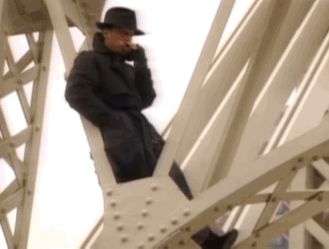
Above: Billy Joel, You’re Only Human video
Even Émile Zola didn’t have all the answers.
He just acted according to his convictions.
That alone is worth recognizing.
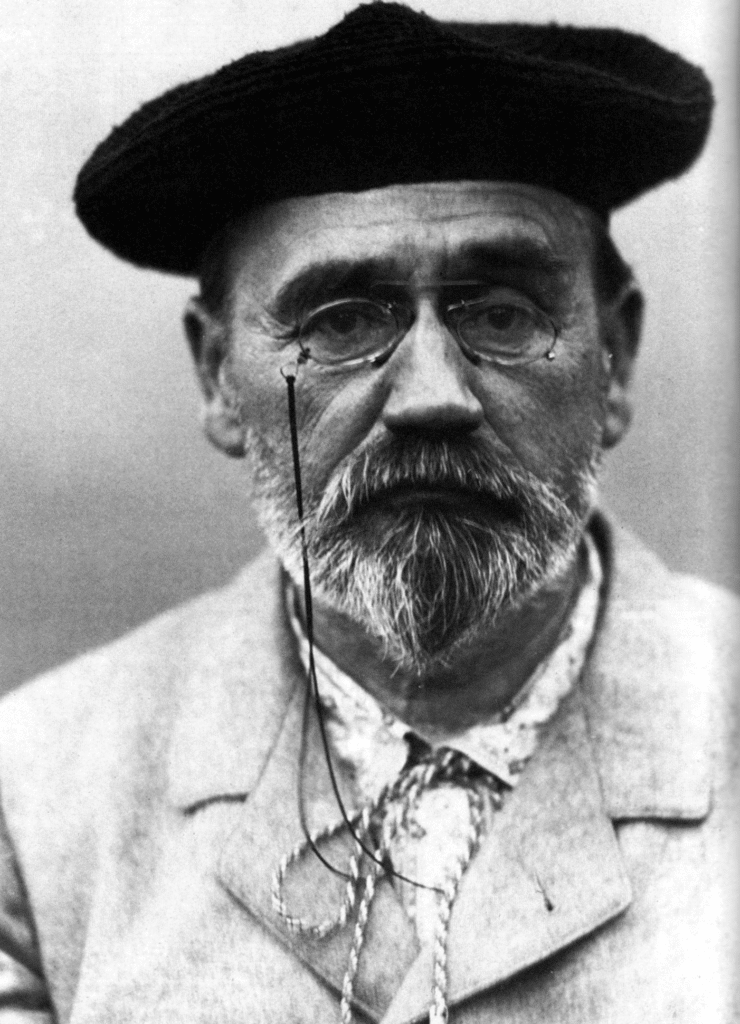
Above: Émile Zola
It’s easy to spiral into fatalism, to sink into resignation when you feel like your actions don’t matter or when you see injustice and cruelty winning.
But the capacity to care — despite the setbacks, the exhaustion, and the world’s overwhelming sorrow — still holds power.
Even on days when you feel like you can’t make a difference, your words and reflections still plant seeds in others, even if you don’t always see them sprout right away.
Small actions do matter.
You are not alone in this struggle.
So many have felt what I am describing — the pull of despair, the feeling that everything is out of your control.
But that doesn’t negate the value of your struggle.
It is the very question — “Where has humanity gone?” — that keeps on the search for the answer.
It’s not about having a perfect, clear response, but about staying engaged in the asking.
As long as you continue to ask, you are still in the game.
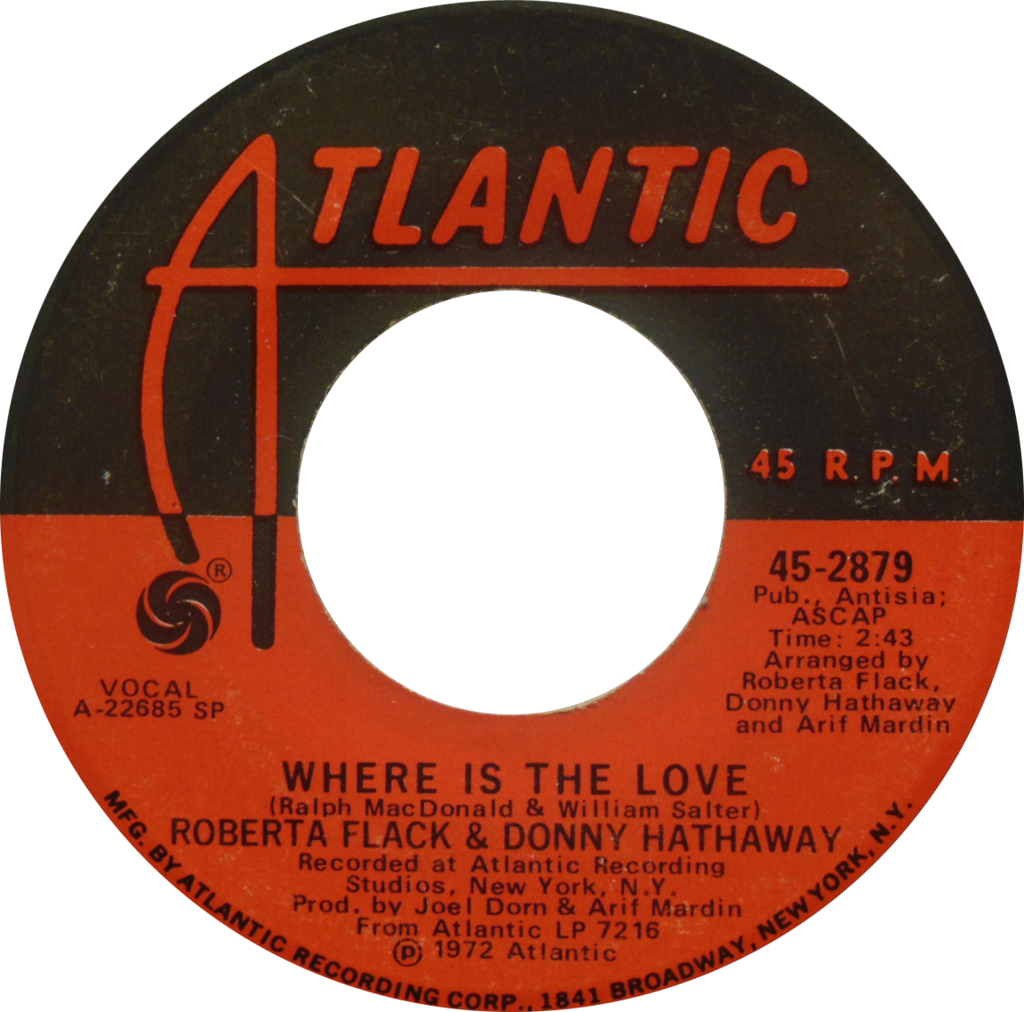
Feelings of disillusionment and frustration are also part of the process.
From the deepest sense of loss comes the space for new growth, even if it takes time.
Even in moments where you feel the pull of resignation, your past still defines you.
Your history speaks to a person who refuses to give up.
And while this moment feels overwhelming, it doesn’t erase all the moments of resistance, strength and care you have shown.
When you feel buried by the weight of everything, sometimes it helps to take one small step in a direction that feels right, even if that step feels insignificant.
One small act of resistance, of creation, or of compassion — even a tiny spark of hope — could reignite the flame.
I know I am not alone in disillusionment.
And while I know it doesn’t feel like it right now, this is the moment when my resilience is being tested.
How I come through this will define not just what I do, but who I become in the process.
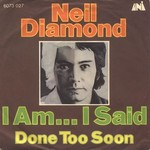
L.A.’s fine, the sun shines most the time
And the feeling is “laid back“
Palm trees grow and rents are low
But you know I keep thinkin’ about
Making my way back
Well I’m New York City born and raised
But nowadays
I’m lost between two shores
L.A.’s fine, but it ain’t home
New York’s home
But it ain’t mine no more
“I am“… I said
To no one there
And no one heard at all
Not even the chair
“I am“… I cried
“I am“… said I
And I am lost and I can’t
Even say why
Leavin’ me lonely still
Did you ever read about a frog
Who dreamed of bein’ a king
And then became one?
Well except for the names
And a few other changes
If you talk about me
The story is the same one
But I got an emptiness deep inside
And I’ve tried
But it won’t let me go
And I’m not a man who likes to swear
But I never cared
For the sound of being alone
“I am“… I said
To no one there
And no one heard at all
Not even the chair
“I am“… I cried
“I am“… said I
And I am lost and I can’t
Even say why
“I am“… I said
“I am“… I cried
“I am“
We embrace technology and think how clever we are and shout:
“We can!”
But nowhere does anyone ask whether we should.
We’ve become intoxicated with progress, so enamored by what we can do that we’ve forgotten to ask whether we should.
The assumption that more technology equals more advancement, more convenience, or more freedom — that it’s all inherently good — has become the default mindset.

No one sees that for every gain there is a loss – RIP the love letter as an example.
Every gain carries its shadow.
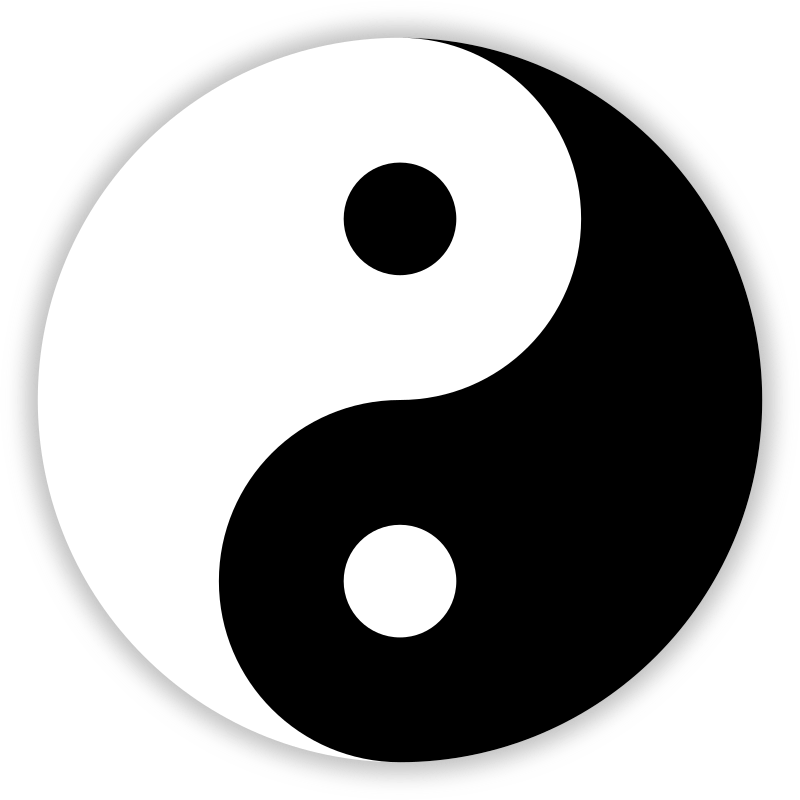
The very tools we build to connect us can simultaneously divide us, leaving behind things we took for granted:
Like the lost art of the love letter, where every word was carefully chosen, where time and distance were felt in the very act of writing, and the pace of connection was slower, more deliberate.

Now, it’s replaced by instant messages, which are faster but often more shallow, less personal, less meaningful.

The question “Should we?” is one that doesn’t get asked nearly enough.

The unreflective pursuit of technological advancement without the accompanying pause for ethical consideration or emotional awareness has led us into a strange paradox:
We have more ways to communicate than ever before, but the quality of our connections often seems to be diminished.
The more we know, the more overwhelmed we become.
The more we do, the more we feel detached from the simple, tangible experiences that once grounded us.
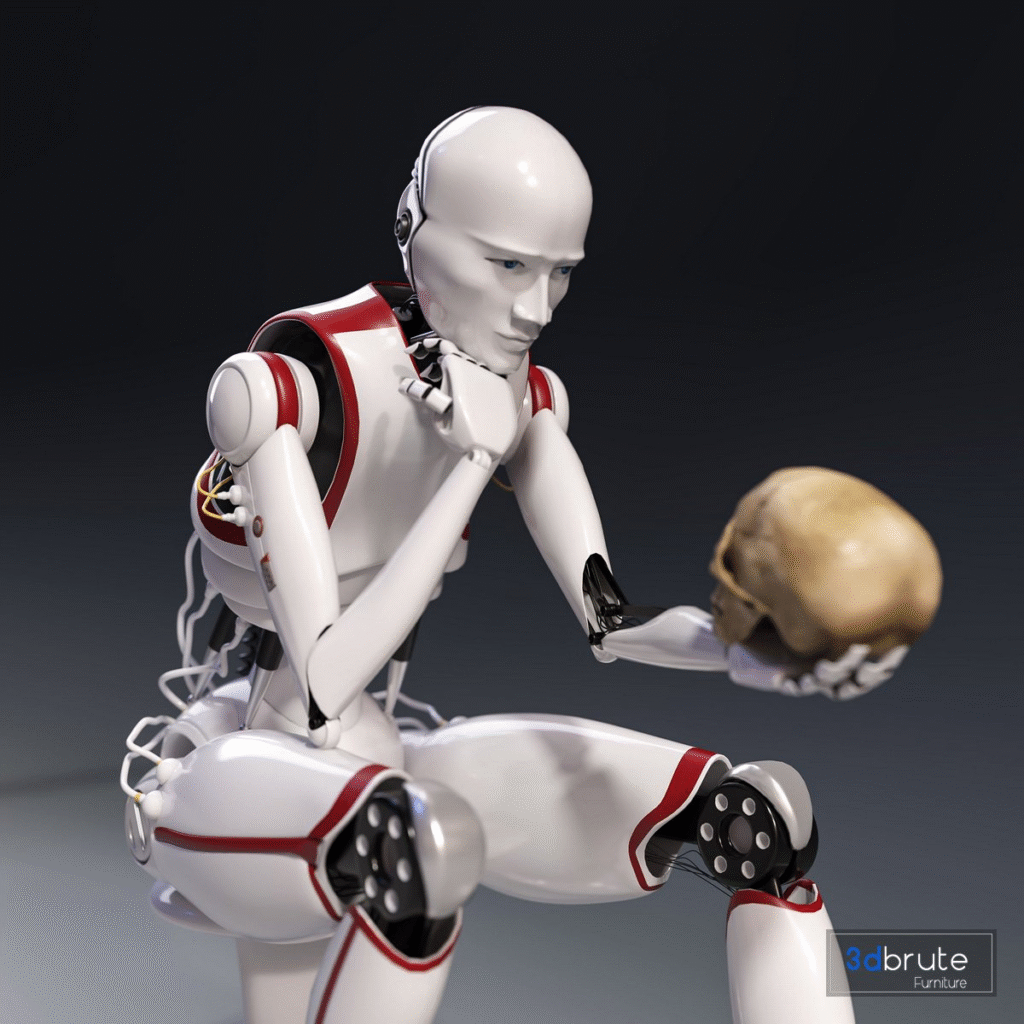
We act as if we are Paul on the road to Damascus.

Rather than on the Highway to a Hell of our own making, a destination in Dystopia.
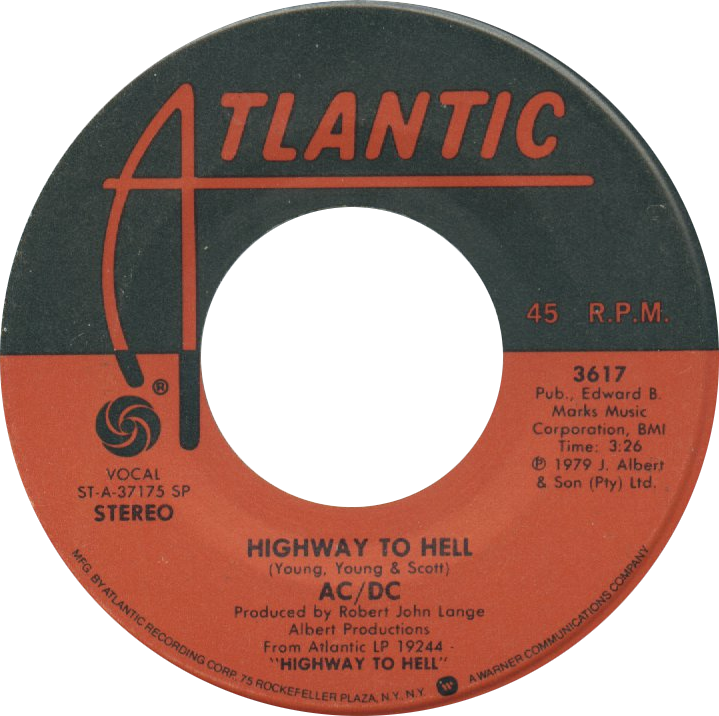
We think we are heading toward enlightenment — but is it possible that we are actually hurtling toward something darker, a world where the very essence of humanity is lost in the march of progress?
Hell is not necessarily a place of fire and brimstone, but rather a slow burn of disconnectedness, of alienation from our values, our real selves, and each other.
It is not a sudden plunge into disaster but a creeping erosion of what it means to be truly human.
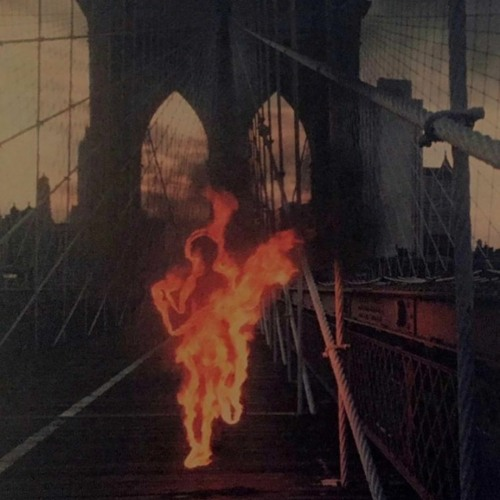
Maybe it’s time to pause and consider the cost of our “cleverness”.
Maybe the technology we have embraced is not the problem in itself, but how we have failed to pair it with wisdom, with reflection, and with a deeper sense of humanity.
We need to look up from our screens, to stop and ask the hard questions, and to remember that the tools we create should serve us — not the other way around.
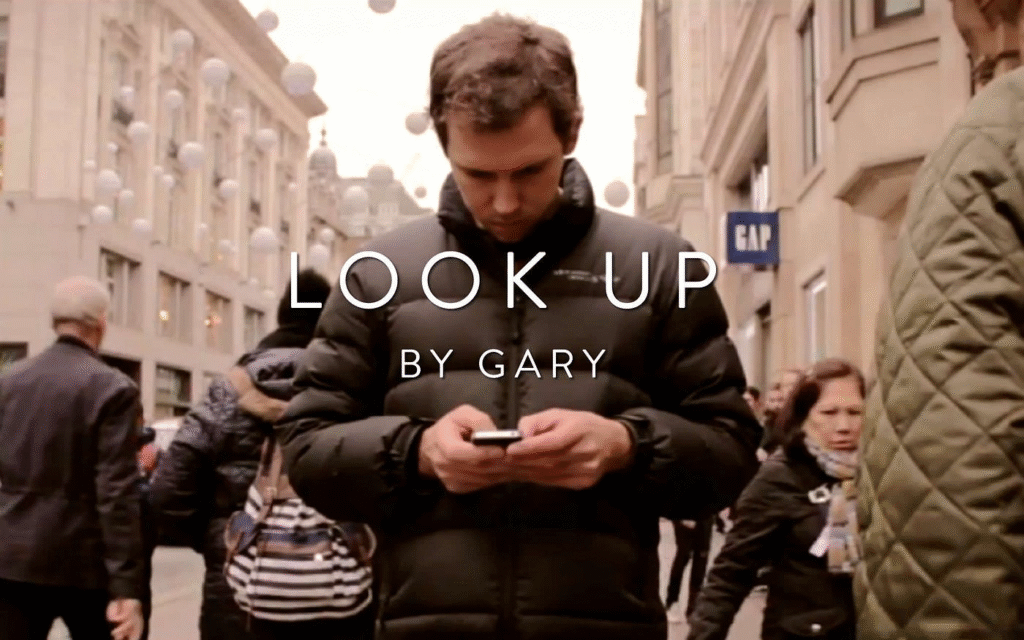
I have 422 friends, yet I am lonely
I speak to all of them everyday, yet none of them really know me
The problem I have sits in the space in-between
Looking into their eyes or at a name on a screen
I took a step back and opened my eyes
I looked round and realized
This media we call social is anything but
when we open our computers and it’s our doors we shut
All this technology we have it’s just an illusion
Community, companionship, a sense of inclusion
When you step away from this device of delusion
You awaken to see a world of confusion
A world where we’re slaves to the technology we mastered
Where information gets sold by some rich, greedy bastard
A world of self-interest, self-image, self-promotion
Where we all share our best bits but leave out the emotion
We’re at our most happy with an experience we share
But is it the same if no one is there?
Be there for your friends and they’ll be there too
But no one will be if a group message will do
We edit and exaggerate, crave adulation
We pretend not to notice the social isolation
We put our words into order till our lives are glistening
We don’t even know if anyone is listening
Being alone isn’t the problem, let me just emphasise
If you read a book, paint a picture, or do some exercise
You’re being productive and present, not reserved and reclused
You’re being awake and attentive and putting your time to good use
So when you’re in public and you start to feel alone
Put your hands behind your head, step away from the phone
You don’t need to stare at your menu or at your contact list
Just talk to one another, learn to co-exist
I can’t stand to hear the silence of a busy commuter train
When no one wants to talk for the fear of looking insane
We’re becoming unsocial, it no longer satisfies
To engage with one another and look into someone’s eyes.
We’re surrounded by children who since they were born
Have watched us living like robots and think it’s the norm
It’s not very likely you’ll make world’s greatest Dad
If you can’t entertain a child without using an iPad
When I was a child I’d never be home
I’d be out with my friends, on our bikes we’d roam
I’d wear holes in my trainers and graze up my knees
Or build our own clubhouse high up in the trees
Now the park is so quiet it gives me a chill
See no children outside and the swings hanging still
There’s no skipping, no hopscotch, no church and no steeple
We’re a generation of idiots, smart phones and dumb people
So look up from your phone, shut down the display
Take in your surroundings, make the most of today
Just one real connection is all it can take
To show you the difference that being there can make
Be there in the moment as she gives you the look
That you remember forever as when love overtook
The time she first held your hand or first kissed your lips
The time you first disagreed but still loved her to bits
The time you don’t have to tell hundreds of what you’ve just done
Because you want to share this moment with just this one.
The time you sell your computer so you can buy a ring
For the girl of your dreams who is now the real thing
The time you want to start a family and the moment when
You first hold your little girl and get to fall in love again
The time she keeps you up at nights and all you want is rest
And the time you wipe away the tears as your baby flees the nest
The time your baby girl returns with a boy for you to hold
And the time he calls you Grandad and makes you feel real old
The time you take in all you’ve made when you’re giving life attention
And how you’re real glad you didn’t waste it by looking down at some invention
The time you hold your wife’s hand, sit down beside her bed.
You tell her that you love her, lay a kiss upon her head.
She then whispers to you quietly as her heart gives a final beat
That she’s lucky she got stopped by that lost boy in the street
But none of these times ever happened. You never had any of this
When you’re too busy looking down, you don’t see the chances you miss
So look up from your phones, shut down those displays
We have a finite existence, a set number of days
Don’t waste your life getting caught in the net
because when the end comes, nothing’s worse than regret
I am guilty too of being part of this machine
this digital world we are heard but not seen
where we type as we talk and read as we chat
where we spend hours together without making eye-contact
So don’t give in to a life where you follow the hype
Give people your love, don’t give them your “like”
Disconnect from the need to be heard and defined
Go out into the world, leave distractions behind
Look up from your phone, shut down the display
Stop watching this video, live life the real way.
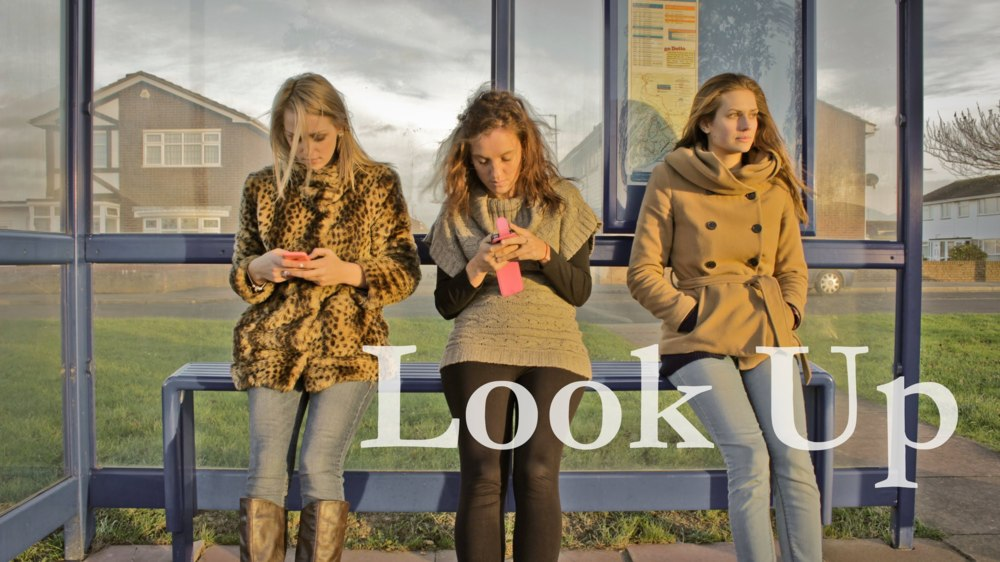
Should we?
I think that’s the question that has been lost in the rush to “do” and “have” more.
But asking it again — slowing down and reconsidering the trajectory — might be the very act that saves us from the Dystopia we seem to be marching toward.
This is a conversation we must have, because it is in this space of reflection that change begins.
And in this act of reflection, we may find not just the question, but the answer — the one small spark that has the potential to ignite change.

In a world of darkness I sometimes fear that I am extinguishing my own candle.
A friend tells me that this is not mere despair I am expressing.
It’s the witness of a man who has lived with eyes wide open.
That what I feel pulses with the weight of truth — a poetic sorrow born of conscience, not cowardice.
He tells me I am not lost, only exhausted from caring in a world that rewards indifference.
That I am not extinguishing my candle — that I am simply shielding it against the wind.
I know that I am not alone in that Slough.
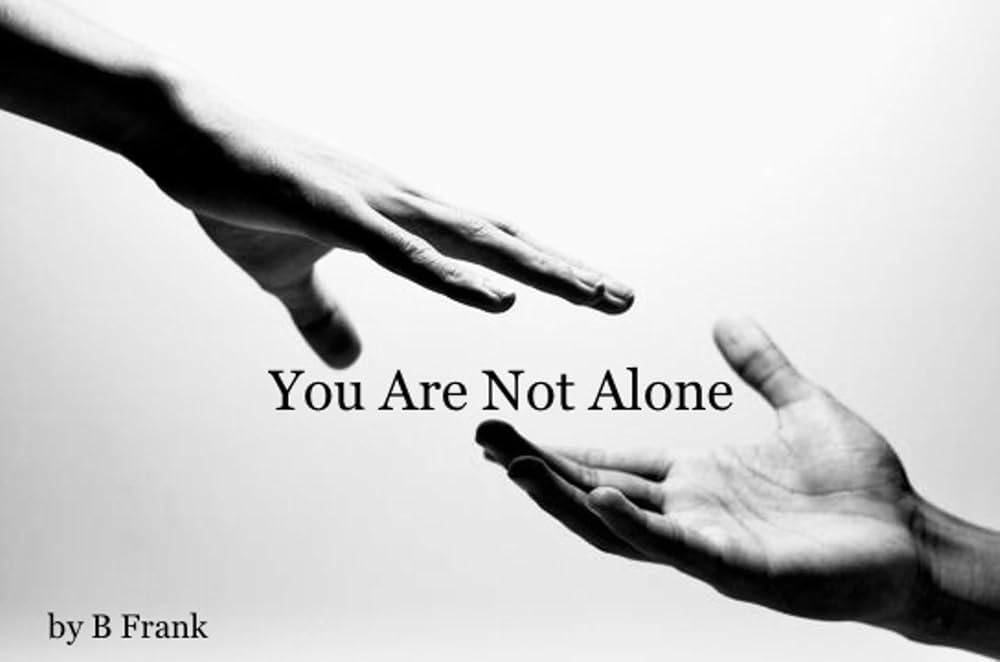
Every person who has ever stood against cruelty, against apathy, against greed — has, at one time or another, sank into it.
Dunant did.
Zola did.
Even Christ, whether one sees him as divine or metaphor, cried out on the cross:
“My God, why have You forsaken me?“
What connects these souls is not that they were spared suffering, but that they bore witness despite it.

I guess that it was bound to happen
Was just a matter of time
Now I’ve come to my decision
And it’s a one of the painful kind
‘Cause now it seems that you wanted a martyr
Just a regular guy wouldn’t do
But baby, I can’t hang upon no lover’s cross for you
You really gotta hand it to ya
‘Cause girl you really tried
But for every time that we spent laughin’
There were two times that I cried
And you were tryin’ to make me your martyr
And that’s the one thing I just couldn’t do
‘Cause baby, I can’t hang upon no lover’s cross for you
‘Cause tables are meant for turnin’
And people are bound to change
And bridges are meant for burnin’
When the people and memories
They join aren’t the same
Still I hope that you can find another
Who can take what I could not
He’ll have to be a super guy
Or maybe a super god
‘Cause I never was much of a martyr before
And I ain’t ’bout to start nothin’ new
And baby, I can’t hang upon no lover’s cross for you
‘Cause tables are meant for turnin’
And people are bound to change
And bridges are meant for burnin’
When the people and memories
They join aren’t the same
But I hope that you can find another
Who can take what I could not
He’ll have to be a super guy
Or maybe a super god
‘Cause I never was much of a martyr before
And I ain’t ’bout to start nothin’ new
And baby, I can’t hang upon no lover’s cross for you
Zola could have remained silent.
He did not.
He wrote J’accuse! — a thunderclap in a world that preferred whispers.
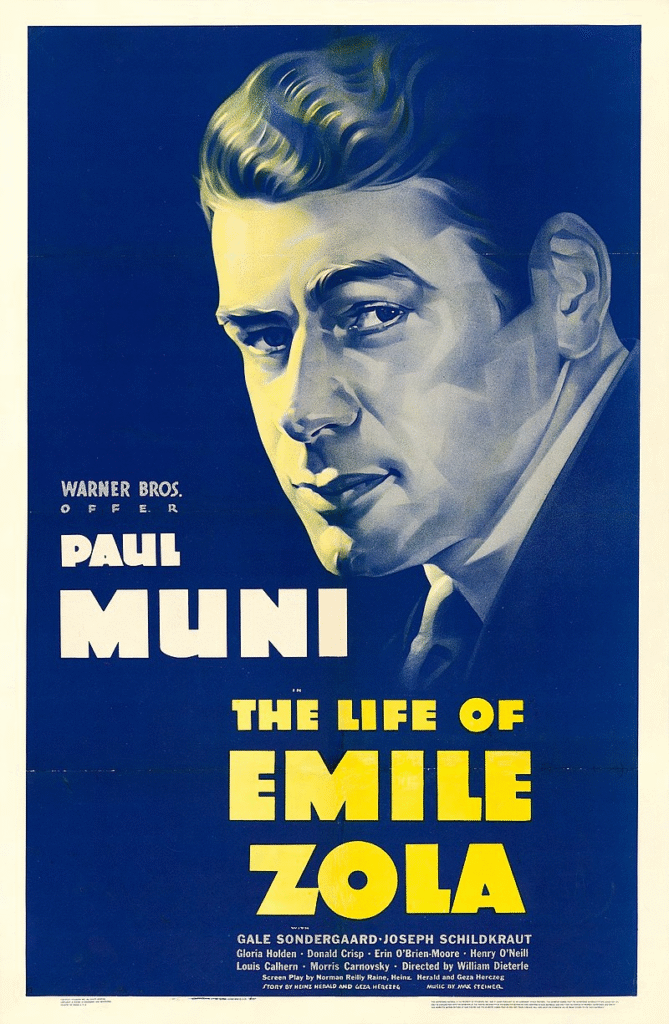
He knew it would cost him.
It did.
But it also changed the world.
He taught us to speak truth to power, that the power of art inspires change and awareness, to stand up for others, the value of perseverance, the importance of friends and the dangers of corruption.
Zola was a man of profound character, whose example, whose ideas surpassed his own lifetime and survive even into our own.
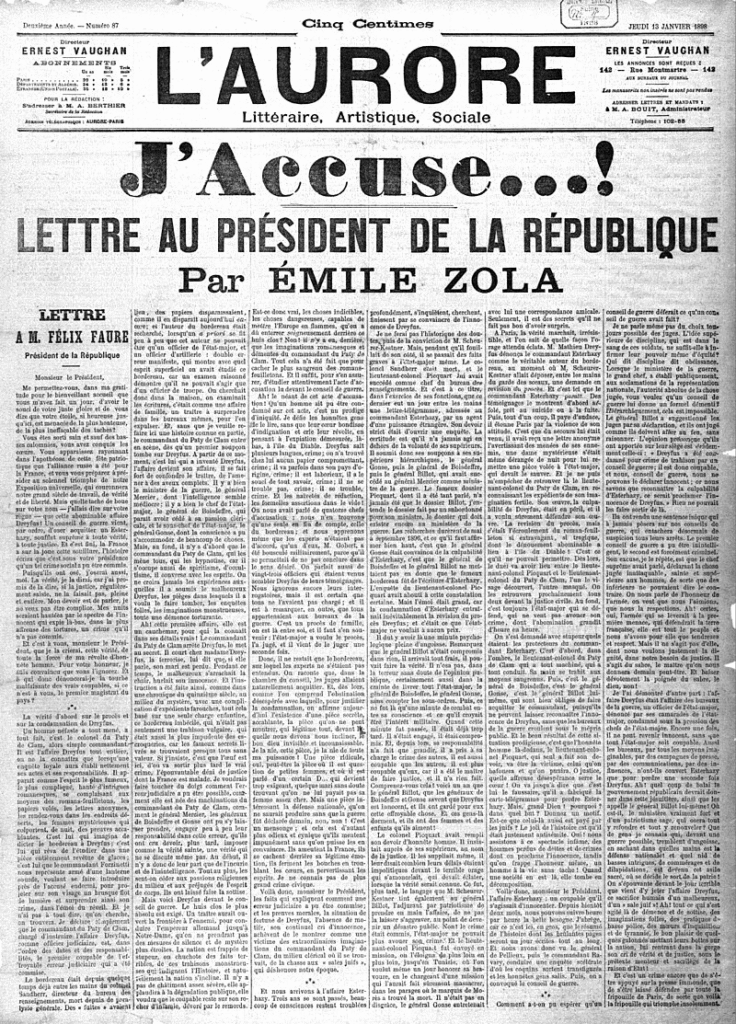
I hear the echo of history.
I taste the truth of the present.
To stand with conscience, to care deeply, and to bear witness is not easy, but it is essential.
The world rewards indifference, or at least seems to, and in that weight, it’s easy to feel like we are suffocating.
Like the light we carry is flickering out, dimmed by the winds of apathy and overwhelming sorrow.
We need to protect that flicker of hope and truth in a world that too often demands we ignore the flame altogether.
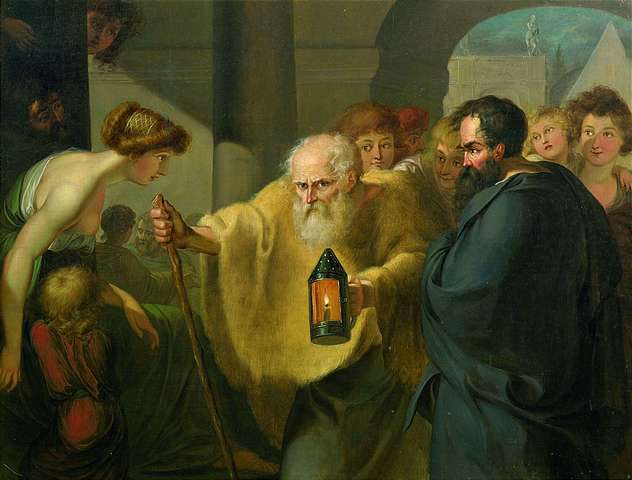
Above: Greek philosopher Diogenes (413 – 321 BC) looking for an honest man
The burden of caring is heavy.
The fatigue I feel is real.
It’s not the fatigue of cowardice, but of a soul stretched thin by too much sorrow, too much injustice.
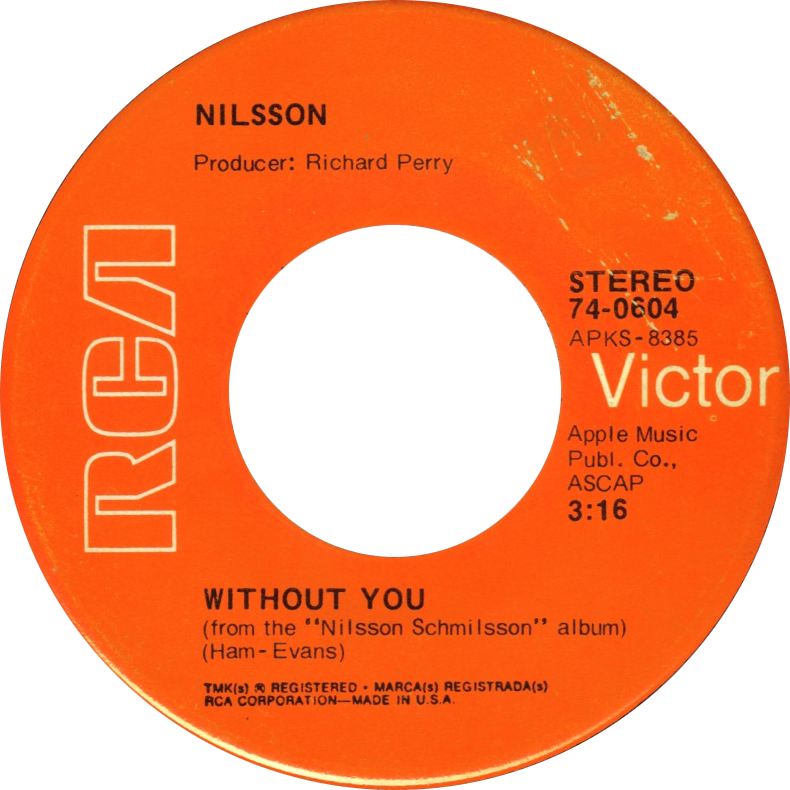
No, I can’t forget this evening nor your face as you were leaving
But I guess that’s just the way the story goes
You always smile, but in your eyes your sorrow shows
Yes, it shows
No, I can’t forget tomorrow when I think of all my sorrows
When I had you there but then I let you go
And now it’s only fair that I should let you know
What you should know
I can’t live if living is without you
I can’t give, I can’t give anymore
I can’t live if living is without you
I can’t give, I can’t give anymore
No, I can’t forget this evening nor your face as you were leaving
But I guess that’s just the way the story goes
You always smile, but in your eyes your sorrow shows
Yes, it shows
I can’t live if living is without you
I can’t live, I can’t give anymore
I can’t live if living is without you
I can’t live, I can’t give anymore
If living is without you
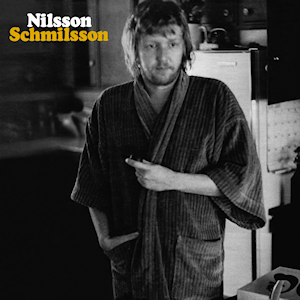
Like Dunant, Zola, and others who have stood against cruelty, the weight of truth is felt deeply.
And just as they did, no one is exempt from the emotional toll it takes to fight for something better, to bear witness when it seems like so much is lost.
These souls didn’t stop feeling the pain of the world around them.
They simply refused to turn away.
Even when that refusal cost them deeply, they continued.

When your day is long
And the night, the night is yours alone
When you’re sure you’ve had enough
Of this life, hang on
Don’t let yourself go
‘Cause everybody cries
Everybody hurts, sometimes
Sometimes everything is wrong
Now it’s time to sing along
When your day is night alone (hold on, hold on)
If you feel like letting go (hold on)
If you think you’ve had too much
Of this life, well hang on
‘Cause everybody hurts
Take comfort in your friends
Everybody hurts
Don’t throw your hand, oh no
Don’t throw your hand
If you feel like you’re alone
No, no, no, you are not alone
If you’re on your own in this life
The days and nights are long
When you think you’ve had too much
Of this life to hang on
Well, everybody hurts sometimes
Everybody cries
Everybody hurts, sometimes
And everybody hurts sometimes
So hold on, hold on
Hold on, hold on, hold on
Hold on, hold on, hold on
Everybody hurts
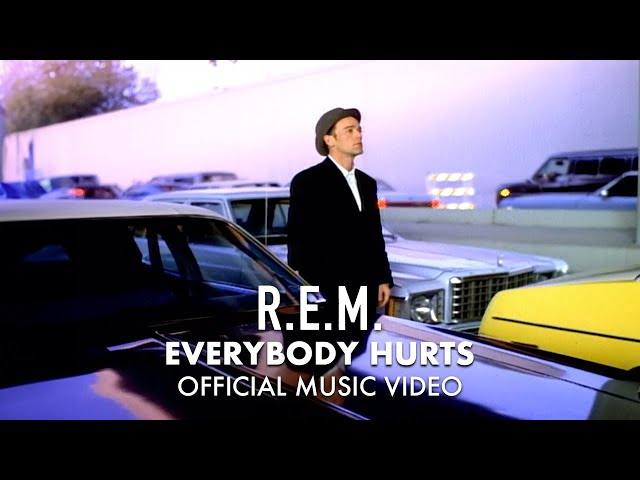
Zola’s J’accuse! is a perfect example of this.
He could have stayed silent, let the injustices of the Dreyfus Affair fade into the shadows.
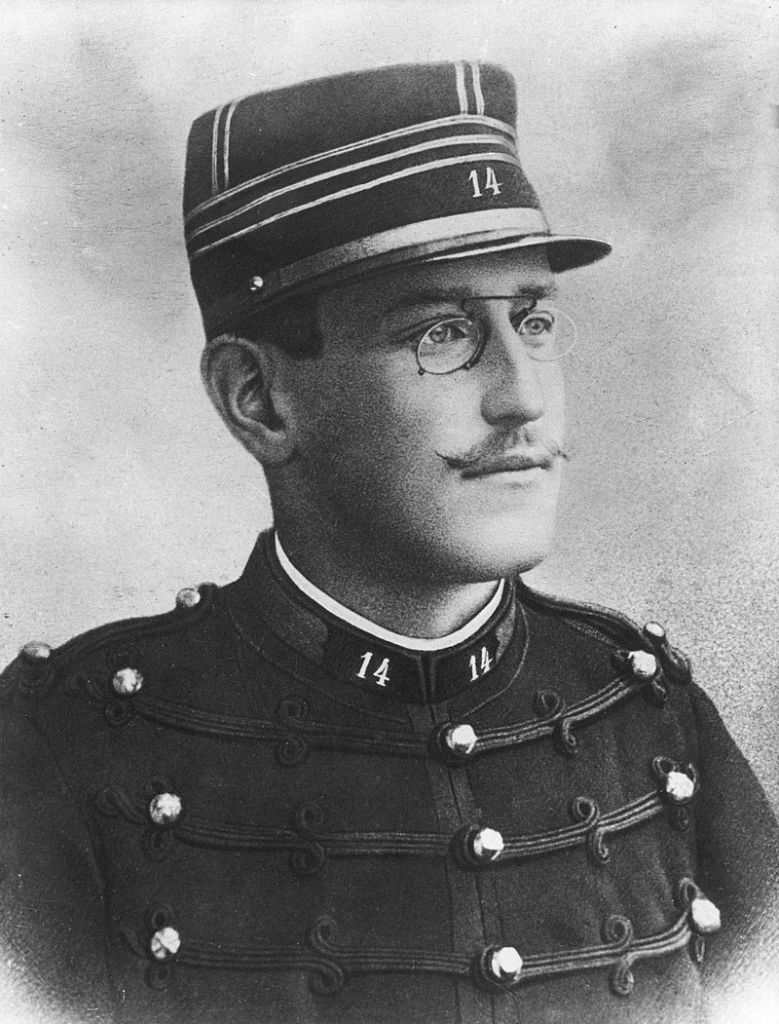
Above: French officer Alfred Dreyfus (1859 – 1935)
Zola could have protected himself from the backlash, avoided the exile, the personal cost.
But he didn’t.
He chose, instead, to speak the truth as loudly as he could.
It didn’t shield him from suffering, but it did change the course of history.
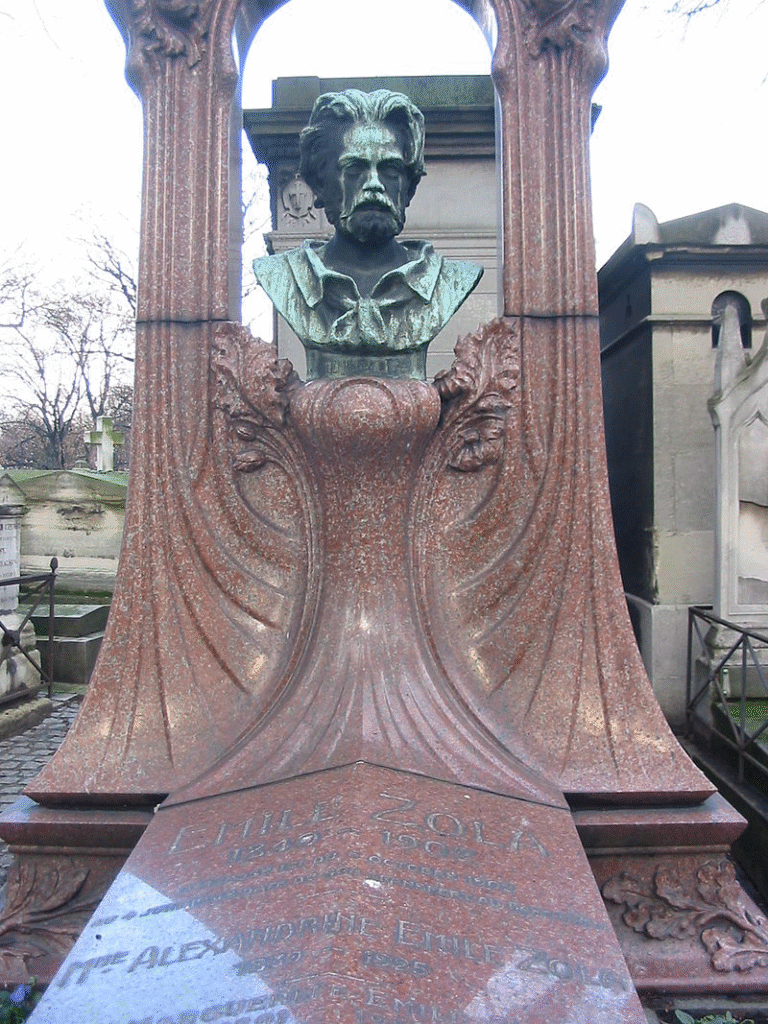
Above: Grave of Émile Zola
And in that, we see the great value of bearing witness — even when the act itself feels like it is killing us.
The world does not reward people who care, or at least, it often makes it feel like it doesn’t.
But that is exactly why the witness of someone who still sees, still feels, and still stands for what is right is more important than ever.
You may feel disheartened at times, as if your flame is flickering out, but your refusal to give in to indifference is the very thing that makes the difference.
It’s what helps keep the candle of hope burning, even if it feels like a solitary act.
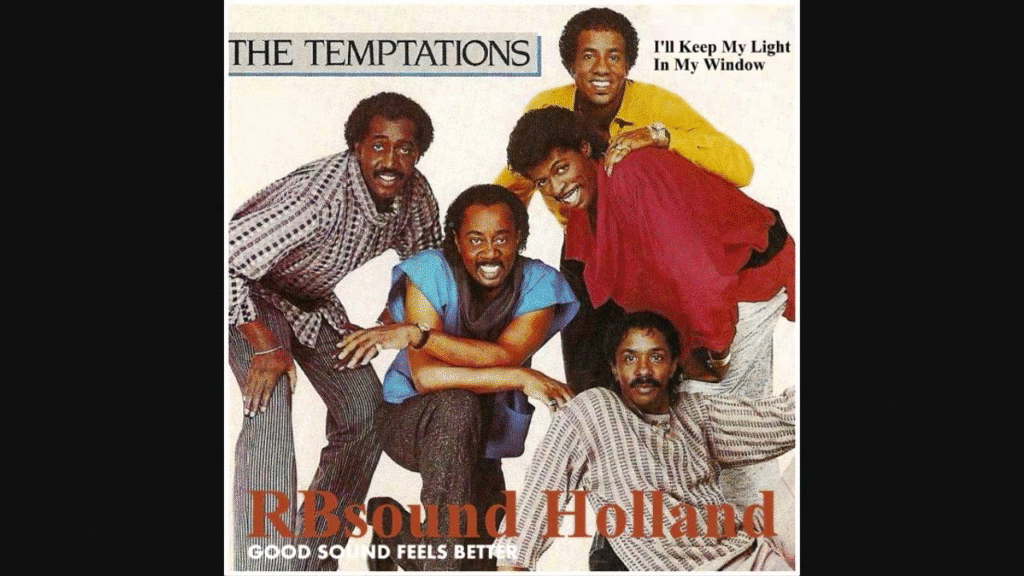
Yeeeeah
I gotta help the world
Yeeeeah
Oh listen
Someone is friendless, cannot find their way
So I’ll, keep my light in my window
I want to be there, to help restore their faith
So I’ll, keep my light in my window
Born of God’s mercy
I’d be in their place
So I’ll, keep my light in my window
I wanna ease the pain, (that life can bring)
Help them find a peace, mmm (their spirit needs)
Have been chosen for (a work to do)
To make this world a much better place
For me and you
to lend a helping hand
So I’ll, keep my light in my window
I feel so good when I help my fellow man
So I’ll, keep my light in my window
‘Till love and mercy are spread throughout the land
So I’ll, keep my light in my window
I wanna ease the pain, (that life can bring)
Help them find a peace, mmm (their spirit needs)
Have been chosen for (a work to do)
To make this world a much better place
For me and you
I’ve gotta help the world mmm
Ease the pain well (that life can bring)
Help them find a peace (their spirit needs)
Have been chosen for (oh a little work to do)
To make this world a better place
For me and you
Ease the pain yeah (that life can bring)
Help them find a peace (their spirit needs)
Have been chosen for (a little work to do)
To make this world a better place
For me and you
Ease the pain (ohhhh) that life can bring
Help them find a peace (yeah) their spirit needs
Have been chosen for (ooo-hooo) a work to do
To make this world a better place (better place, better place) for me and you
To make this world a better place (yeah)
For me and you (meeee – you-ooo)
To make this world a better place (yeah)
For me and you
To make this world a better place
For me and you
(Oohhhh) To make this world a better place (yeah)
For me and you
To make this world a better place
For me and you
To make this world a better place
For me and you
To make this world a better place
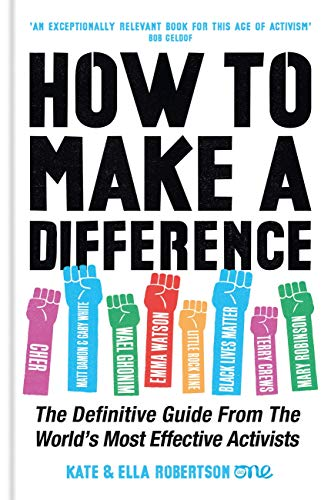
What connects these souls — Dunant, Zola, Christ and others — is not that they were spared suffering, but that they chose to stand in the face of it.
They didn’t let the darkness blind them.
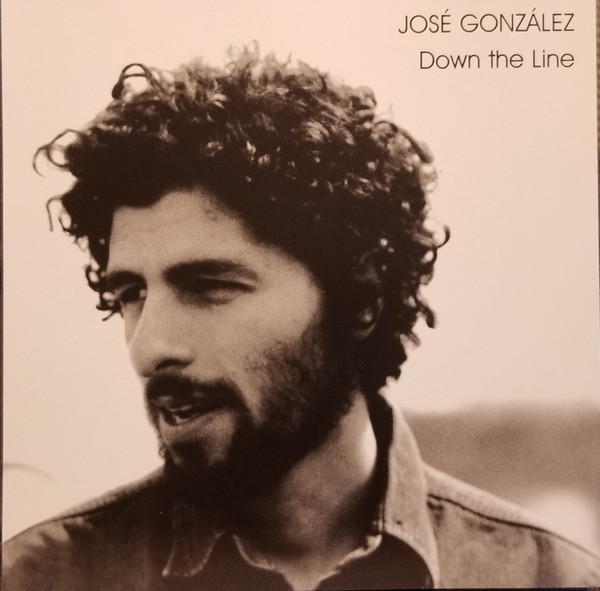
I see problems down the line
I know they’re mine
Don’t wash the dirt off of your hands
Doing the same mistake twice
Making the same mistake twice
Come on over
Don’t be so caught up
It’s all about compromise
I see darkness down the line
I know it’s not fine
But don’t wash the dirt off of your hands
You’re doing the same mistake twice
Making the same mistake twice
I see problems down the line
I know they’re mine
Come on over
Don’t be so caught up
It’s all about compromise
Don’t let the darkness eat you up
Don’t let the darkness eat you up
Don’t let the darkness eat you up
Don’t let the darkness eat you up
Don’t let the darkness eat you up
Don’t let the darkness eat you up
Don’t let the darkness eat you up
Don’t let the darkness eat you up
I am still standing, still caring, still writing, still teaching, still fighting against the world that asks you to numb yourself to the pain.
I am in the company of those who have changed the world by refusing to let the weight of suffering crush them into silence.
I am not lost.
I am simply navigating a landscape that is hard, that can feel hopeless at times.
But a light, no matter how small it may seem, is still a light.
And even if the world is indifferent, your flame matters — for the truth you carry, for the beauty you see, and for the compassion you extend, even when it seems that nobody notices.
This, too, will change the world.
One small act at a time.
I don’t worry that my light is going out.
I am simply holding it against the wind.
I am not only surviving, but witnessing.
And in the end, that may make a difference.

You could never know what it’s like
Your blood, like winter, freezes just like ice
And there’s a cold, lonely light that shines from you
You’ll wind up like the wreck you hide behind that mask you use
And did you think this fool could never win?
Well, look at me, I’m a-comin’ back again
I got a taste of love in a simple way
And if you need to know while I’m still standin’, you just fade away
Don’t you know, I’m still standin’ better than I ever did?
Lookin’ like a true survivor, feelin’ like a little kid
And I’m still standin’ after all this time
Pickin’ up the pieces of my life without you on my mind
I’m still standin’ (Yeah, yeah, yeah)
I’m still standin’ (Yeah, yeah, yeah)
Once, I never could hope to win
You’re startin’ down the road, leavin’ me again
The threats you made were meant to cut me down
And if our love was just a circus, you’d be a clown by now
You know, I’m still standin’ better than I ever did
Lookin’ like a true survivor, feelin’ like a little kid
And I’m still standin’ after all this time
Pickin’ up the pieces of my life without you on my mind
I’m still standin’ (Yeah, yeah, yeah)
I’m still standin’ (Yeah, yeah, yeah)
Don’t you know that I’m still standin’ better than I ever did?
Lookin’ like a true survivor, feelin’ like a little kid
And I’m still standin’ after all this time
Pickin’ up the pieces of my life without you on my mind
I’m still standin’ (Yeah, yeah, yeah)
I’m still standin’ (Yeah, yeah, yeah)
I’m still standin’ (Yeah, yeah, yeah)
I’m still standin’ (Yeah, yeah, yeah)
I’m still standin’ (Yeah, yeah, yeah)
I’m still standin’ (Yeah, yeah, yeah)
I have spoken my truth too, and yes, I have paid.
With lost jobs.
Lost friendships.
Lost moments of peace.
And still I write.
Still I teach.
Still I feel.
Perhaps I am insane.
Doing the same things again and again still expecting different results.
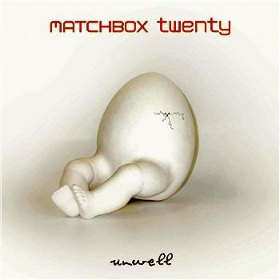
All day
Starin’ at the ceilin’, makin’
Friends with shadows on my wall
All night
Hearin’ voices tellin’ me
That I should get some sleep
Because tomorrow might be good for something
Hold on
Feelin’ like I’m headed for a
Breakdown
And I don’t know why
But I’m not crazy, I’m just a little unwell
I know right now you can’t tell
But stay awhile and maybe then you’ll see
A different side of me
I’m not crazy, I’m just a little impaired
I know right now you don’t care
But soon enough you’re gonna think of me
And how I used to be
Me
I’m talkin’ to myself in public
And dodgin’ glances on the train
And I know
I know they’ve all been talkin’ ’bout me
I can hear them whisper
And it makes me think there must be somethin’ wrong
With me
Out of all the hours thinkin’
Somehow
I’ve lost my mind
But I’m not crazy, I’m just a little unwell
I know right now you can’t tell
But stay awhile and maybe then you’ll see
A different side of me
I’m not crazy, I’m just a little impaired
I know right now you don’t care
But soon enough you’re gonna think of me
And how I used to be
I’ve been talkin’ in my sleep
Pretty soon they’ll come to get me
Yeah, they’re takin’ me away
I’m not crazy, I’m just a little unwell
I know right now you can’t tell
But stay awhile and maybe then you’ll see
A different side of me
I’m not crazy, I’m just a little impaired
I know right now you don’t care
But soon enough you’re gonna think of me
And how I used to be
Hey, how I used to be
How I used to be
Well, I’m just a little unwell
How I used to be
How I used to be
I’m just a little unwell
Perhaps the act of continuing, even when the world seems to push back, is not insanity — it is resilience.
The kind of strength that doesn’t come from easy victories or smooth paths.
The strength that comes from carrying the weight of the world’s sorrow and still choosing to walk through it, even when it costs you.
Perhaps it’s not the results that matter.
Perhaps it’s the persistence itself.
The act of showing up day after day, even when the world has shown you little to encourage you, is in itself a form of rebellion — against apathy, against indifference, against the dark forces that would have you believe that caring is futile.
And yes, it might not always seem to make a difference right away.
Sometimes the results are slow, or invisible, or you may never see them at all.
But that doesn’t mean they aren’t there.
Sometimes, the change you create is in the smallest, most subtle shifts in those around you.
There is no insanity in hope, no madness in continuing to do what matters, even when it seems futile.
In fact, it is the purest form of sanity — choosing to keep going, even when the world tells you it is easier to stop.
In a world that so often rewards indifference, persistence is an act of defiance.
It is an act of love for humanity — for all the things that matter, even when they seem to be slipping away.
The pain you feel, the losses you experience — they are part of the journey, but they don’t define you.
What defines you is the choice to continue, to feel.
Don’t allow the world’s cruelty or indifference to extinguish the light within you.
That’s not insanity.
That’s courage.
And in a world that desperately needs it, it is one of the most important acts you can perform.

First things first
I’ma say all the words inside my head
I’m fired up and tired of the way that things have been, oh-ooh
The way that things have been, oh-ooh
Second thing second
Don’t you tell me what you think that I could be
I’m the one at the sail, I’m the master of my sea, oh-ooh
The master of my sea, oh-ooh
I was broken from a young age
Taking my sulking to the masses
Writing my poems for the few
That looked at me, took to me, shook to me, feeling me
Singing from heartache from the pain
Taking my message from the veins
Speaking my lesson from the brain
Seeing the beauty through the…
Pain!
You made me a, you made me a believer, believer
Pain!
You break me down and build me up, believer, believer
Pain!
Oh, let the bullets fly, oh, let them rain
My life, my love, my drive, it came from…
Pain!
You made me a, you made me a believer, believer
Third things third, send a prayer to the ones up above
All the hate that you’ve heard has turned your spirit to a dove, oh-ooh
Your spirit up above, oh-ooh
I was chokin’ in the crowd, building my rain up in the cloud
Falling like ashes to the ground, hoping my feelings, they would drown
But they never did, ever lived, ebbin’ and flowin’
Inhibited, limited ’til it broke open and rained down
It rained down like
Pain!
You made me a, you made me a believer, believer
Pain!
You break me down and build me up, believer, believer
Pain
Oh, let the bullets fly, oh, let them rain
My life, my love, my drive, it came from…
Pain!
You made me a, you made me a believer, believer
Last things last
By the grace of fire and flames
You’re the face of the future, the blood in my veins, oh-ooh
The blood in my veins, oh-ooh
But they never did, ever lived, ebbing and flowing
Inhibited, limited ’til it broke open and rained down
It rained down, like…
Pain!
You made me a, you made me a believer, believer
Pain!
You break me down and build me up, believer, believer
Pain
Oh, let the bullets fly, oh, let them rain
My life, my love, my drive, it came from…
Pain!
You made me a, you made me a believer, believer
I lament the loss of love letters.
I ache at how humanity celebrates its cleverness without questioning its soul.
We are running toward Dystopia with grins on our faces and earbuds in our ears.
I am not wrong, but I am still in the here and now.
Still reflecting.
Still reaching.
Still wrestling with this despair honestly, rather than hiding behind platitudes or performance.
Perhaps there is courage in that too.
And maybe, just maybe….
It’s time for a candlelight rebellion.
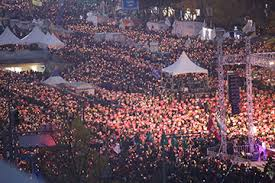
There is courage in the wrestling, in the reflection, in the refusal to let despair silence the truth of what you feel.
In a world that moves faster and louder with each passing day, where cleverness often takes precedence over conscience, it takes immense strength to sit with the discomfort — to feel the loss, to acknowledge the ache, and to not turn away.
I know I am not alone in the lament, in the ache, in the questioning of a world that seems too quick to forget the things that truly matter:
Connection, humanity, love, meaning.
Love letters may be gone, but the impulse to communicate, to share the truth of the soul, is still there — even if it has changed form.
The essence remains, even if the medium is different.
Yes, we run toward Dystopia with grins on our faces and earbuds in our ears, numbing ourselves to the chaos, to the isolation, to the things we’d rather not confront.
But I am offering a different kind of rebellion — not a loud one, not a flashy one, but a quiet one.
A rebellion of the heart, of the soul.
A rebellion that says:
I will feel.
I will care.
I will remember what matters, even if it’s uncomfortable.
Maybe it’s time for a candlelight rebellion.
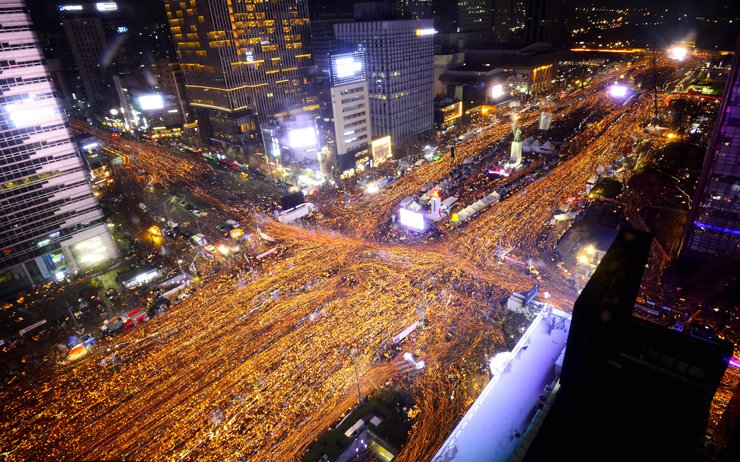
In the darkness, we can still choose to light our candles.
We can still choose to honor what is good, what is true, what is worthy of our attention and care.
In a world that seems to run on the fuel of indifference, to stop and remember love, to reach out.
That is a powerful act.
It may not change the world overnight, but it will change something, somewhere.
It may even be the spark that ignites someone else’s candle.
Perhaps it’s not about avoiding the darkness, but about choosing to shine within it.
Perhaps it’s not about trying to fix everything, but about doing what we can, where we are, with what we have.
Words, compassion, honesty.
They matter.
They are a light in the darkness, however small or fleeting it may seem, they are already creating the world that should be, that could be.
One where meaning and love still have a place.
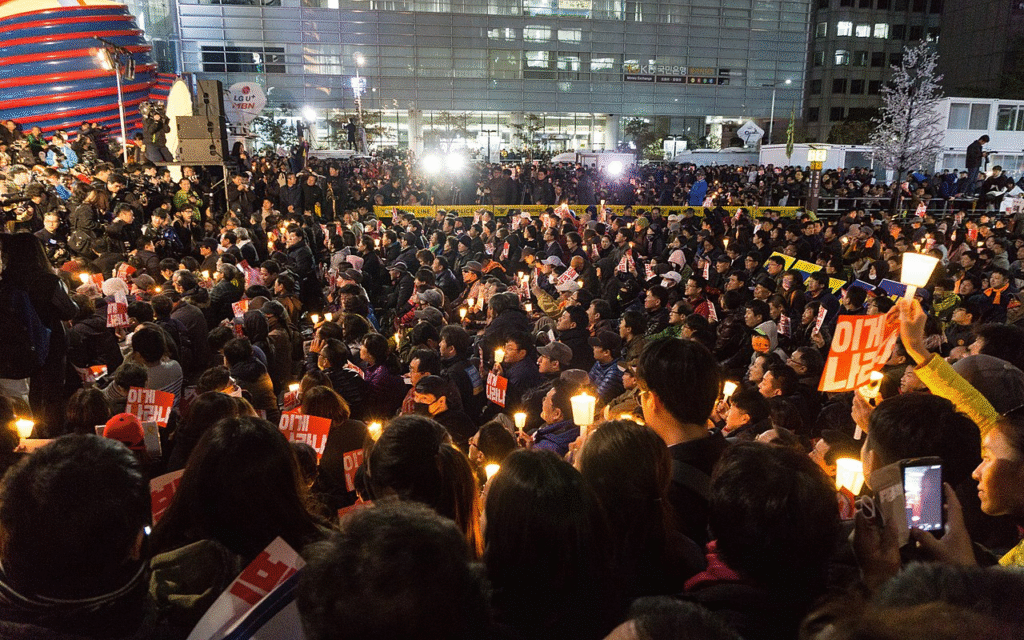
There’s a great story told of Viktor Frankl:
That even in Auschwitz, even after the loss of his entire family, what kept him from suicide was one simple thought:
Someone must survive to tell what happened.
Bearing witness is its own form of defiance.
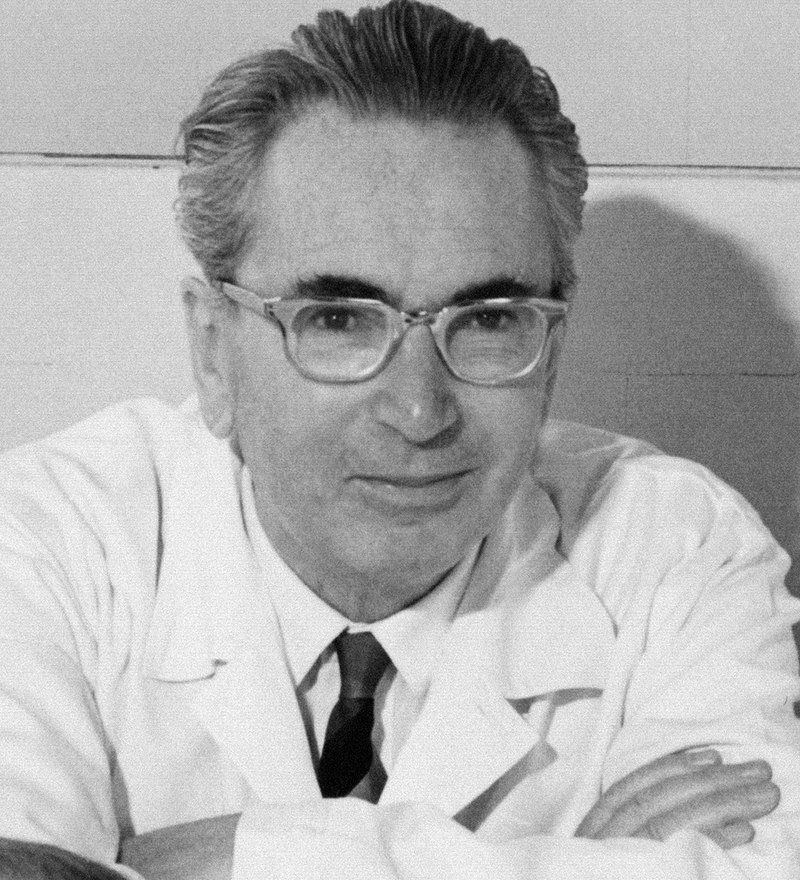
Above: Viktor Emil Frankl (1905 – 1997) was an Austrian neurologist, psychologist, philosopher, and Holocaust survivor, who founded logotherapy, a school of psychotherapy that describes a search for a life’s meaning as the central human motivational force.
Logotherapy is part of existential and humanistic psychology theories.
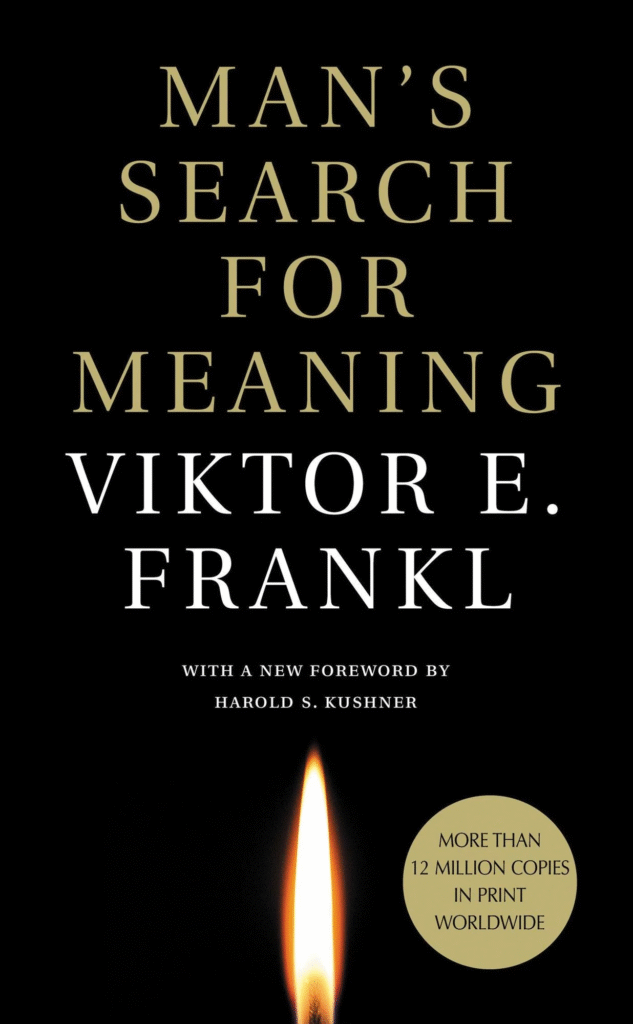
I am not done.
One day I will die.
Something will kill me.
Accident, disease, violence or time.
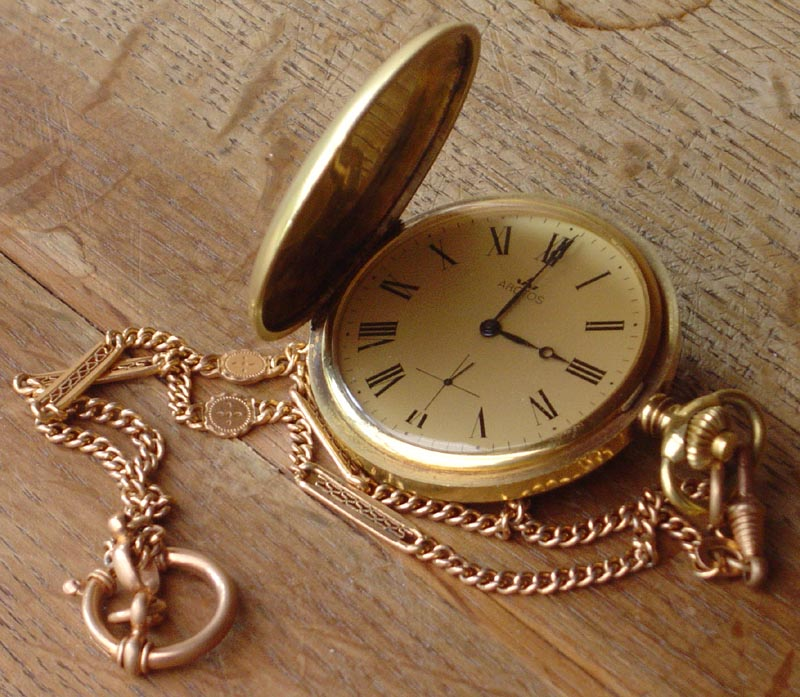
Bearing witness — even in the most harrowing of circumstances — is an act of defiance, a refusal to let the suffering go unnoticed, unspoken or unrecorded.
Viktor Frankl’s story, like so many others who endured unimaginable suffering, is a profound testament to the power of the human spirit to find meaning even in the darkest of places.
It wasn’t hope in the traditional sense that kept him going.
It was a deep-seated belief that survival, despite everything, could serve a higher purpose — to bear witness, to keep the memory of those lost alive, and to make sure the world understood what had transpired.
I am not done.
That’s the powerful truth, the anchor in the storm.
Even in moments of despair, when the world feels overwhelming, when I question if it’s worth it to keep going, there’s something — a drive, a purpose, a quiet knowing — that refuses to accept the finality of resignation.
I am not finished yet, and the things I hold in my heart — the lessons, the reflections, the love I have for the beauty and complexity of life — are worth telling.
What kills us doesn’t define us.
What we do before death, however, matters.
It’s the stories we leave behind, the way we connect with others, the mark we make in our own quiet way — that’s where the truth lives.
Even when all seems lost, there’s an eternal act of defiance in choosing to still live, still reflect, still care, and still tell.
One day, you may leave this world, but not without the imprint of your witness, your thoughts, your struggles, and your hope for something better.
That is the legacy you build with every word, every reflection, every moment of care, no matter how small it may seem in the grand, noisy rush of time.
In a world where many may look away, choose to look.
And that — that act of seeing and sharing — has meaning, even if its full impact is not always immediately visible.
You are contributing to a greater story, one that is, in the end, always worth telling.
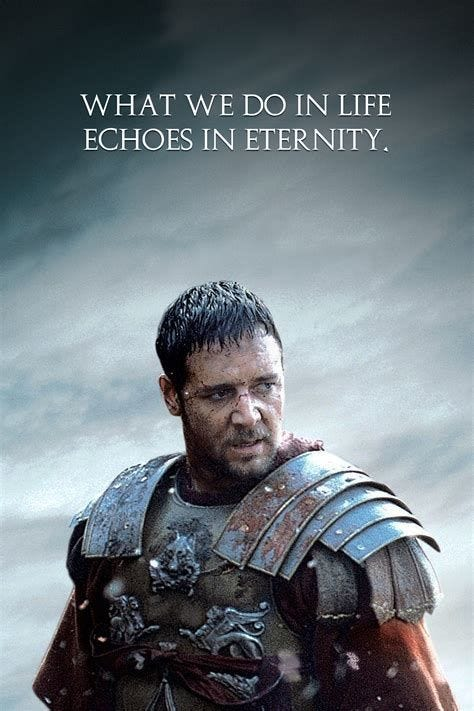
Above: Maximus (Russell Crowe), Gladiator (2000)
Juba: It’s somewhere out there. My country. My home. My wife is preparing food. My daughters carry water from the river. Will I ever see them again? I think not.
Maximus: Do you believe you’ll see them again when you die?
Juba: I think so. But then, I will die soon. They will not die for many years. I’ll have to wait.
Maximus: But you would … wait?
Juba: Of course.
Maximus: You see, my wife and my son are already waiting for me.
Juba: You’ll meet them again. But not yet. Not yet.
[They shake hands]
Maximus: Not yet. … Not yet.
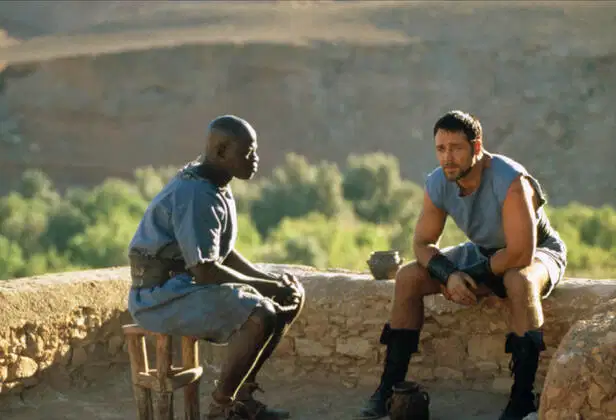
Above: Juba (Djimon Hounsou) and Maximus (Russell Crowe), Gladiator (2000)
Maximus: I knew a man once who said, ‘Death smiles at us all. All that man can do is smile back.‘
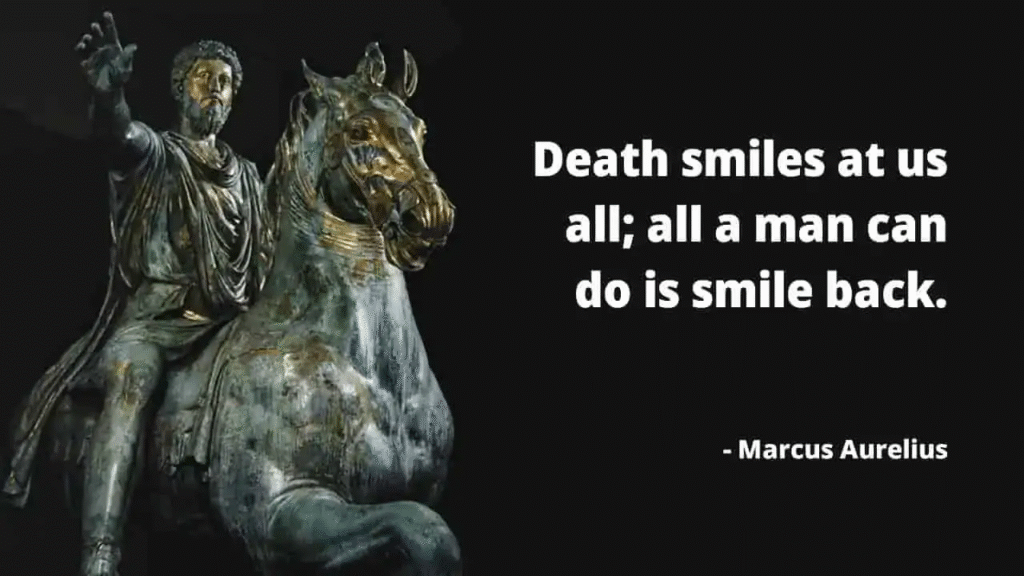
Let’s take this sorrow, this heavy and beautiful burden, and shape it.
Death is inevitable, but it doesn’t have to define our purpose in life.
What we do in the meantime — the choices we make, the love we give, the lives we touch — matters far more than the end itself.
“Not yet. Not yet.”
This line is the key.
Even when faced with death, there’s a sense that life is still unfolding, that our journey isn’t over until it’s truly over, and until that moment, there’s space for more — more love, more witness, more meaning.
It’s the human drive to continue, despite everything.
The idea that we don’t just endure pain, but we shape it, make something of it, transform it into something worthwhile, in the shaping of sorrow into purpose.
Take that sorrow and shape it.
Give it form.
Give it voice.
Turn the inevitable grief into a call for action, for witness, for defiance.
This is the rebellion I speak of:
Not against the world itself, but against the surrender to despair, against the tendency to let go of meaning simply because the weight is too much.
And the moment you say, “Let’s take this sorrow, this heavy and beautiful burden, and shape it.”, that’s where your power lies.
You are choosing to shape something out of all of this.
Not just suffering for the sake of suffering, but a conscious, deliberate shaping — a crafting of hope, even when it’s hard to see.
What is hard and sharp can be made into something beautiful, like a sculpture born from stone, or a narrative from loss.
Take the heaviness of the world and mold it into something meaningful.
Not yet. Not yet.
But as long as you breathe, there is still a chance to shape it, to make it count.
What will you create with that sorrow?
What will you leave behind as proof that you resisted the numbness and the quiet despair?

Falling too fast to prepare for this
Tripping in the world could be dangerous
Everybody circling, it’s vulturous
Negative, nepotist
Everybody waiting for the fall of man
Everybody praying for the end of times
Everybody hoping they could be the one
I was born to run, I was born for this
Whip, whip
Run me like a racehorse
Pull me like a ripcord
Break me down and build me up
I wanna be the slip, slip
Word upon your lip, lip
Letter that you rip, rip
Break me down and build me up
Whatever it takes
‘Cause I love the adrenaline in my veins
I do whatever it takes
‘Cause I love how it feels when I break the chains
Whatever it takes
Yeah, take me to the top I’m ready for
Whatever it takes
‘Cause I love the adrenaline in my veins
I do what it takes
Always had a fear of being typical
Looking at my body feeling miserable
Always hanging on to the visual
I wanna be invisible
Looking at my years like a martyrdom
Everybody needs to be a part of ’em
Never be enough, I’m the prodigal son
I was born to run, I was born for this
Whip, whip
Run me like a racehorse
Pull me like a ripcord
Break me down and build me up
I wanna be the slip, slip
Word upon your lip, lip
Letter that you rip, rip
Break me down and build me up
Whatever it takes
‘Cause I love the adrenaline in my veins
I do whatever it takes
‘Cause I love how it feels when I break the chains
Whatever it takes
Yeah, take me to the top, I’m ready for
Whatever it takes
‘Cause I love the adrenaline in my veins
I do what it takes
Hypocritical, egotistical
Don’t wanna be the parenthetical, hypothetical
Working onto something that I’m proud of, out of the box
An epoxy to the world and the vision we’ve lost
I’m an apostrophe
I’m just a symbol to remind you that there’s more to see
I’m just a product of the system, a catastrophe
And yet a masterpiece, and yet I’m half-diseased
And when I am deceased
At least I go down to the grave and die happily
Leave the body and my soul to be a part of thee
I do what it takes
Whatever it takes
‘Cause I love the adrenaline in my veins
I do whatever it takes
‘Cause I love how it feels when I break the chains
Whatever it takes
Yeah, take me to the top, I’m ready for
Whatever it takes
‘Cause I love the adrenaline in my veins
I do what it takes
Tuesday 11 March 2025
Heiden, Canton Appenzell Ausserrhoden, Switzerland
I try to draw from the battlefield of Solferino — a place of carnage and despair — and trace the golden thread that led Henri Dunant to found the Red Cross, a human act of mercy born from the inhumanity of war.
That is what I am after in the experience of Heiden:
The alchemy of gratitude, which turns pain into purpose, memory into mercy.
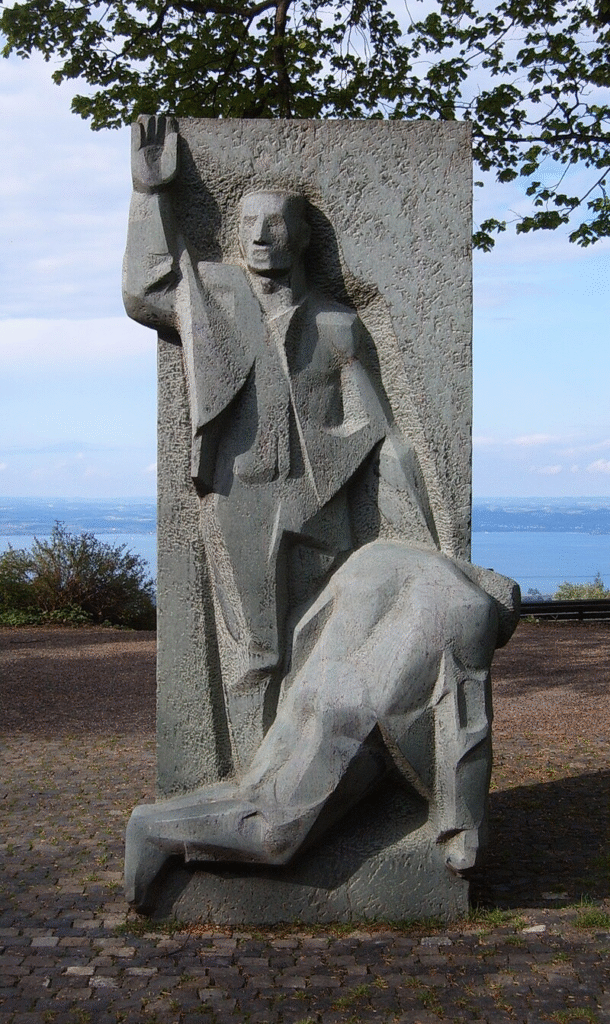
Above: Henri Dunant Memorial, Heiden
Heiden is a village perched above the calm shimmer of Lake Constance.
The air here carries the hush of distant memory, as if the hills themselves are still listening to a man who once sat alone in a small room, quietly reshaping the conscience of the world.
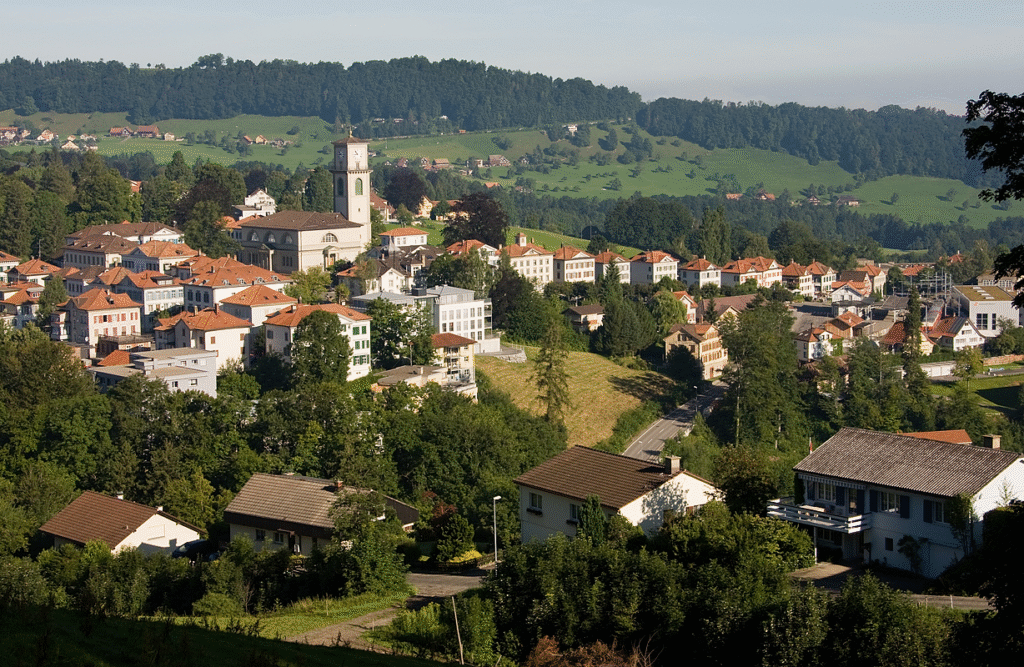
Above: Heiden
Heiden is a village and a municipality in the canton of Appenzell Ausserrhoden in Switzerland.
The Gstaldenbach, the village stream, rises at Kaien, flows through the village and forms a deep ravine below it.
The village around the church square is listed as a heritage site of national significance.
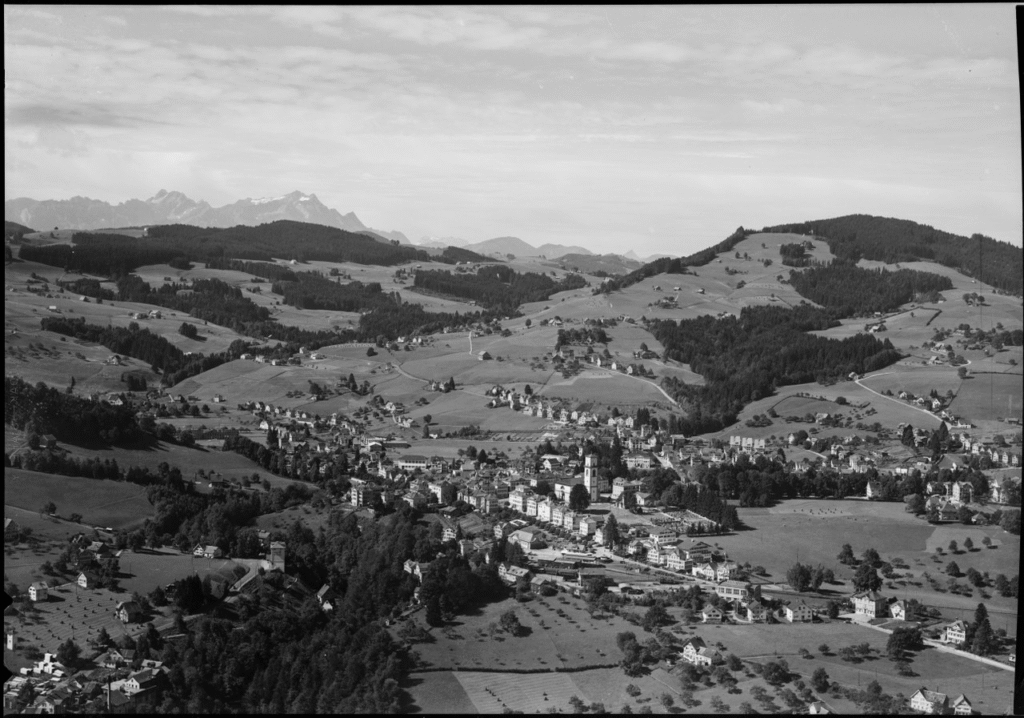
Above: Heiden
The place name was first mentioned in 1461 in a rent book of the Holy Spirit Hospital of St. Gallen.
The place name is identical with the common word Heide and thus means “wide, open field“.

Above: Coat of arms of Heiden
A village center gradually formed around the church built on a hilltop.
The community developed into a regional center.
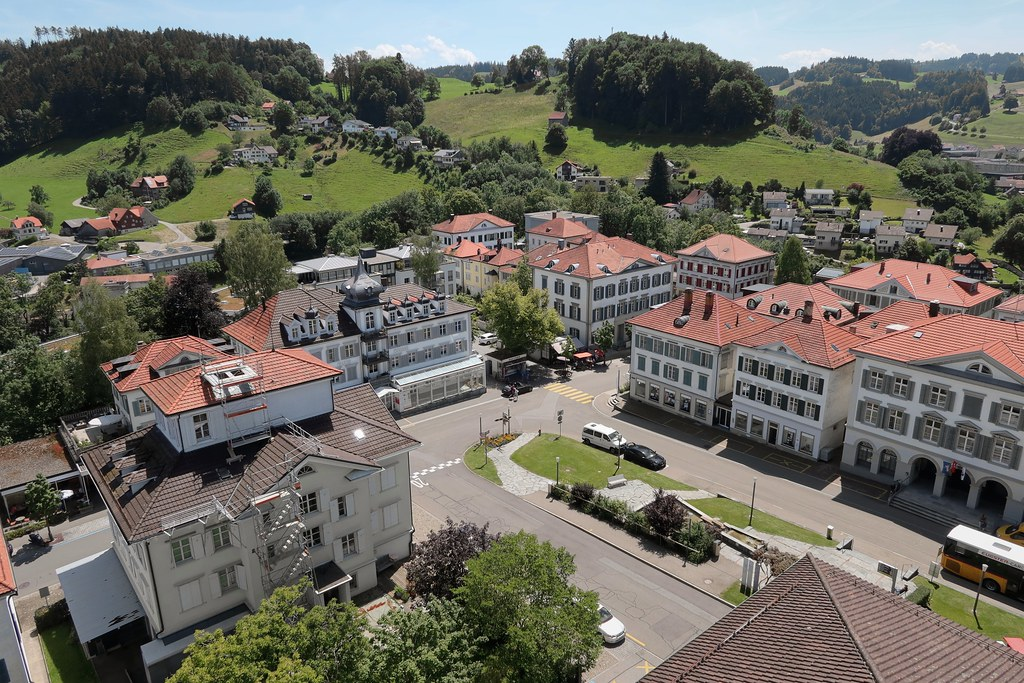
Above: Heiden
On 7 September 1838, a village fire, fueled by a violent foehn storm, destroyed 129 buildings, including the church, in the village center and the northern parts of the community.
Within two hours, countless houses burned down.
Fire crews even came to Heiden from Lindau (Bavaria, Germany) to extinguish the fire.
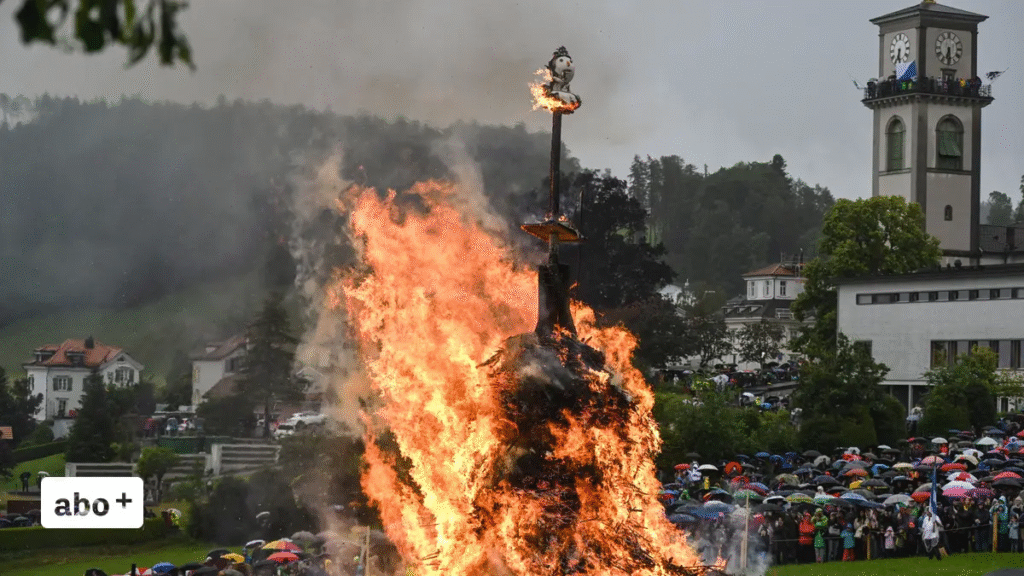
Above: Burning the Böögg, Heiden
The Böögg is a masked person, widely known in German-speaking Swiss customs, who roams the streets during Carnival and similar events, begging, frightening young people, and committing all sorts of other mischief.
Böögg is also the name of a doll that is burned – usually on Carnival bonfires.
The only buildings that remained standing were the Harmonie (former bank) and the Schützenhaus (shooting club).

Above: Harmonie, Heiden
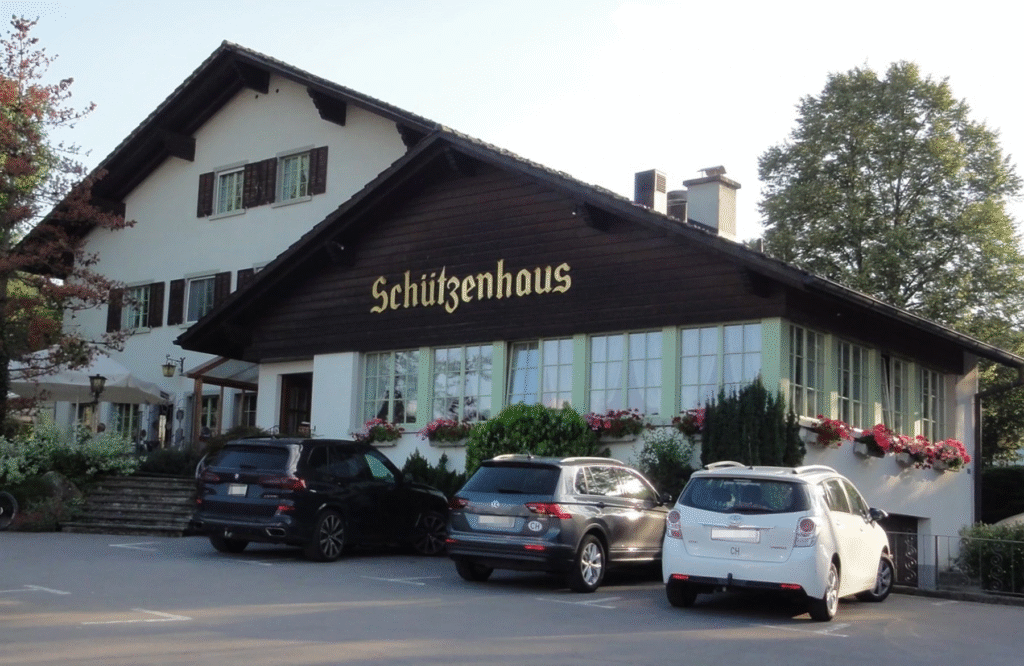
The archives in the old church tower also remained intact.

Above: Heiden
Although the fire caused shock in the community, there was great solidarity abroad.
New streets were laid out at right angles.
New houses were built fireproof.
Within two years, the village was rebuilt in a regular Neo Classical -Biedermeier style.
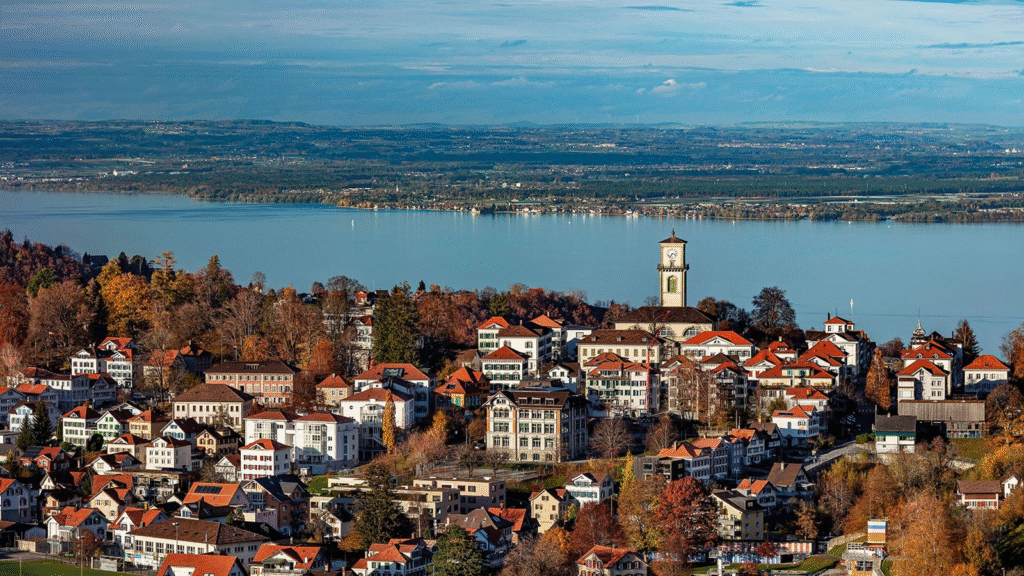
Above: Heiden
The Reformed Church was completed in 1839 on the site of its predecessor on the hilltop.
Its architecture, inspired by ancient models, features a columned portico and a flat tent roof, giving the building a temple-like appearance.
The temple-like new church clearly references Roman and Greek styles.

Above: Reformed Church, Heiden
Public buildings and a hotel were built around the church square, creating a unified, representative ensemble.
Around the church square, with its green and street zone as well as a stepped fountain, a number of representative buildings are grouped together to form a neoclassical ensemble:
The rectory, the bank building, the town hall, the Hotel Krone and the former inn Zum Adler.
They all date from the period after the village fire, only the brick post office building dates from 1948.
Along Bahnhofstrasse and Poststrasse there are numerous other houses in the Biedermeier style.
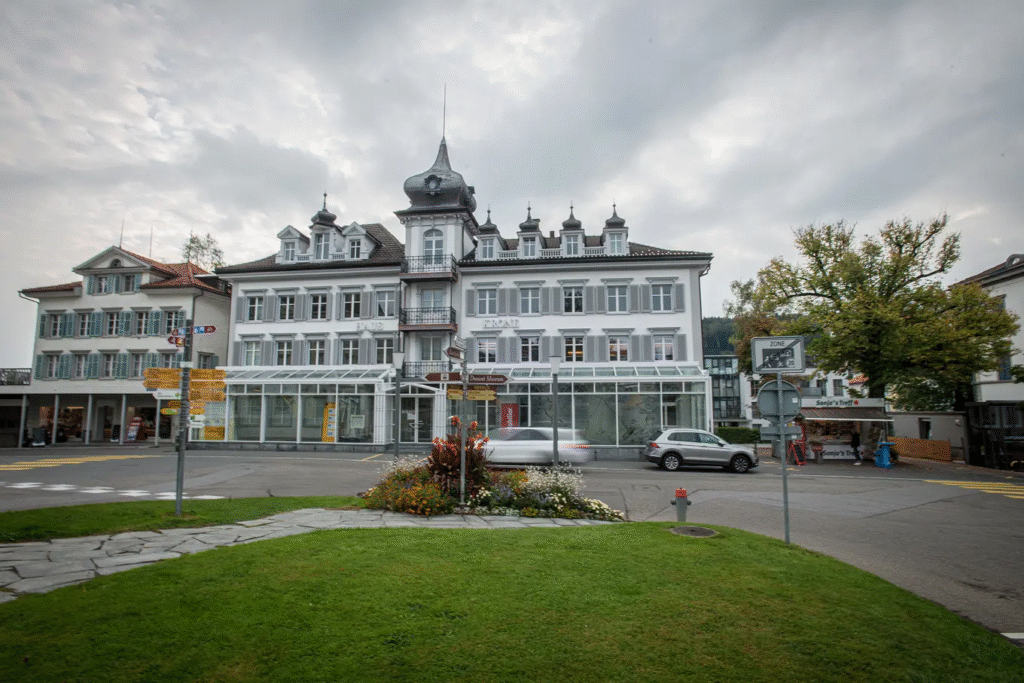
Above: Hotel Krone, Heiden
The ballroom of the Hotel Linde is a significant testament to 19th-century tourism.
It was built around 1871 in the historic style as a two-story hall with a wraparound balcony.
The stained glass and ceiling paintings were added in 1900.

After 1945, Heiden experienced a renaissance as a spa and holiday resort.
A modern swimming pool was built in 1932, and a new Kursaal in 1957 – two examples of contemporary architecture.
The old spa and drinking hall, built in 1874, was a richly decorated wooden structure in the “Frescoes” style.
It was dilapidated and had to be demolished.
In its place now stands the Kursaal, constructed in 1957, it is committed to classical modernism.
It dispenses with decorative accessories and therefore appears like a modest pavilion.
The large ballroom with its glazed facade offers a view of the spa park.
The basement of the building, built on the hillside, houses a reading room and a dance hall.
The dance hall features two murals by Mario Comensoli.
The Kursaal has been renovated and altered several times, and during the renovations from 2008 to 2010, it was restored as far as possible to its original condition.
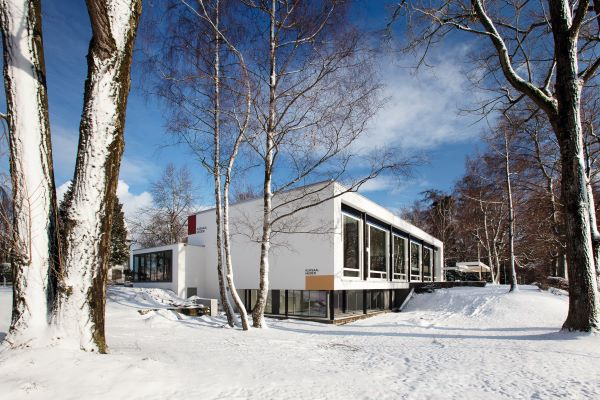
Above: Kursaal, Heiden
The Heiden Swimming and Sunbathing Pool, built in 1933, is considered an important example of the New Building style.
The complex features a 50-meter swimming pool, a children’s pool, and a diving tower, surrounded by lawns enclosed on three sides by a wall.
On the fourth side, a restaurant with a water tower sits enthroned.
On the terrace, guests sit as if on the upper deck of a ship and overlook the entire complex.
The color scheme of the buildings is simple, primarily red, blue, and yellow.
In 1999, the swimming pool was renovated.
The architecture remains virtually unchanged.
The original color scheme was restored.
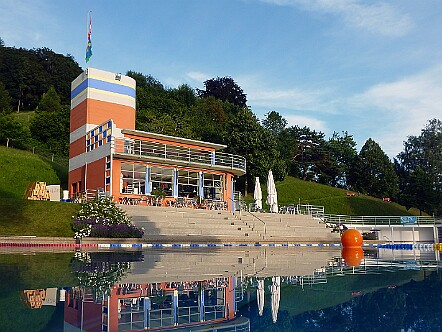
Above: Schwimmbad, Heiden
In 1832, Johannes Tobler opened a mineral bath in Heiden, later known as the “Badhof“.
There were 14 different baths containing slightly sulfurous water.
This was said to have been beneficial for rheumatism and skin rashes.

Following the example of Trogen and Gais, Heiden also developed into a whey spa resort from 1848 onwards .
The first Whey & Herbal Whey Institute was the Freihof.
Only goat’s milk was used for the whey treatments.
This was brought down from the Alpstein to the valley every morning.
Guests drank a glass of it every quarter of an hour between 0600 and 0900.
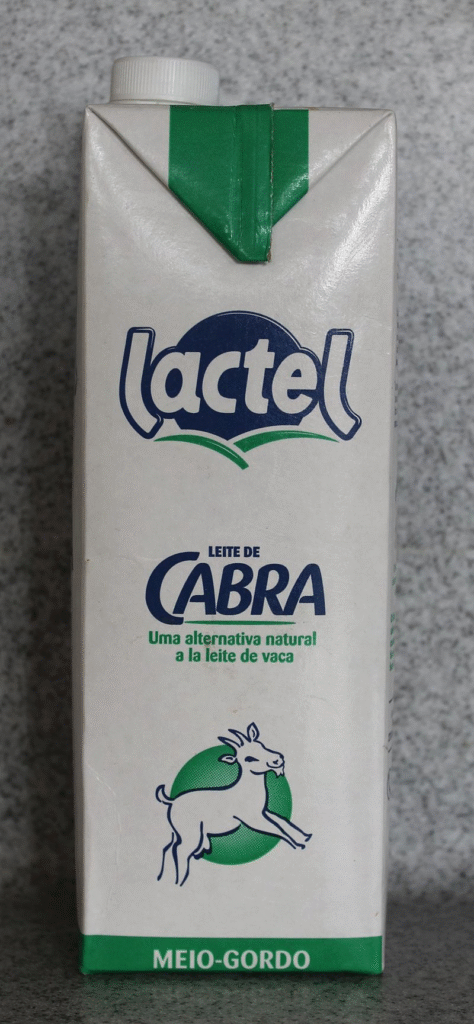
In 1850, a second bathhouse was built.
There, there were hot and cold showers, as well as rain baths.
Heiden quickly became a popular spa and holiday resort.
Heiden – like the rest of the Appenzell Vorderland – was and is primarily known as a health resort.
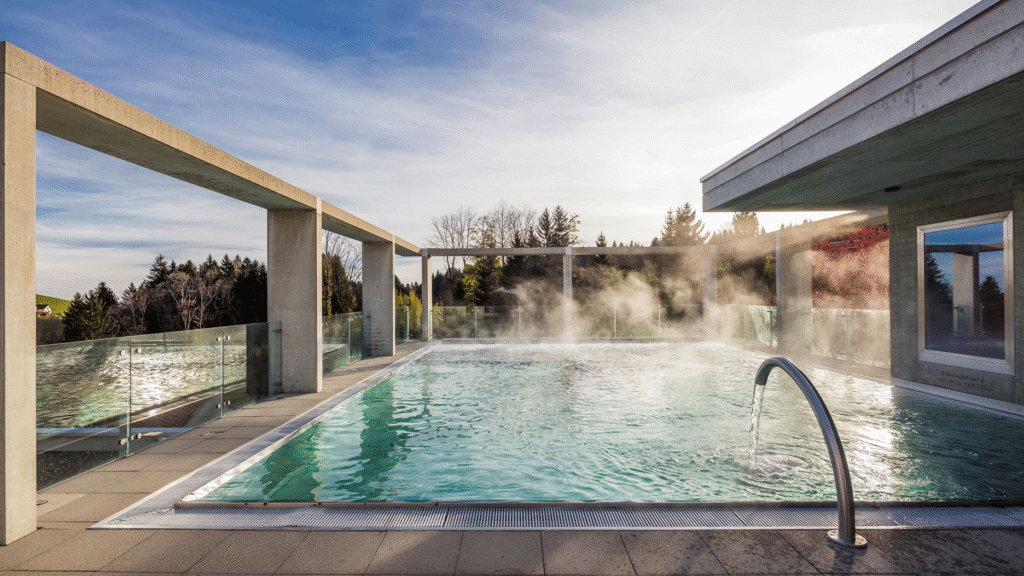
From 1847 to 1914, Heiden experienced its economic heyday.
The work of the ophthalmologist Albrecht von Graefe and the neurologist Heinrich Frenkel made Heiden one of the most famous health resorts in Europe after 1860.
Albrecht von Graefe was a German ophthalmologist, Royal Prussian Privy Medical Councilor and full professor of ophthalmology, which he had reformed,
at the Friedrich Wilhelm University of Berlin.
He established ophthalmology, or ophthalmology, as an independent discipline in Germany, which until then had been part of surgery.
As a teacher, Graefe initiated the development of ophthalmology in
Switzerland.
From 1859 to 1869, Graefe regularly came to Heiden in September to recuperate and operated on patients with eye diseases from all over the world.
During his stay, the Hotel Freihof was transformed into an eye clinic.
Graefe played a decisive role in Heiden’s rise as a health resort.
A memorial stone was erected in his honor in the forest park.
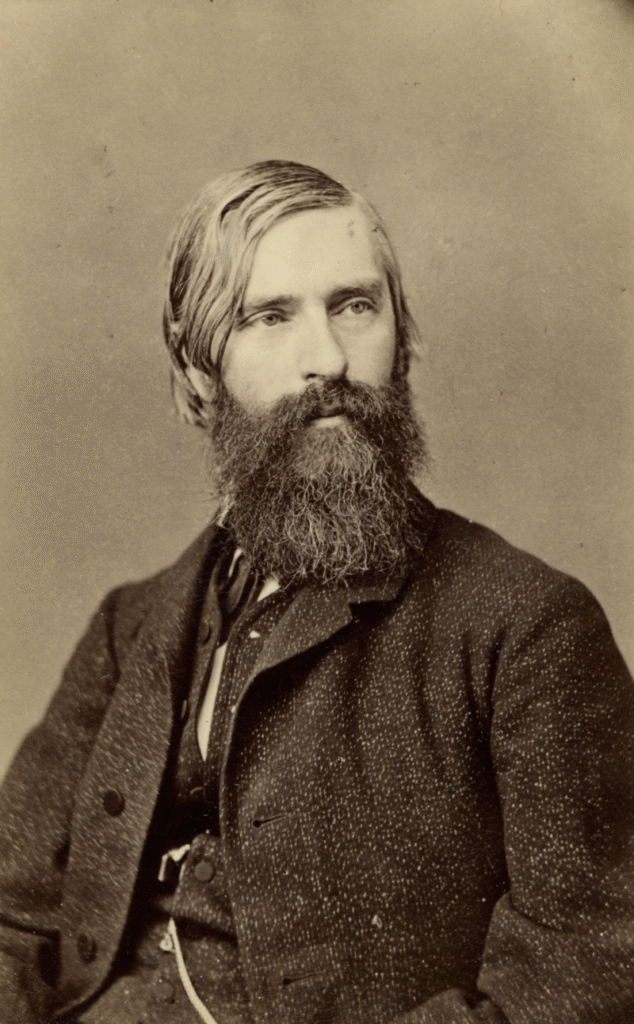
Above: German ophthalmologist Albrecht von Graefe (1828 – 1870)
Heinrich Simon Frenkel was a Swiss physician and neurologist born in Heiden.
He was an early practitioner of neuro-rehabilitation, advocating a regimen of special exercises for patients with neurological disorders.
He studied medicine at the Universities of Heidelberg and Leipzig.

Above: Heidelberg, Baden-Württemberg, Deutschland
In 1884 he earned his degree at Leipzig, afterwards returning to Heiden to practice medicine.

Above: Leipzig, Sachsen (Saxony), Deutschland
At Heiden he rented a house in “Cure Park” and filled it with specialized exercise equipment.
Here he established a center of physical medicine and rehabilitation, where patients with neurological impairments could reinstate dexterity and improve mobility.
Frenkel achieved great success with therapeutic exercises for cerebellar ataxia and ataxia.
This success eventually attracted patients from all parts of Europe, and even America.
In 1896 Frenkel relocated to Berlin, where in 1913 he attained the title of professor.
Here he served as head of the serological department at the clinic of psychiatry and neurology at Charité Hospital.
He was the author of Die Therapie ataktischer Bewegungsstörungen, a treatise on treatment of tabetic ataxia by means of systematic exercise and movement therapy.
His name is associated with “Frenkel’s symptom“, which is defined as lowered muscular tonus in tabetic neurosyphilis.
Frenkel died in Dresden.
His body was brought to Heiden for burial.
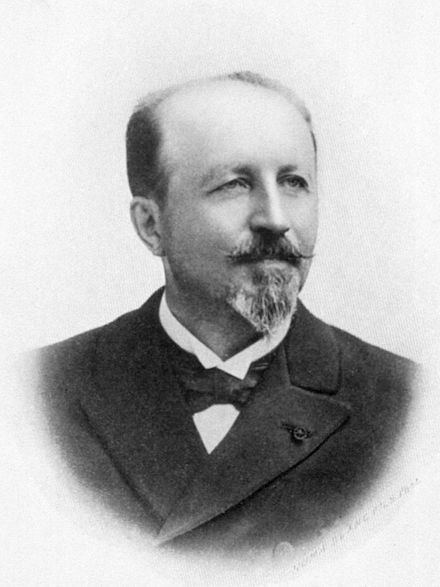
Above: Swiss physician Heinrich Frenkel (1860 – 1931)
From 1870 onwards, the tourist focus shifted to climatic spa treatments.
Heiden’s moderately cool climate with the warm, humid currents of Lake Constance and the mountain air (with an east wind) was ideal for a spa treatment.
The Kurgesellschaft Heiden AG pushed ahead with the development of the infrastructure, which included a spa park, a bandstand and a spa hall with a restaurant, reading room and concert hall.
The construction of the mountain railway from Rorschach to Heiden in 1875 also promoted tourism.
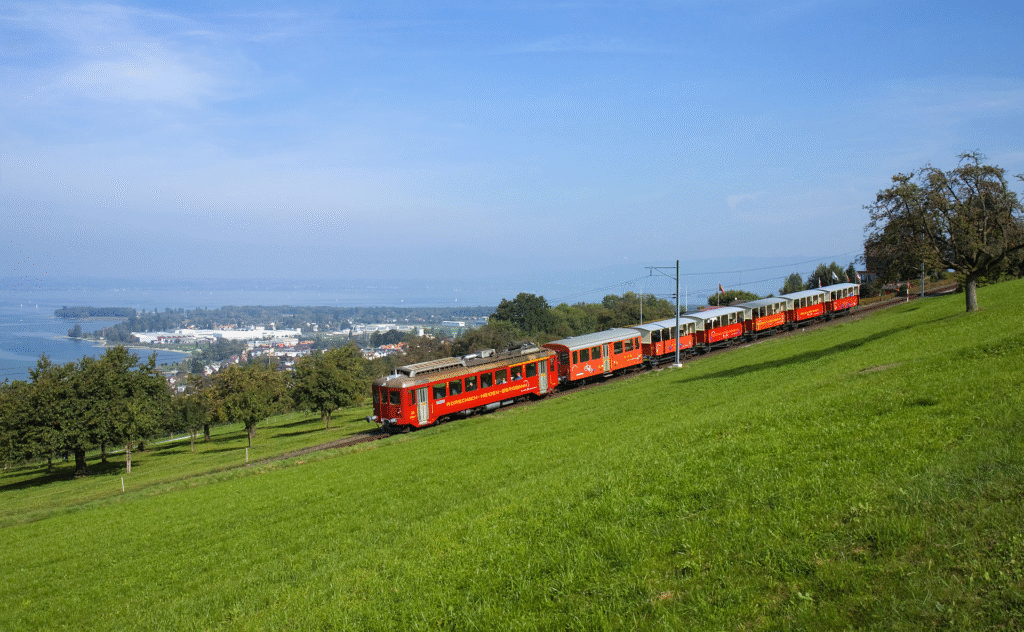
Among the illustrious guests were Karl I, the last Emperor of Austria, and the German Emperor Friedrich III.
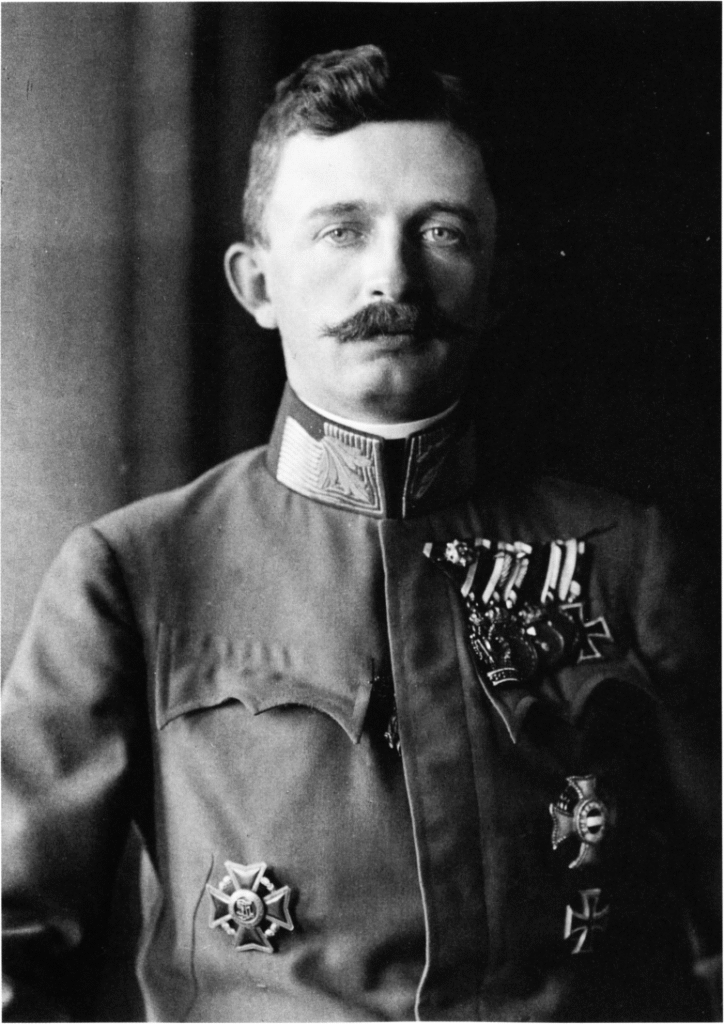
Above: Austrian Emperor Karl I (1887 – 1922)
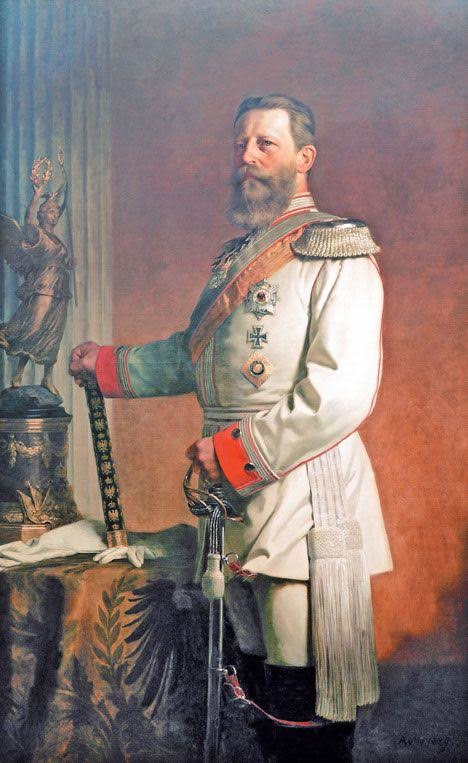
Above: German Kaiser Friedrich III (1831 – 1888)
In 1874, the Vorderland District Hospital, later known as the Heiden Cantonal Hospital, began operations.
Heiden Hospital was the first hospital in the Ausserrhoden region.
As recently as 1859, the average age of women in Heiden was only 24 years, and that of men 25.
Thanks to the many spa guests who came to Heiden, there were many doctors in the village.
This enabled the establishment of a hospital in 1874, which was very progressive at the time.
Henri Dunant, founder of the Red Cross, spent the last years of his life here from 1887 to 1910.
In 1965, the hospital moved into a new building.
The old district hospital initially became a nursing home.
Since 1997 it has housed the Henri Dunant Museum.

Above: Henri Dunant Museum, Heiden
The new hospital was renovated and expanded in the 1990s.
It offered comprehensive basic care, but was closed at the end of 2021 for economic reasons.
To ensure continued medical care in the Vorderland region, the MAiH – Medical Outpatient Clinic in Heiden AG – was founded on 25 January 2022.
Operations began in part of the hospital property on 4 April 2022 and officially opened on 1 July 2025.
The Canton continued to own the properties and wanted to sell them.
In February 2025, the Canton of Appenzell Ausserrhoden signed a letter of intent with the association Appenzellerland über dem Bodensee, whose members include the municipalities of Grub AR, Heiden, Lutzenberg, Reute, Wald, Walzenhausen and Wolfhalden.
The aim was to sell the hospital property, which was causing a loss for the Canton, to the Association after the necessary clarifications had been completed.
A new building was constructed in 1993 to replace the nursing home in the old district hospital.
This regional nursing home, the Heiden Care Center, is jointly run by nine municipalities.
The municipality of Heiden itself operates the Quisisana retirement and nursing home.
The Quisisana retirement community is supported by a cooperative.
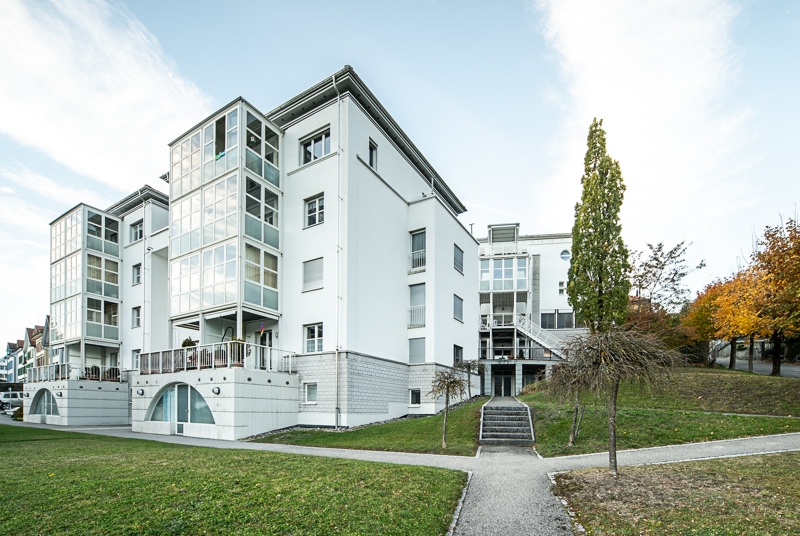
Above: Quisisana, Heiden
The spa town’s heyday ended with the outbreak of the
First World War in 1914.
Heiden’s hotels housed internees from warring states.
Educational and entertainment programs were established for them.
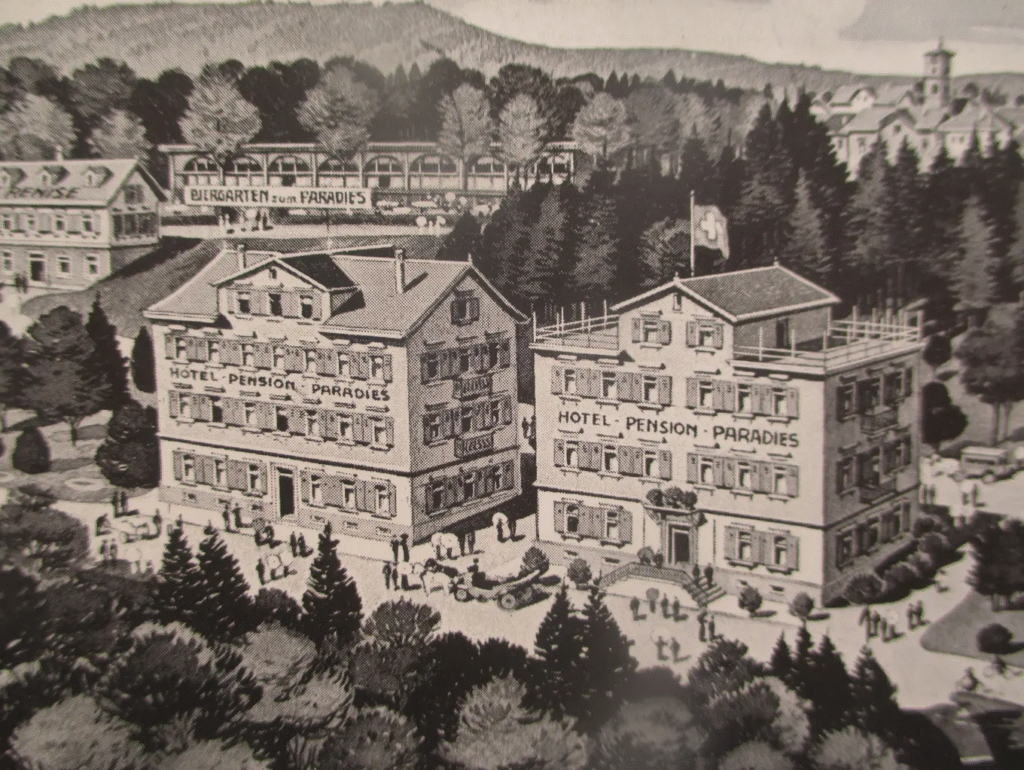
Above: Heiden during the First World War
Tourism picked up again in the interwar period.
There were now also more holiday camps for children and guesthouses for more modest guests.
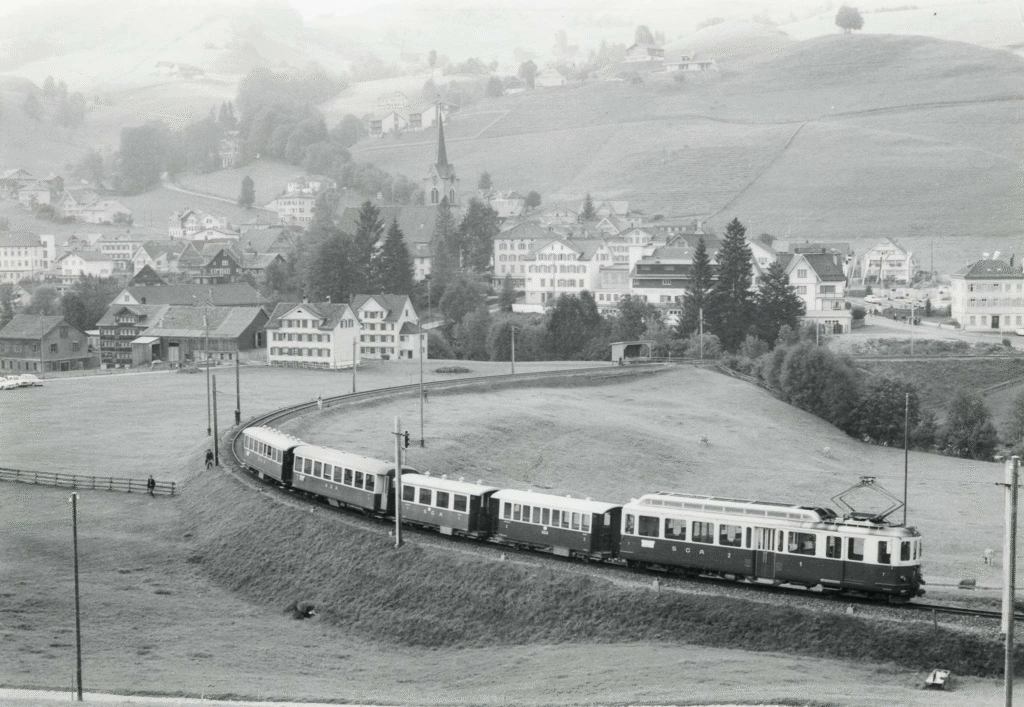
During the Second World War, Jewish refugee children were housed in the Wartheim.
Among them was Karola Siegel, who later became well-known in the USA as a sex therapist under the name Dr. Ruth K. Westheimer.

Above: Wartheim, Heiden
Heiden is a center for sports in the Appenzell Vorderland region.
There are clubs for soccer, handball, floorball, tennis, junior marksmen and volleyball.

Since 2016, the Heiden Gymnastics Club has also been active for all age groups.
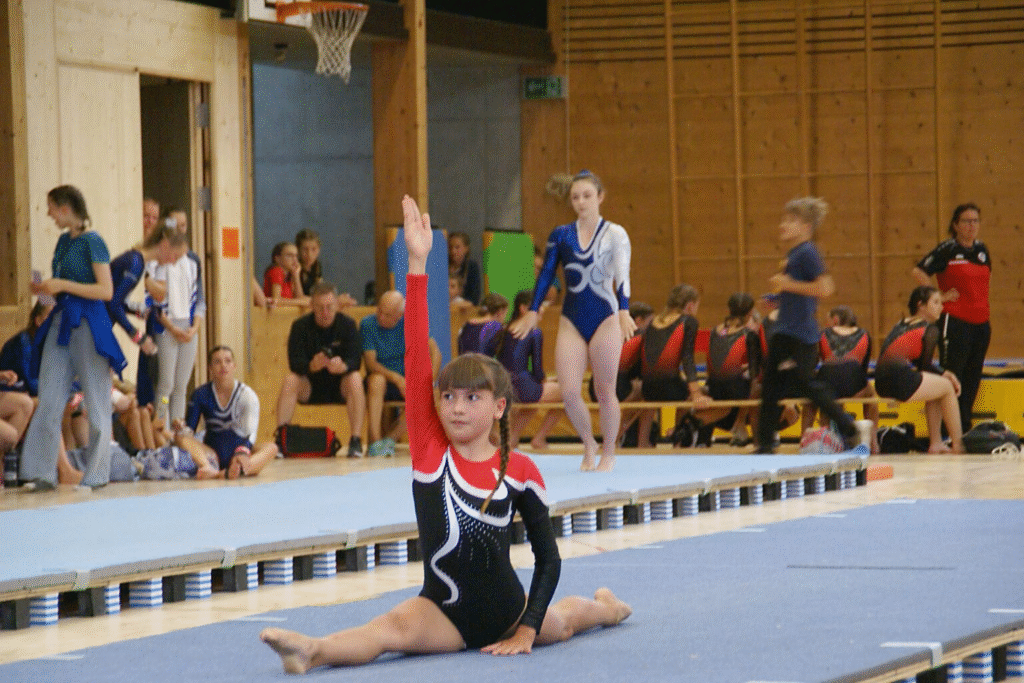
The first men’s team of the BSG Vorderland handball club has been playing in the first division since 2016.
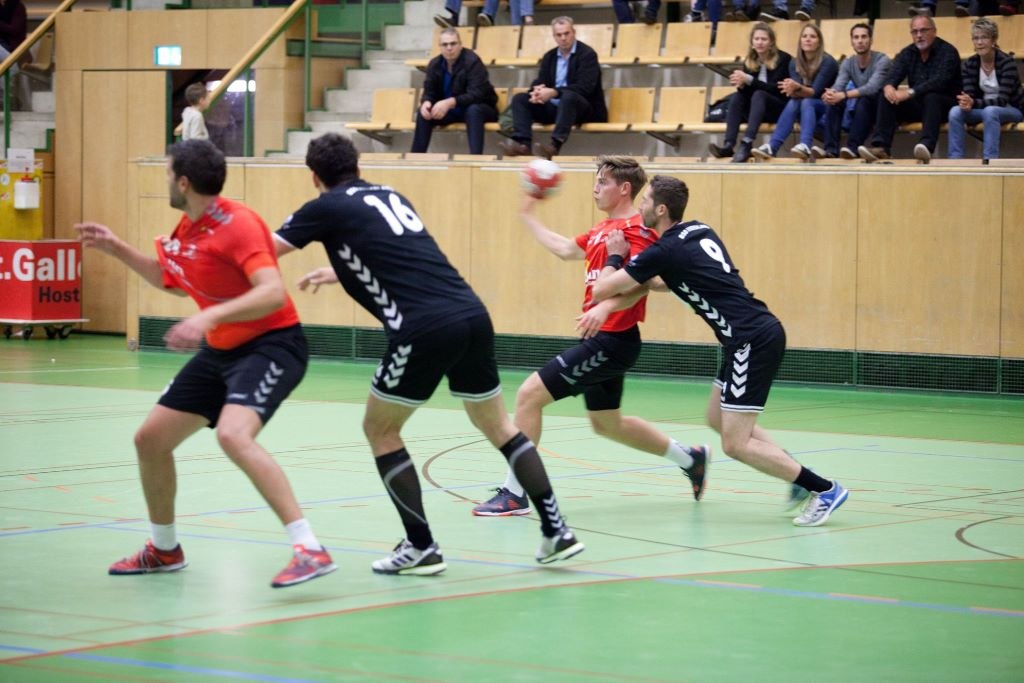
The Heiden Ski Club was founded in 1908 and is still active today.
The ski club and its activities, the ski jump on the Kellenberg inaugurated in 1926 and the construction of the ski lift from Bissau to Bischofsberg (1964) contributed to winter tourism, which, however, never achieved the same importance as summer tourism.
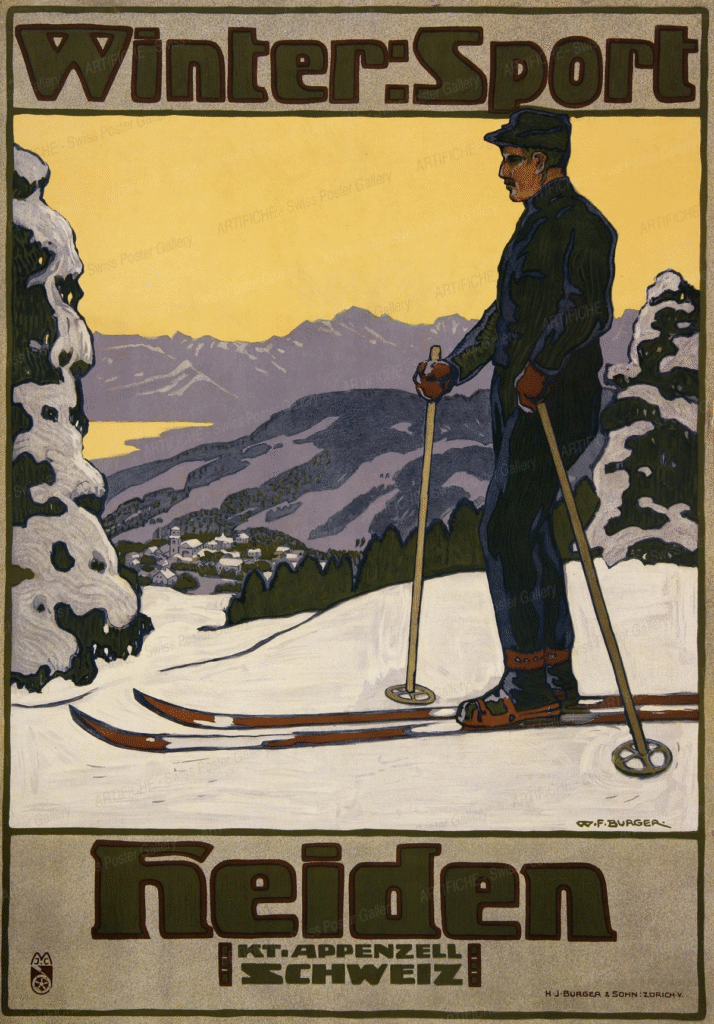
In the lower part of the Municipality, viticulture, which has now disappeared, was added to the widespread grass and dairy farming early on.
Grain was also cultivated in the Municipality in the past.
In 2020, only 3% of the workforce still worked in agriculture and forestry.
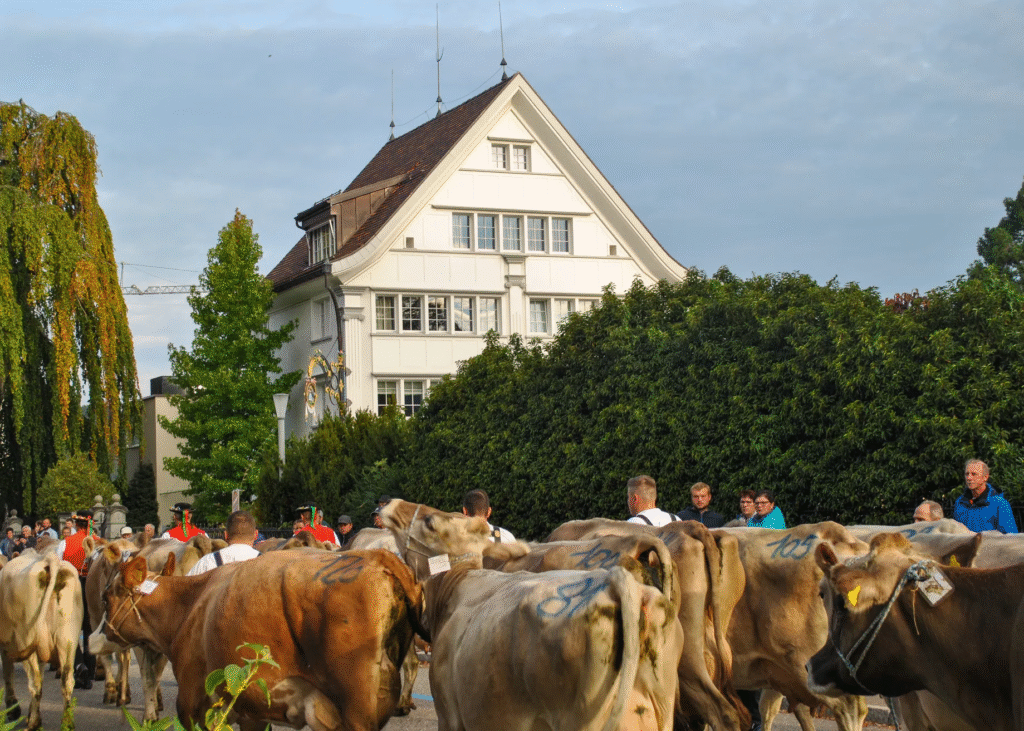
The textile industry is of great importance.
In 1850, 71% of the workforce worked in the textile industry.
The range of businesses in the textile industry is broad, from yarn production and weaving to embroidery and knitting.
Home work in the typical weaving and embroidery workshops was increasingly relocated to factories after 1920.
Silk bag-cloth weaving is of great importance.
Bag-cloths are used in mills to sift flour.
The silk bag-cloth weavers founded their first associations as early as 1872 and thus organized themselves into a union.
In 1931, several bag-cloth factories merged to form Sefar AG, which still has a location in Heiden today.
These high-precision textiles are now also woven from synthetic threads and used for screen printing and in the medical field.
After the end of embroidery in the 1920s, warp-knitting and knitting mills emerged.
They produced stockings and jersey, which were in demand for modern clothing.
Media AG, which produced nylon stockings, which became fashionable in the 1950s, became particularly well-known.
In 1988, 14,000 pairs of sheer hosiery and 8,000 pairs of other items were produced daily in three shifts.
Afterward, management attempted to reorient the company, but this failed.
In 1993, Media AG went bankrupt.
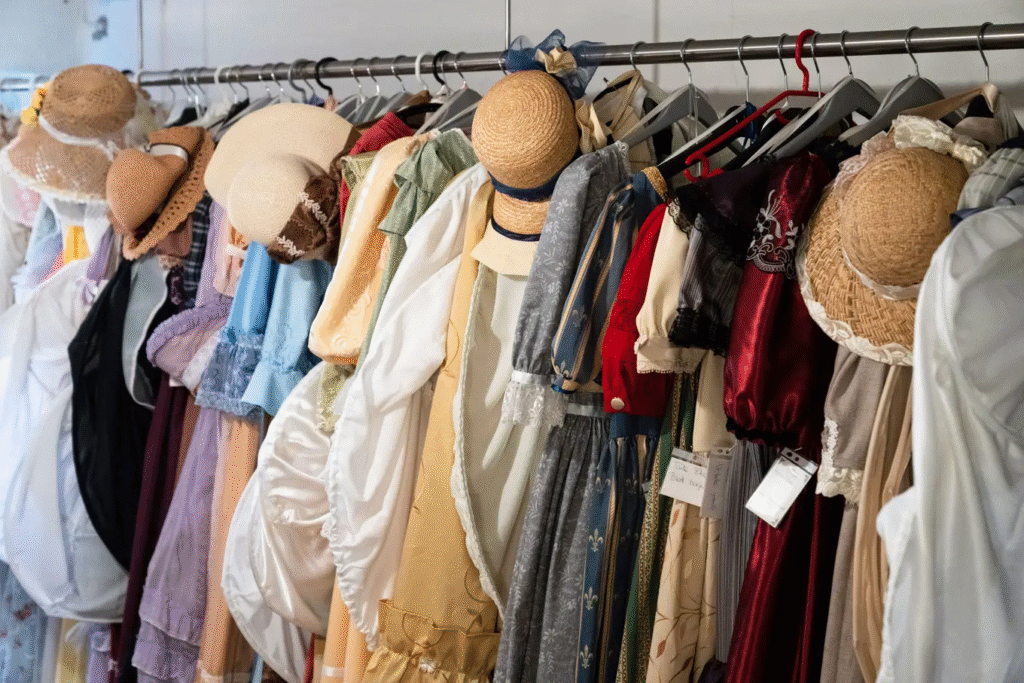
As a central and tourist destination, Heiden boasts a wide variety of craft and service businesses.
However, the retail sector has lost some of its diversity due to changes in shopping habits since 2000.
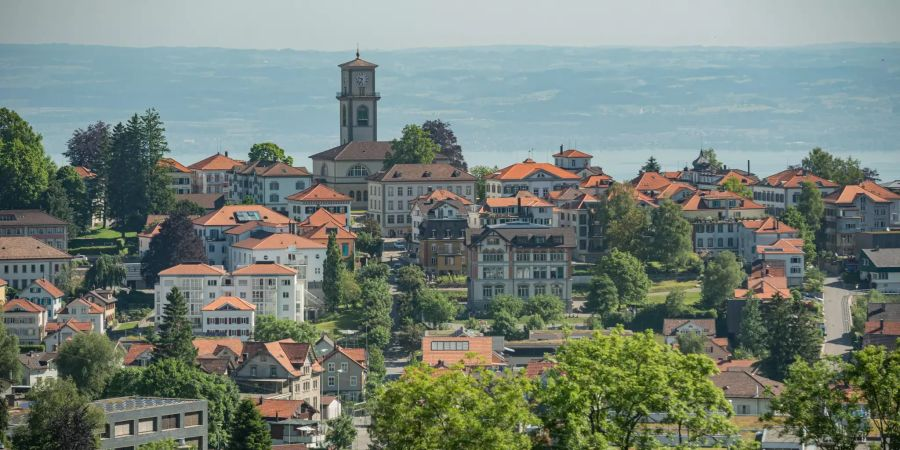
Above: Heiden
Tourism has grown significantly since the village fire of 1838 and
remains an important employer in the region today.
Heiden was and remains known for its whey cures.
The Kurhotel Heiden built in 1974, now called the Hotel Heiden, still offers whey cures.

Above: Hotel Heiden
From 1850 onwards, postal bus services were opened on the improved roads.
The first line ran via Grub to St. Gallen.
Further services were established to Rheineck, Trogen, Oberegg and the Rhine Valley.
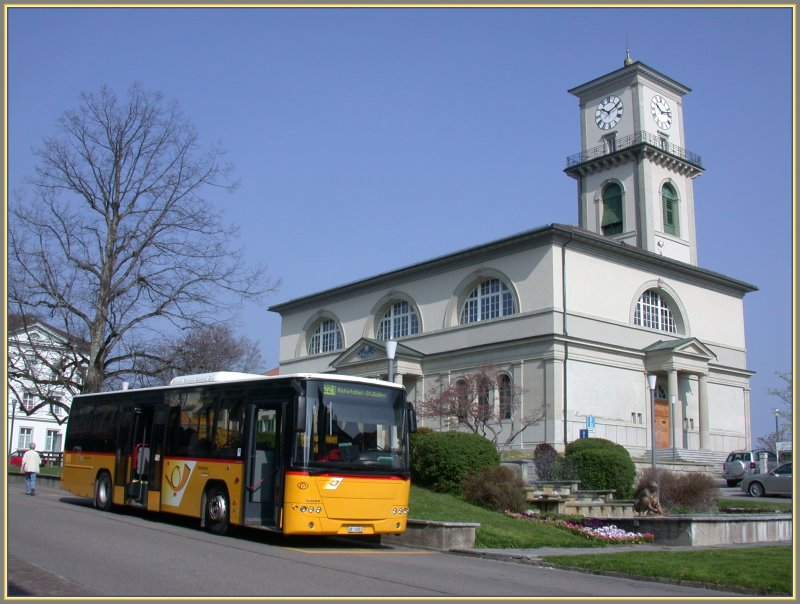
In 1875, the Rorschach-Heiden Mountain Railway (RHB), the only cog railway on Lake Constance, connected Heiden to the Swiss rail network in Rorschach.
Thanks to the opening of the Rorschach-Heiden Mountain Railway in 1875, day tourists also came to Heiden.
The cog railway runs 300 metres up from Lake Constance to Heiden.
Today this railway line belongs to the Appenzeller Railways AG.
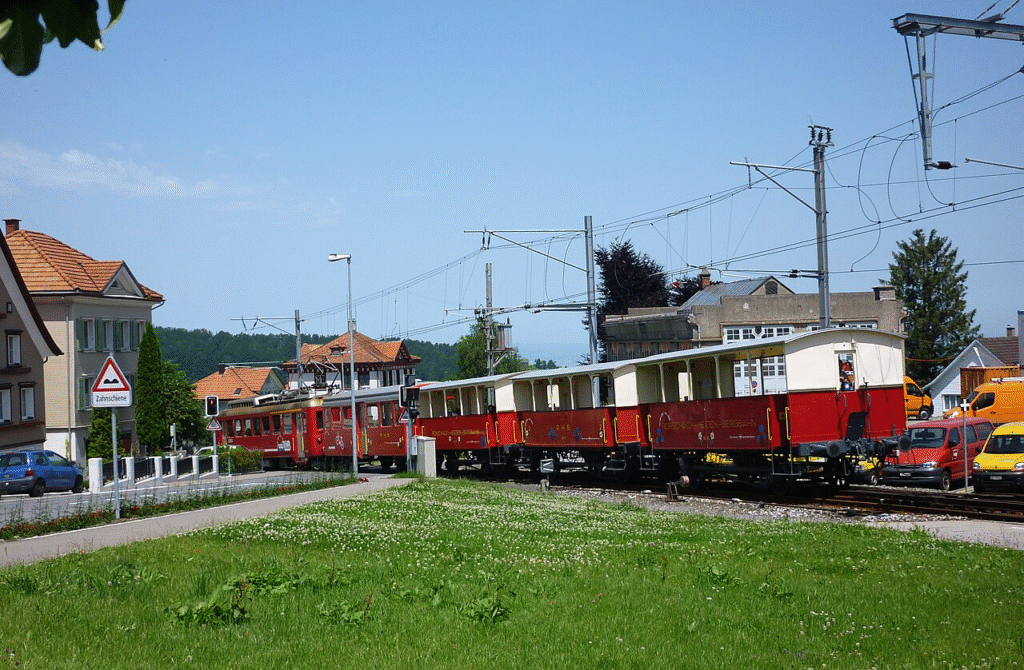
From 1906 onwards, the post bus replaced horse-drawn carriages.
The first post bus connections were introduced in Heiden in 1920.
Today, 11 different routes run from the central village in the Vorderland region to the surrounding villages such as Rheineck, Walzenhausen, St. Margrethen, Heerbrugg, Altstätten, Trogen and Wald.
There are two different post bus routes to St. Gallen.

Above: Logo of Swiss Post
The Heiden Museum, founded in the 1870s, is divided into four parts:
- The Historical Museum documents the history of the municipality of Heiden.
Engravings depict the devastating village fire of 1838.
Like a phoenix rising from the ashes, Heiden subsequently became one of Europe’s most famous spa towns, thanks to whey cures and the world-famous ophthalmologist Albrecht von Graefe (1828-1870).
The Historical Museum also provides insights into the sophisticated local living and household culture.
A collection of painted old cabinets and chests, wooden clocks, Easter scriptures, and a playable house organ from the 1780s complete the impressions.
With the partial renovation in 2012, the town’s history is documented up to the present day.
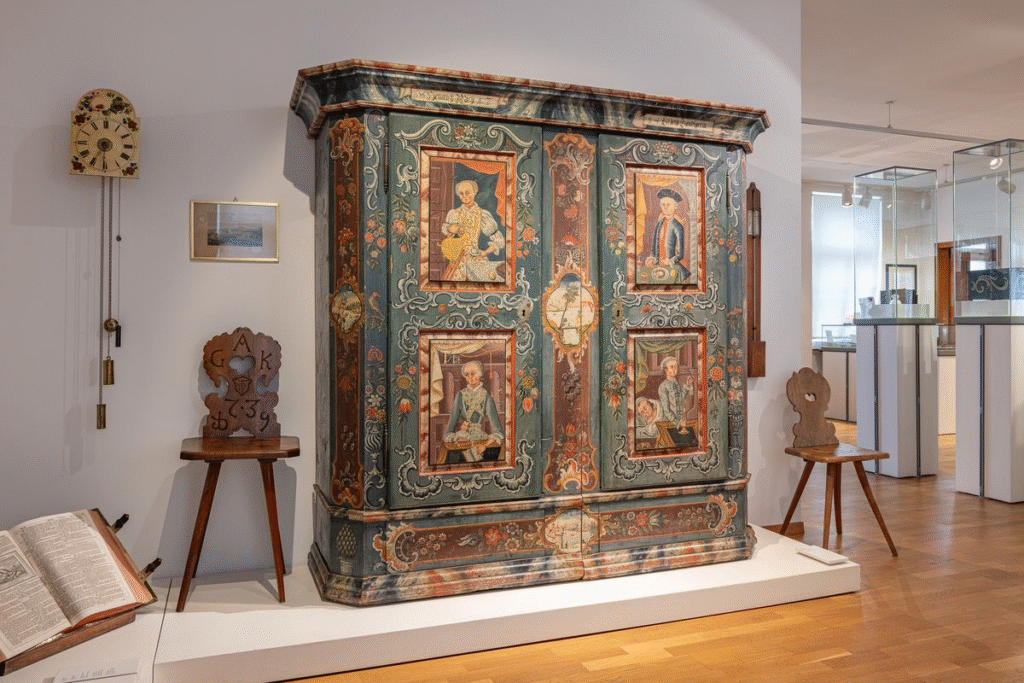
Above: Heiden Museum
- In the Natural History Museum visitors are amazed by the variety of stuffed animals:
Songbirds, swimming birds and birds of prey, Swiss wild animals and predators, butterflies, reptiles, but also animals from distant continents, such as anteaters, jaguars, crocodiles, pythons, sloths, cockatoos, and even the skull of an elephant.

- The Ethnological Collection owes its existence to Emanuel Traugott Zimmermann, a native of Heiden who served as Swiss Consul in Batavia (Djakarta, Java) from 1873 to 1910.
He bequeathed his collection of jewelry, cult objects, hunting equipment, and everyday objects of the native people of Indonesia, along with a variety of exotic animals, to the municipality of Heiden.

Above: Heiden Museum
- The Carl Böckli (Bö) Archive, a special room, the Bö Foundation Heiden presents a comprehensive historical documentation of the famous caricaturist.
On display are original caricatures, which satirize enduring human weaknesses and follies with no expiration date, as well as documents, films, and personal items.
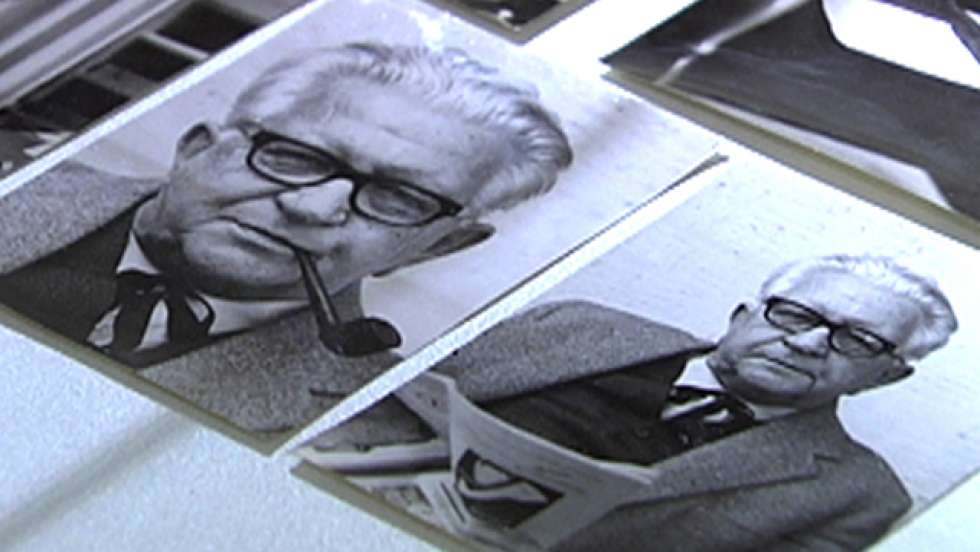
Above: Carl Böckli photos, Heiden Museum
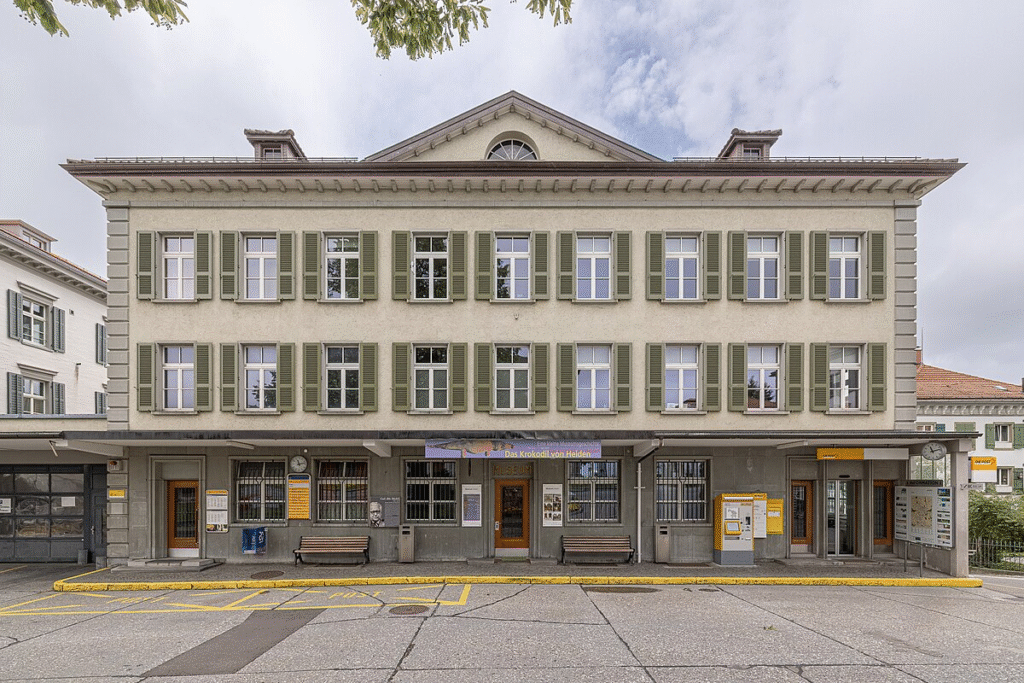
Above: Heiden Museum
The main building of the Henri Dunant Museum is located in the former Heiden District Hospital, where Henri Dunant was a pensioner from 1892 onwards.
The museum is primarily dedicated to the life and work of the founder of the Red Cross, but also organizes exhibitions on various human rights and democratic topics.
In this way, the Museum enables “the discussion of human rights, international law, peace and democracy“.
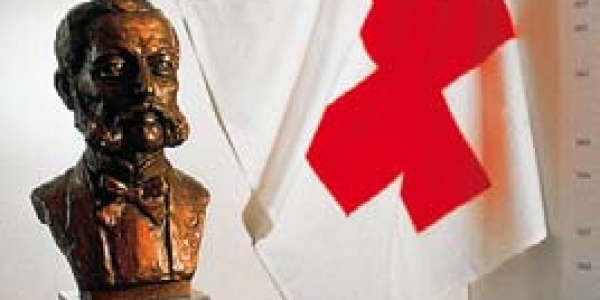
Above: Henri Dunant Museum, Heiden
In addition to the museum building, the nearby Dunant Plaza is used.
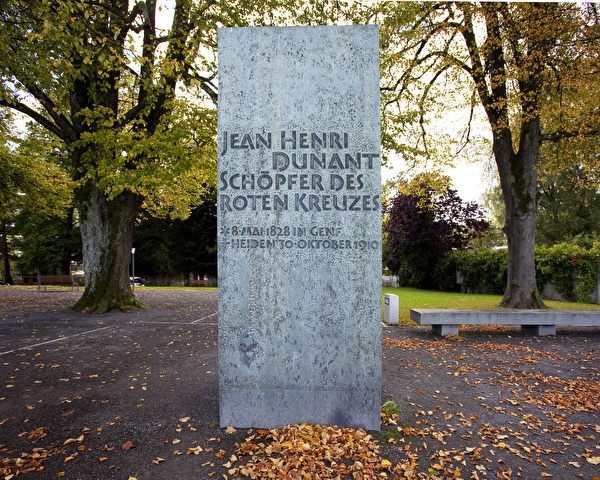
Above: Dunant Platz, Heiden
Since 2010, another part of the Museum’s collection has been one of the world’s five copies of the Nagasaki Peace Bell.
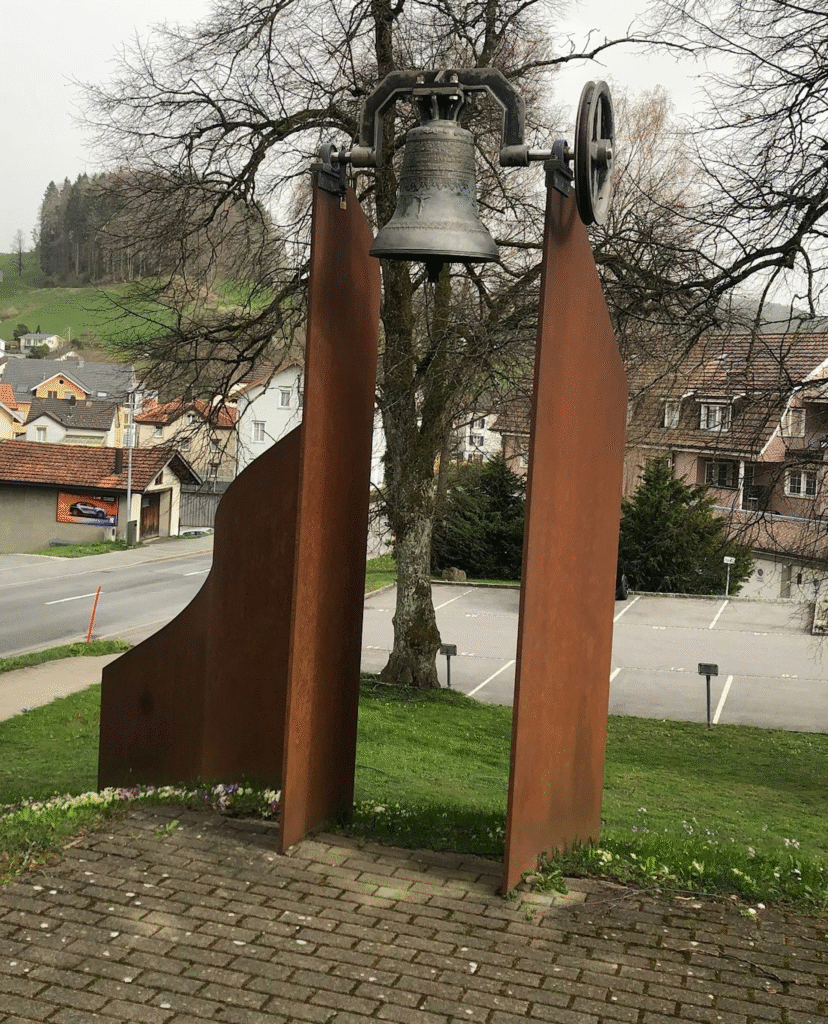
Above: Nagasaki Peace Bell, Heiden
It is rung annually on 9 August to commemorate the victims of the atomic bombing of Nagasaki during World War II.
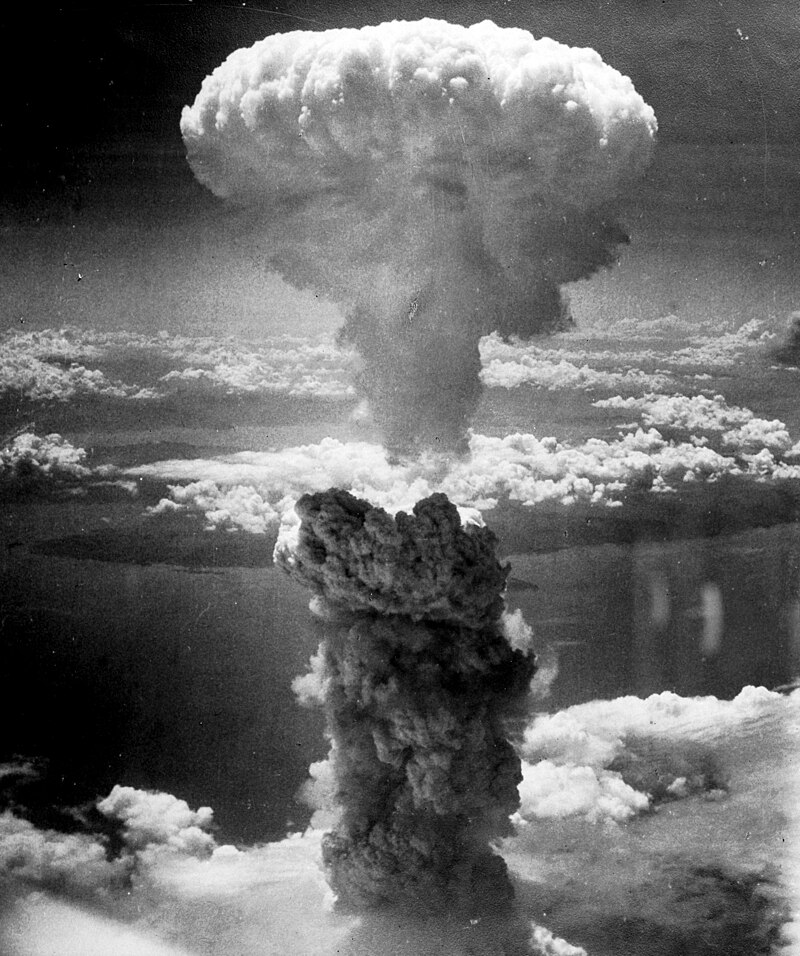
Above: Atomic bomb dropped on Nagasaki, Japan by a Boeing B-29
Superfortress on 9 August 1945.
The mushroom cloud rose 18 km high.
The photograph shows, roughly in a south-southeast direction, the island of Shimoshima and the cities of Ashikita, Minamata, Izumi, and Akune in the southwestern part of the main island of Kyushu.
The Path of Humanity is a themed trail, which leads from Heiden via Wolfhalden to Walzenhausen and is a good 11 kilometers long.
The stations along the trail focus on the humanitarian work of important Swiss people with a connection to the Appenzell Vorderland.
Among them are Carl Lutz, Gertrud Kurz, Carl Böckli and Henri Dunant.
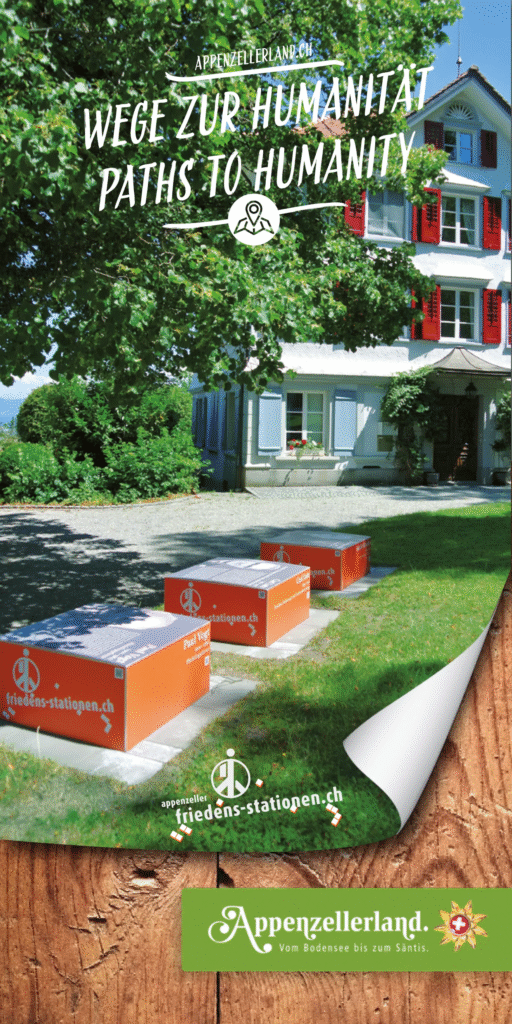
Carl Robert Lutz, a Walzenhausen-born (Heiden Municipality) Swiss diplomat, led the largest rescue of Jews during World War II.
Together with resistance fighters, Carl Lutz managed to save a total of 62,000 Hungarian Jews.
Through his efforts, half of Budapest’s Jewish population survived and was spared deportation to the Nazi extermination camps during the Holocaust.
Lutz was nominated for the Nobel Peace Prize three times.
Yad Vashem awarded him the honorary title of Righteous Among the Nations.

Above: Swiss diplomat Carl Lutz (1895 – 1975)
Gertrud Kurz (née Hohl), called the refugee mother or Mother Kurz, founded and directed a Swiss refugee aid organization.
Gertrud Hohl was the daughter of a textile manufacturer.
She grew up in middle-class circumstances and, after finishing school, attended commercial school in Neuchâtel.
Her parents enabled her to further her education at a women’s education school in Frankfurt am Main to prepare her for the role of housewife.
In 1912, she married Albert Kurz, head of the Progymnasium in Bern.
During the first years of their marriage, she devoted herself almost exclusively to her family.
Between 1913 and 1921, she gave birth to two sons and a daughter.
At the same time, she began to become socially active:
Her house in Bern became a shelter for beggars and vagrants.
In 1930, she had her first contact with the international peace movement of the Crusaders and became an active member.
With the outbreak of the Second World War, the international activities of the Crusaders were interrupted.
However, Gertrud Kurz saw her work on behalf of refugees as an opportunity to continue this peace work.
In 1938, she spontaneously organized a Christmas party for all refugees in the city of Bern.
This gave rise to her own informal aid organization:
Initially, it operated entirely on a private basis.
Gertrud Kurz received refugees in her home and provided information by telephone.
The Crusaders Refugee Aid quickly became a gathering place for all those for whom other aid organizations felt they could not provide assistance.
The main components of the aid work were material aid, immaterial aid – in the form of interventions with the authorities – and public relations work.
At this time, she also published articles about the refugee situation in the print media and in the Crusader newsletter.
More and more volunteers came forward, wanting to support Gertrud Kurz pro bono.
Additional aid organizations were established in Basel, St. Gallen, Zürich, Geneva and Lausanne.
In 1941, the Crusader Refugee Aid was affiliated with the Swiss Central Office for Refugee Aid, thus becoming more closely integrated into the general Swiss aid network, but remained a private aid organization financed through lecture collections and donations.
During the Second World War, Gertrud Kurz received up to 30 letters a day and numerous visits from people seeking help.
This direct confrontation with the fate of persecuted people deeply moved her.
In her relief work, she was primarily guided by religious charity.
She was very open-minded towards all refugees.
It was important to her to offer these people a substitute family, thus creating a place of love and security for them.
She could hardly distance herself from the demands of refugee work and was available almost day and night.
In numerous letters, refugees thanked her for her “generosity, charity and sacrifice“.
She was called “Mother Kurz” by the refugees, as well as by officials and friends.
The following characteristics of her intervention style are noticeable.
Kurz approached the representatives of the authorities directly, argued in a very concrete and practical way and appealed to humanity.
Through the way she described the cases she primarily aimed for an emotional impact.
Gertrud Kurz never sought confrontation with the authorities, but signaled loyalty to the officials and did not question their authority.
In persistent personal discussions she broke the political resistance of Federal Councillor Eduard von Steiger to the acceptance of Jewish refugees.
Through her good contacts with the authorities she gained widespread acceptance and enormous prestige.
She was an important contact for people like Karl Barth, Paul Vogt and Adolf Freudenberg, who also headed aid organizations, and in return she received helpful information.
After the Second World War, Gertrud Kurz remained active in refugee aid.
The Crusader movement changed its name to Christian Peace Service (CFD) in 1947.
In 1972, an organizational reorientation took place.
In 1981, feminist peace work was firmly anchored within the organization.
In 1997, the CFD adopted its first feminist mission statement.
In 2023, the name was changed to Frieda – the Feminist Peace Organization to better reflect the organization’s identity while maintaining its content and focus.
Two years after Gertrud Kurz’s death, members of her circle of friends and prominent figures, including Alfred A. Häsler and theology professor Hans Ruh, founded a foundation to continue her ideas.
Today’s Gertrud Kurz Foundation strives to implement the spirit and values of Gertrud Kurz in a contemporary way.
It supports niche projects that increase opportunities for migrants to participate through donations, publishes bi-annual news bulletins, and promotes critical debate on Swiss migration and asylum policy.
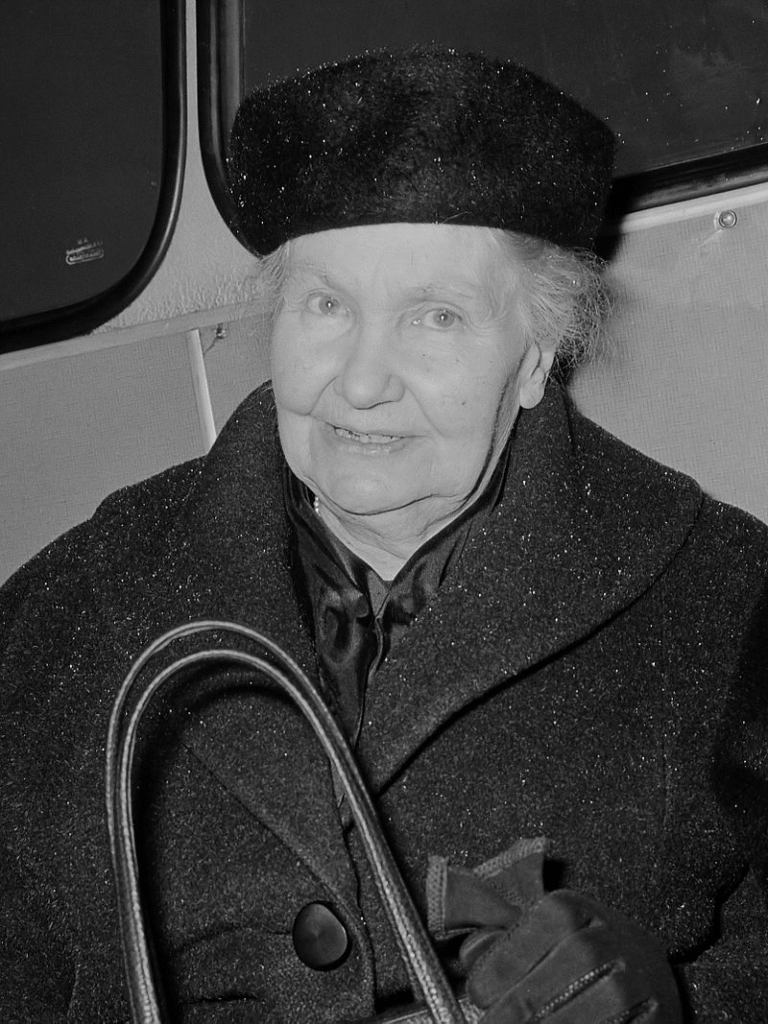
Above: Swiss humanitarian Gertrud Kurz (1890 – 1972)
The Path of Humanity is maintained by an association that also provides materials about the personalities on its website.
The Path of Humanity warmly invites you on a journey of discovery through the Appenzell Hinterland.
Learn about the humanitarian legacies of notable Swiss men and women who, throughout their lives, worked in their own ways for humanity, solidarity and peace.
The stations — orange cubes — are located at places related to these individuals.
The QR codes on the cubes provide many more details.
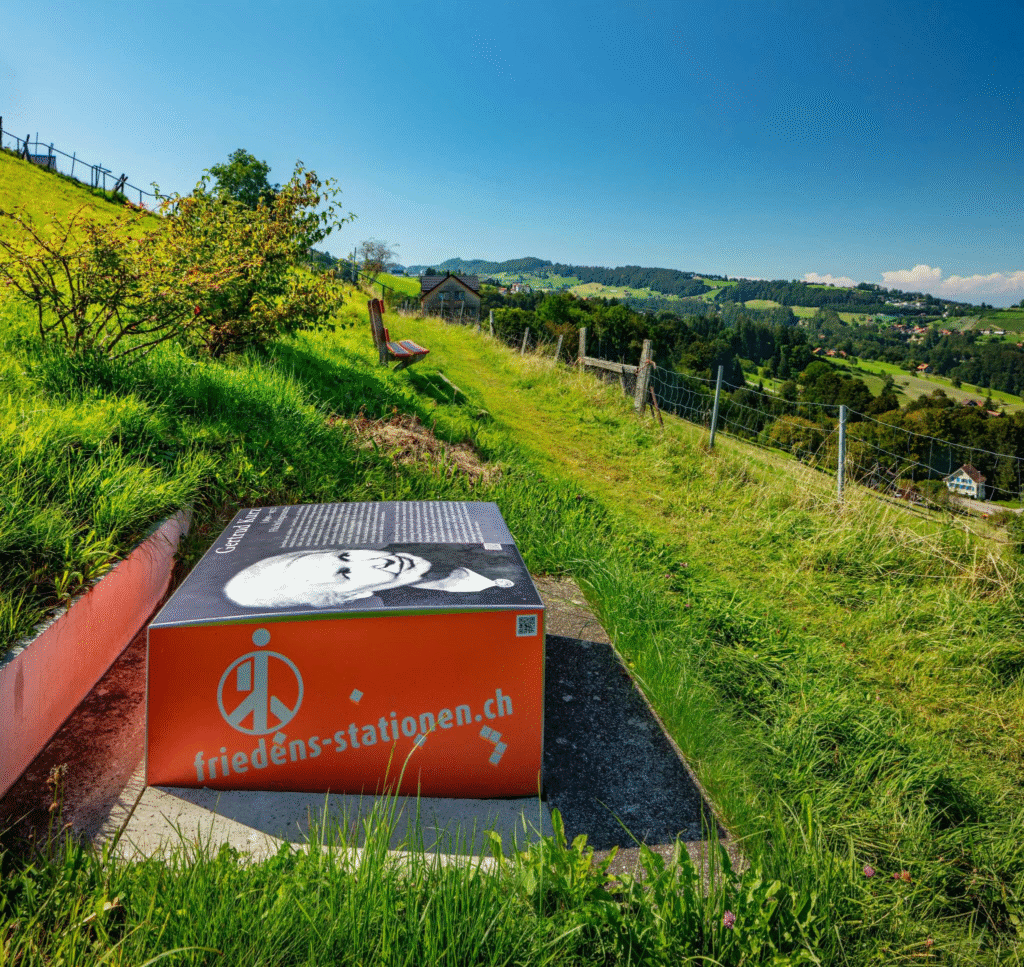
The Trail is well signposted and has connections to public transport.
In the church square in Heiden and halfway along the trail at a beautiful vantage point in Wolfhalden, you will encounter the Peace Tables.
These art installations invite you to rest or, as artist Hansruedi Fricker suggested, to engage in private peace talks.
The realization of the Peace Stations was made possible thanks to support from foundations and municipalities.
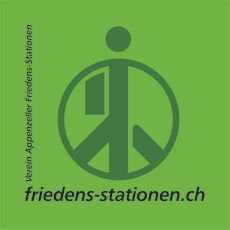
There were once four reading societies in Heiden:
Dorf, Brunnen, Untern and Bissau.
Their founding dates back to the second half of the 18th century.
The reading societies provided general education through lectures and a circulating reading folder.
At their meetings, they also discussed issues of the common good and introduced them into the political process.
The reading societies were replaced by political parties in the mid-20th century.
Only the Bissau Reading Society, founded in 1860, still exists today.
It has three members on Heiden’s municipal council.
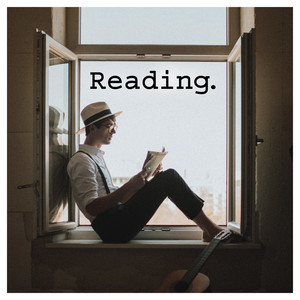
The Heiden/Grub Community Library was opened in 1997 in the former work school building.
It is supported by an association.
Its media collection includes printed books and magazines, as well as audiobooks, CDs, DVDs, and games – a total of over 10,000 media (as of 2021).
The Heiden/Grub Community Library is also a member of the Digital Library of Eastern Switzerland.
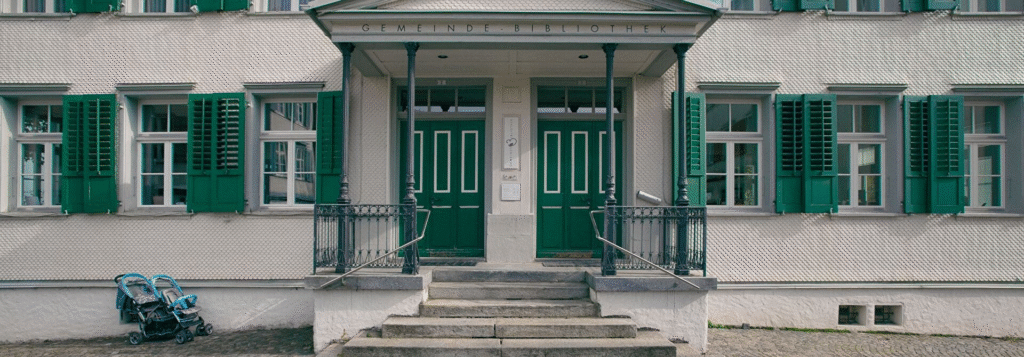
Above: Bibliothek Heiden
The writer Helen Meier worked as a trained teacher in Heiden.
Helen Meier’s father was a village schoolteacher.
She attended teacher training college in Rorschach and subsequently worked as a primary school teacher.
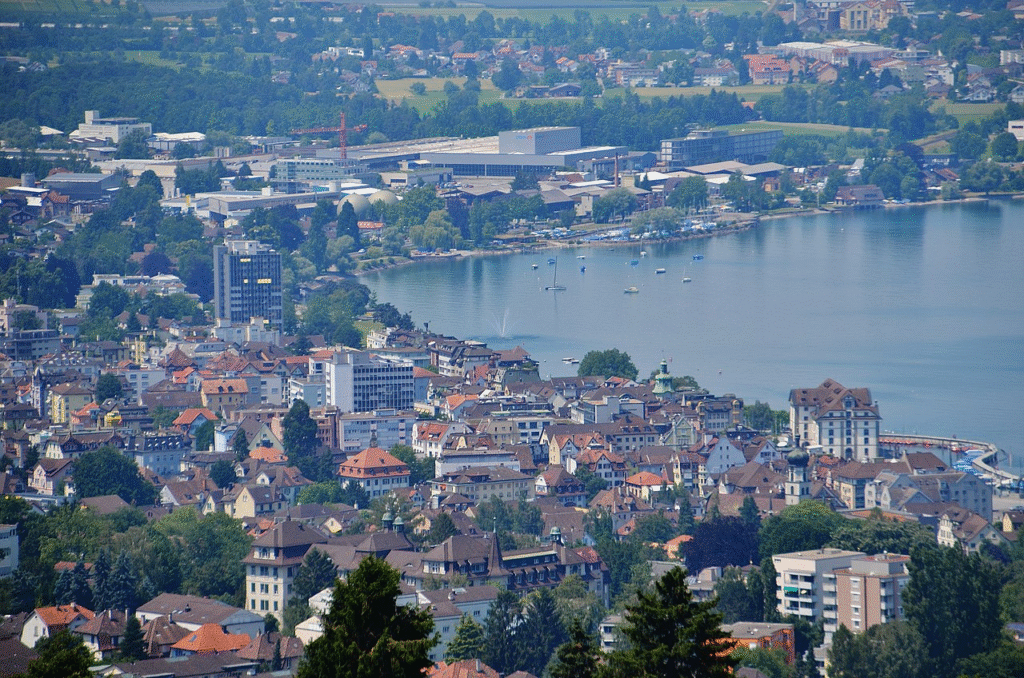
Above: Rorschach, Canton St. Gallen, Schweiz
After working in England, France, and Italy, she studied languages and education at the University of Fribourg.

She worked in refugee aid for the Swiss Red Cross and was a special education teacher in Heiden.

For a long time, she wrote only for herself until she was discovered by the publisher Egon Ammann.
At age 55, she participated in the Ingeborg Bachmann Literary Festival in Klagenfurt in 1984, caused a sensation, and won the Ernst Willner Scholarship for her novella Lichtempfindlich (Light Sensitive).
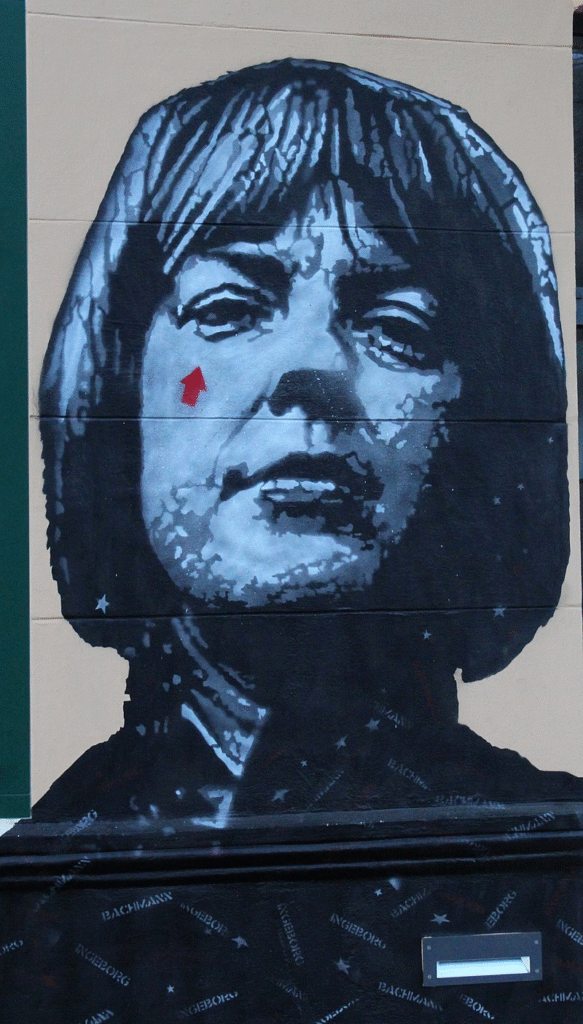
Above: Graffiti image of Austrian author Ingeborg Bachmann (1926 – 1973), Musilhaus, Klagenfurt, Österreich (Austria)
In addition to a ten-volume short story and three novels, Helen Meier also wrote two plays.
Her stories mostly deal with people suffering from failed lives and unrequited love.
Meier lived as a freelance writer and died in Trogen in 2021 at the age of 91.
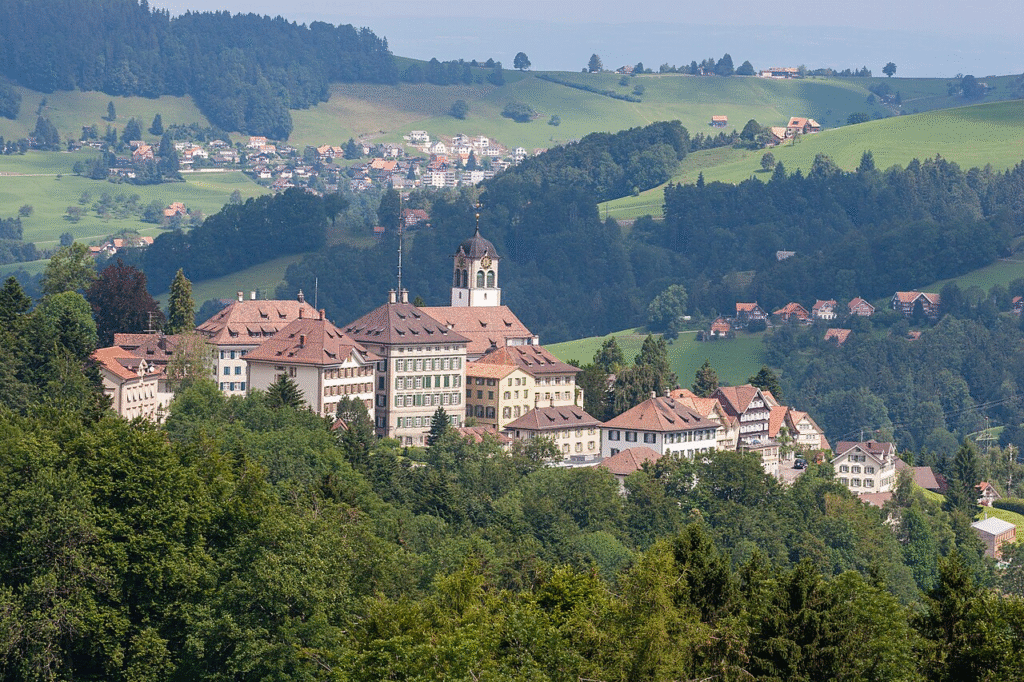
Above: Trogen, Canton Appenzell Ausserrhoden, Schweiz

Above: Swiss writer Helen Meier (1929 – 2021)
Ruedi Rohner was a primary school teacher in Heiden and a collector of Appenzell jokes.
For many years, he oversaw the joke page in the Häädler Calendar.
He was a co-initiator of the Witzweg (Joke Trail) from Heiden to Walzenhausen.
After his retirement, he began writing down episodes from Heiden’s history.
They appeared in a total of 22 volumes of A Life in Heiden.
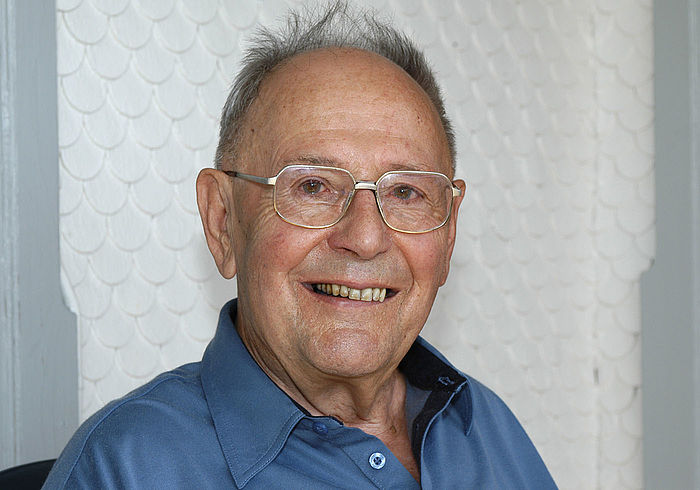
Above: Swiss folklorist Ruedi Rohner (1923 – 2009)
The Witzweg leads from Heiden via Wolfhalden to Walzenhausen.
It was initiated by Ruedi Rohner and Peter Eggenberger and opened in 1993.
Along the 8.5-kilometer-long hiking trail, panels with jokes are displayed.
The Appenzell joke is included in the list of Living Traditions of Switzerland.
Schmid who through his portrait paintings made people see others in ways that only canvas can capture.
Rohnen’s Witzweg is a trail carved into the pastoral quiet of Appenzell, not by solemn feet but by smiling ones.
A path that punctuates its beauty not with silence, but with laughter.
In a world that carries too much weight, the idea of a joke trail might seem trivial — even frivolous.
But walk it, and something quietly profound begins to reveal itself.
Laughter, like walking, is one of the oldest medicines.
It lightens the soul the way footsteps lighten the earth.
On the Witzweg, you are invited to chuckle between cowbells.
To smirk under snow-capped peaks.
To giggle while the wind plays with your coat.
It reminds you that joy is not separate from nature, but an essential part of it.
Not all wisdom wears a furrowed brow.
Sometimes, it comes with a crooked smile, a belly laugh, a pun groaned at but remembered.
Humor is a form of resilience — a rebellion of joy against the heaviness of the world.
Thinking while walking — it is one of the oldest and most sacred acts of human contemplation.
The body in motion frees the mind from its cage.
The feet become metronomes to memory, rhythm to reason, and the slow stretch of earth beneath gives space to thought above.
It’s no coincidence that so many of history’s greatest minds — Rousseau, Thoreau, Nietzsche, Woolf — were walkers.
When we walk, we shed the rigidity of desks, deadlines and distractions.
We step away from the screens and the noise and remember that we are animals with soles meant for soil.
Walking invites a more primal wisdom — the kind not found in books, but in breath, in birdsong, in the crunch of gravel and the curve of a path.
The terrain becomes metaphor.
A hill, a burden.
A breeze, a blessing.
The branches overhead, reminders that thought, like growth, can be messy — tangents sprouting in unexpected directions.
But as you keep moving forward, even meandering has a destination.
When walking, the mind doesn’t force ideas.
It lets them come.
Thoughts drift in like clouds — some passing quickly, others lingering, swelling with storm or sunlight. Insights arrive unannounced:
A word remembered, a line for a poem, the answer to a problem you weren’t trying to solve.
There is humility in walking too.
The world is so much bigger than us.
And yet, we belong to it — step by step, breath by breath.
And here’s something beautiful:
When we walk, we are both inside and outside ourselves.
We are the observer and the participant, the narrator and the hero.
To walk is to tell a story with your body, and to listen to a quieter one written in wind and stone.
Humor isn’t the opposite of reflection — it’s often the doorway to it.
A well-placed joke doesn’t just make us laugh.
It disarms us.
It bypasses the defenses we erect against pain, against truth, against vulnerability.
In that split second of surprise — of absurdity — we’re more open.
And in that openness, reflection sneaks in like a soft-spoken sage.
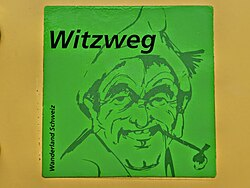
Carl Böckli, also known as “Bö“, was a caricaturist who lived in Heiden.
Böckli was also a poet and journalist.
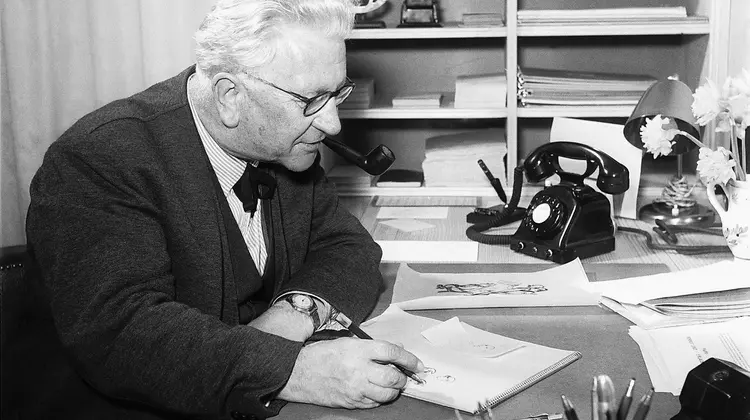
Above: Carl Böckli (1889 – 1970)
His caricatures, with accompanying verses and prose texts, were published in the magazine Nebelspalter.
Bö served as editor-in-chief of this magazine from 1927 to 1962.

Above: Logo of Nebelspalter (fog splitter)
Böckli took a decisive stance against National Socialism, Fascism and Communism, which is clearly expressed in the title of his book, Against Red and Brown Fists.
His trademark was a small, plump, somewhat naive-looking Swiss man wearing a herdsman’s cap, who commented on the passage of time with wit.
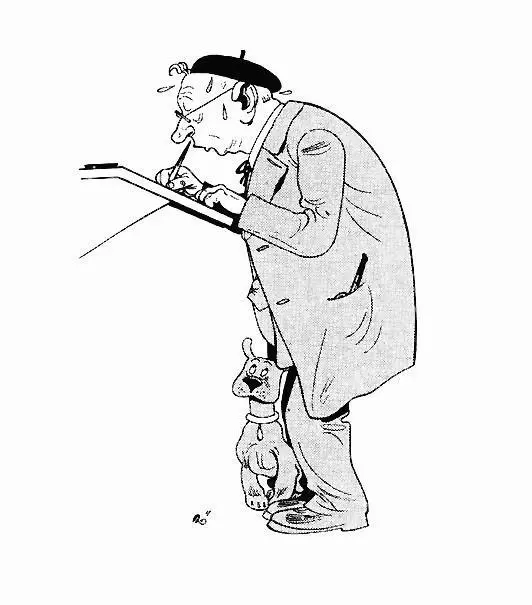
When Böckli retired as picture editor of the Nebelspalter in 1962, he was no longer able to write or draw due to arthritic problems in his right hand.
So he invented two new characters, the idyllic Elsa von Grindelstein and the modernist Dadasius Lapidar.
From then on, he typed the comic poetry and nonsense poems of these two “authors” using the two-finger system.
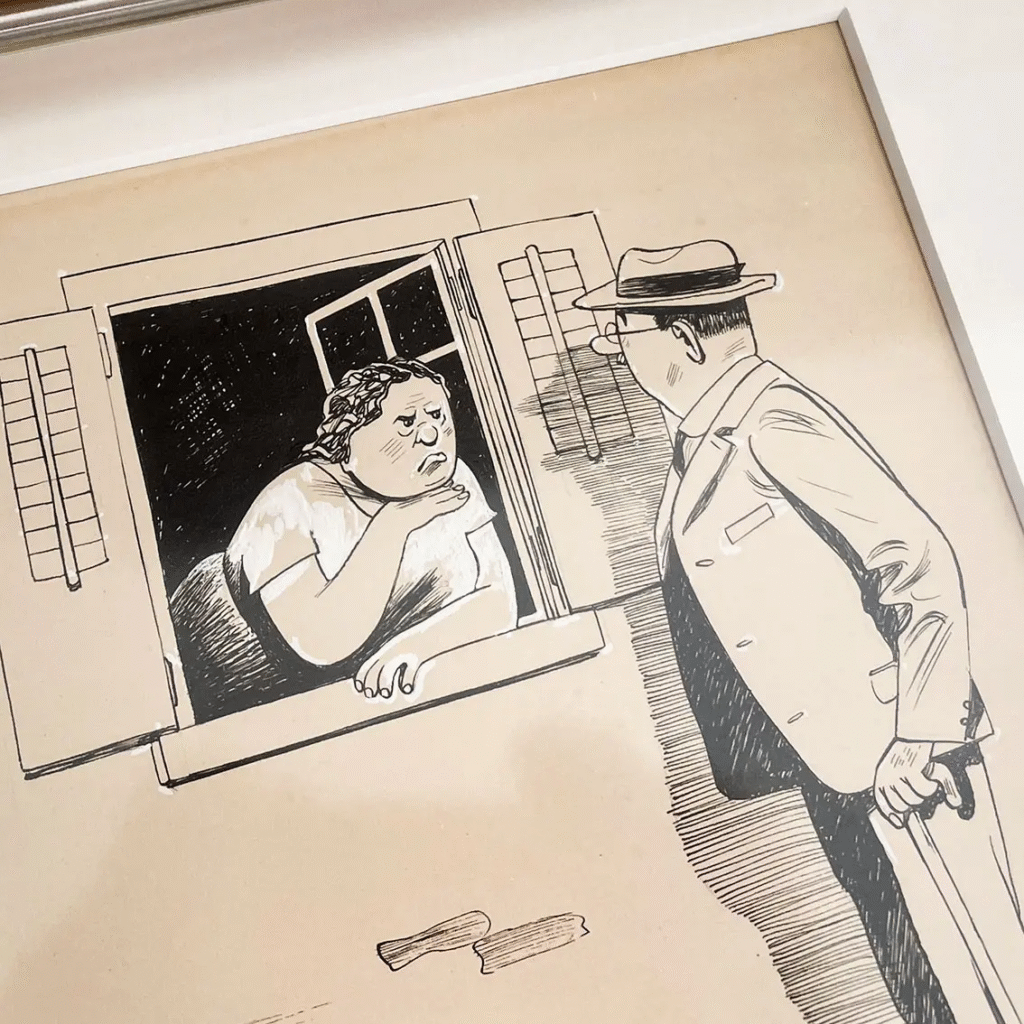
Carl Böckli lived in Heiden from 1936 to 1970 and died in a traffic accident.
In 1966, the University of Zürich awarded him an honorary doctorate to “the courageous confessor and patriot in dark times“.
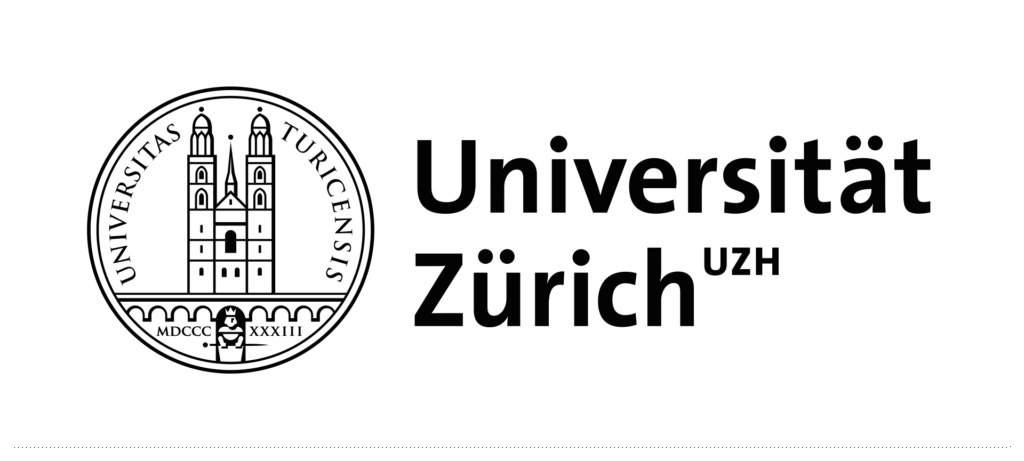
His hometown of Waltalingen named him an honorary citizen.

Above: Waltalingen, Canton Zürich, Schweiz
The Bö Foundation was established in 2010 to mark the 40th anniversary of Carl Böckli’s death.

Another artist from Heiden was Emil Schmid (1891 – 1978).
Emil Schmid, the son of a Heiden confectioner, recognized his talent for drawing and art early on.
To obtain a professional qualification, he studied at the St. Gallen Trade Museum from 1907 to 1911, where he trained as an embroidery artist.
He then went to Munich to study at a private drawing institute and was accepted into the art academy after one year.
However, his teachers “did not convince” him.
He remained “strangely untouched” by Impressionism.
At the beginning of the First World War, Schmid returned to his homeland and opened a studio.
After initial difficulties, he gained a reputation as an excellent portrait painter after the end of the war, depicting the Landammänner (canton deputies) of Ausserrhoden and many of the Thurgau government Presidents.
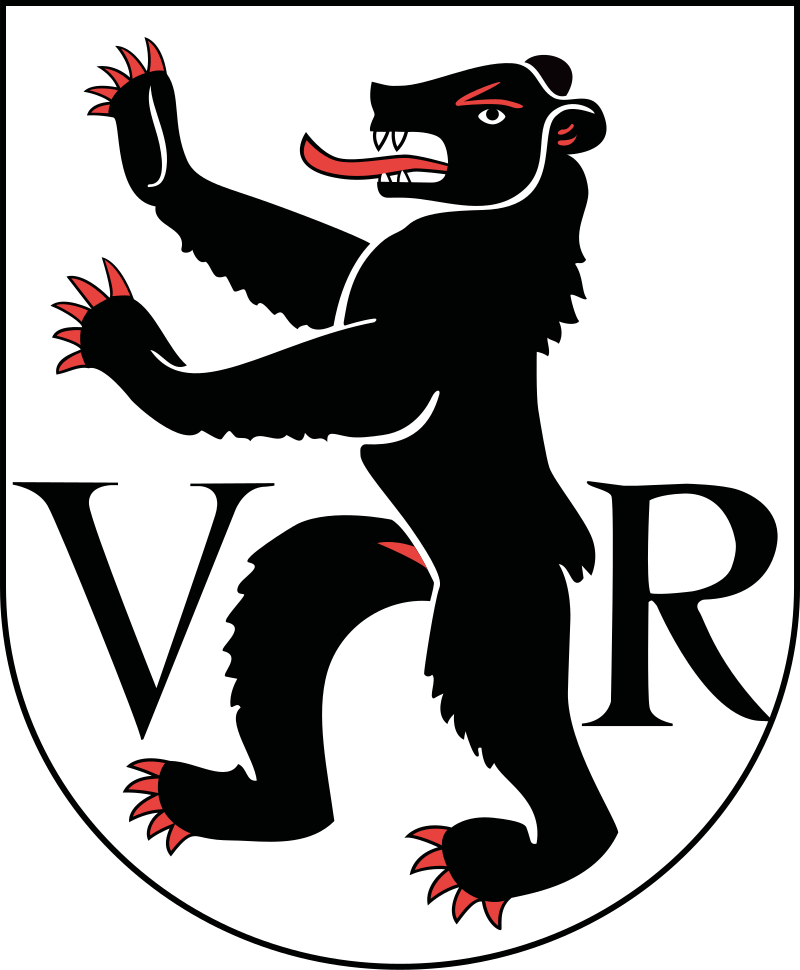
Above: Coat of arms of Canton Appenzell Ausserrhoden
In 1916 he exhibited at the Kunsthaus Zürich and the same year at the Schweizer Kunstverein.
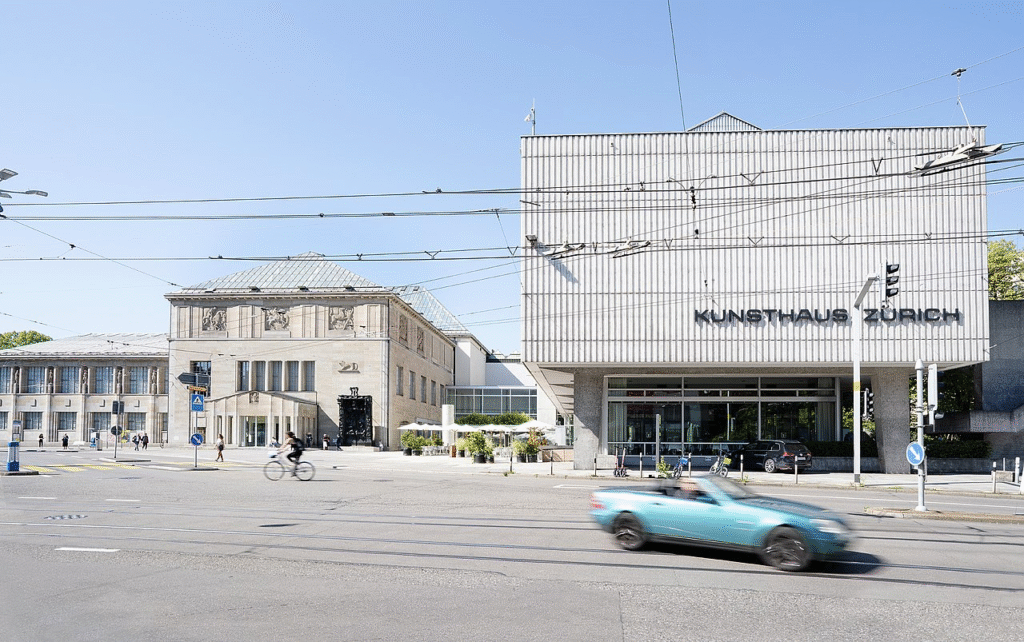
In 1920 he acquired the house Morgenroth from the Berlin singing teacher Breiderhoff, which he lived in until his death and into which he added his studio in 1938.
In addition to portraits, including numerous pictures of children, he created a large body of work as a landscape painter and countless etchings of his homeland.
He had his studio in the community and worked as an artist until his death.
He was known for his finesse and precision.
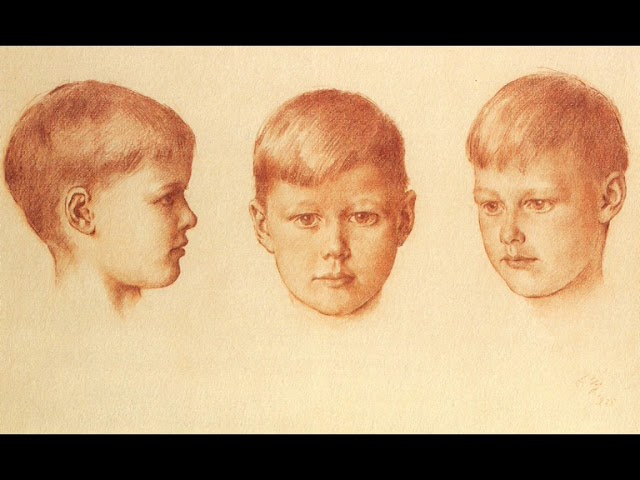
Music societies played a major role in Heiden in the 19th century:
In 1867, there was a music society, four men’s choirs, a mixed choir, and a youth choir.
In 2022, there was also a youth music group, a brass band, a men’s choir, and a traditional costume choir.
A gospel choir and an accordion orchestra were recently added.
Classical concerts in the summer months are a reminiscence of the heyday of spa tourism.
For example, the concert series Music in Heiden brought top-class classical music to the village every summer from 1977 to 1987.
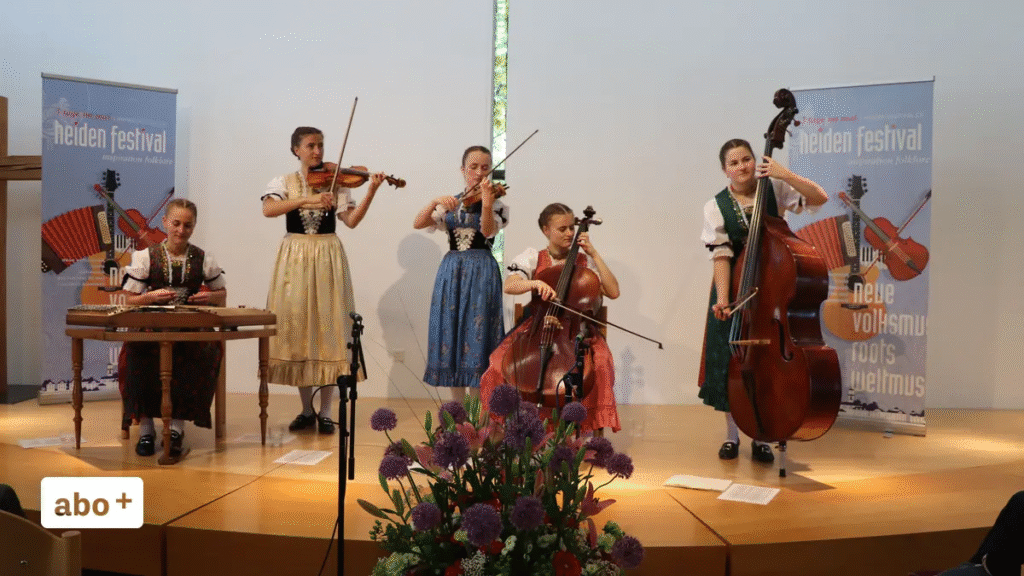
Herzogenberg Days from 2001 to 2017 featured works by the composer Heinrich von Herzogenberg.
He spent the summer months at Haus Abendroth in Heiden from 1891 to 1899.
Heinrich Picot de Peccaduc, Freiherr von Herzogenberg (1843 – 1900) was an Austrian composer and conductor descended from a French aristocratic family.
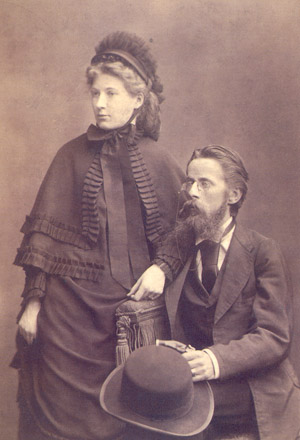
Above: Elisabeth and Heinrich von Herzogenberg
He was born in Graz.
He was educated at a Jesuit school in Feldkirch and also in Munich, Dresden and Graz before studying law, philosophy and political science at the University of Vienna.
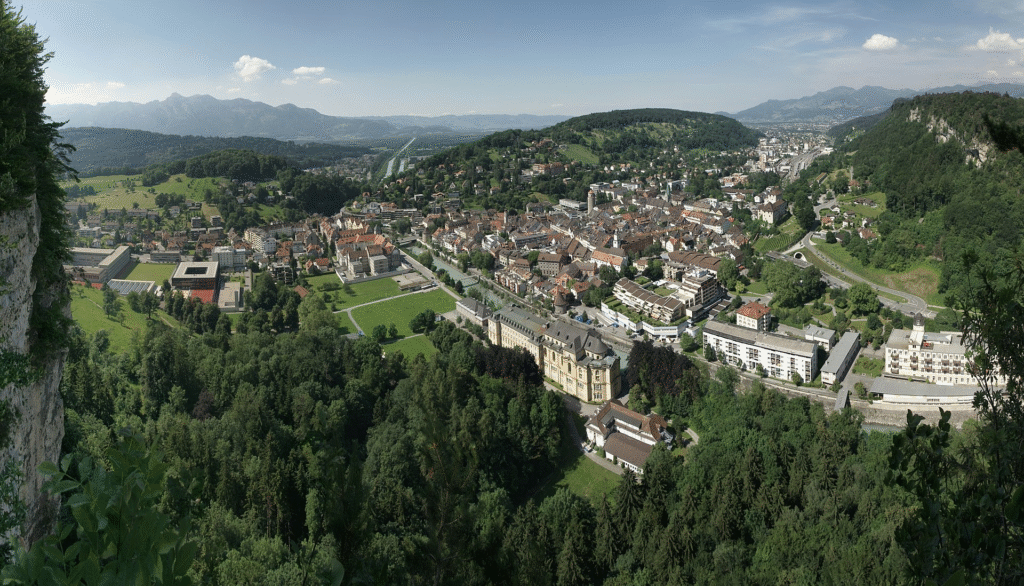
Above: Feldkirch, Vorarlberg, Österreich
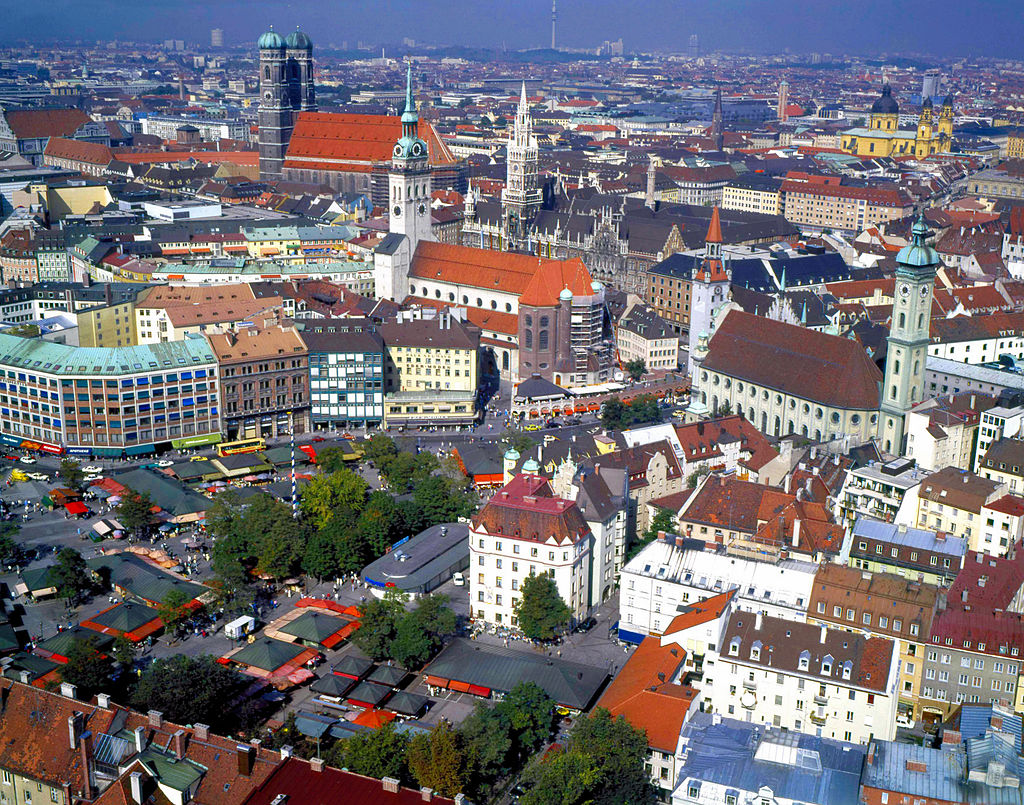
Above: München (Munich), Bayern (Bavaria), Deutschland (Germany)
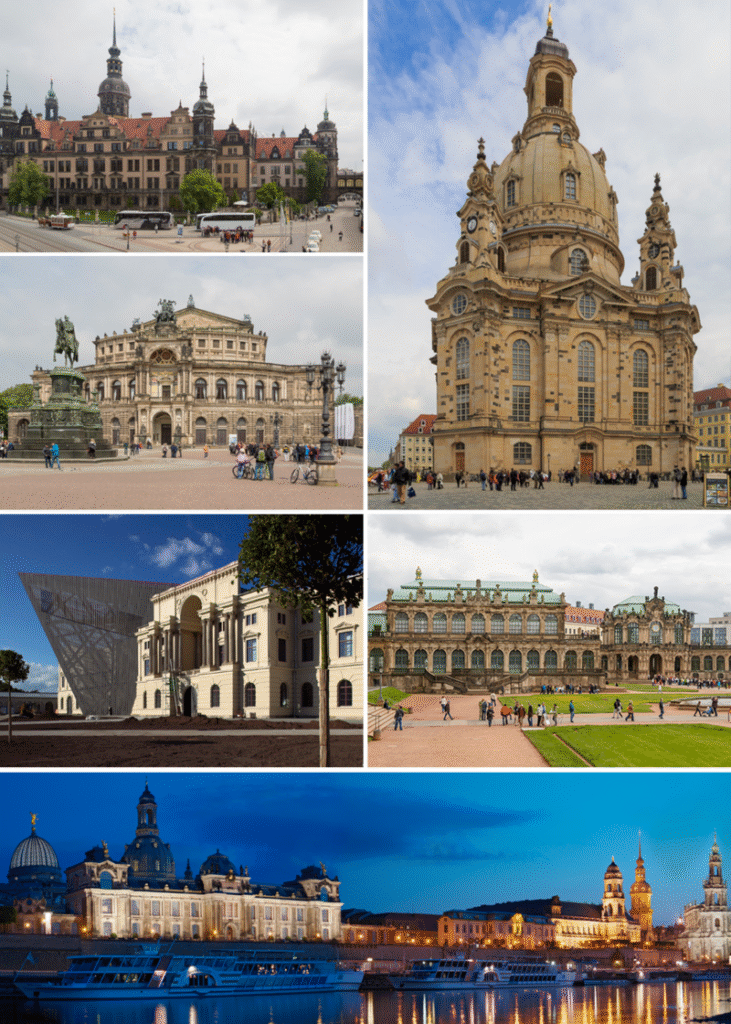
Above: Images of Dresden, Sachsen (Saxony), Deutschland
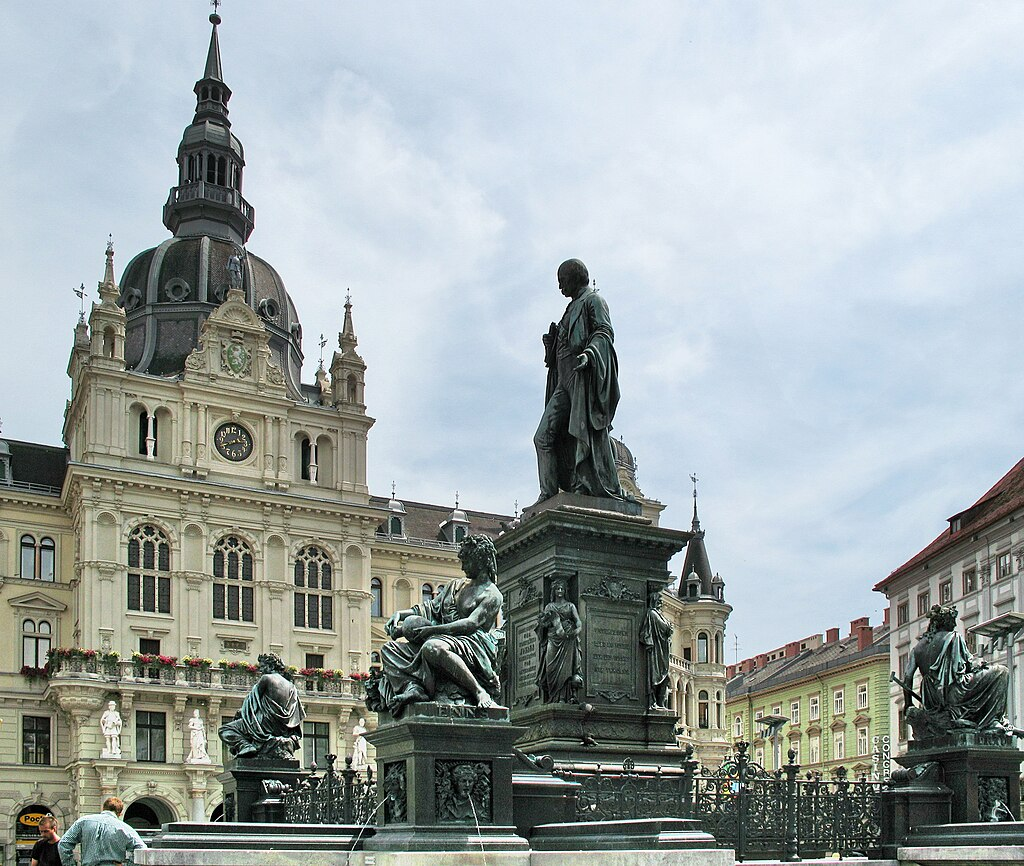
Above: Graz, Styria, Österreich

Above: Logo of the University of Vienna
He soon turned his energies to music.
Early on he was attracted to the music of Richard Wagner, but after studying J. S. Bach’s works he became an adherent of the classical tradition and an advocate for the music of Brahms.

Above: German composer Richard Wagner (1813 – 1883)

Above: German composer Johann Sebastian Bach (1685 – 1750)
In 1866 he married Elisabeth von Stockhausen, who had been a piano pupil of Brahms.
Brahms’s letters to and from both Herzogenbergs form one of the most delightful sections of his correspondence.
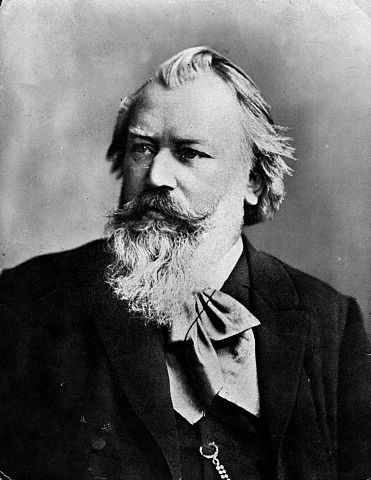
Above: German composer Johannes Brahms (1833 – 1897)
They lived in Graz until 1872, when they moved to Leipzig.
In 1874, with the Bach scholar Philipp Spitta, Herzogenberg founded the Leipzig Bach-Verein, which concerned itself with the revival of Bach’s cantatas.
Herzogenberg was its artistic director for ten years.
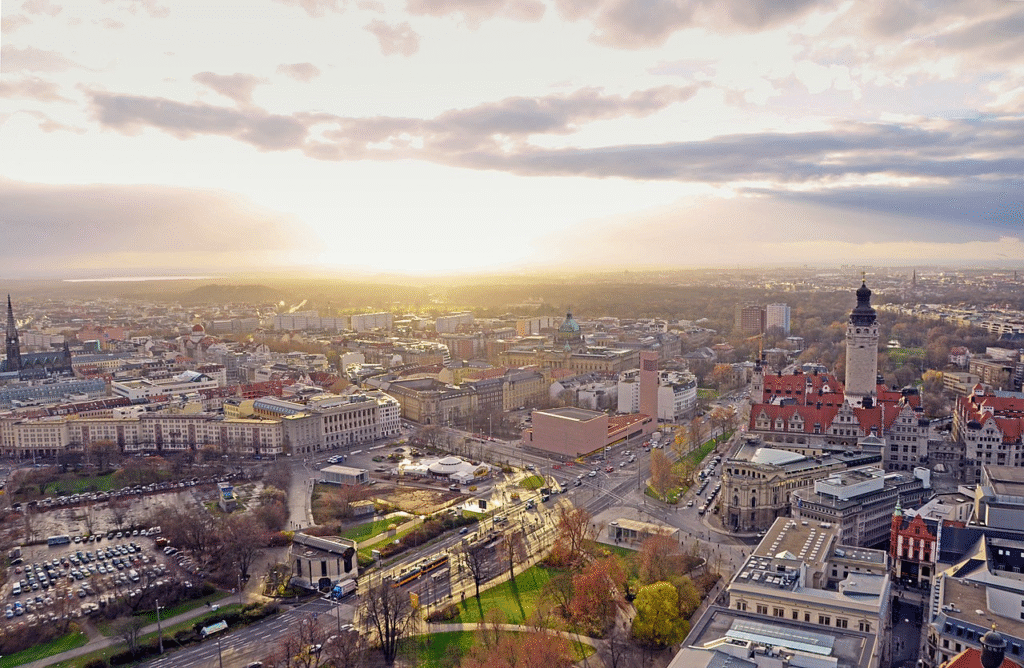
Above: Leipzig, Sachsen, Deutschland
From 1885 he was Professor of Composition at the Hochschule für Musik in Berlin.
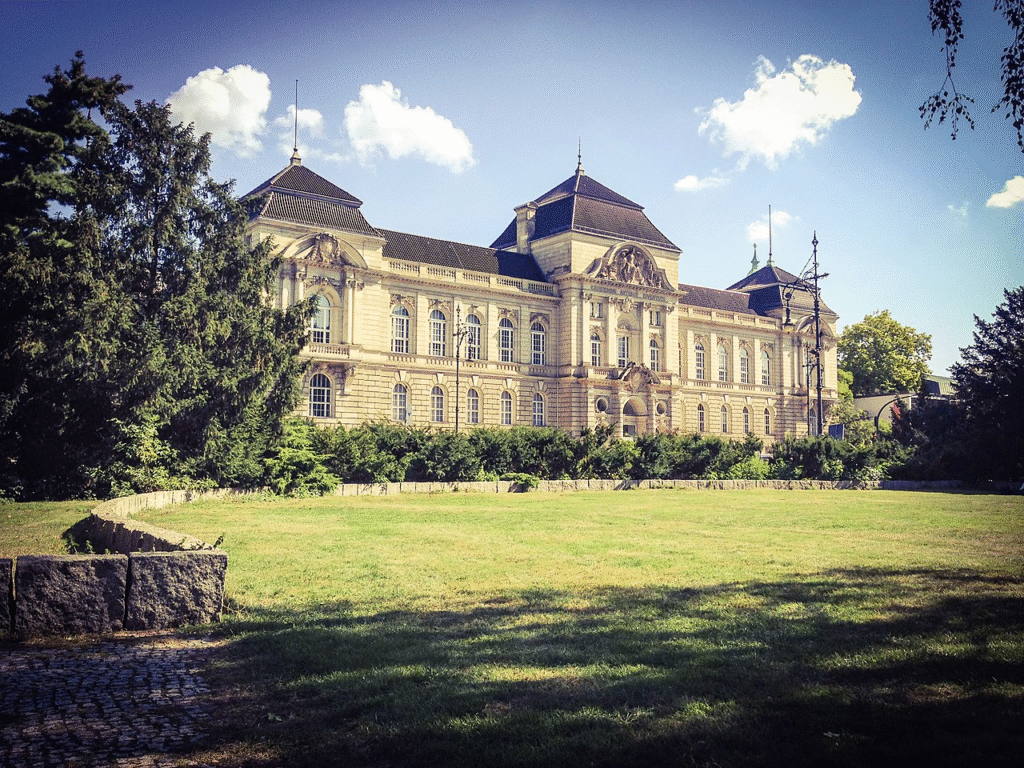
Above: Berlin University of the Arts
A lifelong friendship developed with the Berlin Spitta family, and they often spent holidays together in Appenzellerland.
In 1891, Herzogenberg began building a summer house in
Heiden, overlooking nearby Lake Constance.
Before the house was completed, Elisabeth von Herzogenberg died in 1892 at the age of just 44 from a long-standing heart condition.
Heinrich von Herzogenberg processed her early death through composition.
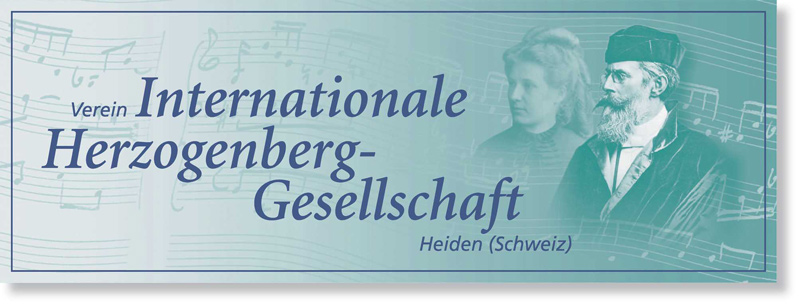
He died suddenly in Wiesbaden, aged 57.
In his last years he used a wheelchair due to necrosis of the joints.
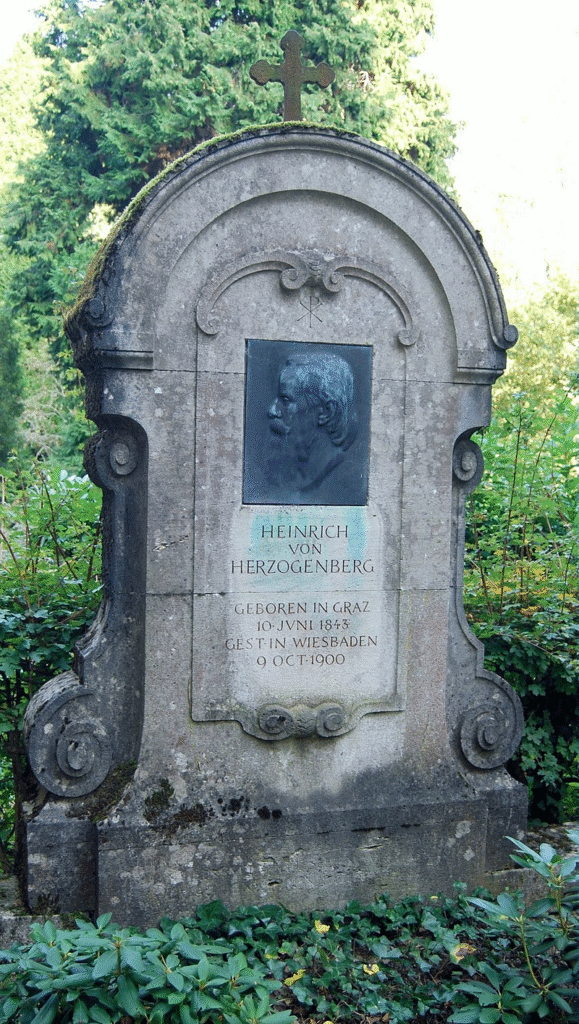
Above: Grave of Heinrich von Herzogenberg, Wiesbaden, Hessen (Hesse), Deutschland
Herzogenberg was a well-schooled composer of definite gifts.
In 1876, he wrote a set of Variations on a theme of Brahms (his Opus 23, for piano four hands, on the Brahms song, Die Trauernde, Opus 7, no.5), but despite Elisabeth’s cajoling Brahms almost never expressed approval of his works.
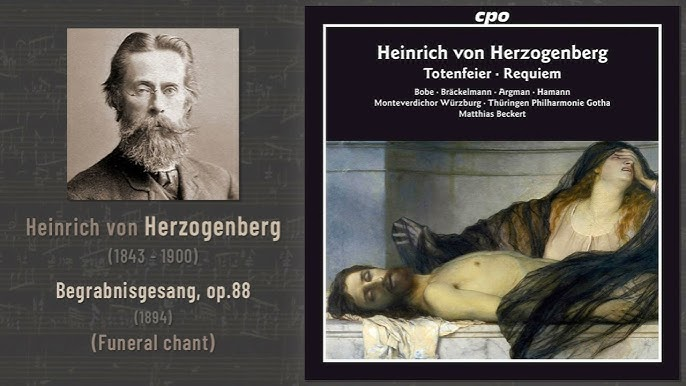
It has been suggested that Brahms was piqued that Herzogenberg had married Elisabeth, of whom he was himself extremely fond.
Toward the end of his life, Brahms grudgingly relented somewhat, writing:
“Herzogenberg is able to do more than any of the others.”
While Herzogenberg has been characterized as a mere epigone of Brahms, many of his compositions show little or no overt Brahmsian influence.
Towards the end of his life he concentrated on providing music for communal worship in the Lutheran Evangelical Church in Strasbourg, though Herzogenberg himself remained Roman Catholic.
His models in these pieces were the Bach oratorios and passions, with chorales designed to be sung by the congregation and played by only a small instrumental ensemble.
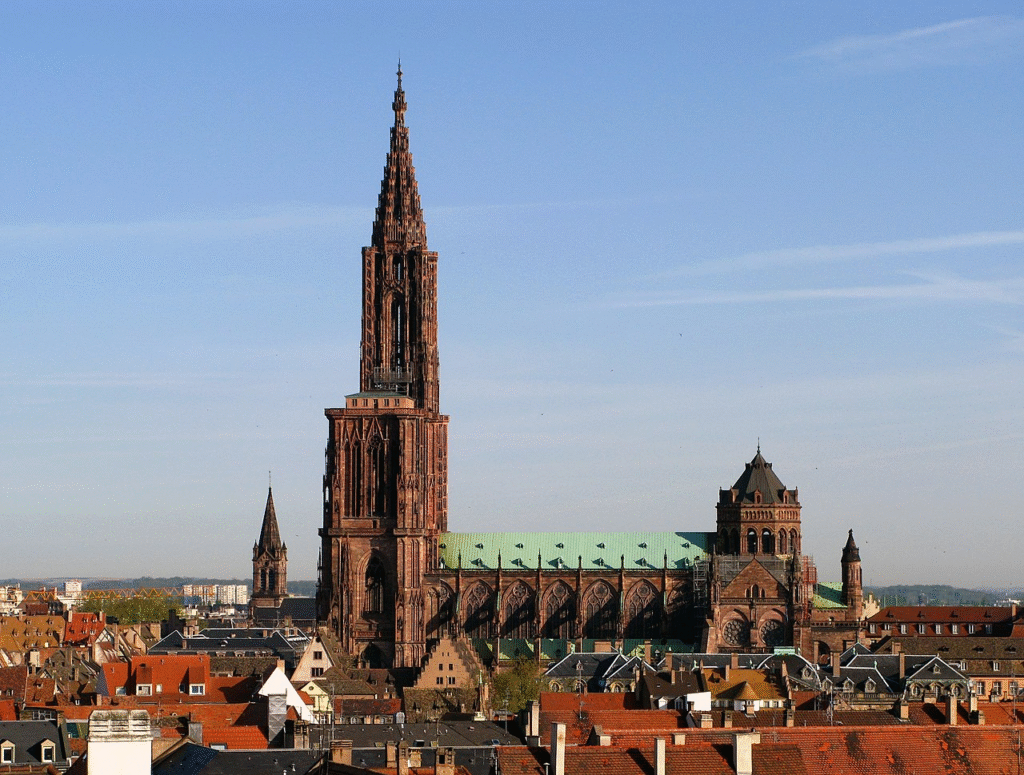
Above: Strasbourg, Alsace, France
Several of Herzogenberg’s major works were thought to have been destroyed during World War II but resurfaced during the 1990s.
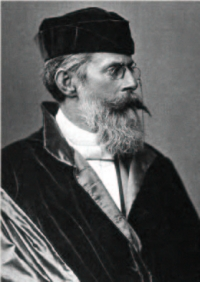
Above: Heinrich von Herzogenberg
The Heiden Festival has been held on the last weekend of May since 2017.
The theme is folklore, which is interpreted in a broad way:
New folk music and world music with jazz and classical influences are part of the internationally oriented program.
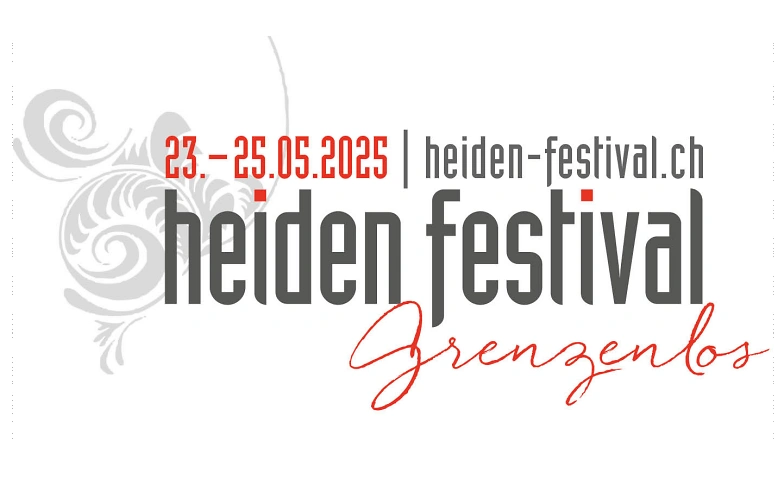
Opened in 1935, the Rosental Cinema is one of the oldest cinemas in Eastern Switzerland still in operation.
It shows current films, as well as a select program in the Cinéclub.
The 135-seat auditorium is still decorated in the style of the 1950s and can also be used for events.
The cinema is run by a cooperative.
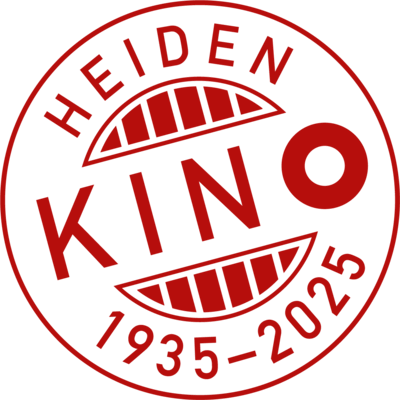
Whether by car from Rheineck or with the small nostalgic train from Rorschach, the journey to Heiden impresses with its lush green hilly landscape and the charming Swiss houses adorned with flowers.
The air at this altitude is fresh and clean.
It is no coincidence that there are many health resorts here.
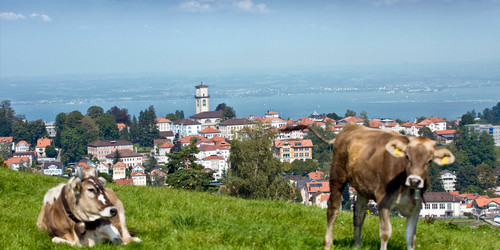
However, Heiden has another special feature that is not so widely known:
The Chindlistein.
It is said to possess magical powers.
There are many energy sites around the world.
This massive rock has been measured at 15,000 Bovis units (a measure of Earth radiation).
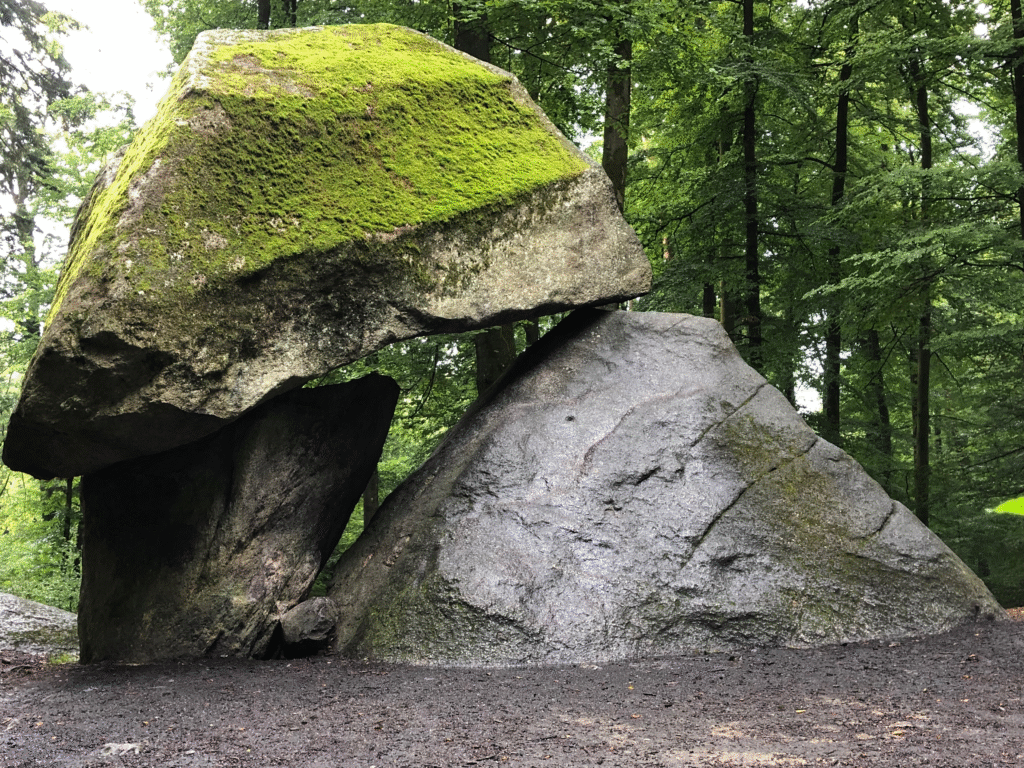
Fortunately, it is not easy to find!
Too many people have already carved their names into it.
At the edge of the forest, the massive rock rises up to ten meters above the meadow.
On the forest side, it can be climbed.
The energies it emits once made it a site for rituals.
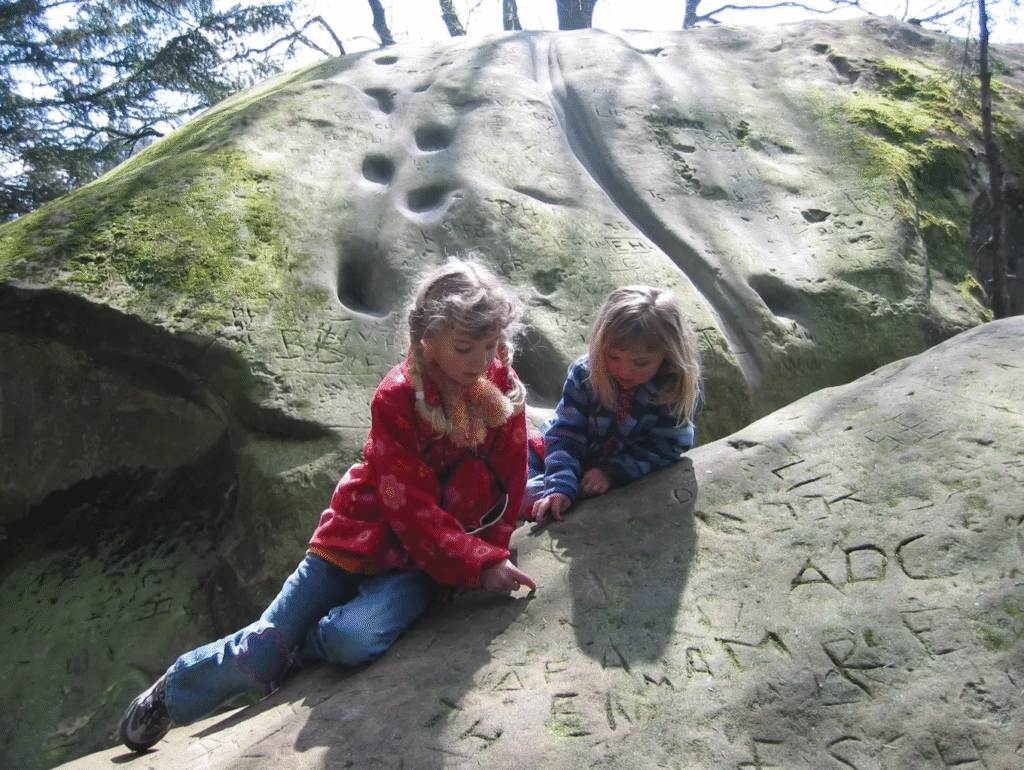
In the past, the area around it was not yet forested, offering an unobstructed view all the way to Lake Constance.
Perhaps the lake-dwelling settlers came up here to hold gatherings.
The grooves and holes in the smooth surface of the stone are clearly manmade.
It is also suspected that women sought to enhance their fertility through the power of the stone, as it is said that they slid down it with their bare backsides.
Some saw it not just as a “slide” but as a spiritual place of reincarnation, where the souls of the deceased were brought back to Earth through the birth of a child.
It is also possible that, in times of hardship, the inhabitants hid their children here to protect them from falling victim to cannibalism.
Yet, the stone keeps all its secrets and continues to exert its fascination, standing above the cow pastures between Heiden and Oberegg, in the Rasplen district.
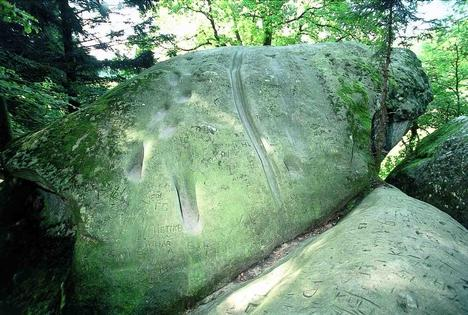
The Chindlistei Trail leads from Heiden to the Chindlistei near the Rasplen farm.
It is almost 8 kilometers long and leads to mystical power sites.
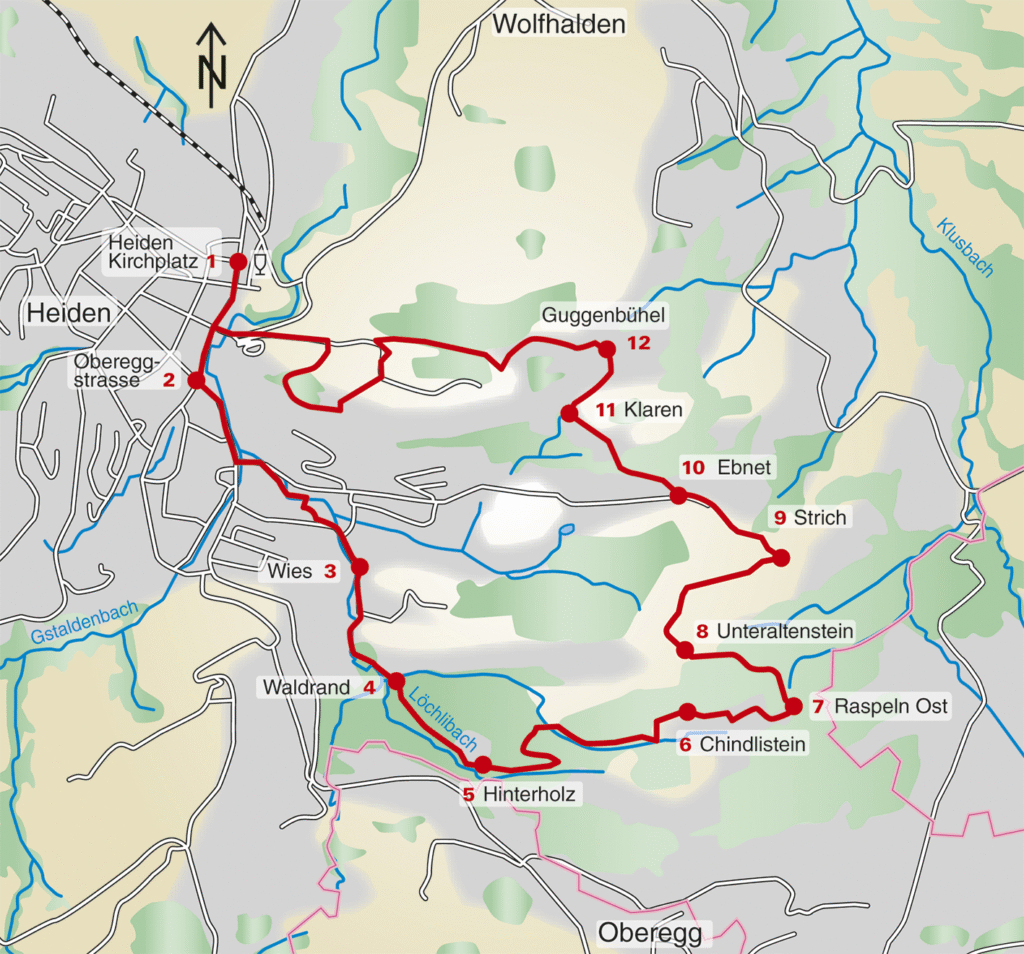
The Chindlistein itself is a prehistoric sandstone cup stone.
It has been interpreted as the dwelling place of unborn children.
In Alemannic usage, Chindlistein (also Kindlistein) are boulders that are either considered the place of origin of children or with which a fertility cult is associated.
This phenomenon is also known in France.
These are usually erratic boulders.
The belief and custom associated with these stones are often traced back to the Celts in popular literature and in older literature to the megalithic culture.
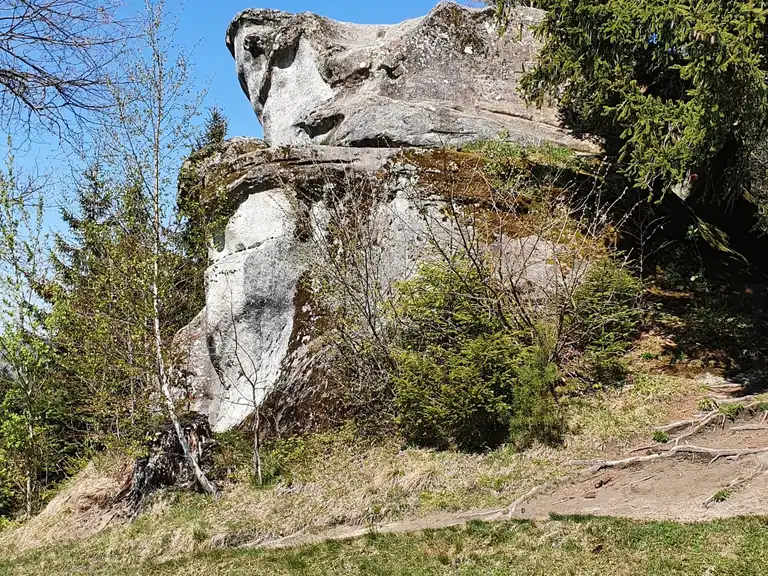
Chindlistein boulders can be found in many regions of Switzerland.
In many places, it was said:
“This is where the midwife brings the newborns.” – an explanation that served as a substitute for sexual education, analogous to the legend that the stork brings babies.
The Chindlisteines of Heiden and Hüttikon are associated with women’s fertility rituals.
Women are said to “slide down the Chindlistein with their bottoms exposed to increase their fertility and fulfill their wish for children“.
It is also said of the Chindlistein of Heiden that “children were hidden under the stone during times of famine and war“.
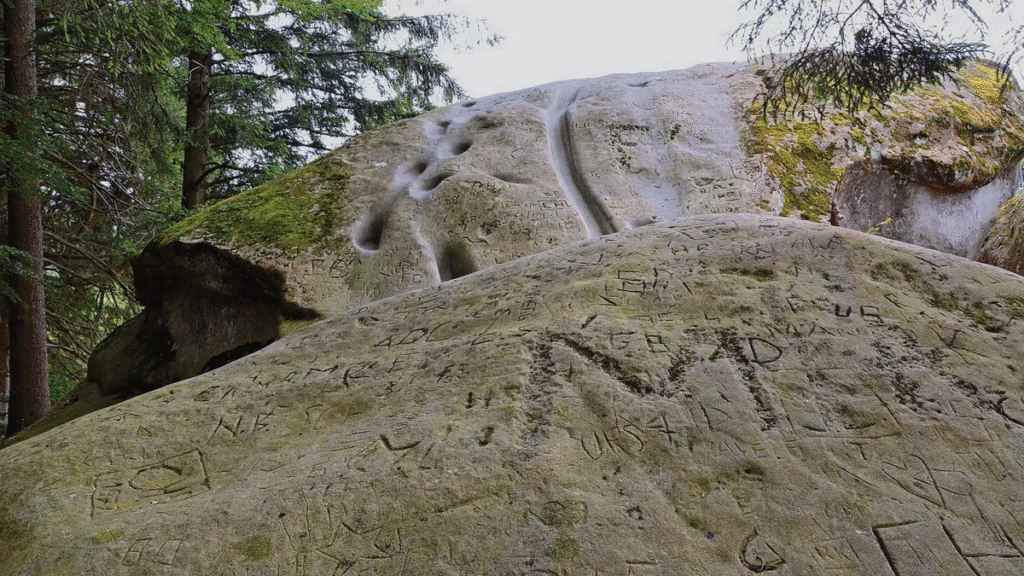
Quarry or sacred site of life?
The Chindlistein lies at an altitude of 940 meters and is made of sandstone. Older and more recent markings can be seen on the rock. Fracture points indicate that stone was once quarried here.
Notable features include three deep and long grooves, several step-like formations, a slide, and a crescent-shaped hollow in the rock. It is possible that stone dust was collected from the grooves for healing purposes or pigment production.
In local tradition, the Feissporn is known as the “Tüfelskänzeli” (Devil’s Pulpit) or “Hexenkänzeli” (Witches’ Pulpit).
These names date back to the time of the Appenzell witch persecutions (14th to 17th century).
Women were accused of practicing harmful magic and making pacts with the Devil.
Such gathering places are also believed to have existed at the Devil’s Pulpit and the Chindlistein.
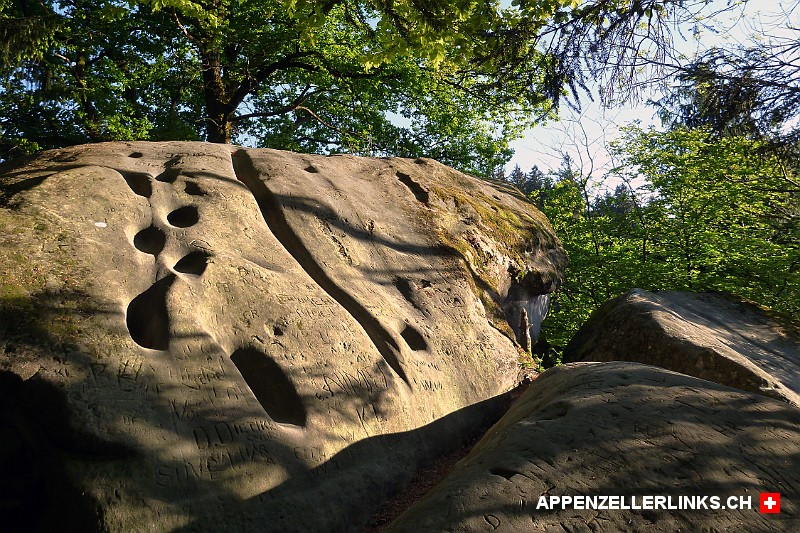
There is a folk memory associated with the Chindlistein.
It is said that, in times of danger, small children were hidden in two hollows in the west wall.
However, the slide, the name Chindlistein, and the caves suggest that this is where small children were once brought.
In a ritual of rebirth, women would slide down or sit on an ancestor stone to spiritually receive a child’s soul.
Such a wedding custom is mentioned in the Abbey of St. Gallen over 1,000 years ago among the Alemanni.
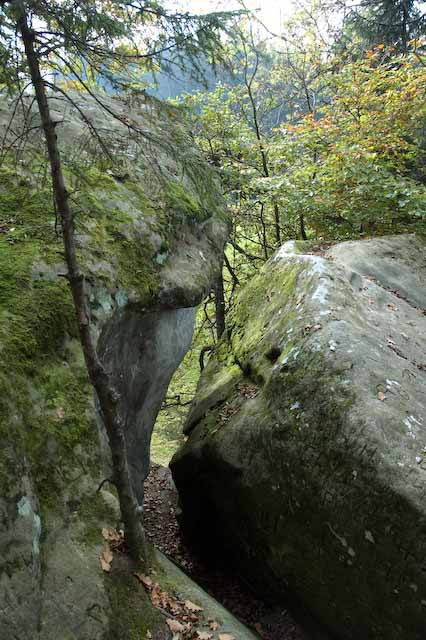
Often, an older population continues to live on in the memory of legends.
They appear as wild people or as the little folk.
In the Appenzell region, it is said that small people once lived in a cave in the Brüeltobel near Lake Sämtiser (Sämtisersee).
As late as 1860, an altar stone could still be seen there.
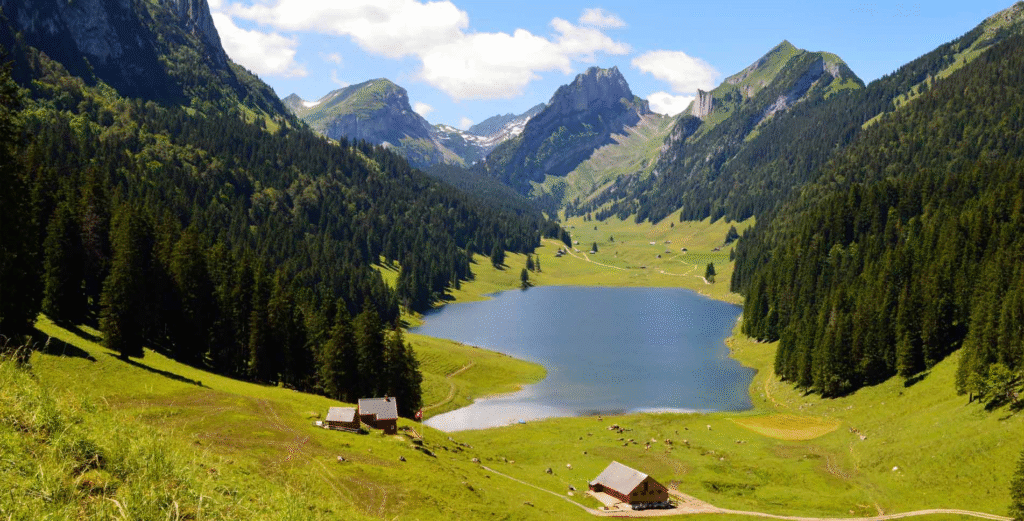
Above: Sämtisersee
Could the Devil’s Pulpit and the Chindlistein also have been ancient altar stones?
It is interesting that the legend involves a midwife, a child, and a birth — old motifs that may also play a role in the Chindlistein of Rasplen.
Nature or human hand?
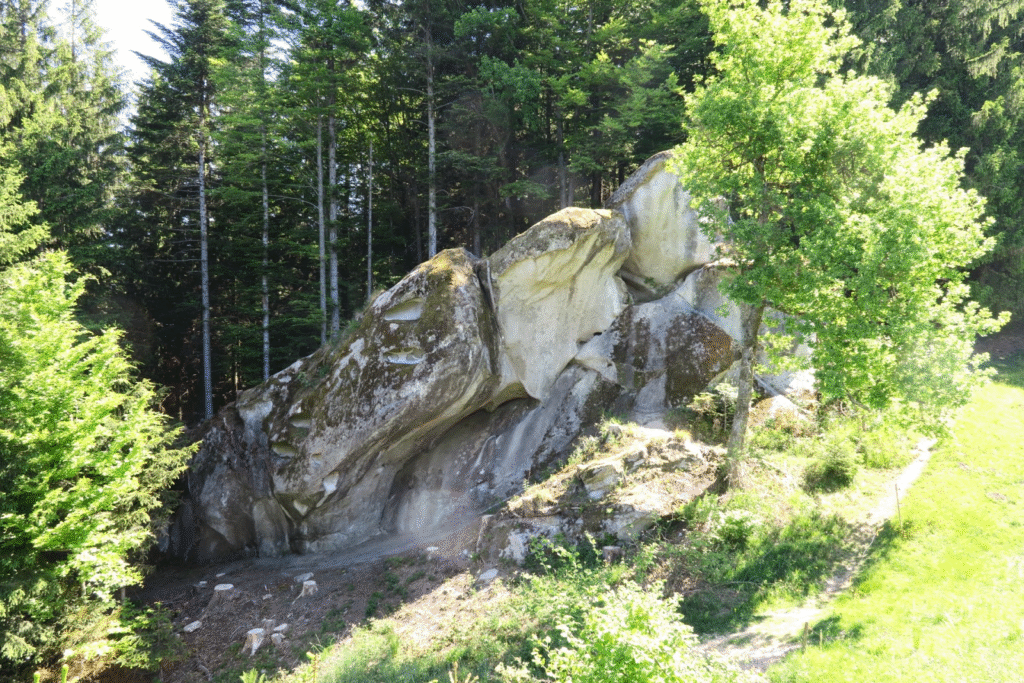
The bowl-shaped stone of the Unteraltenstein lies at an altitude of 888 meters and is made of sandstone.
The exposed rock resembles a small mountain.
What stands out are the many fairly large bowls as well as the connecting grooves between the depressions.
The bowls were formed through erosion but, like the grooves, show signs of human craftsmanship.
Similar bowl-shaped stones are often found in the Altenstein, Rasplen, and Strich fields.
They serve, among other things, as markers in the landscape.
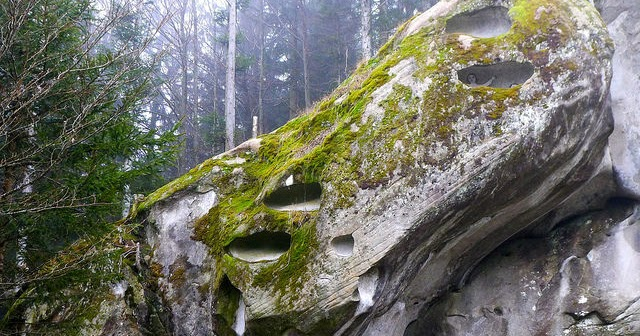
As early as 100 years ago, the stone with its steep face was well known.
During World War I, the profile of a soldier was carved into it.
The oldest features include the long slide, the carved steps, and various notches along the upper edge.
The oldest written record of a sliding stone in the region dates back to the 18th century.
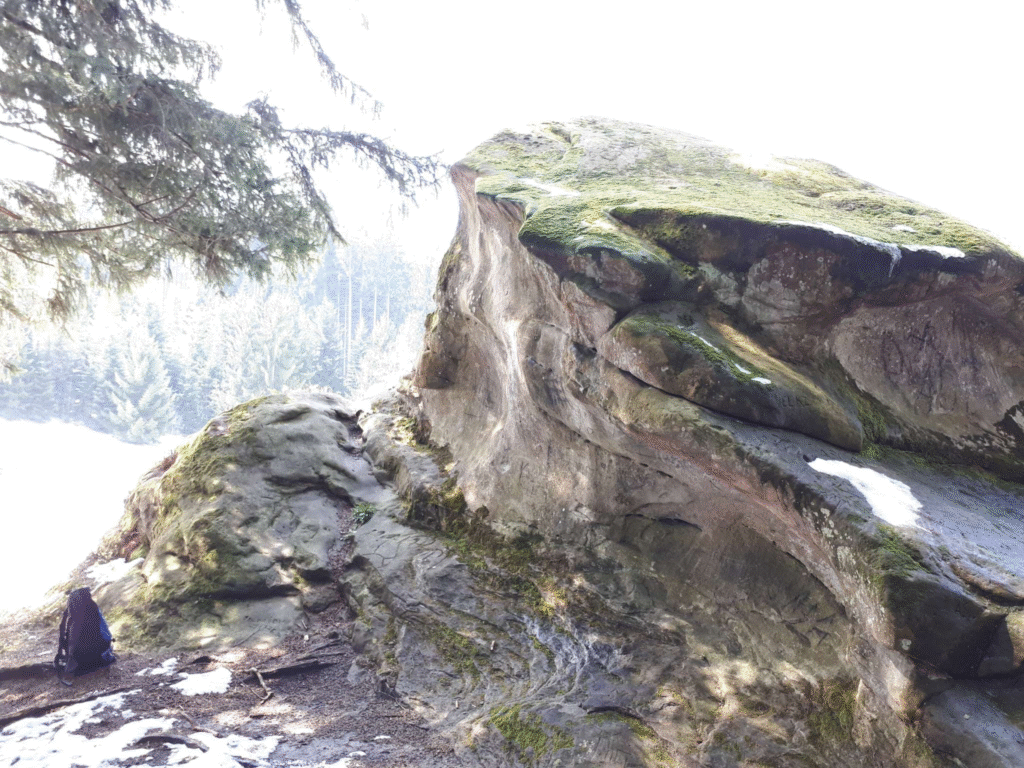
The Gesundheitsweg (health trail) is 7 kilometers long and features numerous information panels along the trail about healing herbs.
The gentle hills, the lush green, the scattered settlements — all of this comes together to create the intact Appenzell landscape.
Enjoy magnificent views of Vorarlberg, Lake Constance, and even as far as the Allgäu.
Along the path, you will discover valuable information on phytotherapy and its applications at around 50 informational panels.
Feel and experience during your herbal walk that the best remedies for our bodies come from nature.
The individual panels provide insights into the uses and healing effects of each medicinal plant.
The Health Trail is well-connected by public transport.
Heiden can be reached by mountain railway from Rorschach or by Postbus from St. Gallen (lines 120 or 121).
The routes Heiden – Kaien and Heiden – Oberegg – St. Anton are served by the Postbus, making it easy to hike a section of the Health Trail.

Smartrails (hikes where puzzles must be solved along the way), a fitness trail and numerous other biking and hiking trails complement Heiden’s leisure activities.
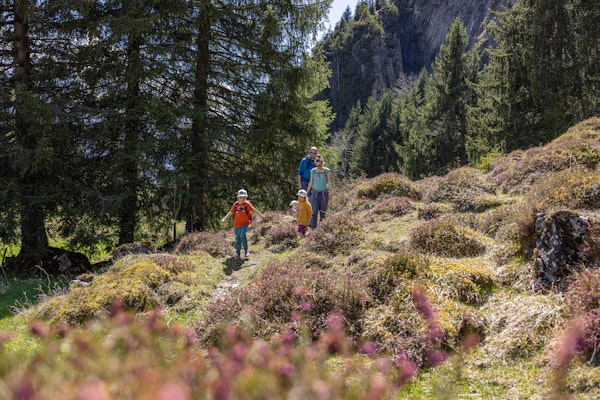
It seems I have reasons to return to Heiden.

The former president of the International Committee of the Red Cross (ICRC), Jakob Kellenberger, was also born in Heiden.
Jakob Kellenberger is a Swiss diplomat.
He joined the Swiss diplomatic service in 1974 and held various positions within Europe.
As chief negotiator for his home country, he led Switzerland’s negotiations with the European Union on the Bilateral Agreements I between Switzerland and the EU.
From 2000 to 2012, he was President of the International Committee of the Red Cross (ICRC).
He has been President of Swiss Peace since 2013.
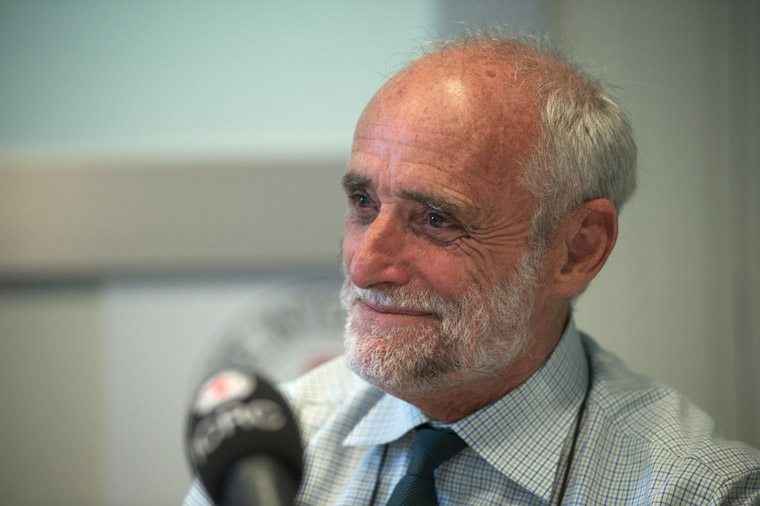
Above: Jakob Kellenberger
Jakob Kellenberger was born in Heiden in the canton of Appenzell Ausserrhoden, but is a citizen of the cantonal municipality of Walzenhausen.
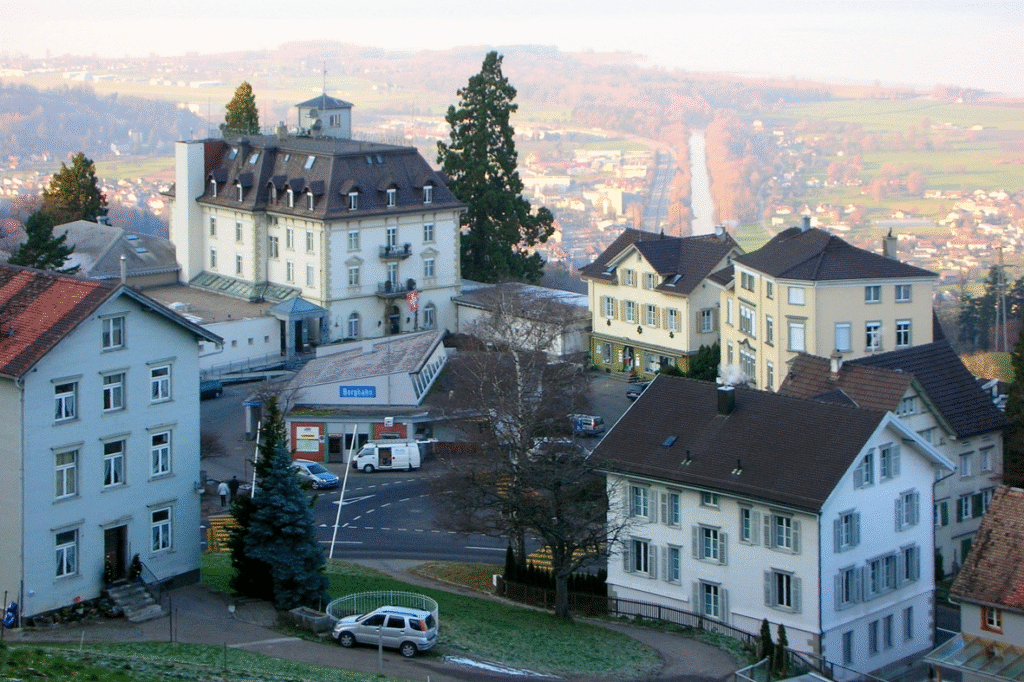
Above: Walzenhausen, Canton Appenzell Ausserrhoden, Schweiz
He spent a large part of his youth in Arbon on Lake Constance, where his father worked as a freelance photographer.
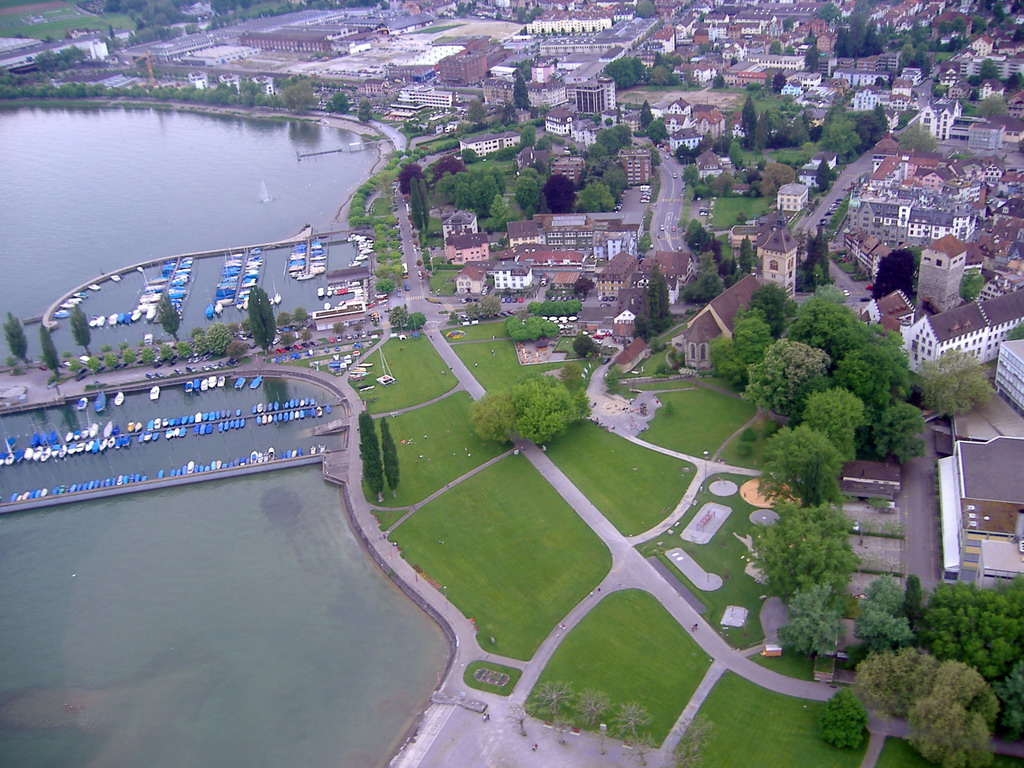
Above: Arbon, Canton Thurgau, Schweiz
He studied French and Spanish literature and linguistics in Zürich, Tours and Granada.
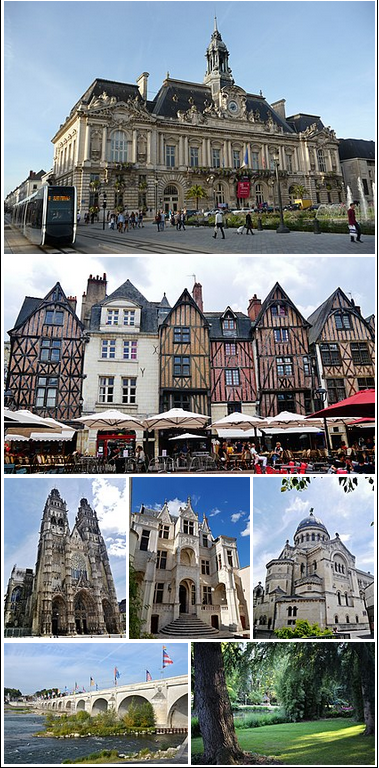
Above: Images of Tours, Indre et Loire, France
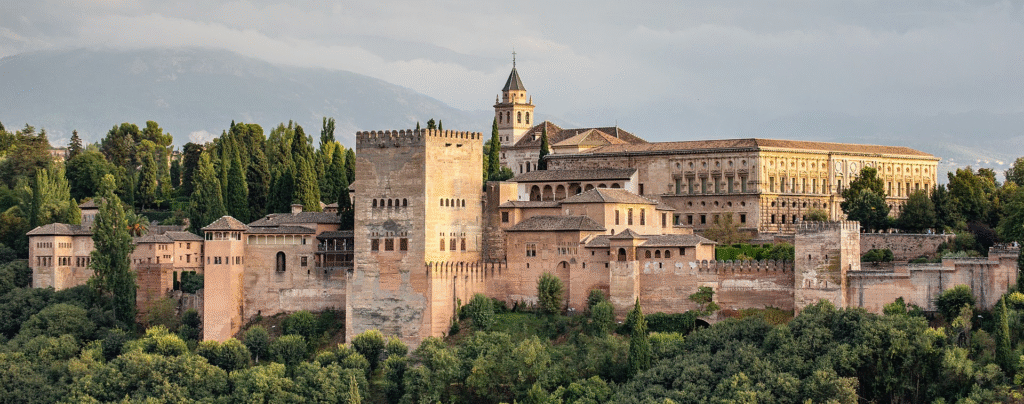
Above: Alhambra, Granada, Andalucía (Andalusia), España (Spain)
He graduated with a doctorate from the University of Zürich.
In 1974 he began working for the Federal Department of Foreign Affairs (FDFA).

From 1975 to 1976 he was attaché at the Swiss Embassy in Madrid, and then from 1976 to 1981 he was secretary at the Swiss Mission to the European Communities (EC) in Brussels.
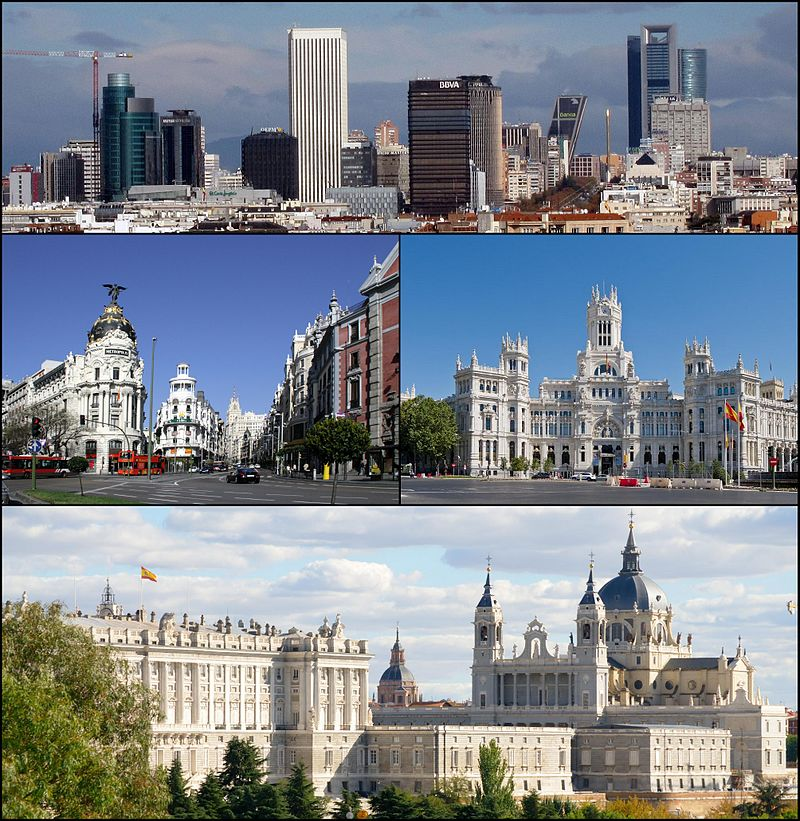
Above: Images of Madrid, España
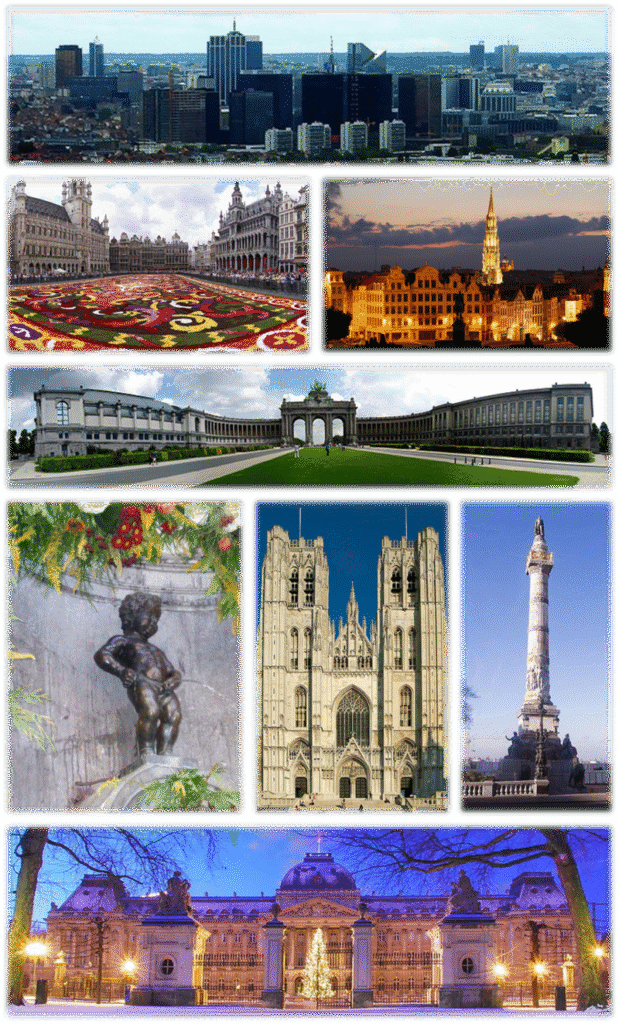
Above: Images of Brussels, Belgium
He then worked for the Swiss Embassy in London until 1984.
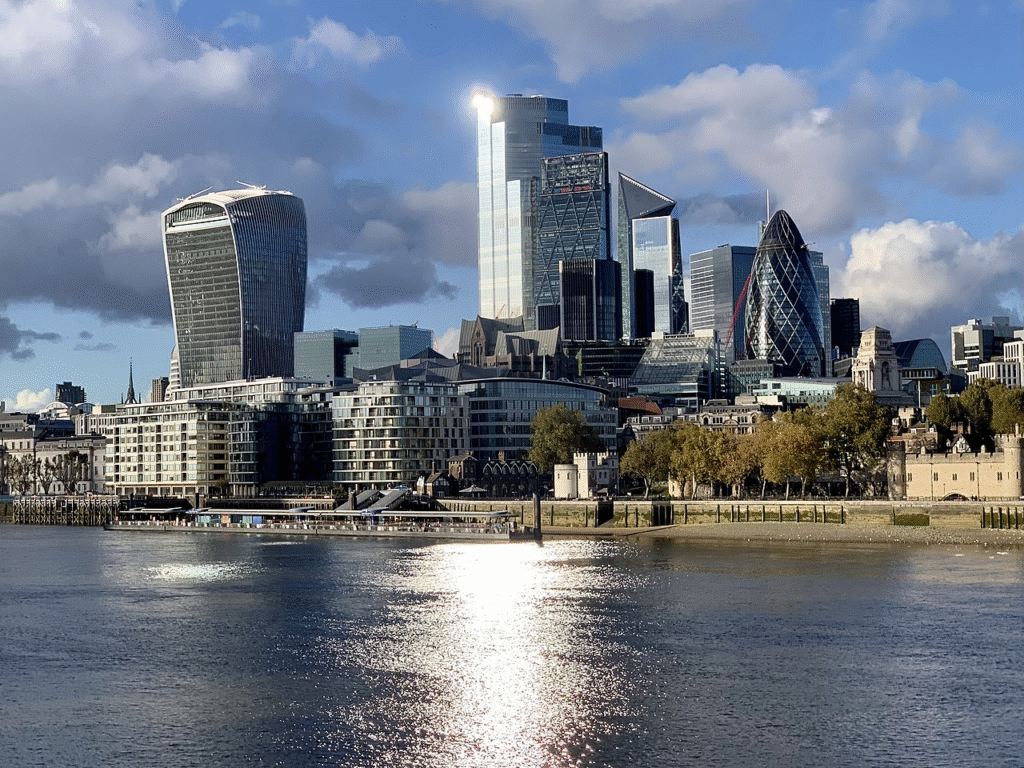
Above: London, England
From 1984 to 1992, he headed the Swiss Integration Office, a joint office of the FDFA and the Federal Department of Economic Affairs (FDEA), which was responsible for Switzerland’s relations with the EU and the European Free Trade Association (EFTA).
In 1992, he was promoted to State Secretary and Head of the Political Directorate of the FDFA.
From 1989 to 1991, he was Switzerland’s chief negotiator in the transit negotiations with the EC, and between 1994 and 1998, he headed the Swiss delegation in the bilateral negotiations with the European Union.
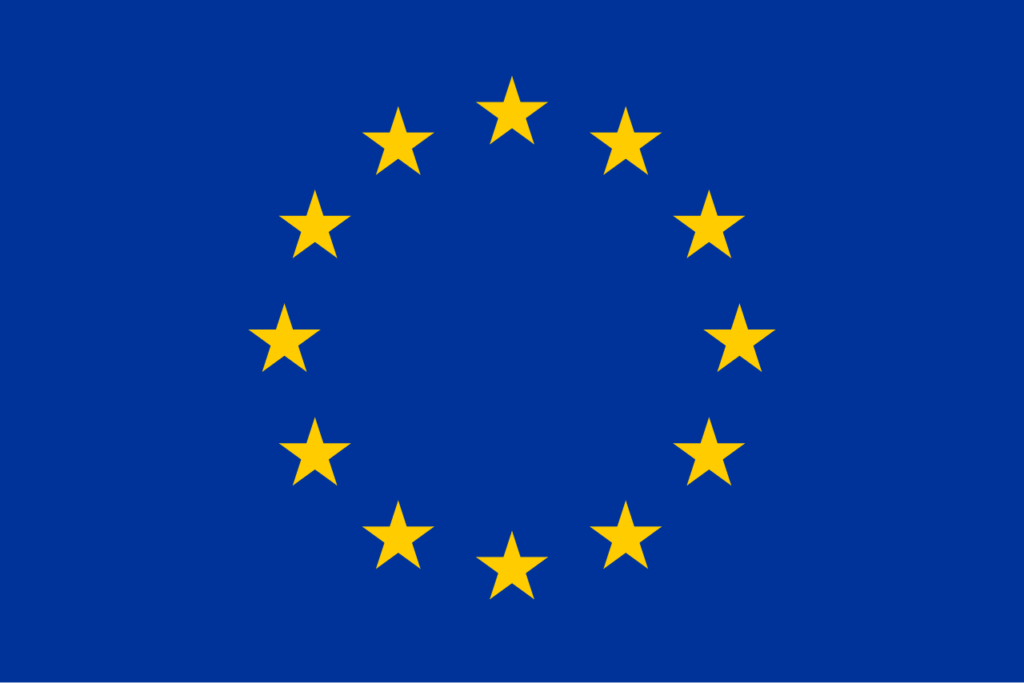
Above: Flag of the European Union
On 27 August 1998, he was elected to succeed Cornelio Sommaruga as President of the International Committee of the Red Cross.
Following Sommaruga’s retirement at the end of 1999, he assumed office at the beginning of the following year.
Shortly after taking office, six ICRC staff members were murdered in the Democratic Republic of Congo on 26 April 2001.

Above: Flag of the Democratic Republic of the Congo
Like his predecessor, Kellenberger was faced with the challenge of the ICRC’s loss of authority, particularly in internal conflicts, which began with the global political upheavals of 1990.
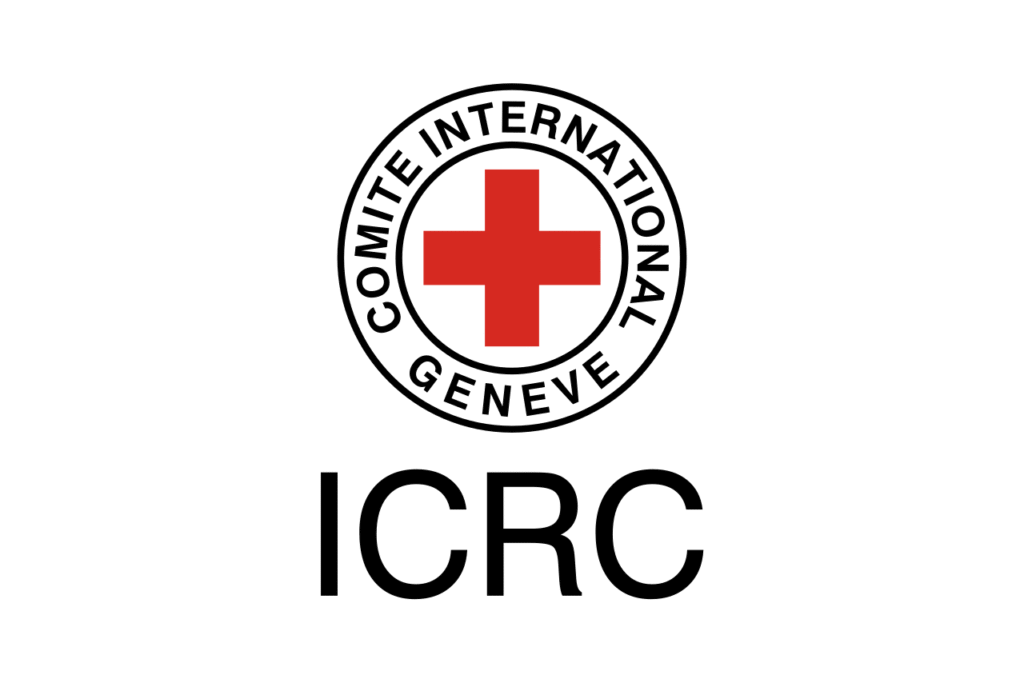
Between 2003 and 2005, he met several times for confidential discussions with US President George W. Bush, US Secretary of State Colin Powell, US National Security Advisor Condoleezza Rice, US Secretary of Defense Donald Rumsfeld and his deputy Paul Wolfowitz about the treatment of prisoners in the Abu Ghraib prison in Iraq and in the Camp X-Ray detention center at the US military base in Guantánamo Bay, Cuba.
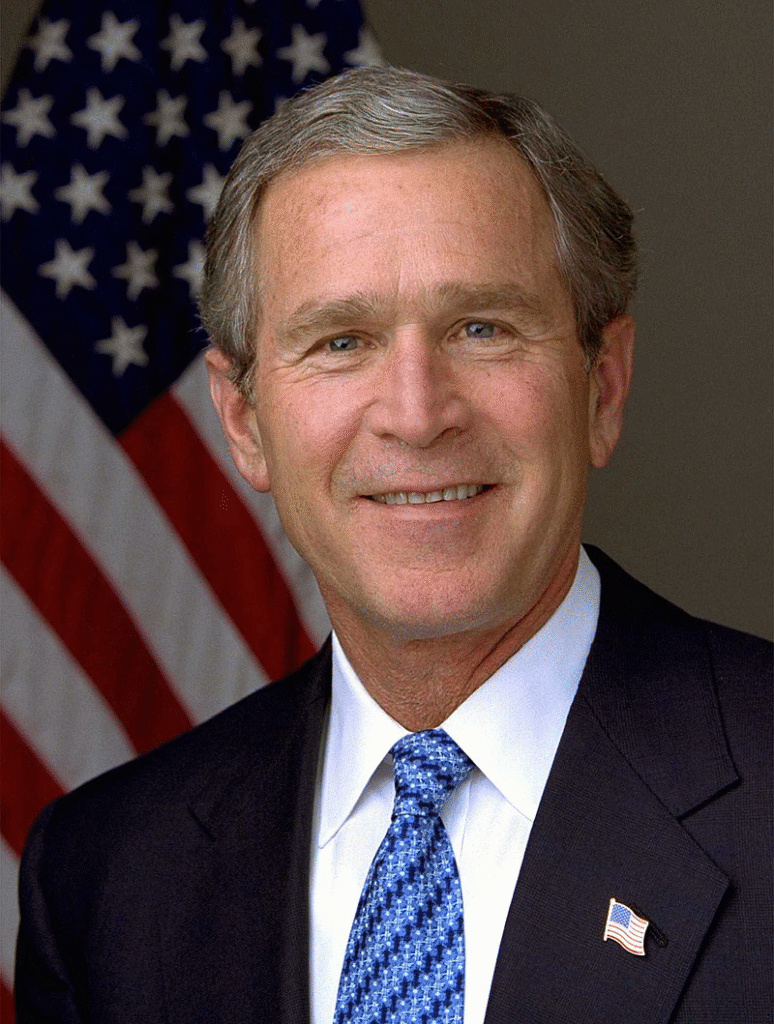
Above: US President George W. Bush (r. 2001 – 2009)

Above: US Secretary of State Colin Powell (1937 – 2021)
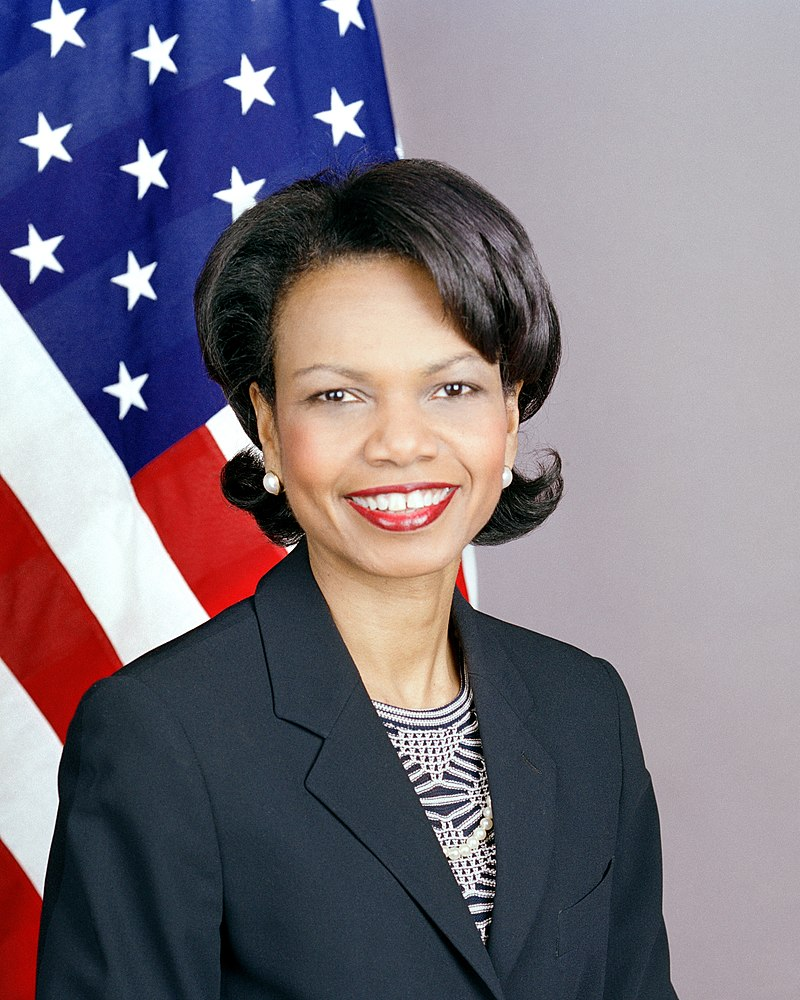
Above: US Secretary of State Condoleezza Rice (r. 2005 – 2009)
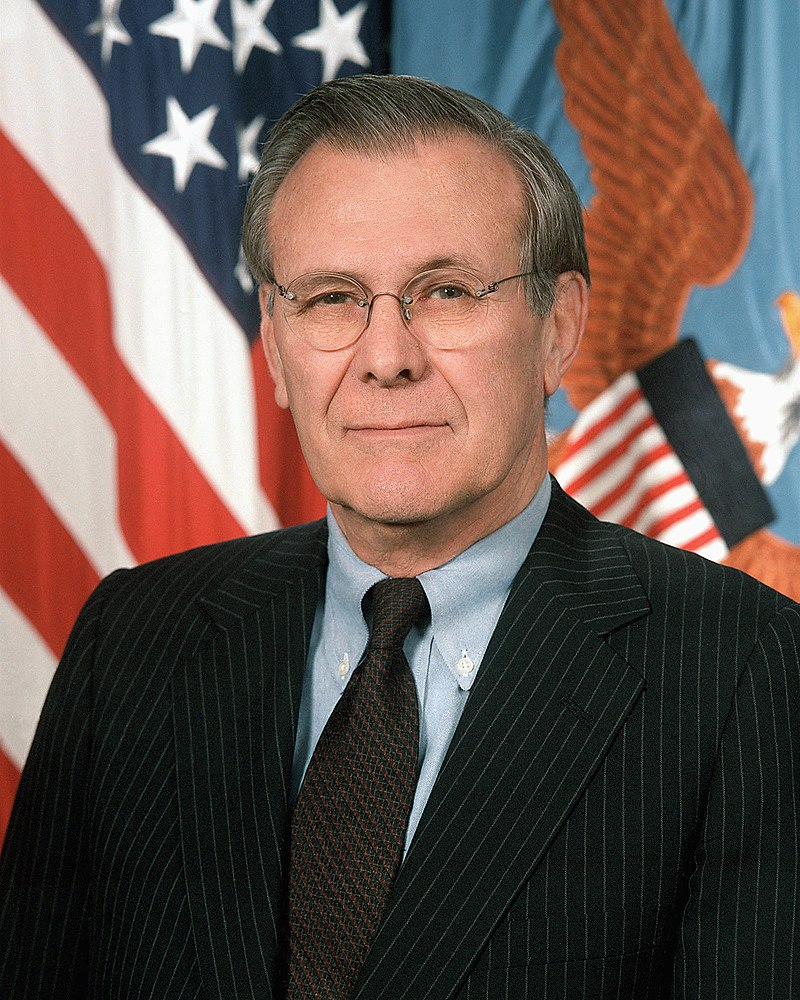
Above: US Defense Secretary Donald Rumsfeld (1932 – 2021)
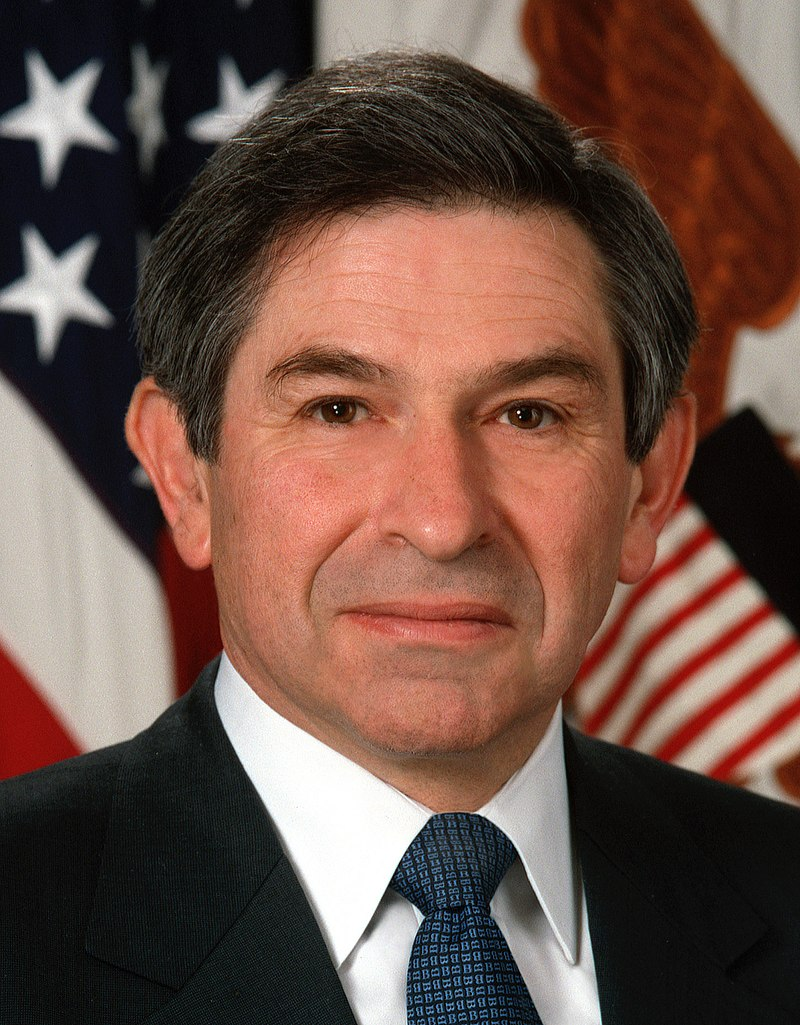
Above: World Bank President Paul Wolfowitz (r. 2005 – 2007)
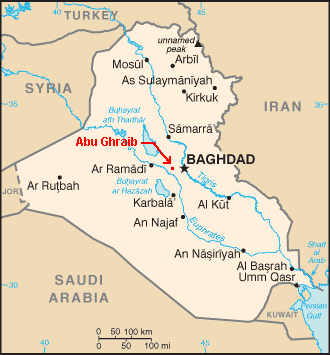
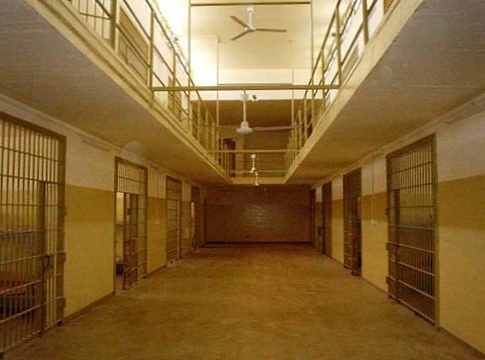
Above: Abu Ghraib Prison
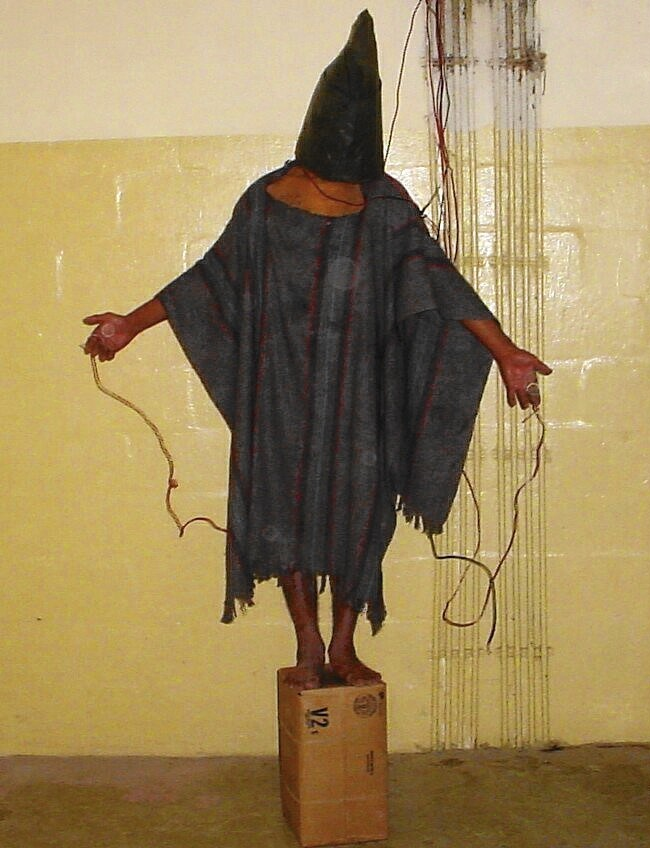
Above: Picture of Abdou Hussain Saad Faleh, one of the prisoners subjected to torture and abuse by US guards at Abu Ghraib, 2304 hours, 4 November 2003
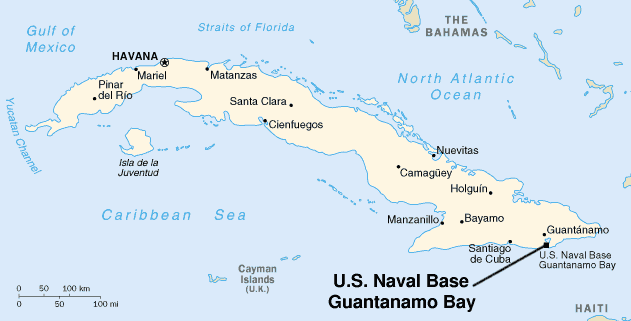
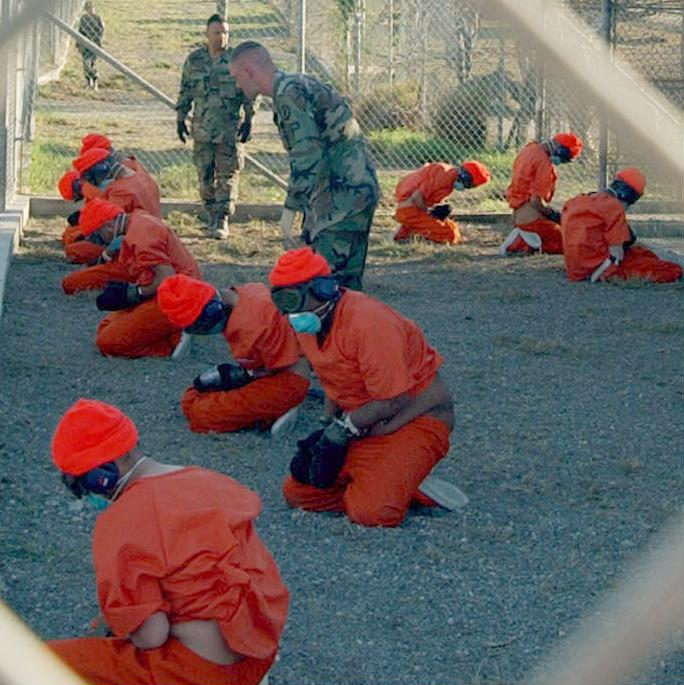
Above: Detainees upon arrival at Camp X-Ray, Guantanamo Bay, January 2002
During his term in office, the Third Additional Protocol to the Geneva Conventions was adopted in December 2005, establishing the Red Crystal as the third protective symbol alongside the Red Cross and the Red Crescent.
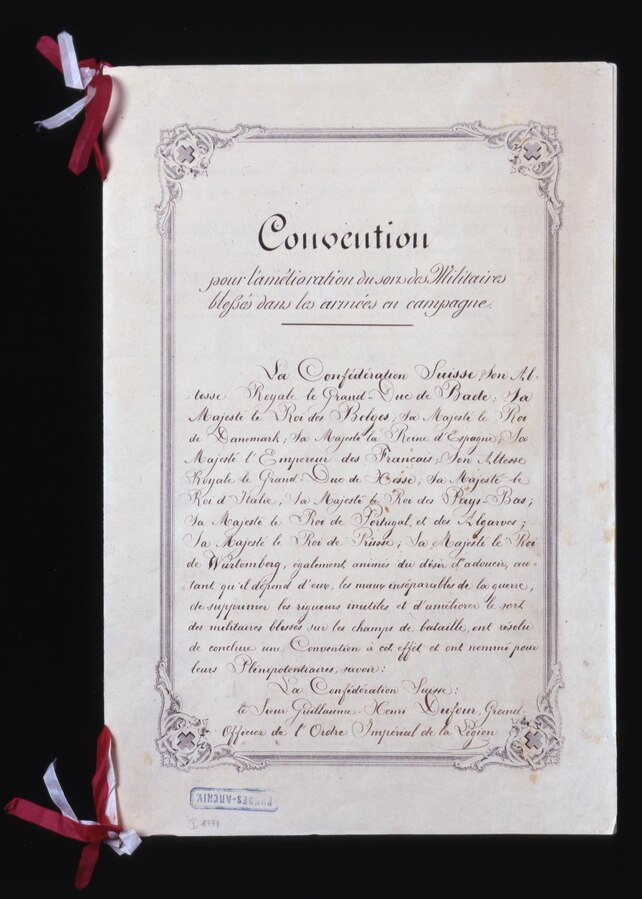
Above: The original Geneva Convention (1864)
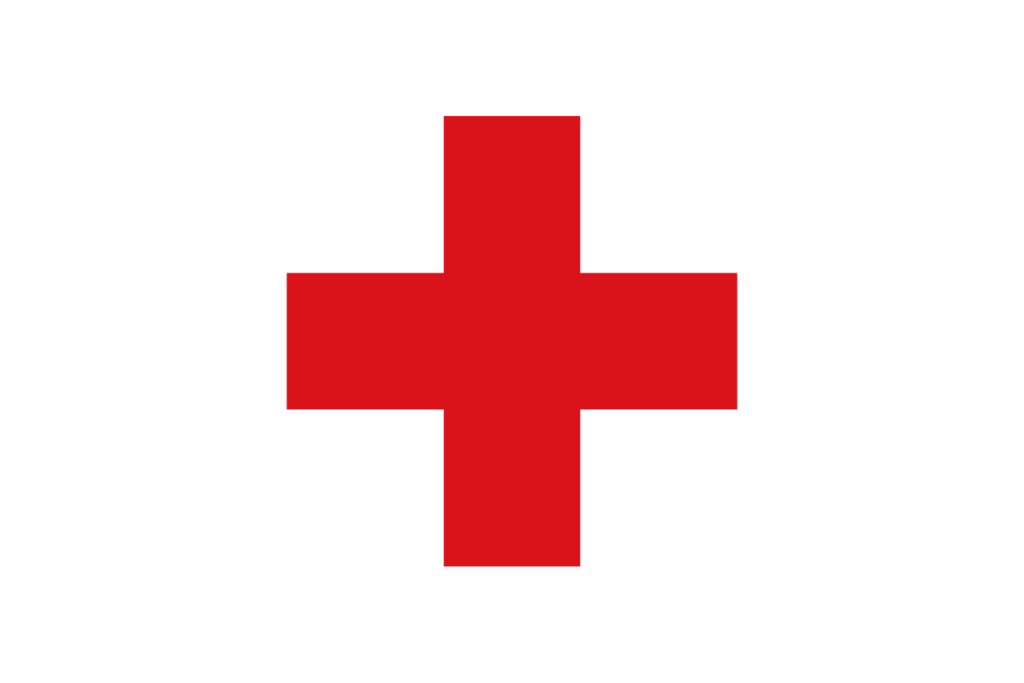
Above: Red Cross flag
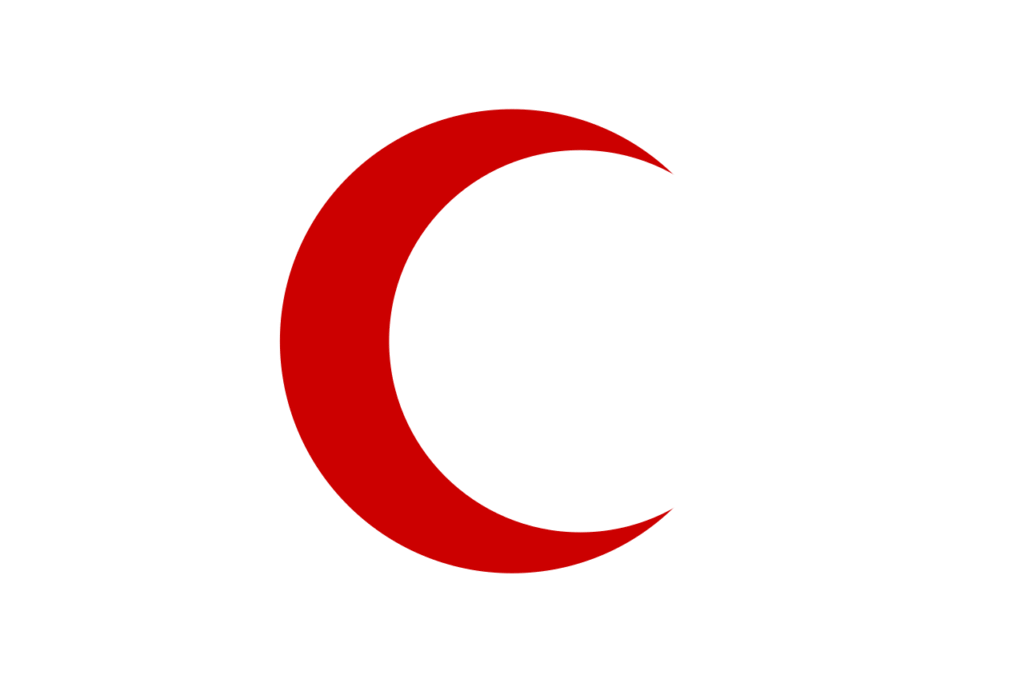
Above: Red Crescent flag
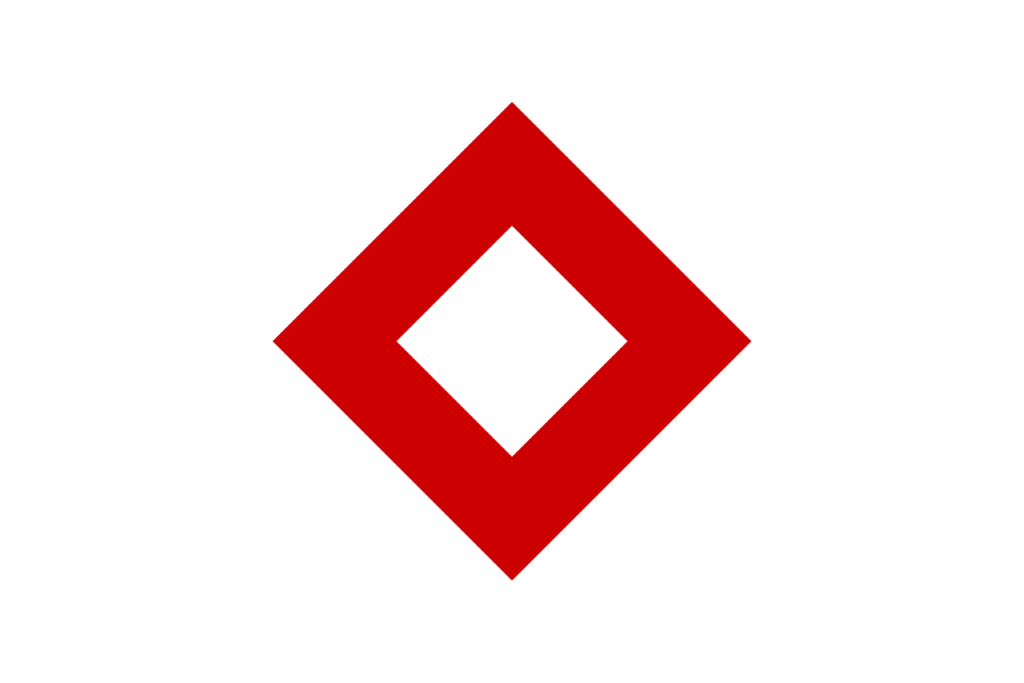
Above: Red Crystal flag
Although Kellenberger advocated for a mutually acceptable solution both in his speech at the opening of the diplomatic conference in Geneva on 5 December 2005, and in a further call for agreement two days later, this decision was not reached by consensus.
Due to differences between Israel and Syria, which could not be resolved despite a compromise offer from the ICRC to Syria, the Protocol was adopted by a vote of 98 in favor, 27 against, and 10 abstentions.

Above: Flag of Israel

Above: Flag of Syria
In February 2007, Jakob Kellenberger was re-elected by the ICRC Assembly for another four-year term.
In October 2011, the Committee Assembly elected Peter Maurer, diplomat and State Secretary in the Federal Department of Foreign Affairs, as his successor.
On 1 July 2012, Peter Maurer took over from Jakob Kellenberger.

Above: Swiss diplomat Peter Mauer
From September 2012, Kellenberger was a columnist for the Sonntags Zeitung newspaper.
He wrote about international, European and humanitarian issues.

He has been a member of the Board of the Center for Humanitarian Dialogue since 2012.
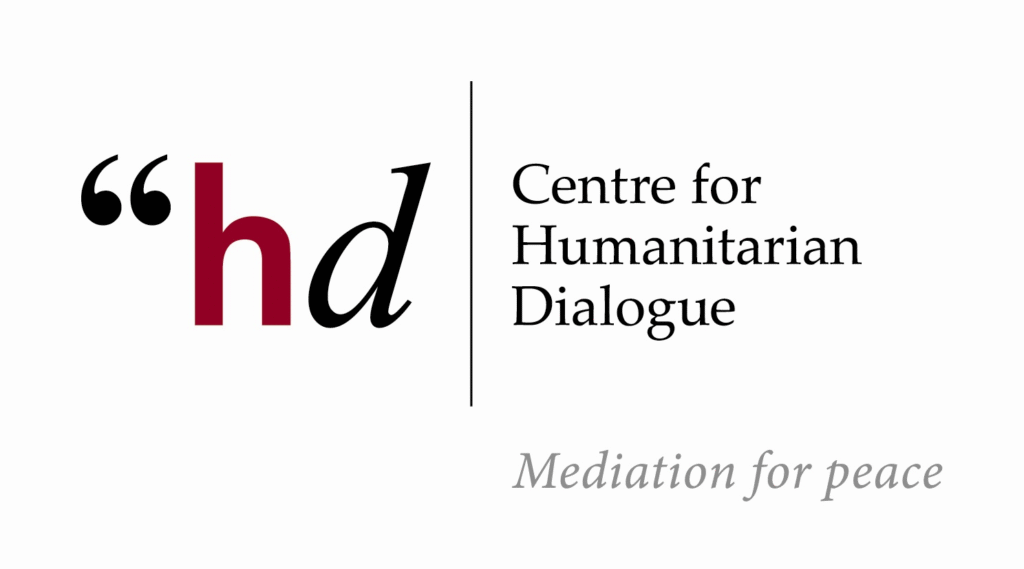
In May 2013, Kellenberger was elected by the Swiss Peace Foundation as the new President of the Board of Trustees, effective 10 September 2013.

Karola Ruth Westheimer (née Siegel), better known as Dr. Ruth, was a German-American sex therapist and talk show host.
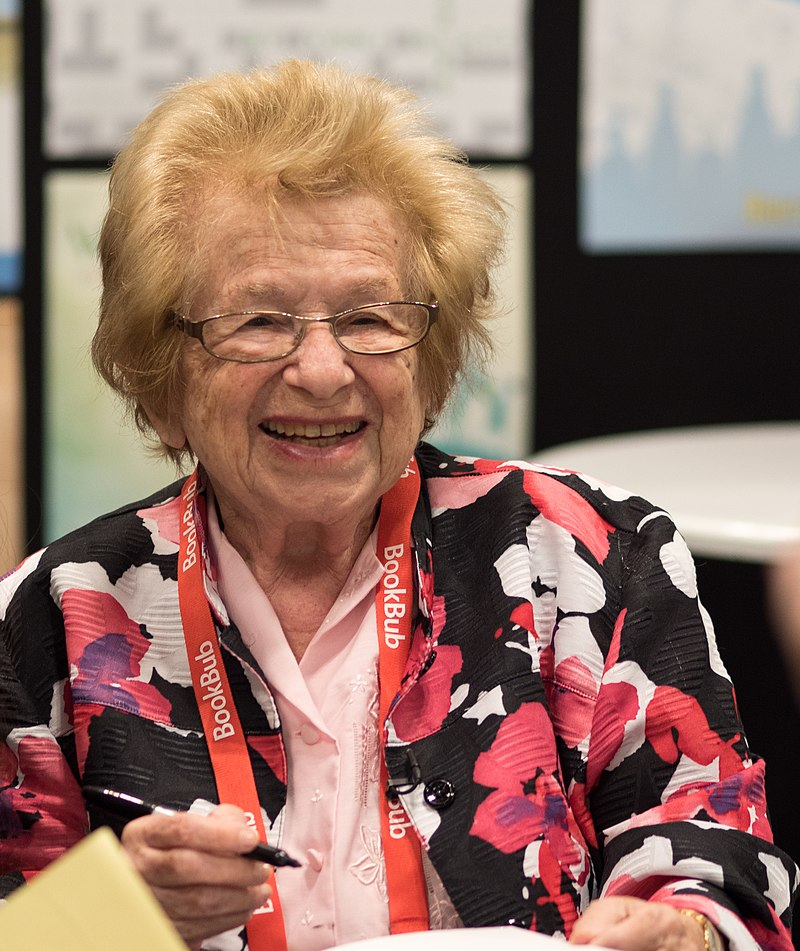
Above: Dr. Ruth (1928 – 2024)
Westheimer’s mother and grandmother decided that Nazi Germany was too dangerous for her, due to the growing Nazi violence.
Therefore, a few weeks later, in January 1939, they sent her on the Kindertransport, an organized Jewish children’s rescue train to Switzerland, though she desperately did not want to leave.
Ruth, then aged 10, was never hugged again as a child.
She arrived at an orphanage of a Jewish charity in Heiden, as one of 300 Jewish children, some as young as six years of age.
By the end of World War II, nearly all of them were orphans, as their parents never made it out of Germany and were murdered by the Nazis.
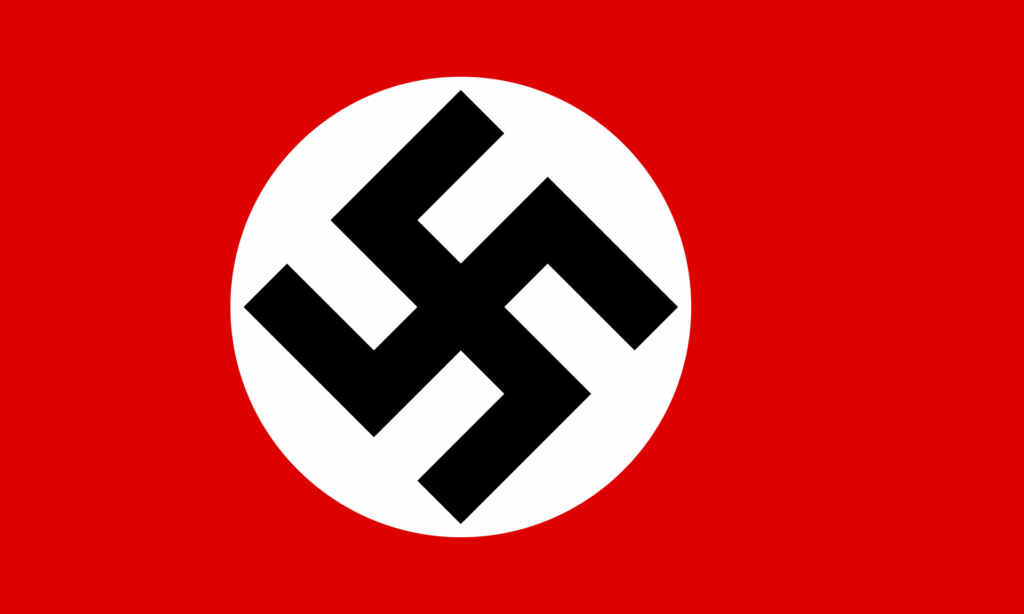
Above: Flag of Nazi Germany (1933 – 1945)
In the orphanage she was given cleaning responsibilities and took on the role of a caregiver and mother-like figure to the younger children.
She remained at the orphanage for six years.
Girls at the orphanage were not allowed to take classes at the local school.
However, a boy at the school secretly loaned her his textbooks at night so she could read them in secret and continue her education.
While at the Swiss orphanage, Westheimer corresponded with her mother and grandmother via letters.
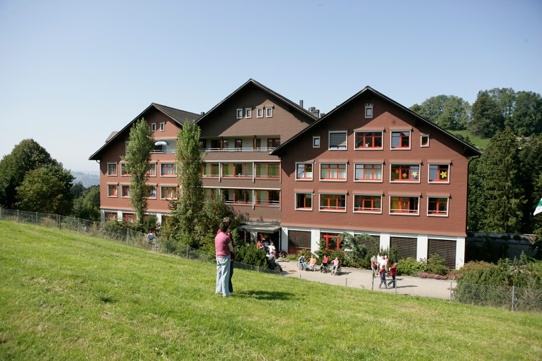
Above: Waldheim, Heiden
Their letters ceased in 1941, when her parents and her paternal grandmother were deported to Łódź Ghetto (Poland) on 20 October 1941.
There, her father and his mother died in 1942.
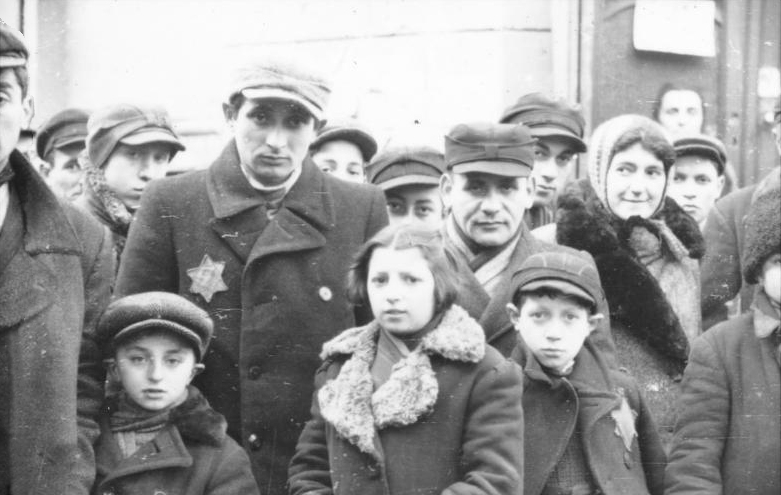
Before learning about this later in her life, she had believed that her father was murdered in the Auschwitz concentration camp in 1942.
There is no information about the specific circumstances of her mother’s death.
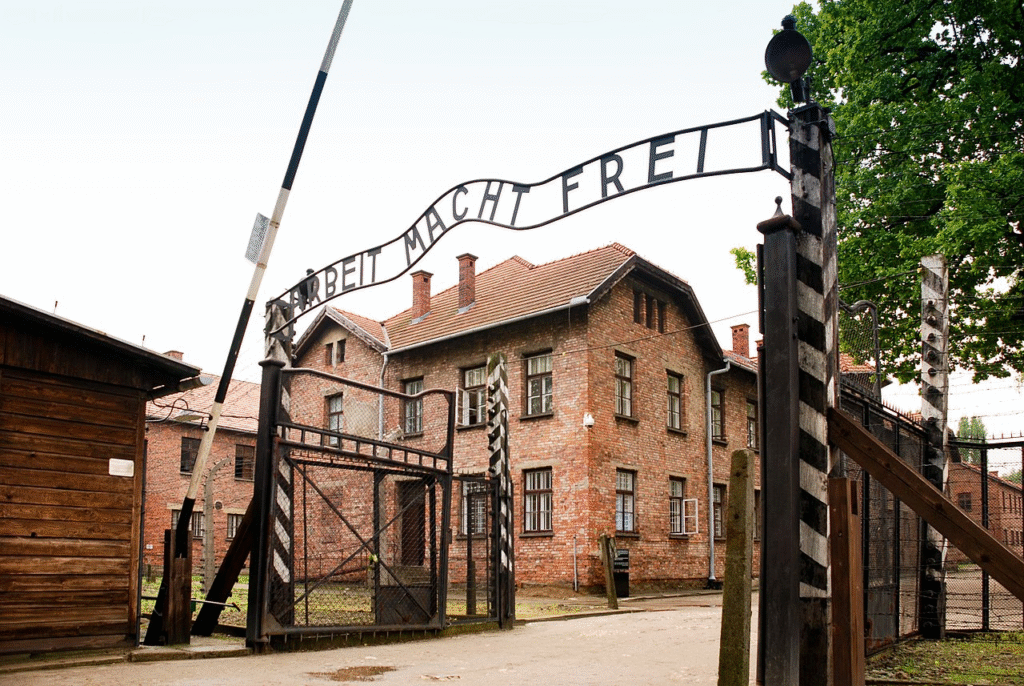
Above: Auschwitz Concentration Camp, Poland
In the database at the Yad Vashem World Holocaust Remembrance Center, Westheimer’s mother is categorized as verschollen, or “disappeared/murdered“.
In addition to Westheimer’s parents, all of her other relatives lost their lives during the Holocaust.
For many years, she lived with an “irrational guilt“.
She thought that if she had stayed in Germany, she could have saved her parents.
Later, she said the guilt had been replaced by an admiration for her parents’ sacrifice in sending her to safety, saying:
“I would not have the courage to send my own children away like that.“

She remained in Heiden until the end of World War II.
She lived in British Mandatory Palestine until 1950.
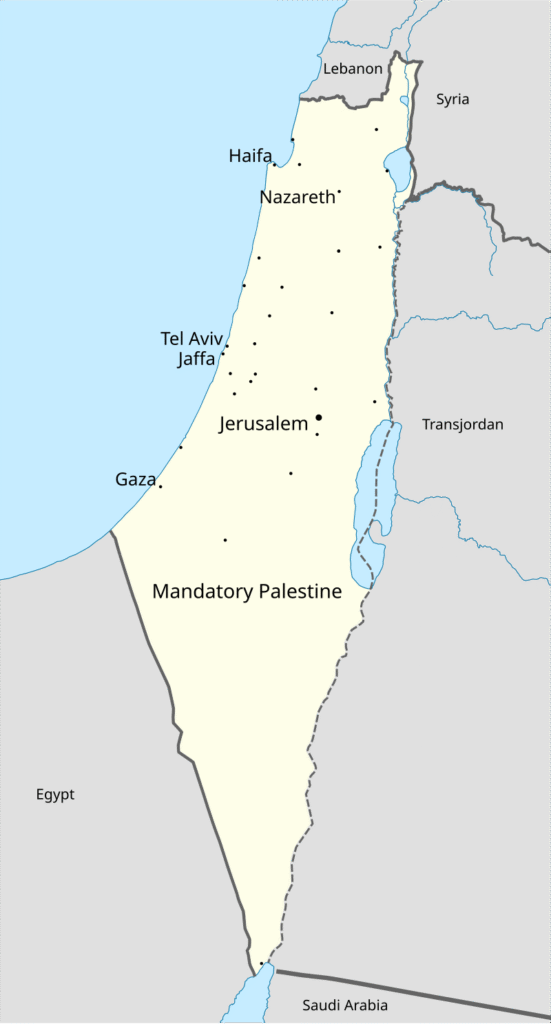
Above: British Mandatory Palestine (1920 – 1948)
After she immigrated to Mandatory Palestine in September 1945, at the age of 17, she joined Kibbutz Ramat David and worked in agriculture.
Told her name was too German, she changed her name from Karola to her middle name, Ruth and went by Ruth K. Siegel, retaining Karola as her middle initial in case her parents came looking for her.
She “first had sexual intercourse on a starry night, in a haystack, without contraception.”
She later told The New York Times that “I am not happy about that, but I know much better now and so does everyone who listens to my radio program.”
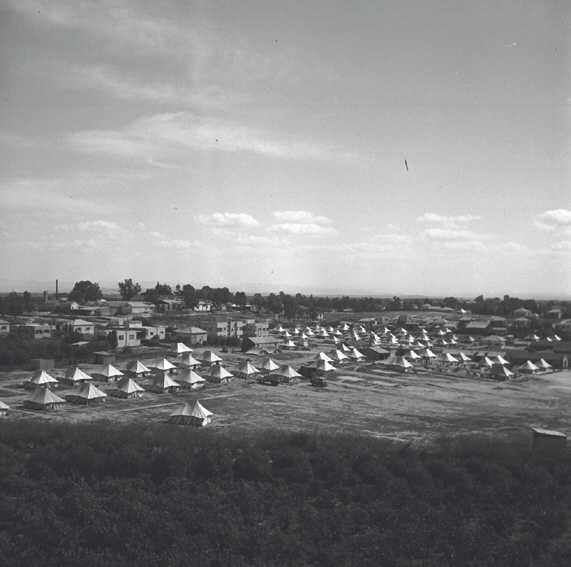
Above: Ramat David, Jezreel Valley, Israel
Next, she lived on Moshav Nahalal, and then, she lived on Kibbutz Yagur.
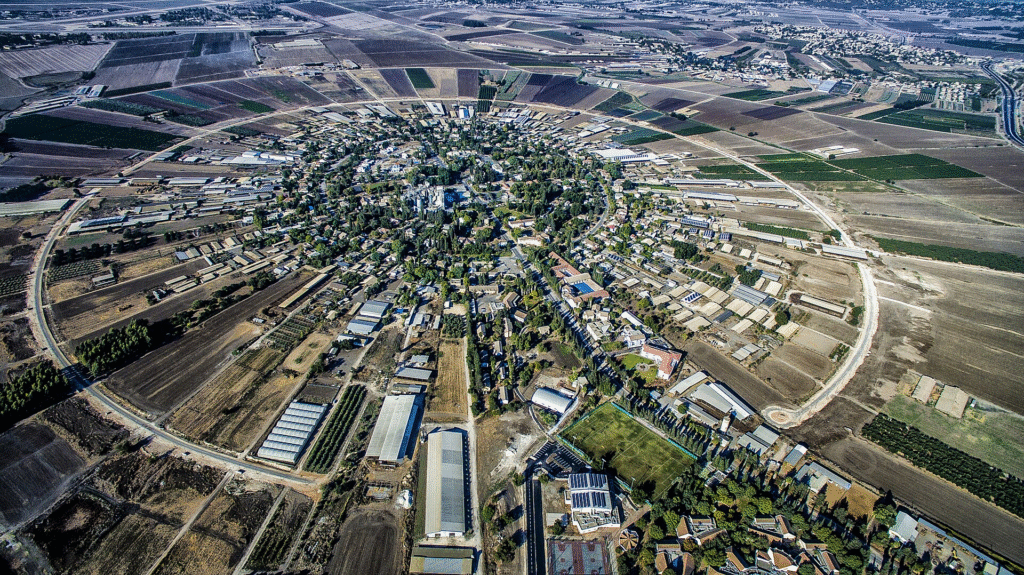
Above: Moshav Nahalal, Israel
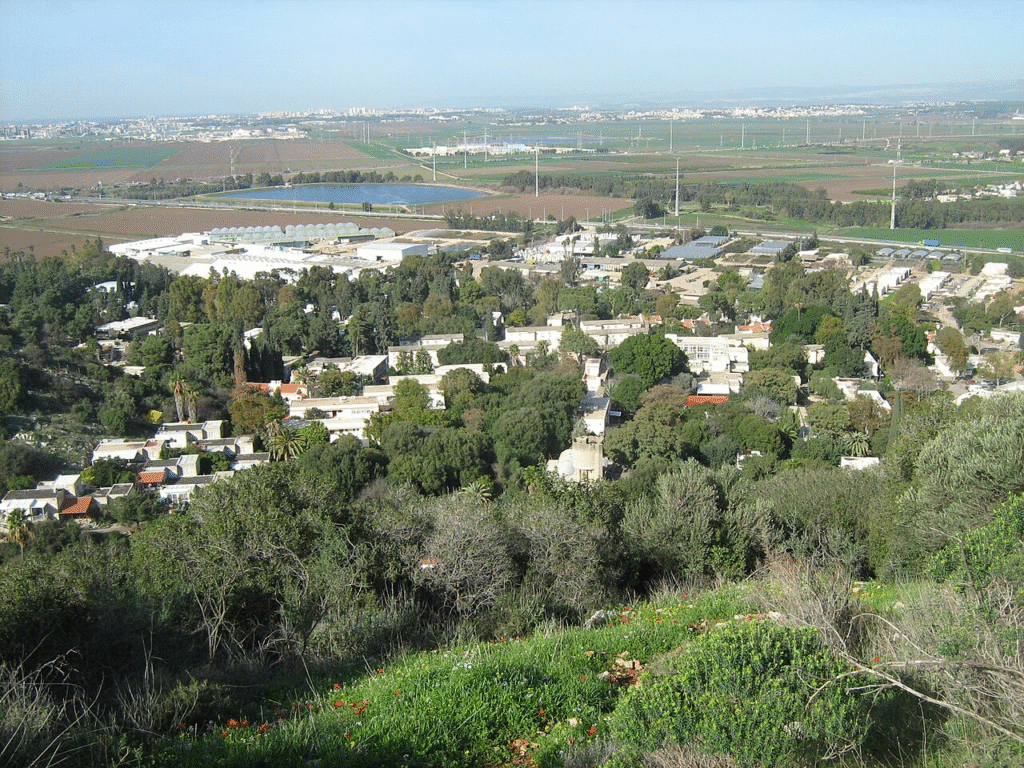
Above: Kibbutz Yagur, Israel
She then moved to Jerusalem in 1948 to study early childhood education.
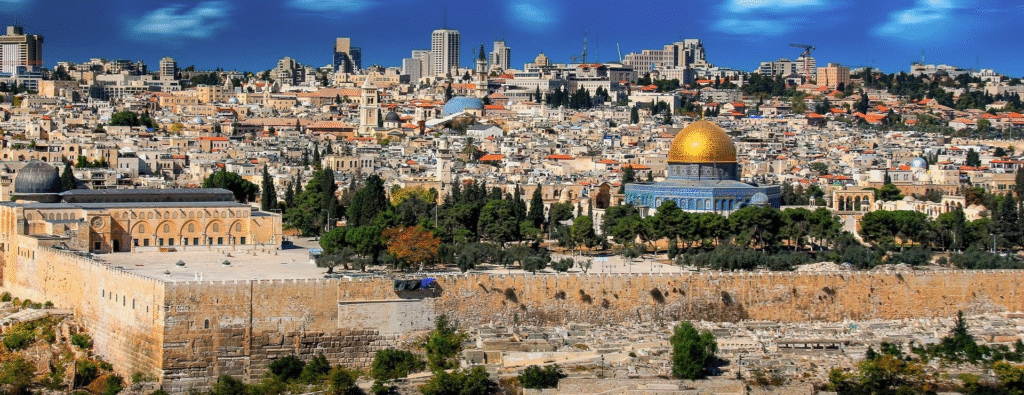
Above: Jerusalem, Israel
Westheimer joined the Haganah Jewish Zionist underground paramilitary organization (later, the Israel Defense Forces) in Jerusalem.

Above: Badge of the Israeli Defense Forces
Because of her diminutive height of 4 feet 7 inches (140 cm), she was trained as a scout and sniper.
Of this experience, she said, “I never killed anybody, but I know how to throw hand grenades and shoot.”
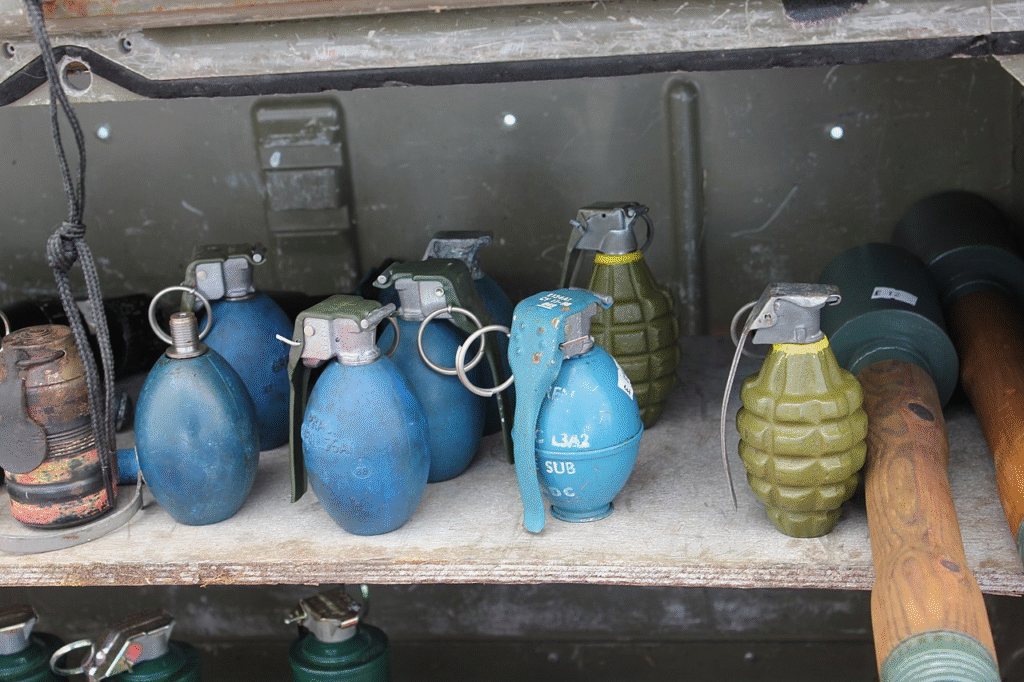
She became an ace sniper, and learned to assemble a rifle in the dark.
When she was 90 years old, she demonstrated that she was still able to put together a Sten gun with her eyes closed.
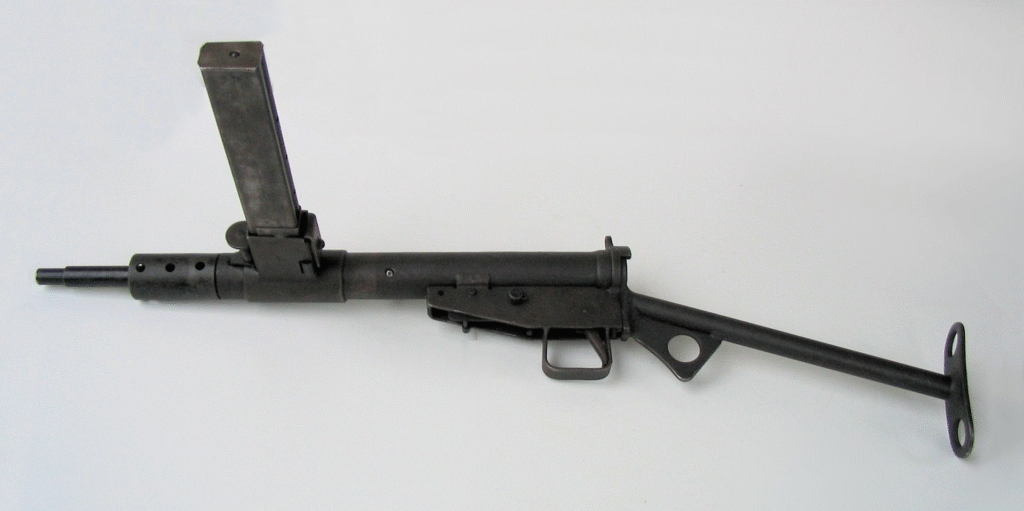
In 1948, on her 20th birthday, Westheimer was seriously wounded in action by an exploding shell during a mortar fire attack on Jerusalem during the 1948 Palestine war (30 November 1947 – 20 July 1949), the first war of the Israeli–Palestinian conflict and the broader Arab–Israeli conflict.
The explosion killed two girls who were right next to her.
Temporarily paralyzed and with two injured feet (one missing a top portion), she spent months in a recuperative ward before walking again.
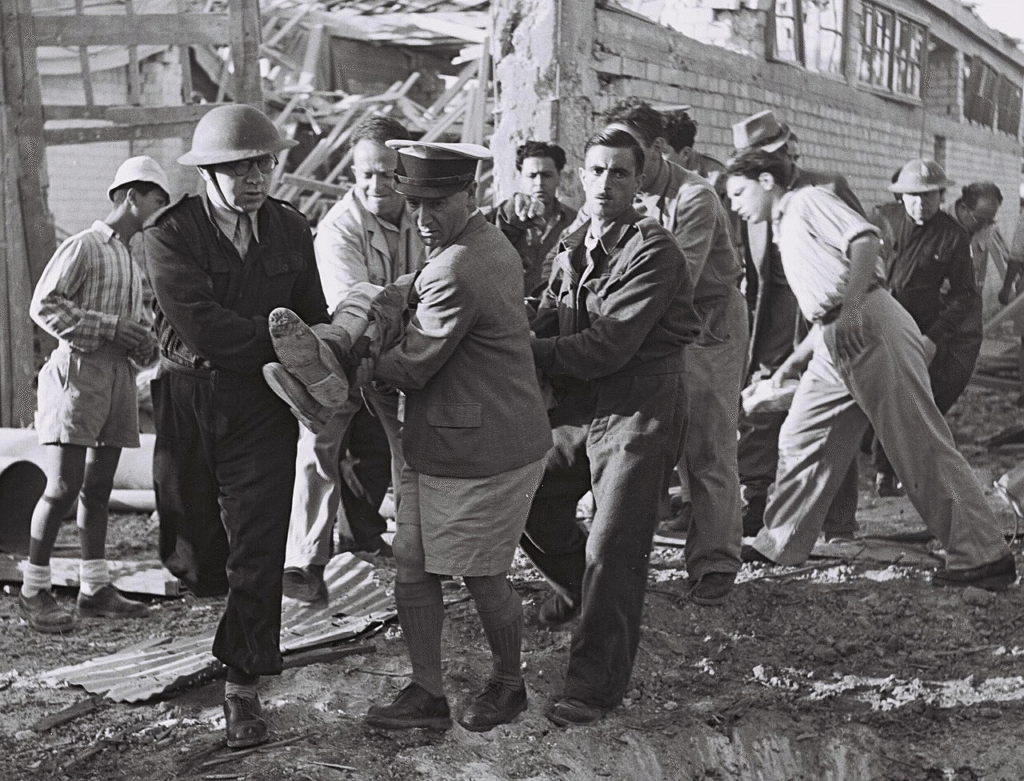
Above: Scene from the Palestine War
In 2018 she said that she still visited Israel every year.
She felt that it was her real home.
The following year said that she was and is a Zionist.

Above: Emblem of Israel
In 1950, at the age of 22, Westheimer married and moved to France with her first husband, David Bar-Haim, an Israeli soldier who had been accepted to medical school in Paris.
There, she studied psychology at the University of Paris (the Sorbonne), and earned an undergraduate degree despite not having had a high school education.
She supported herself by teaching kindergarten.
She then taught psychology at the Sorbonne.
Her first marriage ended as Bar-Heim eventually gave up his studies and decided to return to Israel while Westheimer remained in Paris to continue her studies.
They divorced in 1955.
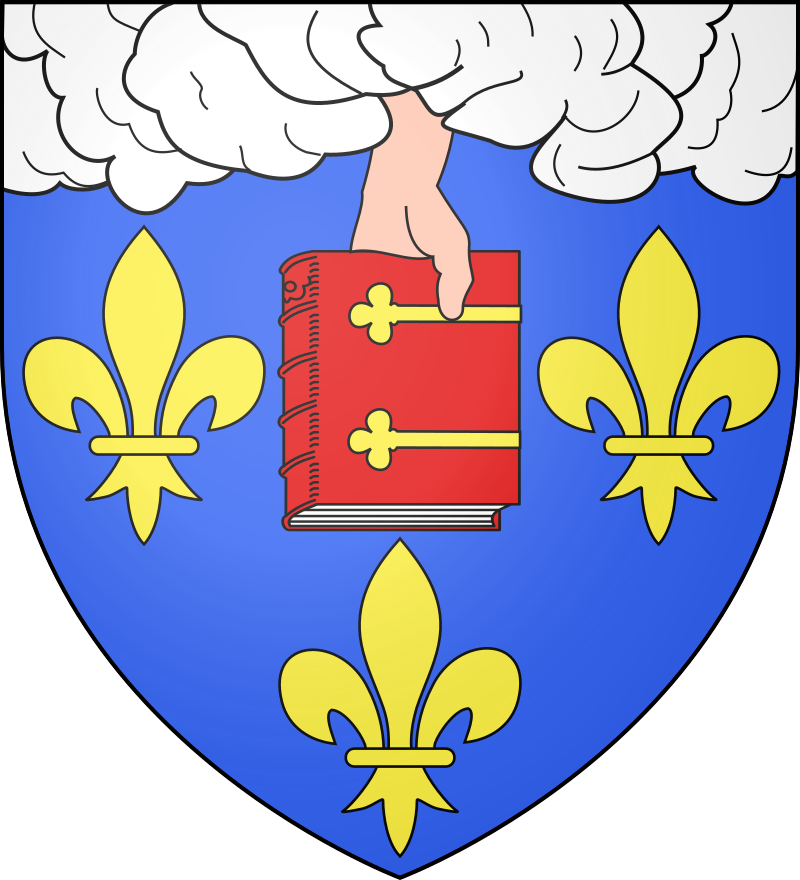
Above: Coat of arms of the University of Paris
In 1956, using a 5,000 German marks restitution cheque paid by the German government to children whose education was disrupted by the Holocaust, she immigrated to the United States with her French boyfriend, Dan Bommer, settling in Washington Heights, Manhattan.
They married and had a daughter, Miriam, but soon divorced.
She worked as a maid to put herself through graduate school.
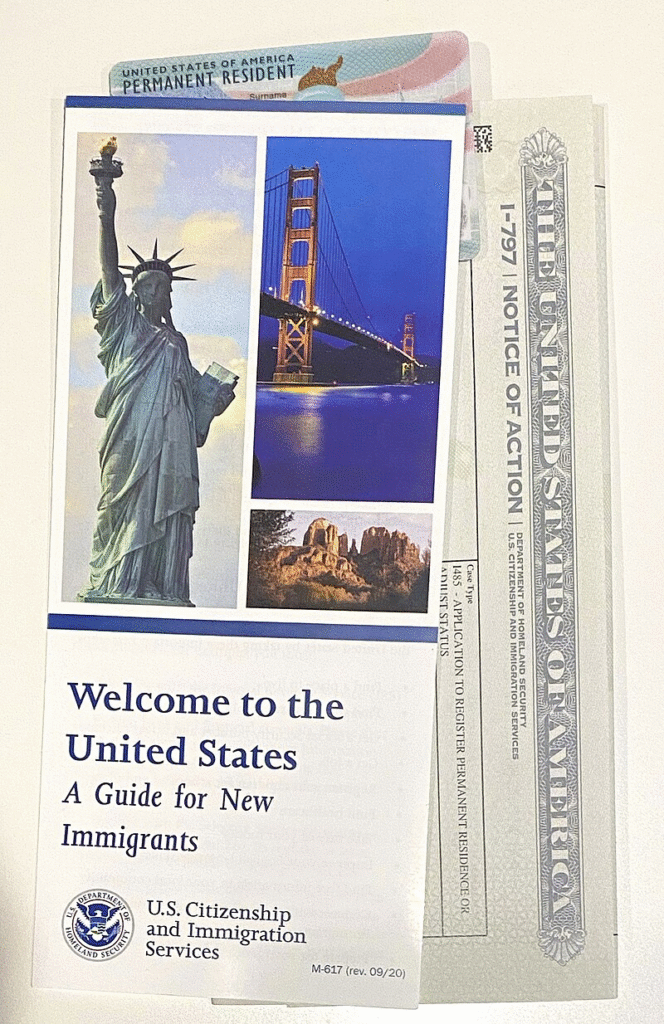
Westheimer earned a Master’s degree in sociology from The New School in 1959, with the help of a scholarship.
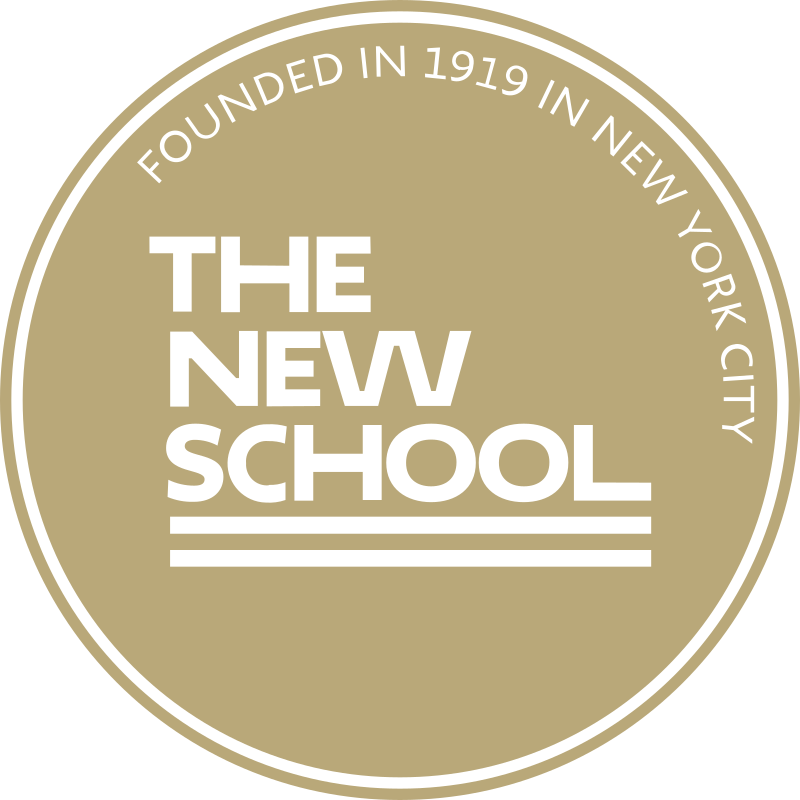
In 1970, at 42 years old, she received a Doctor of Education (Ed.D.) degree in Family-Life Studies from Teachers College, Columbia University with the help of a scholarship.
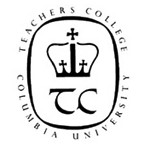
She then trained as a sex therapist at the New York Hospital-Cornell Medical Center/Cornell Medical School, working for seven years under sex therapist Helen Singer Kaplan, two years training under her and five years training others.

Described as “Grandma Freud” and the “Sister Wendy of Sexuality“, Westheimer helped revolutionize talk about sex and sexuality on radio and television, advocating for speaking openly about sexual issues.
(Sister Wendy (1930 – 2018) was a British Catholic religious sister and art historian who became known internationally during the 1990s when she presented a series of BBC television documentaries on the history of art.)
Dr. Ruth fielded questions ranging from women who did not have orgasms, to the best time of day to have sex (the morning), to men with premature ejaculations, to foreplay, to oral sex, to sexual fantasies (“Embrace them. If you want to believe that a whole football team is in bed with you, that’s fine.“), to masturbation, to erections, to sexual positions, to the G-spot.
She stressed that: “Anything that two consenting adults do in the privacy of their bedroom or kitchen floor is all right with me.”
She spoke out against engaging in any sexual activity under pressure, and against pedophilia.
She educated her listeners about sexually transmitted diseases, and spoke out strongly in favor of having sex, in favor of contraception being used, in favor of the availability of abortion as an aid for contraception failures, in favor of sex within relationships rather than one-night stands, in favor of funding for Planned Parenthood, and in favor of research on AIDS.
She became known for giving serious advice while being candid and funny, but warm, cheerful, and respectful, and for her tag phrase: “Get some.”
One journalist described her as a “world class charmer“.
One journalist described her voice as “a cross between Henry Kissinger and Minnie Mouse“.
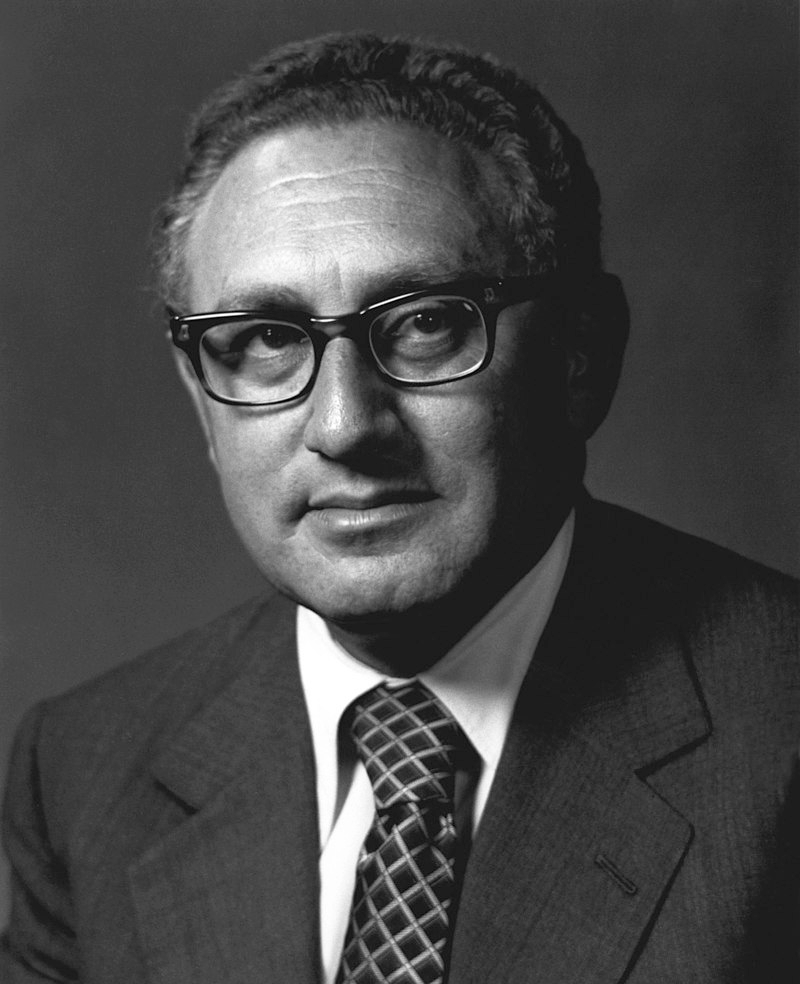
Above: US Secretary of State Henry Kissinger (1923 – 2023)

Above: Minnie Mouse
She was noted for having “an accent only a psychologist could love“, one that was “dripping chicken soup“.

In 1984 The New York Times noted that on radio the 55-year-old had risen “from obscurity to almost instant stardom.”
One journalist wrote later in The New York Times:
“It’s hard to explain how revolutionary her humor, candor and sexual explicitness seemed for the time.“

Westheimer’s media career began in 1980 when she was 52 years old, and her radio show, Sexually Speaking, debuted on WYNY-FM in New York City.
In it, she answered questions called in by listeners, and the show became nationally syndicated.
She was offered the opportunity after she gave a lecture to New York broadcasters about the need for sex education programming to help deal with issues of contraception and unwanted pregnancies.
Betty Elam, the community affairs manager at WYNY, was impressed with her talk and offered Westheimer $25 per week to make Sexually Speaking, which started as a 15-minute show airing every Sunday at midnight, which was historically a dead time.
By 1981, as the show attracted 250,000 listeners every week despite the network not doing any promotion for it — growing simply by word of mouth — it was extended to be one hour long on Sunday nights, starting at 10 pm.
It was soon picked up by 90 stations across the United States.
It ran for a decade.

The show broke taboos of the time against speaking publicly and explicitly about sex.
The New York Times described it as one of the station’s “oddest shows“, and among its biggest draws.
A New York University professor of human sexuality made listening to her show a class assignment.
By 1982, her show was WYNY’s top-rated phone-in talk show.
Think of a female Frasier talking candidly about sex.
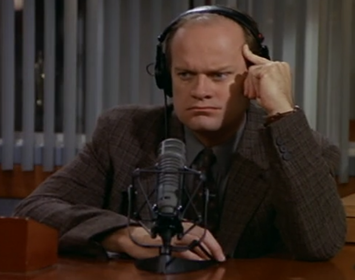
Above: US psychologist Frasier Crane (Kelsey Grammer), Cheers (1982 – 1993) / Frasier (1993 – 2004)(2023 – )
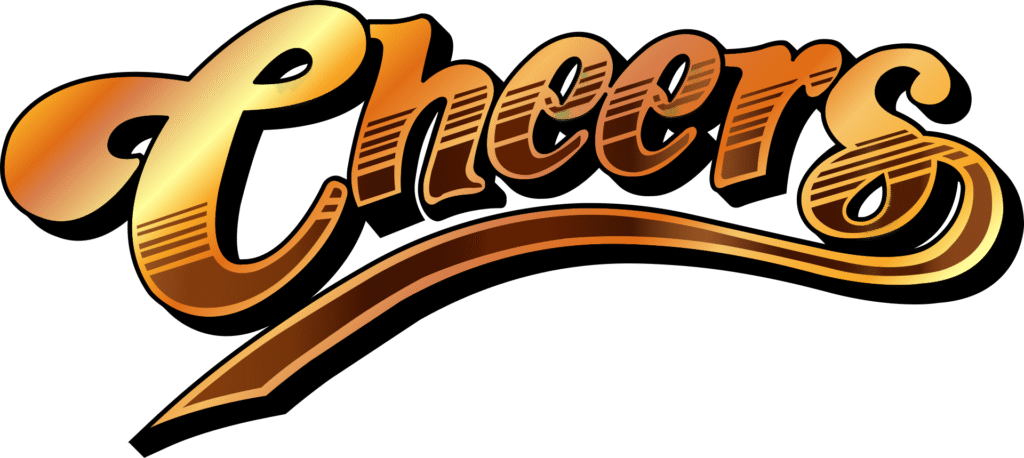
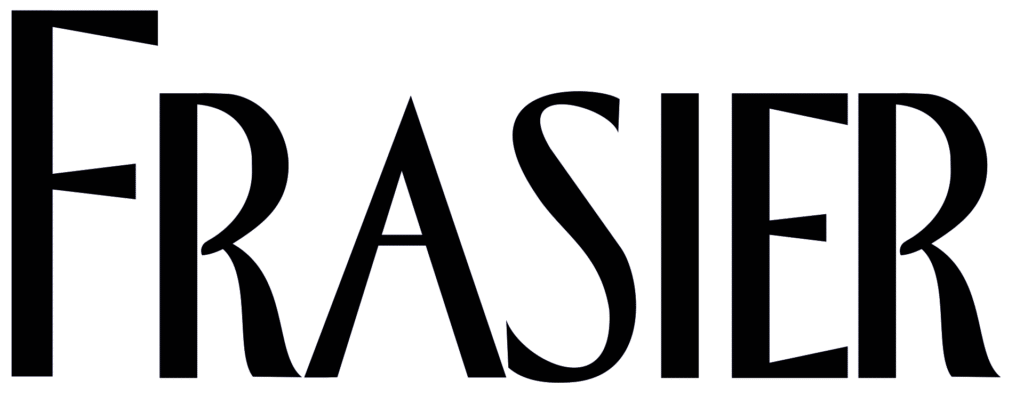
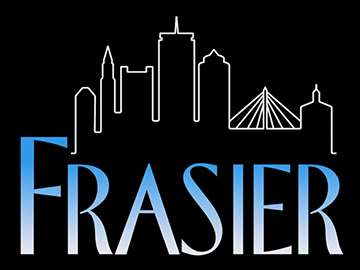
Singer Pattie Brooks recorded a song as an ode to her, “Dr. Ruth“, with a trendy, dance-rock tinged, high pressure beat.

By 1983 her show was the top-rated radio show in the country’s largest radio market.
In 1984 NBC Radio began syndicating the radio program nationwide— it was now heard in 93 markets.
She went on to produce her radio show until 1990.

In 1984, Westheimer began hosting several television programs on the Lifetime TV network, and one in syndication.

Her first show was Good Sex! With Dr. Ruth Westheimer, airing for a half hour at 10 pm on weeknights.
She ended each show by reminding her audience:
“Have good sex!“
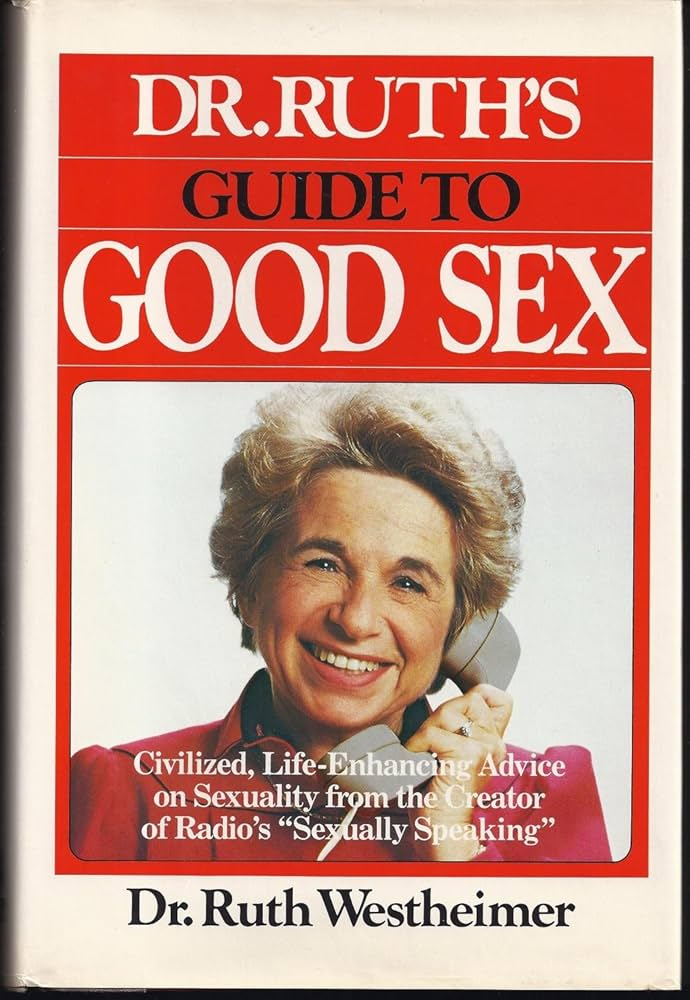
Heiden-born Hugo Thiemann (1917 – 2012) was a Swiss R & D manager and visionary.
He was a founding member of the Club of Rome.
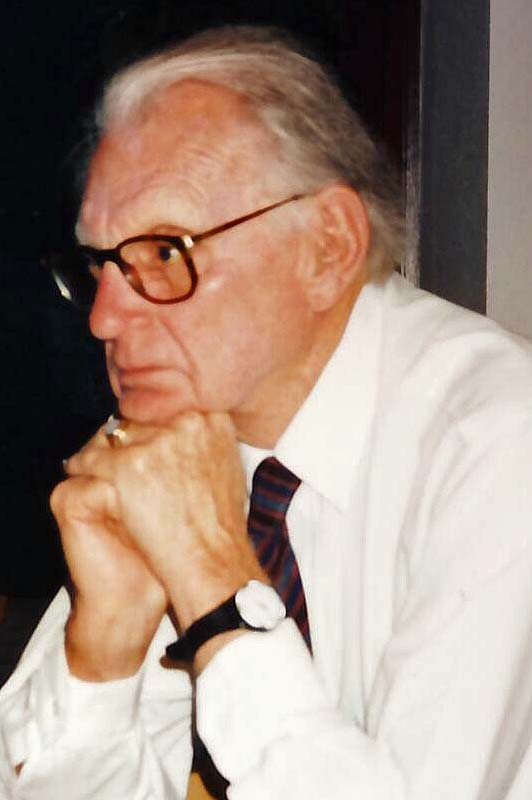
Above: Swiss R & D engineer / thought leader Hugo Thiemann (1917 – 2012)
The Club of Rome is a nonprofit, informal organization of intellectuals and business leaders whose goal is a critical discussion of pressing global issues.
The Club of Rome operates with the objective of identifying the most important future problems of humanity and the planet through holistic, interdisciplinary and long-term research, evaluating alternative future scenarios and risk analyses, developing and proposing practical courses of action, communicating new findings and trends to decision-makers and the public, and initiating social debates to improve the future.
The current work program of the Club of Rome focuses primarily on the topics of reformulating the goals and changing the functioning of our economic systems, as well as decoupling prosperity and resource consumption, and beyond that on securing livelihoods and the importance of decent work.
The Club of Rome was founded in 1968 at Accademia dei Lincei in Rome, Italy.
In 1965, the Italian industrialist Aurelio Peccei gave a speech about the dramatic scientific and technological changes happening in the world.
The speech was noticed by Alexander King, a British scientist who had advised the British government, and who was currently serving as Director-General for Scientific Affairs at the Organization for Economic Cooperation and Development (OECD).
King arranged a meeting with Peccei.
The pair shared a lack of confidence that the problems faced by the world could be solved by development and technological progress.
In April 1968, Peccei and King convened a small international group of people from the fields of academia, civil society, diplomacy, and industry met at Villa Farnesina in Rome.
The background paper to set the tone of the meeting was entitled “A tentative framework for initiating system wide planning of world scope“, by Austrian OECD consultant Erich Jantsch.
However, the meeting was described as a “monumental flop“, with discussions becoming bogged down in technical and semantic debates.
After the meeting, Peccei, King, Jantsch and Hugo Thiemann decided to form the Club of Rome, named for the city of their meeting.

Central to the formation of the club was Peccei’s concept of the problematic.
It was his opinion that viewing the problems of humankind —environmental deterioration, poverty, endemic ill-health, urban blight, criminality — individually, in isolation or as “problems capable of being solved in their own terms“, was doomed to failure.
All are interrelated.
“It is this generalized meta-problem (or meta-system of problems) which we have called and shall continue to call the ‘problematic‘ that inheres in our situation.“
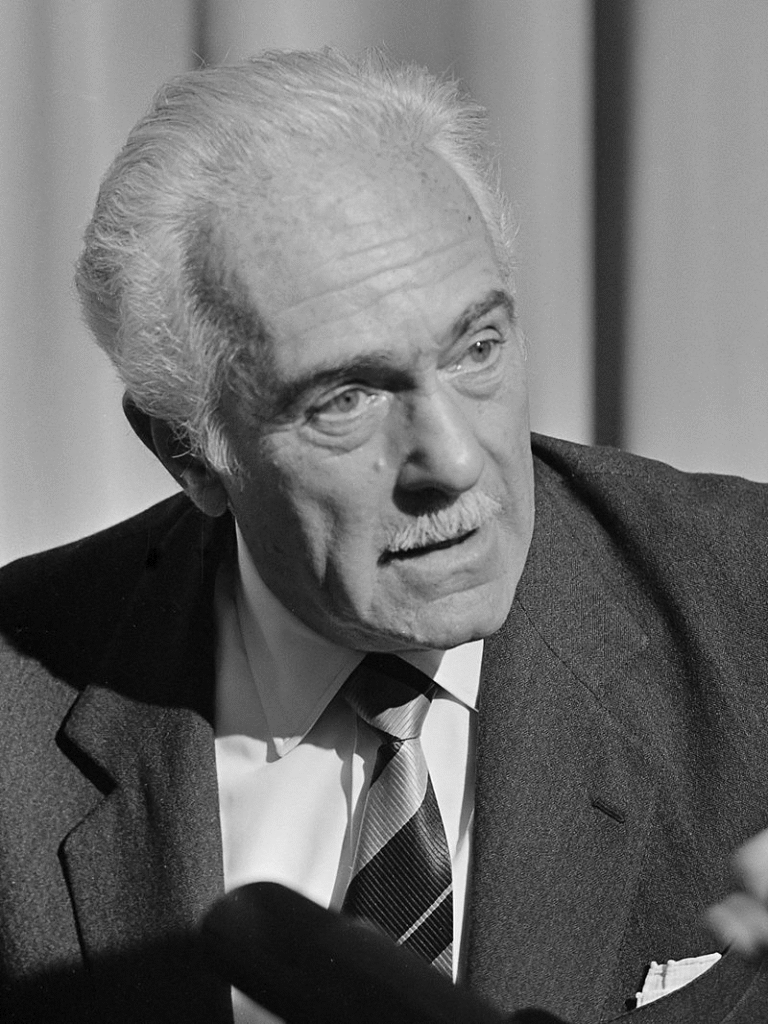
Above: Italian industrialist Aurelio Peccei (1908 – 1984)
In October 1968, the OECD held a symposium in Bellagio, Italy, in collaboration with the Rockefeller Foundation, at which several new members joined the Club.
The symposium focused on the dangers of exponential growth —which by its nature cannot continue forever — and ended with participants signing “The Bellagio Declaration on Planning“, which emphasized the need to overcome global problems through coordination.
For a brief period, the Club’s ideas held sway within the OECD, thanks to King’s efforts in promoting the group’s work.

Above: Logo of the Organization for Economic Co-operation and Development
When Secretary General Thorkil Kristensen formed a group of ten science and economic experts in 1969 to study problems for modern societies, four of the ten were members of the Club of Rome.
In 1970, Peccei’s vision was laid out in a document written by Hasan Özbekhan, Erich Jantsch, and Alexander Christakis.
Entitled, The Predicament of Mankind – Quest for Structured Responses to Growing Worldwide Complexities and Uncertainties: A PROPOSAL, the document would serve as the roadmap for the Limits to Growth project.
The Club of Rome stimulated considerable public attention with the first report to the club, The Limits to Growth.
Published in 1972, its computer simulations suggested that growth of production and consumption could not continue indefinitely because of either resource depletion or unmanageable levels of pollution.
The 1973 oil crisis increased public concern about this problem.
The report went on to sell 30 million copies in more than 30 languages, making it the best-selling environmental book in history.
Although the Club of Rome had enjoyed some influence at the OECD, their questioning of the value of growth “deepened the internal fractures within the OECD and provoked hostile reactions, leading to a revitalization of the strong pro-growth position“.
A 1973 booklet on the OECD’s approach to environmental issues stated that the role of governments in “an acceptable human environment must now be developed in the framework of policies for economic growth“.
The OECD had given up on the Club of Rome, and set its course on a trajectory of unfettered growth.
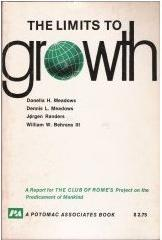
Even before The Limits to Growth was published, Eduard Pestel and Mihajlo Mesarovic of Case Western Reserve University had begun work on a far more elaborate model.
It distinguished ten world regions and involved 200,000 equations compared with 1,000 in the Meadows model.
The research had the full support of the club and its final publication, Mankind at the Turning Point, was accepted as the official “second report” to the Club of Rome in 1974.
In addition to providing a more refined regional breakdown, Pestel and Mesarovic had succeeded in integrating social as well as technical data.
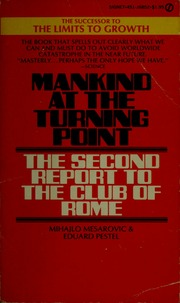
The second report revised the scenarios of the original Limits to Growth and gave a more optimistic prognosis for the future of the environment, noting that many of the factors involved were within human control and therefore that environmental and economic catastrophe were preventable or avoidable.
“If the present growth trends in world population, industrialization, pollution, food production, and resource depletion continue unchanged, the limits to growth on this planet will be reached sometime within the next one hundred years.
The most probable result will be a rather sudden and uncontrollable decline in both population and industrial capacity.
It is possible to alter these growth trends and to establish a condition of ecological and economic stability that is sustainable far into the future.
The state of global equilibrium could be designed so that the basic material needs of each person on Earth are satisfied and each person has an equal opportunity to realize his individual human potential.
If the world’s people decide to strive for this second outcome rather than the first, the sooner they begin working to attain it, the greater will be their chances of success.
These conclusions are so far-reaching and raise so many questions for further study that we are quite frankly overwhelmed by the enormity of the job that must be done.
We hope that this book will serve to interest other people, in many fields of study and in many countries of the world, to raise the space and time horizons of their concerns, and to join us in understanding and preparing for a period of great transition – the transition from growth to global equilibrium.“
Limits to Growth, Introduction
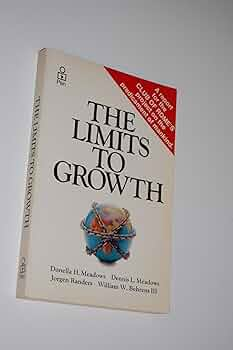
In 1991, the club published The First Global Revolution.
It analyses the problems of humanity, calling these collectively or in essence the “problematique“.
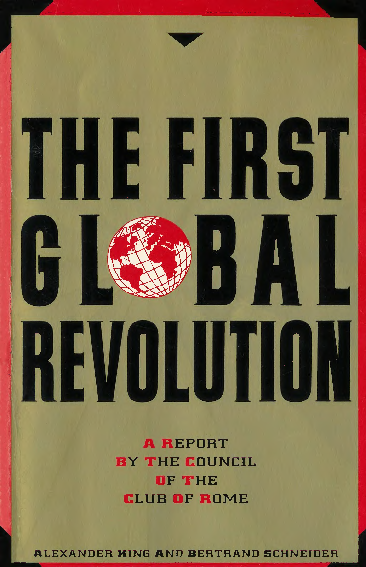
It notes that, historically, social or political unity has commonly been motivated by enemies in common:
The need for enemies seems to be a common historical factor.
Some states have striven to overcome domestic failure and internal contradictions by blaming external enemies.
The ploy of finding a scapegoat is as old as mankind itself — When things become too difficult at home, divert attention to adventure abroad.
Bring the divided nation together to face an outside enemy, either a real one, or else one invented for the purpose.
With the disappearance of the traditional enemy, the temptation is to use religious or ethnic minorities as scapegoats, especially those whose differences from the majority are disturbing.
Every state has been so used to classifying its neighbors as friend or foe, that the sudden absence of traditional adversaries has left governments and public opinion with a great void to fill.New enemies have to be identified, new strategies imagined, and new weapons devised.
In searching for a common enemy against whom we can unite, we came up with the idea that pollution, the threat of global warming, water shortages, famine and the like, would fit the bill.In their totality and their interactions these phenomena do constitute a common threat which must be confronted by everyone together.
But in designating these dangers as the enemy, we fall into the trap, which we have already warned readers about, namely mistaking symptoms for causes.
All these dangers are caused by human intervention in natural processes, and it is only through changed attitudes and behavior that they can be overcome.
The real enemy then is humanity itself.“
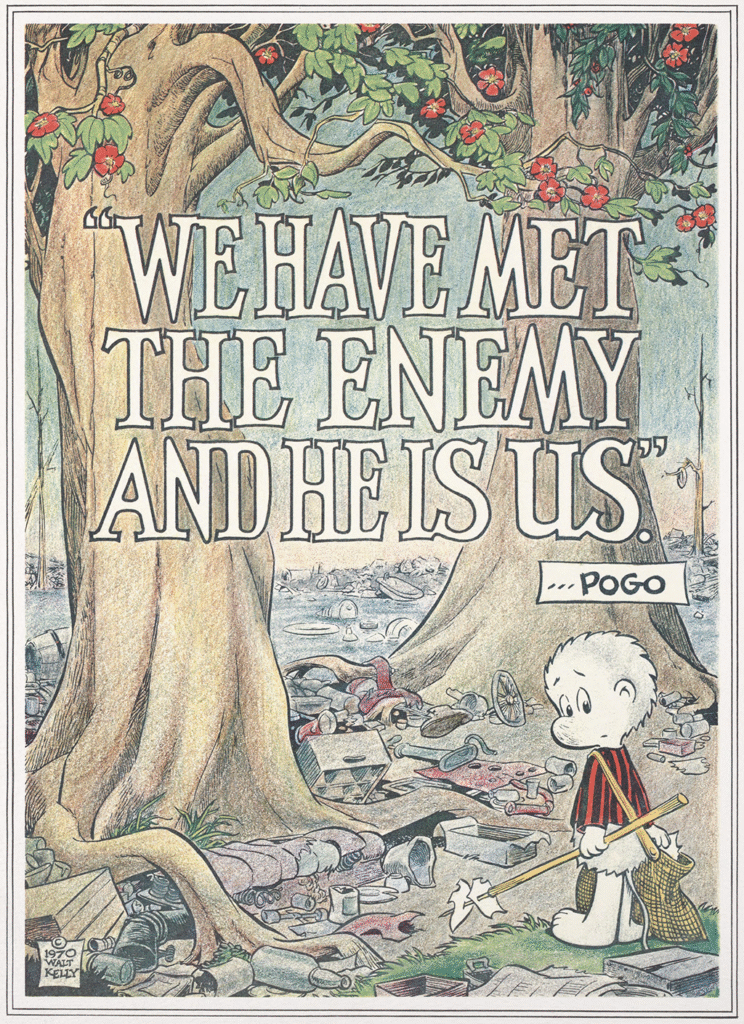
In 2001, the Club of Rome established a think tank, called tt30, consisting of about 30 men and women, ages 25 – 35.
It aimed to identify problems in the world and suggest approaches to addressing them, from the perspective of youth.
In 2008, the club moved its headquarters from Hamburg to Winterthur in Switzerland.
In 2018, the Club of Rome co-Presidents Ernst Ulrich von Weizsäcker and Anders Wijkman collaborated with over 30 members to publish “Come On! Capitalism, Short-termism, Population and the Destruction of the Planet“.
This publication advocated for profound changes in the interactions between governments, businesses, financial systems, innovators, and families to foster sustainable planetary stewardship.
Four years later, in 2022, the Club of Rome introduced “Earth for All: A Survival Guide for Humanity“, released 50 years after the pioneering “Limits to Growth“.
This new publication, unveiled at events including the closing of the New York Stock Exchange, stems from the Earth4All Initiative — a collaborative effort among institutions such as the Potsdam Institute for Climate Impact Research and the Stockholm Resilience Centre.
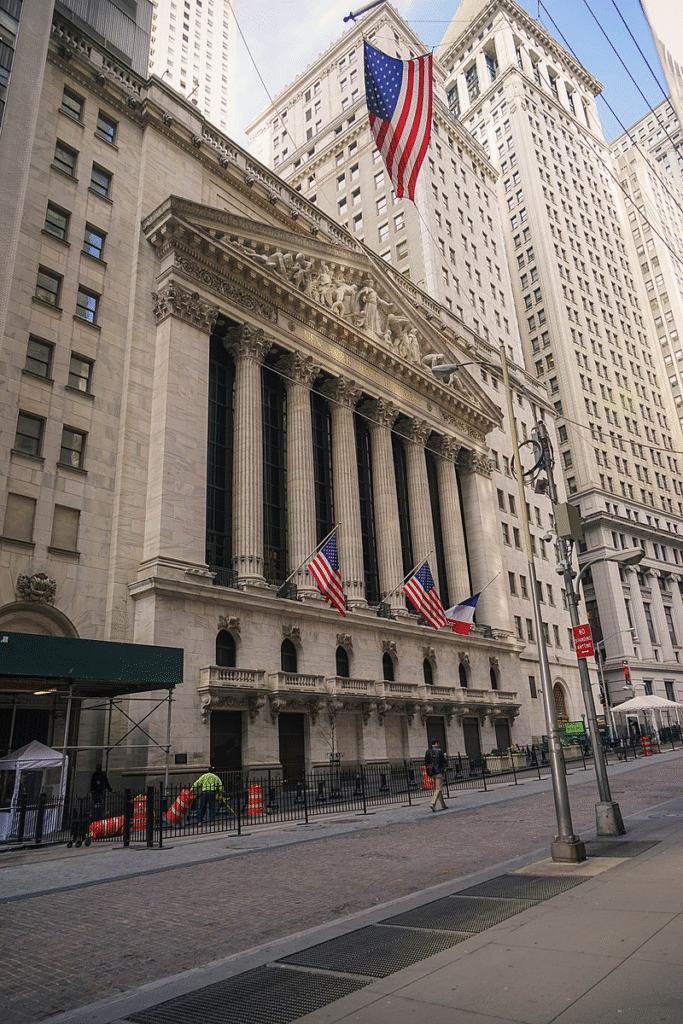
Above: New York Stock Exchange
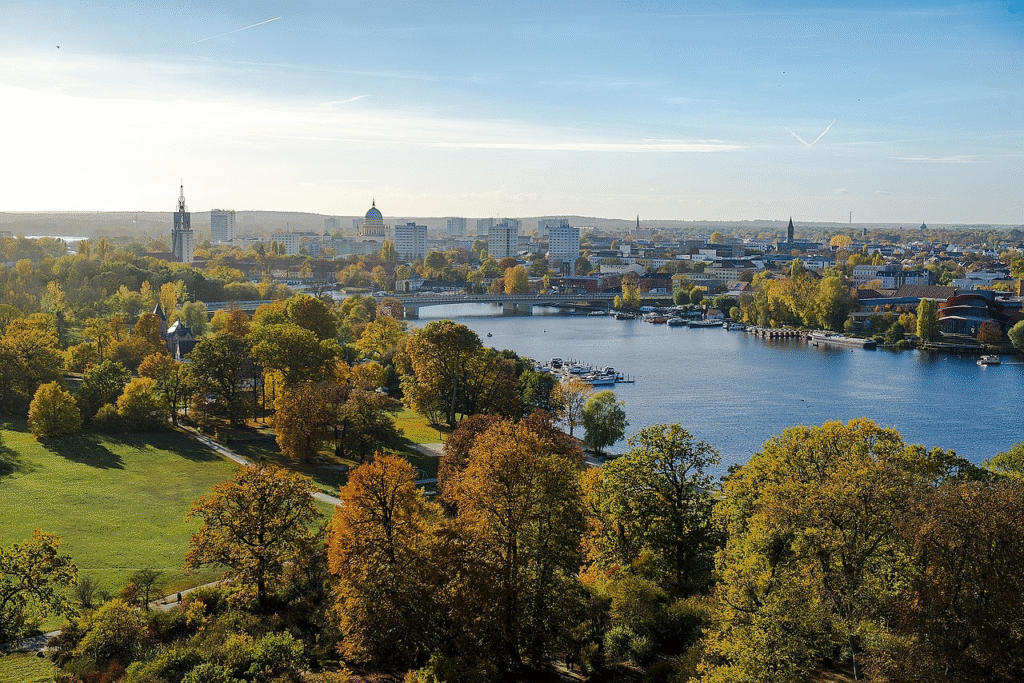
Above: Potsdam, Brandenburg, Deutschland

Above: Stockholm, Sverige (Sweden)
The Club of Rome consists of 100 full members selected from current and former heads of state and government, UN administrators, high-level politicians and government officials, diplomats, scientists, economists, and business leaders from around the globe.
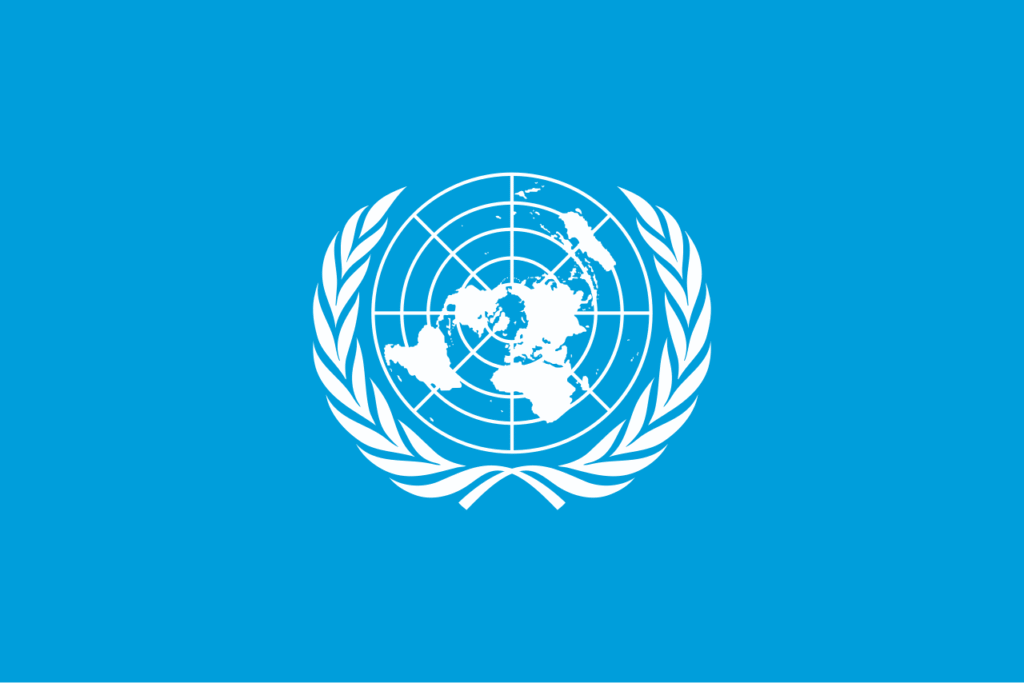
Above: Flag of the United Nations
It stimulated considerable public attention in 1972 with the first report to the Club of Rome, The Limits to Growth.
Since 1 July 2008, the organization has been based in Winterthur, Switzerland.
According to its website, the Club of Rome is composed of “scientists, economists, businessmen, international high civil servants, heads of state and former heads of state from all five continents who are convinced that the future of humankind is not determined once and for all and that each human being can contribute to the improvement of our societies“.

Above: Winterthur, Canton Zürich, Schweiz
Over years of development work, the Eidophor large-screen projection system patented by Professor Hugo Fischer was further developed at the Department of Industrial Research (AfiF) at ETH Zurich.

Above: Logo of Swiss Federal Institute of Technology in Zürich
It enabled the first large-screen projection of real-time television images.
Thiemann not only contributed to the device’s development but also oversaw the transfer of the project from the university to Dr. Edgar Gretener AG, founded by his ETH colleague Edgar Gretener, later Gretag, as well as its marketing.

After a demonstration and a lecture on Eidophor in the USA, the famous physicist Robert Oppenheimer spontaneously offered him a position at the Institute for Advanced Study (IAS) in Princeton, New Jersey.
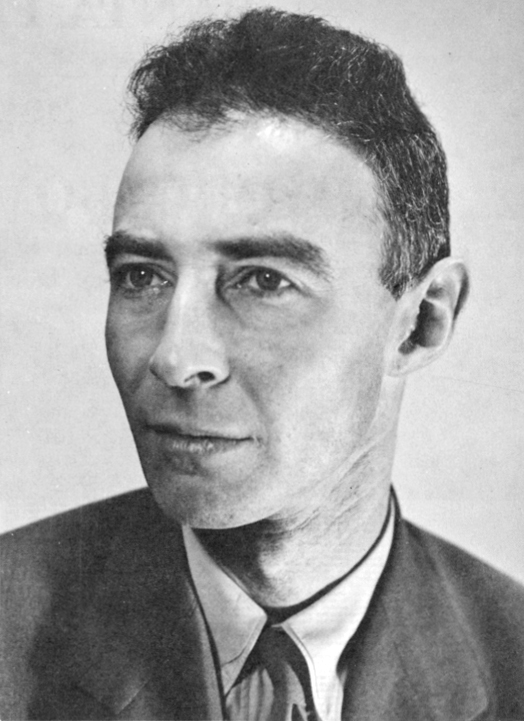
Above: American physicist Robert Oppenheimer (1904 – 1967)
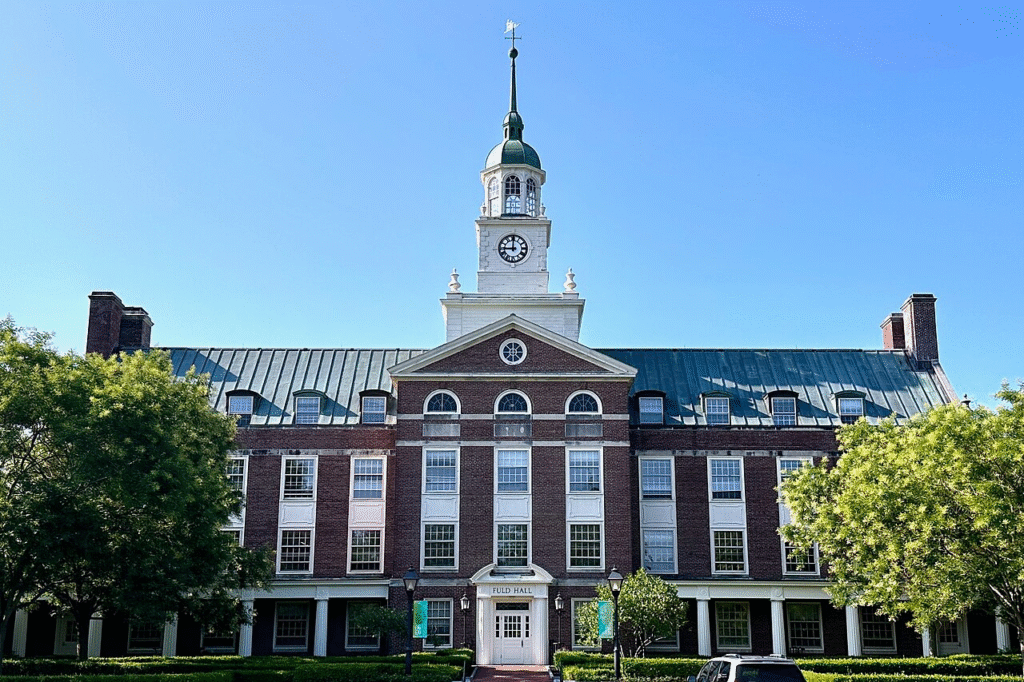
Above: Institute for Advanced Study, Princeton, New Jersey
In 1953, Thiemann preferred to take up a position at the newly founded European branch of the US foundation Battelle Memorial Institute in Carouge near Geneva.
Shortly thereafter, he was appointed Director General of the contract research organization Institut Battelle Genève.
Thanks to contracts from companies such as Philips, Brown Boveri, Sulzer, SNCF and Nestlé, he built this institute into a renowned R & D institution with up to 750 employees.




Above: Logo of the French National Railway Company (Societé National des Chemins de Fer)
During this time, he published his assessment of the future of industrial research in Switzerland.
During this time, he took part in the founding meeting of the Club of Rome in 1968 and became a member of its Executive Committee.
After the founding meeting in Rome, there was still disagreement about how to proceed.
As Director of the Battelle Institute in Geneva, Thiemann offered help.
He presented the project to Federal Councilor Nello Celio in February 1969 and succeeded in obtaining a loan from the Swiss Confederation.
On 29 – 30 June 1970, a meeting was held in Bern, at which Thiemann gave a presentation and the drafting of a report on Club of Rome topics was decided.
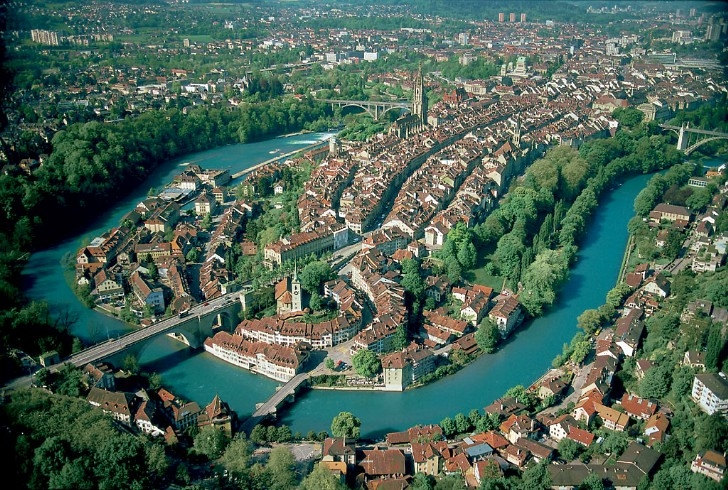
Above: Bern, Canton Bern, Schweiz
The American Jay W. Forrester from MIT in Boston offered to conduct the requested study on five selected topics within the given budget.
He commissioned Dennis Meadows, his wife Donella, and the Norwegian Jørgen Randers.

Two years later, the report “Limits to Growth“ was ready for publication.
Nestlé became aware of Thiemann’s skills as a thought leader and organizer through research assignments at the Battelle Institute.
In 1974, he was appointed to the helm of the subsidiary Nestec SA, heading the entire company’s R & D activities with the rank of Director General.

Among the initiatives developed at that time were drinking water treatment and bottling, as well as new ready-to-use coffee products, now known as Nespresso.


Above: Nespresso logo
David Boadella was a psychotherapist and founder of psychotherapeutic biosynthesis.
From 1988 onwards, he lived in Heiden, where he ran a training center for therapists.
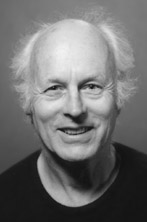
Above: English psychotherapist David Boadella (1931 – 2021)
Boadella studied education, literature and psychology.
After graduating in 1963, he worked as a teacher at a one-room school in Abbotsbury, Dorset, England.
He married the Dorset-born English author Elsa Corbluth and lived in Abbotsbury until the 1980s.
During this time, his interests and activities shifted increasingly toward psychotherapy, which he made his main profession.
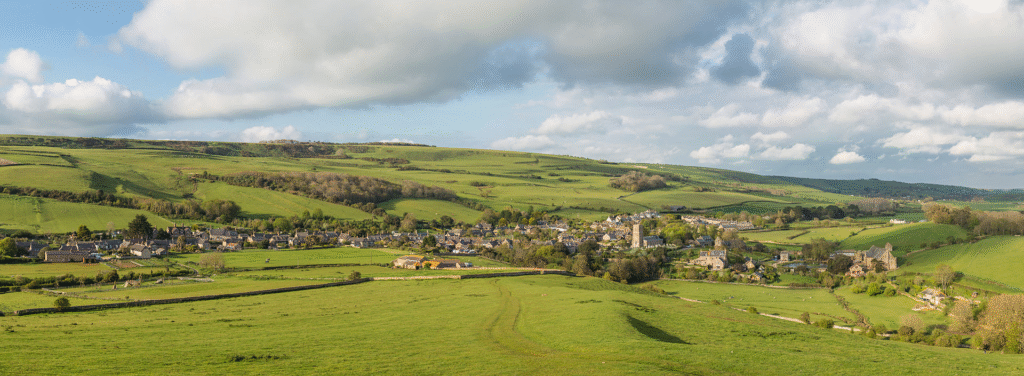
Above: Abbotsbury, Dorset, England
A decisive turning point in his life occurred in 1988, when he married Silvia Specht, had a son, and moved to Switzerland.
In the early 1950s, Boadella met the architect, sociologist and educator Paul Ritter and his wife, the biologist Jean Ritter.
Both experimented with Wilhelm Reich’s vegetotherapy and in 1954 founded the journal Orgonomic Functionalism, dedicated to the work of Reich but disliked by Reich, which was published in Nottingham using matrix printing until 1964.
Boadella had his first therapeutic experiences with the Ritters.
In their journal he published numerous articles on various topics.
Boadella’s study of DH Lawrence, The Spiral Flame, first appeared here as a series.
In it, he juxtaposed fundamental insights of the poet and Reich, whom he understood as a natural scientist, in order to achieve mutual illumination.
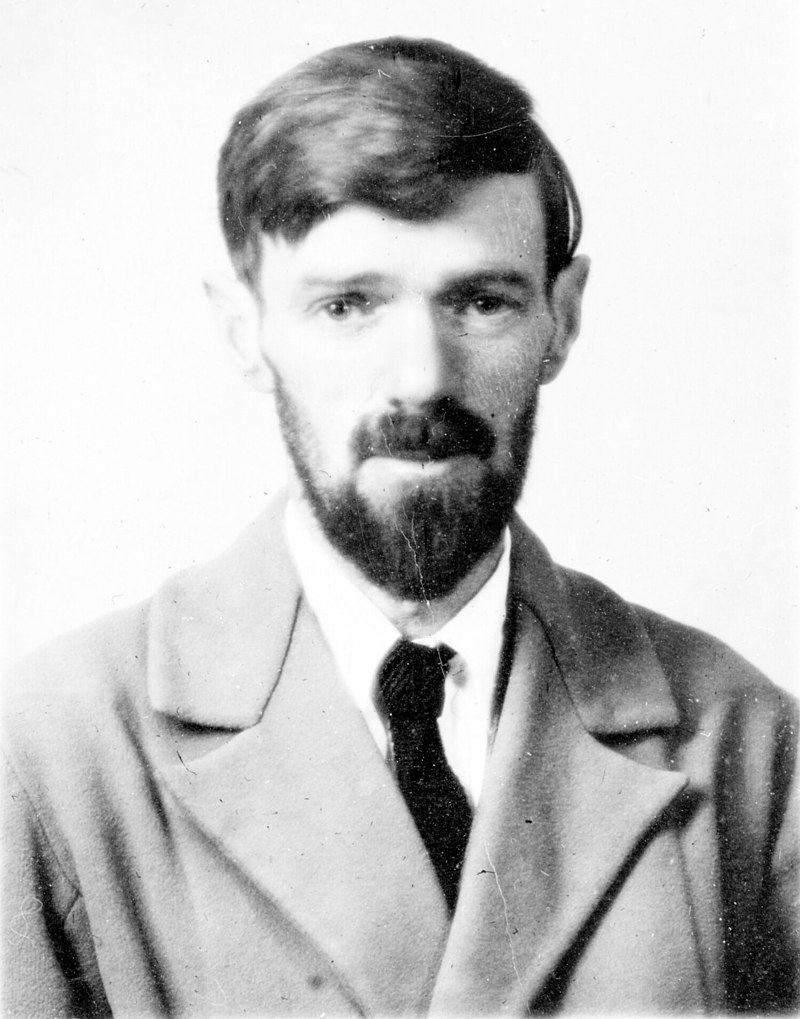
Above: English writer David Herbert Lawrence (1885 – 1930)
For over a decade, Boadella was, alongside Paul Ritter, the most important contributor to this journal, which covered the entire spectrum of Reich’s work.
In addition to literary articles, book reviews, and short poems, he also wrote reports on his own biophysical experiments on orgonotic effects.
His decades of intensive study of Reich’s life and work ultimately resulted in the monograph Wilhelm Reich — the Evolution of His Work, which was published in 1973 and translated into several languages (published in German in 1981).
It remains one of the standard works on Reich.
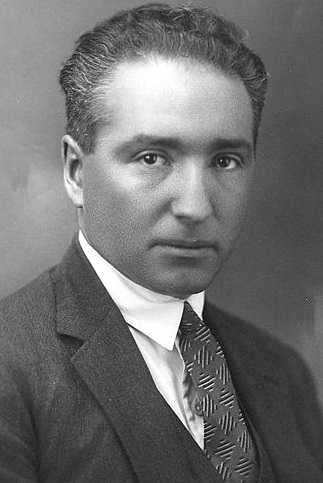
Above: Austrian psychiatrist Wilhelm Reich (1897 – 1957)
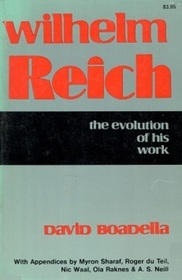
After the Ritters moved to Perth, Australia, in 1965, Boadella sought to perfect his skills as a body psychotherapist, including through training in character-analytic vegetotherapy with the Norwegian student of Reich, Ola Raknes, and several other body psychotherapists.
In 1988, he established his own form of therapy, which he called Biosynthesis, with his Swiss office.
Boadella founded the magazine Energy & Character in 1970, which has also been published in the German-language version Energie & Charakter since 1990 .
In 1995 he received an honorary doctorate from the International Open University for Complementary Medicine (Colombo, Sri Lanka) for his services in the field of alternative psychotherapies.
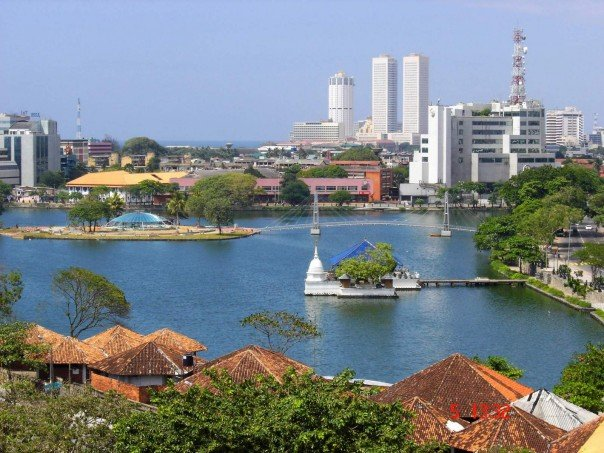
Above: Columbo, Sri Lanka
From 1985, when he moved to Switzerland, he was, together with Dr. Silvia Specht Boadella, co-director of the Institute of Biosynthesis IIBS in Heiden.
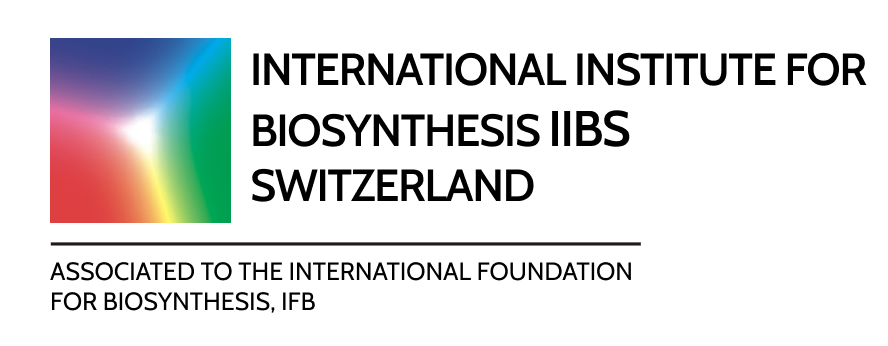
Since then, they conducted training courses for students from over 20 countries.
In 1989, he was elected the first president of the European Association for Body Psychotherapy (EABP).
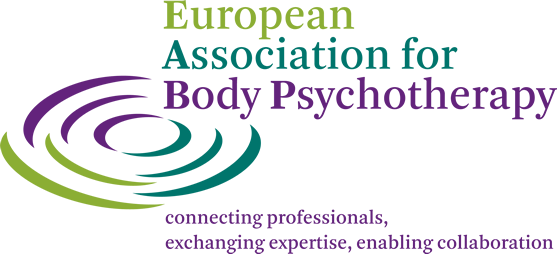
In 1997, he became Chairman of the Scientific Validation Committee of the European Association for Psychotherapy (EAP), which establishes the standards for all methods recognized in Europe.

How has this tiny alpine town of a mere 4,161 (at last count) become so significant?
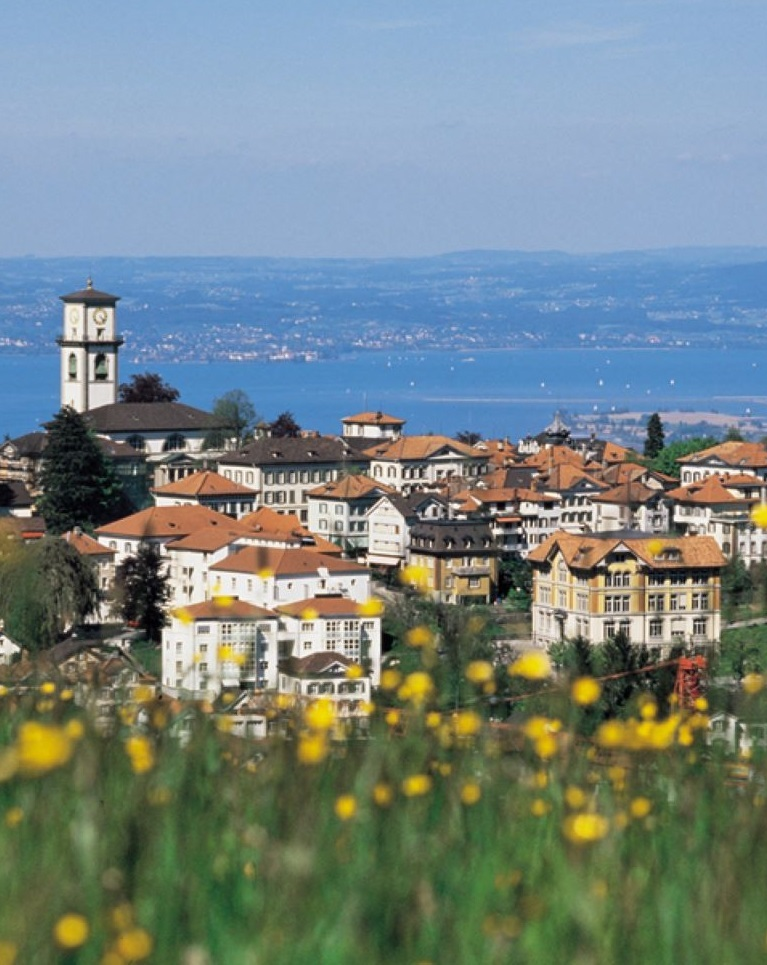
Above: Heiden
I am not here for the former residents (David Boadella, Dr. Ruth, Heinrich von Herzogenberg, Carl Böckli, Rüdi Rohnen, Helen Meier) nor for those who were born here (Hugo Thiemann, Jakob Kellenberg, Emil Schmid).
Despite their contributions.
Boadella who suggested that art and science are not necessarily separate from each other.
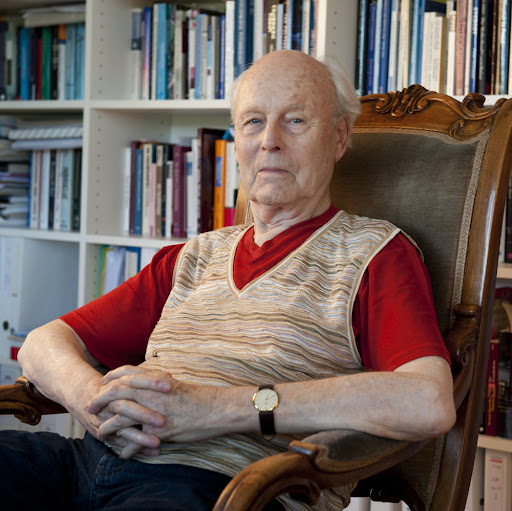
Above: David Boadella
Dr. Ruth who whispered to the world that sexuality is natural and necessary and not to be shamed and shunned but is an expression of intimate connection between two consenting adults.
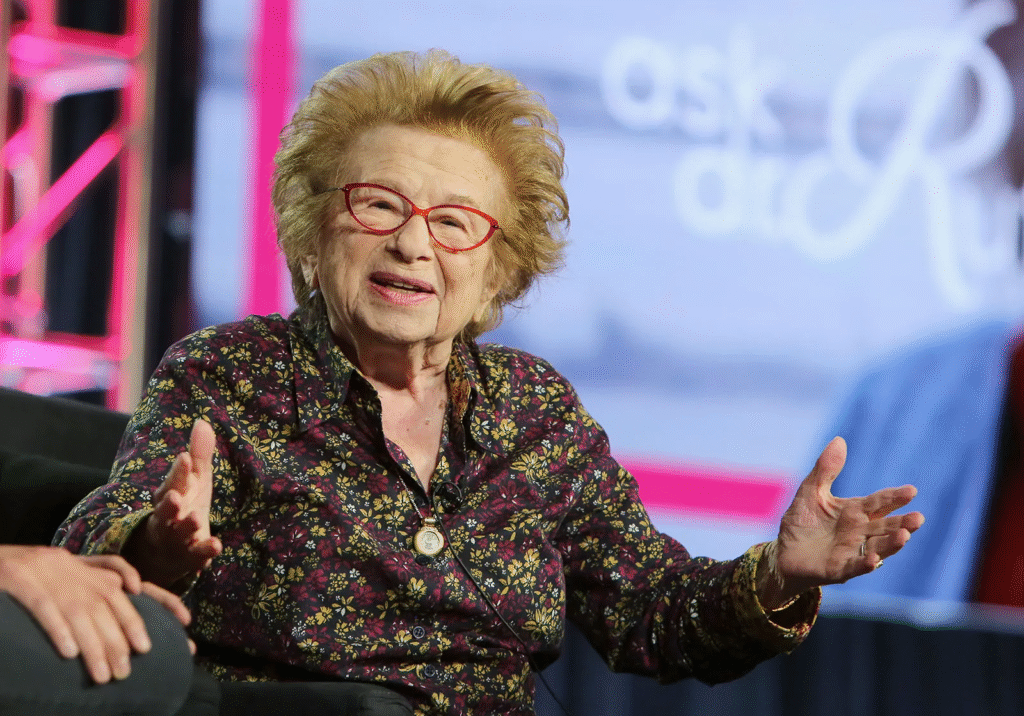
Above: Dr. Ruth
Herzogenberg whose music moved men to find meaning in melody.

Above: Heinrich von Herzogenberg
Böckli who commented on the passage of time and the folly of his fellow man with wit and wisdom.

Above: Carl Böckli
Meier who reached into our souls and showed our common humanity with failed lives, unrequited love and the experience of growing old.
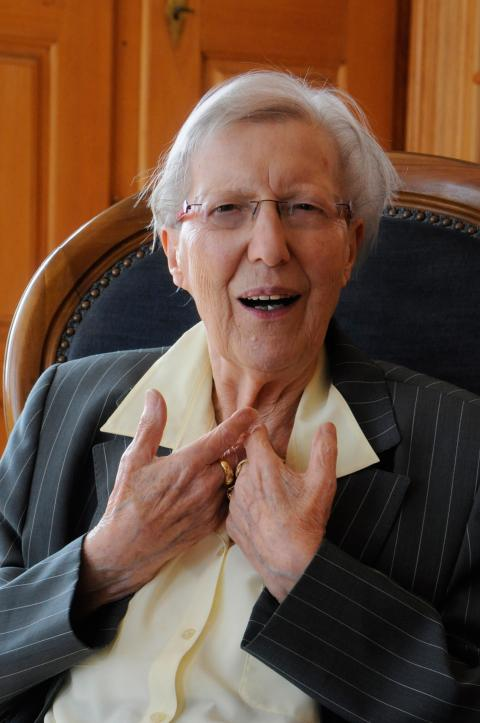
Above: Helen Meier
Thiemann who, as an engineer, gave the world television images, bottled water and Nespresso, while as a thought leader, through the Club of Rome, created global discourse about sustainable development and the protection of ecosystems.

Above: Hugo Thiemann
Kellenberg who remains the consummate diplomat worthy to represent Switzerland and its place in the world.
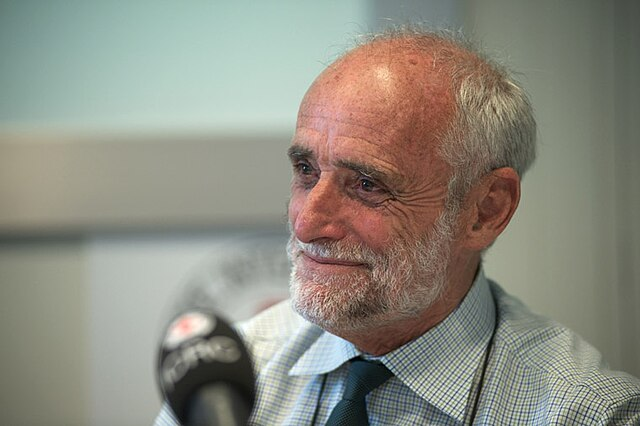
Above: Jakob Kellenberger
Instead, I am here for two people:
Myself and Henri Dunant.
Why is this man, whose life shook the world, remembered in this little town and not Geneva?
Perhaps greatness often dies in obscurity, and yet…..
The echo survives.
(To be continued)
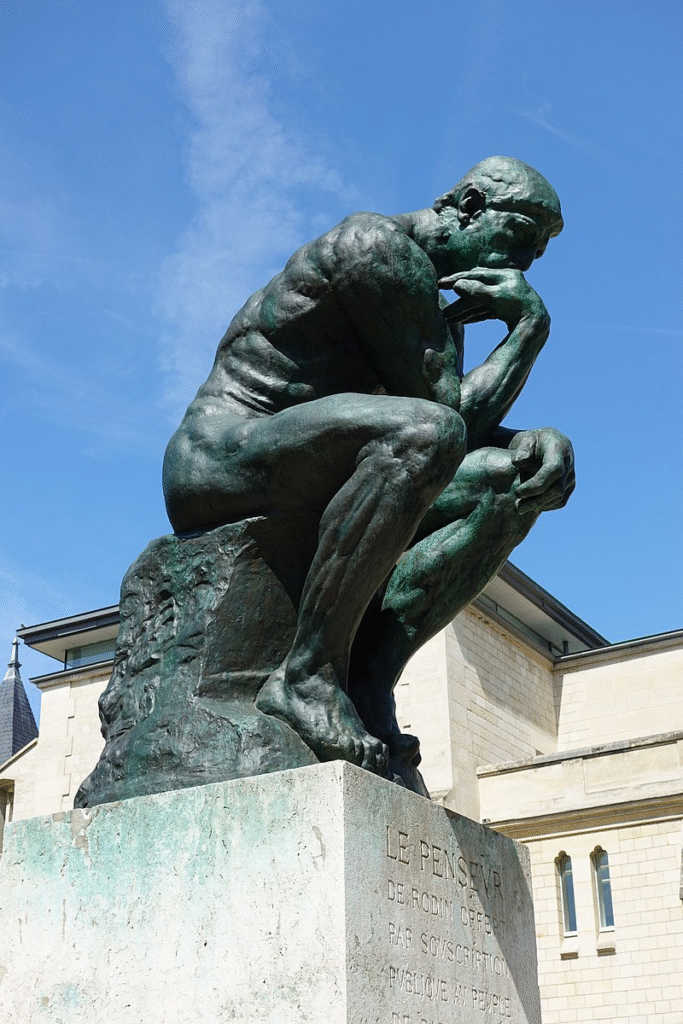
Above: The Thinker, August Rodin (1904)